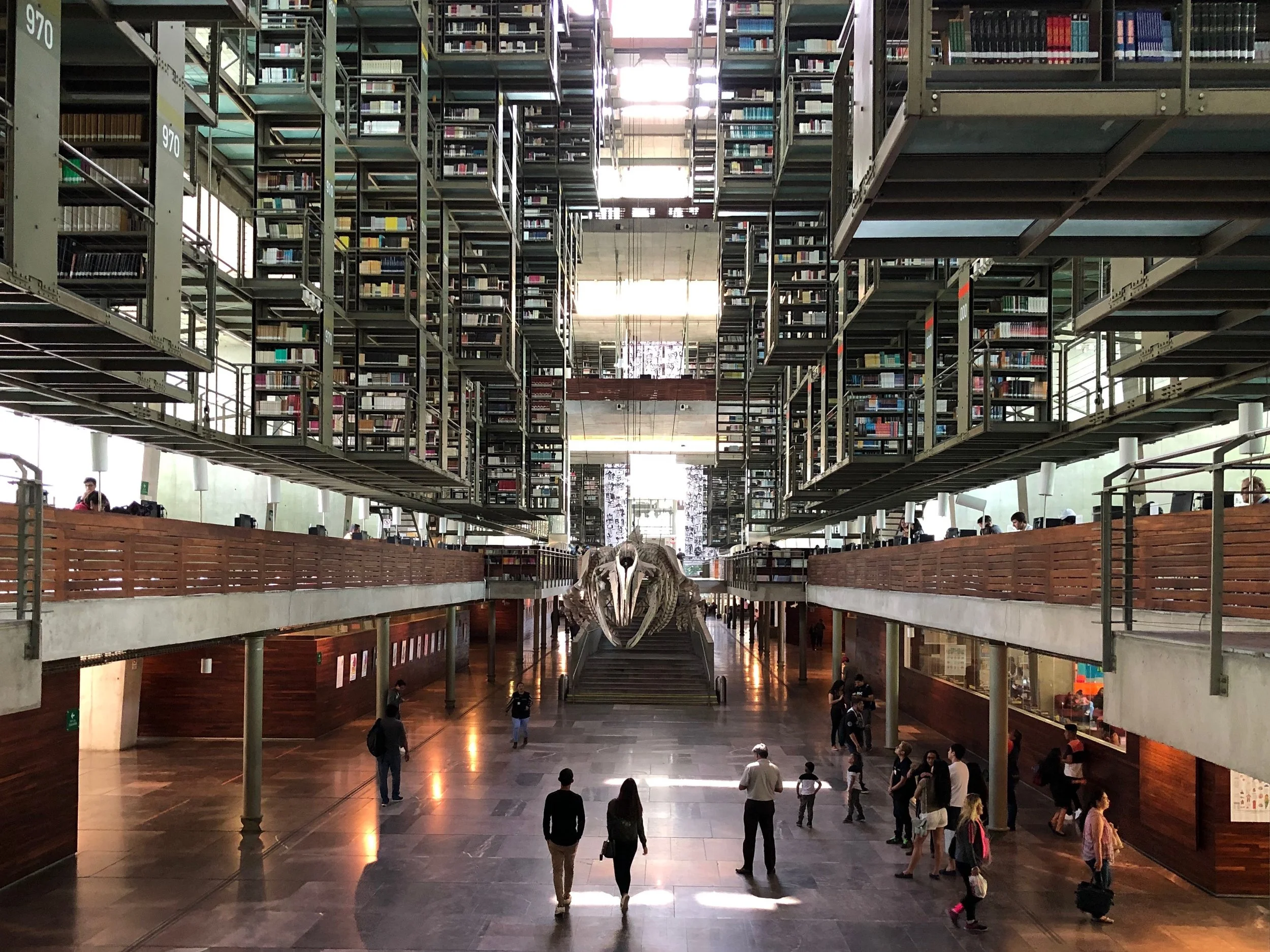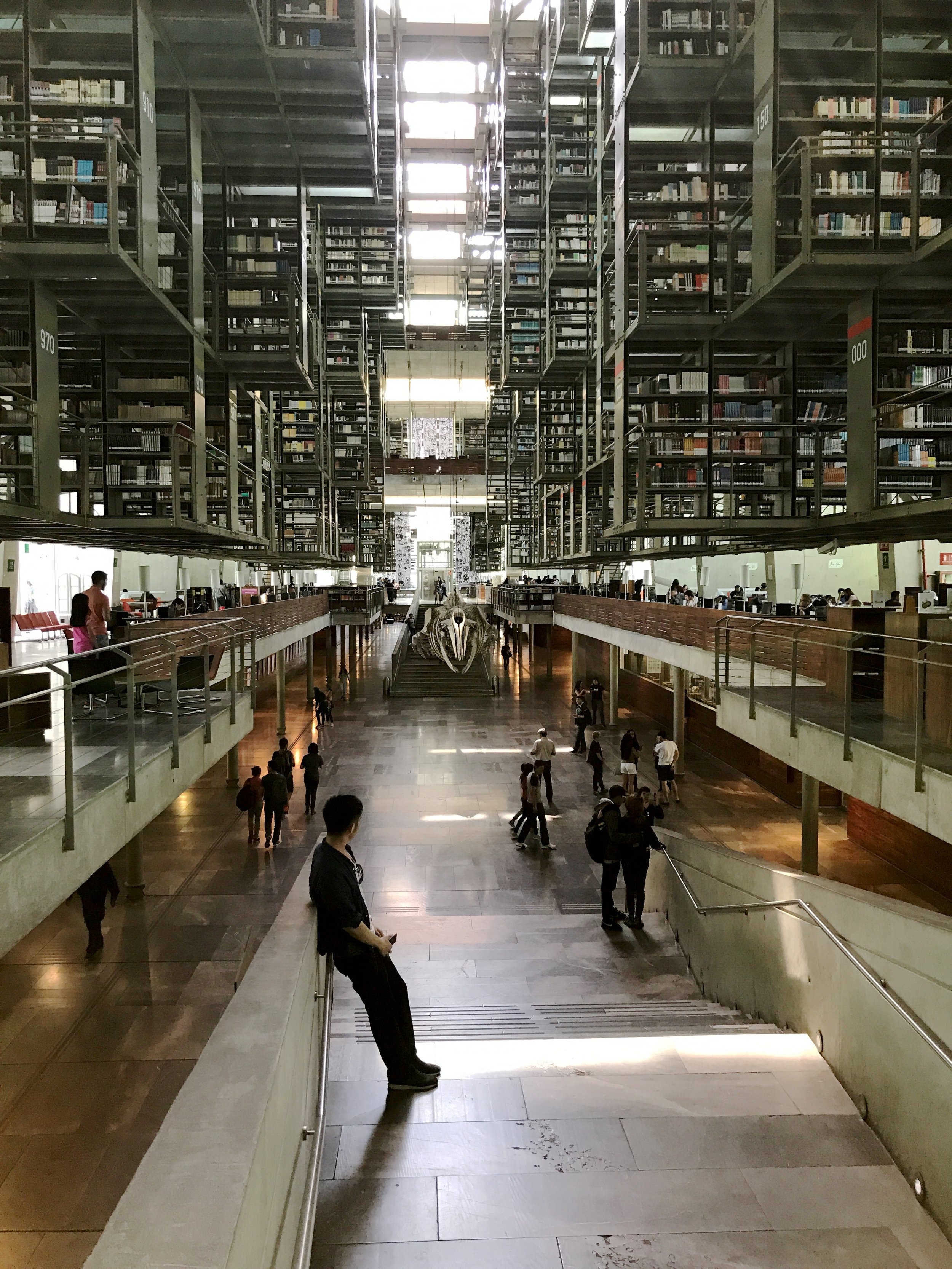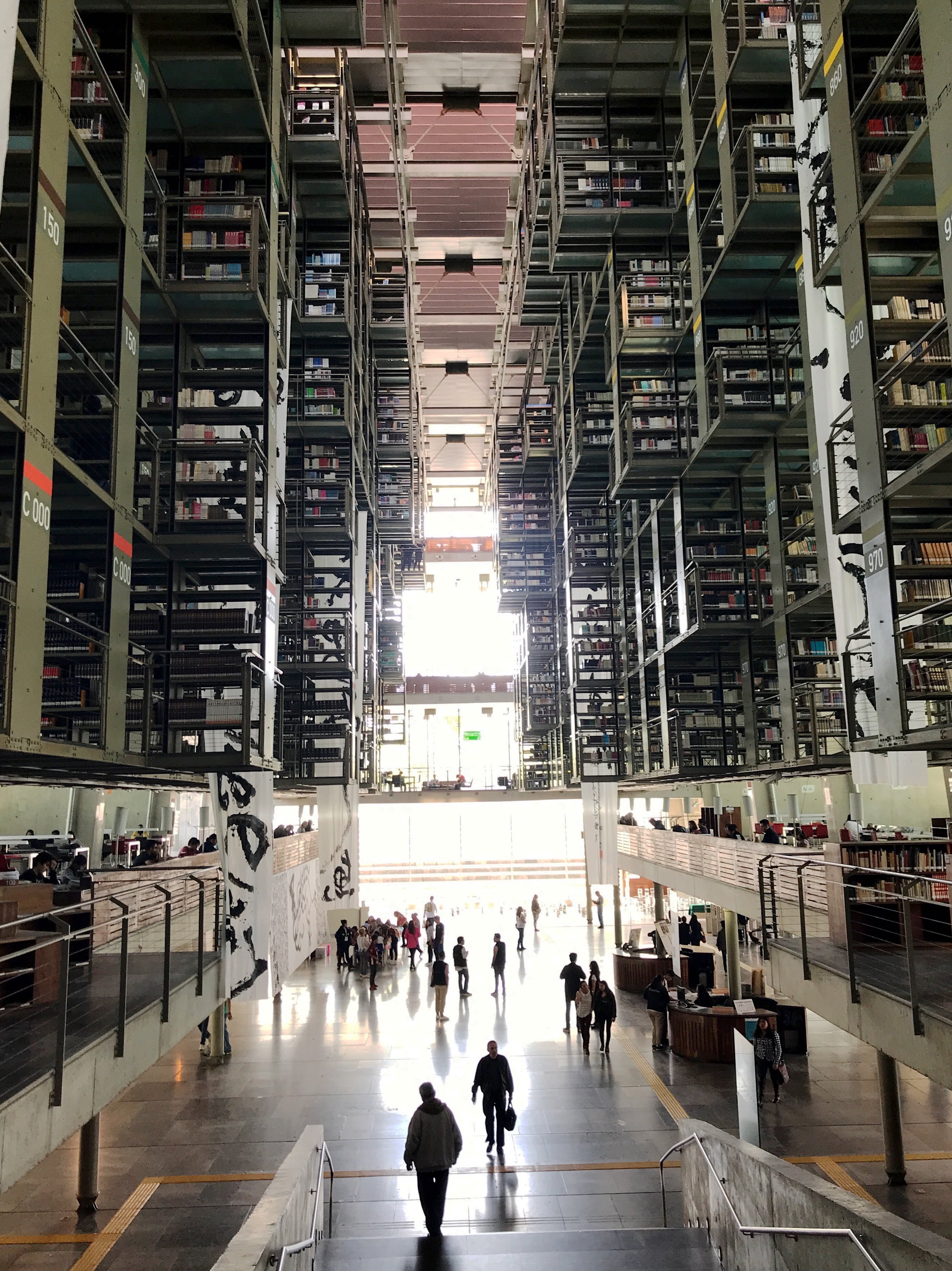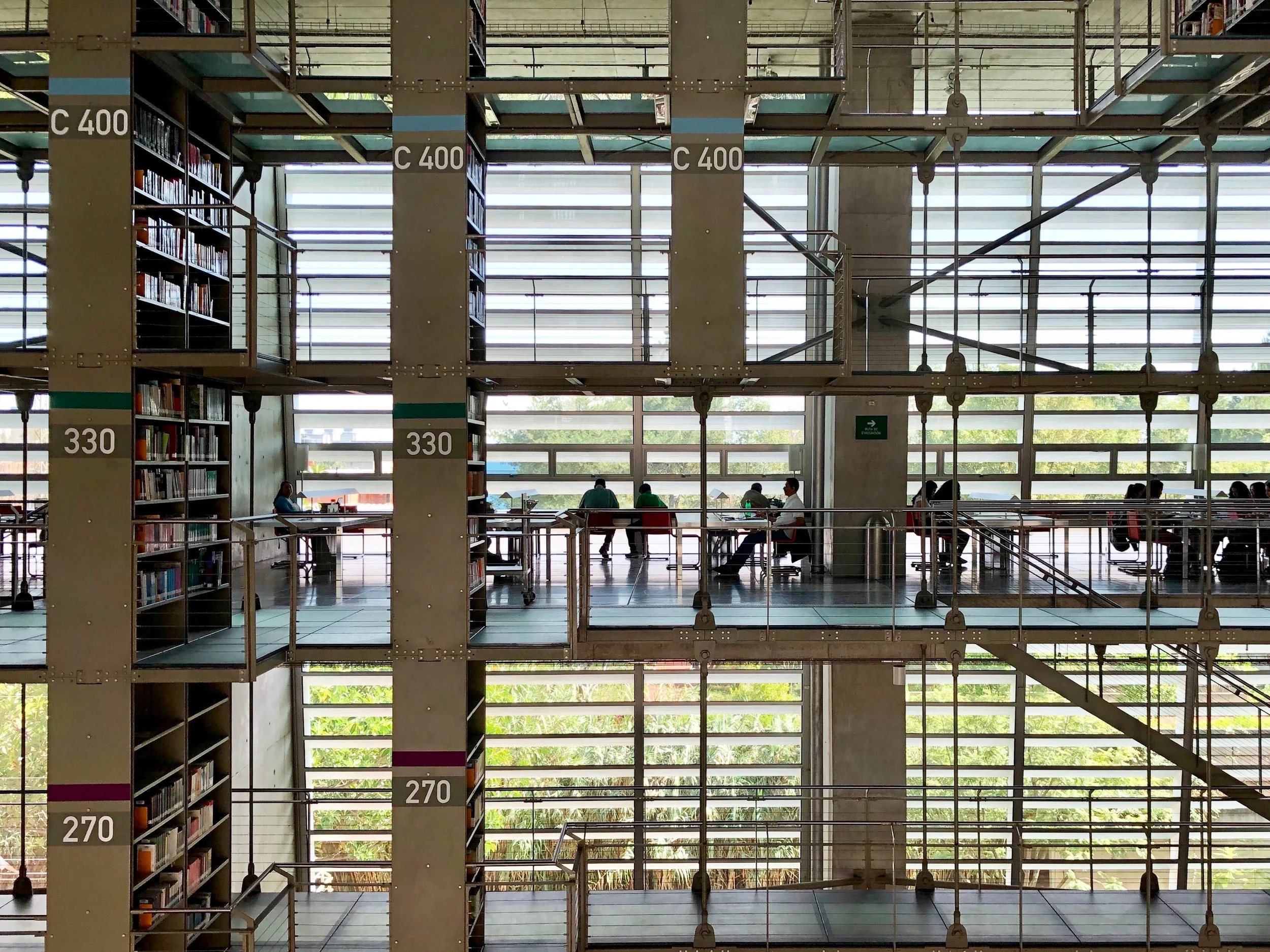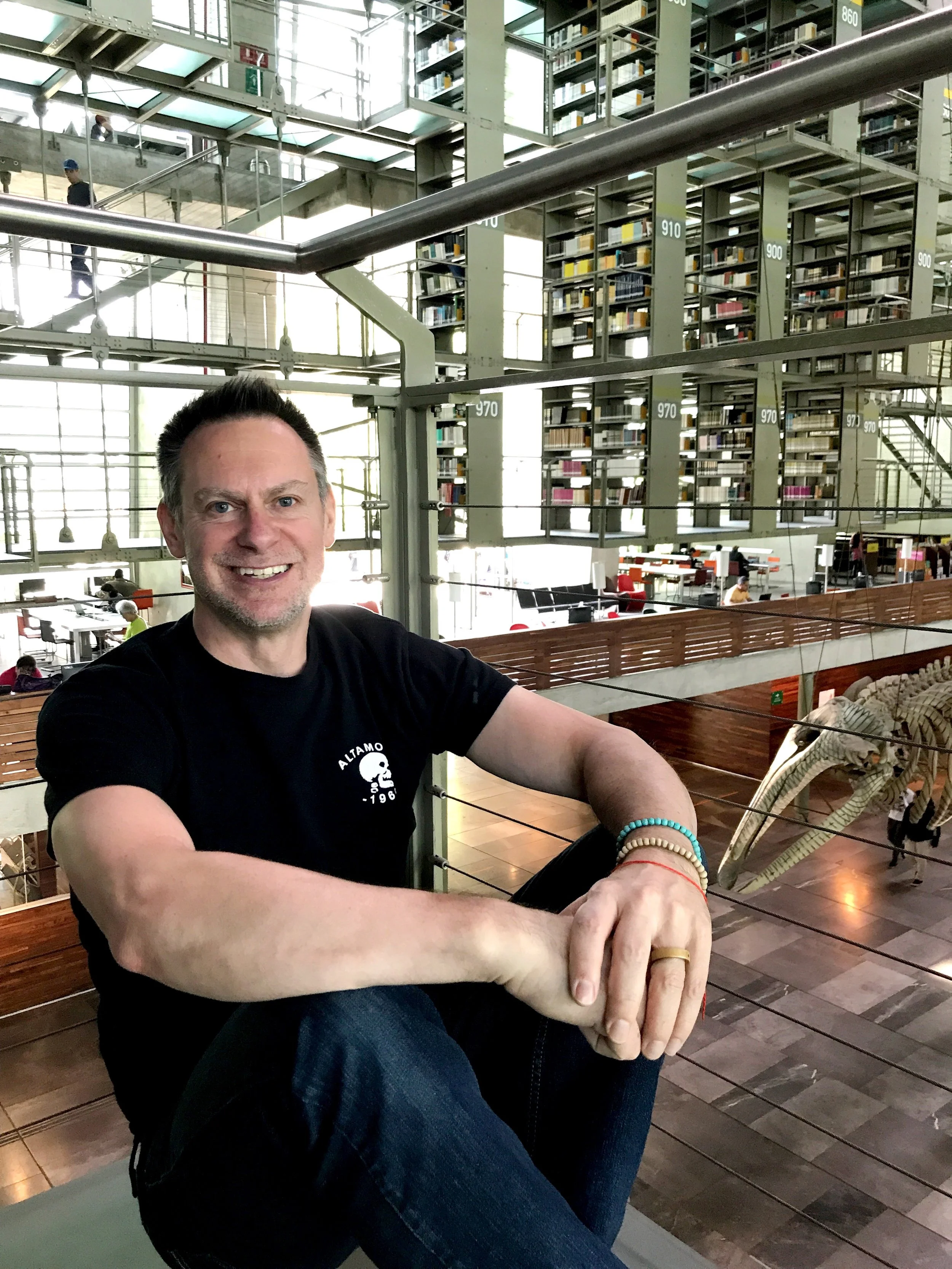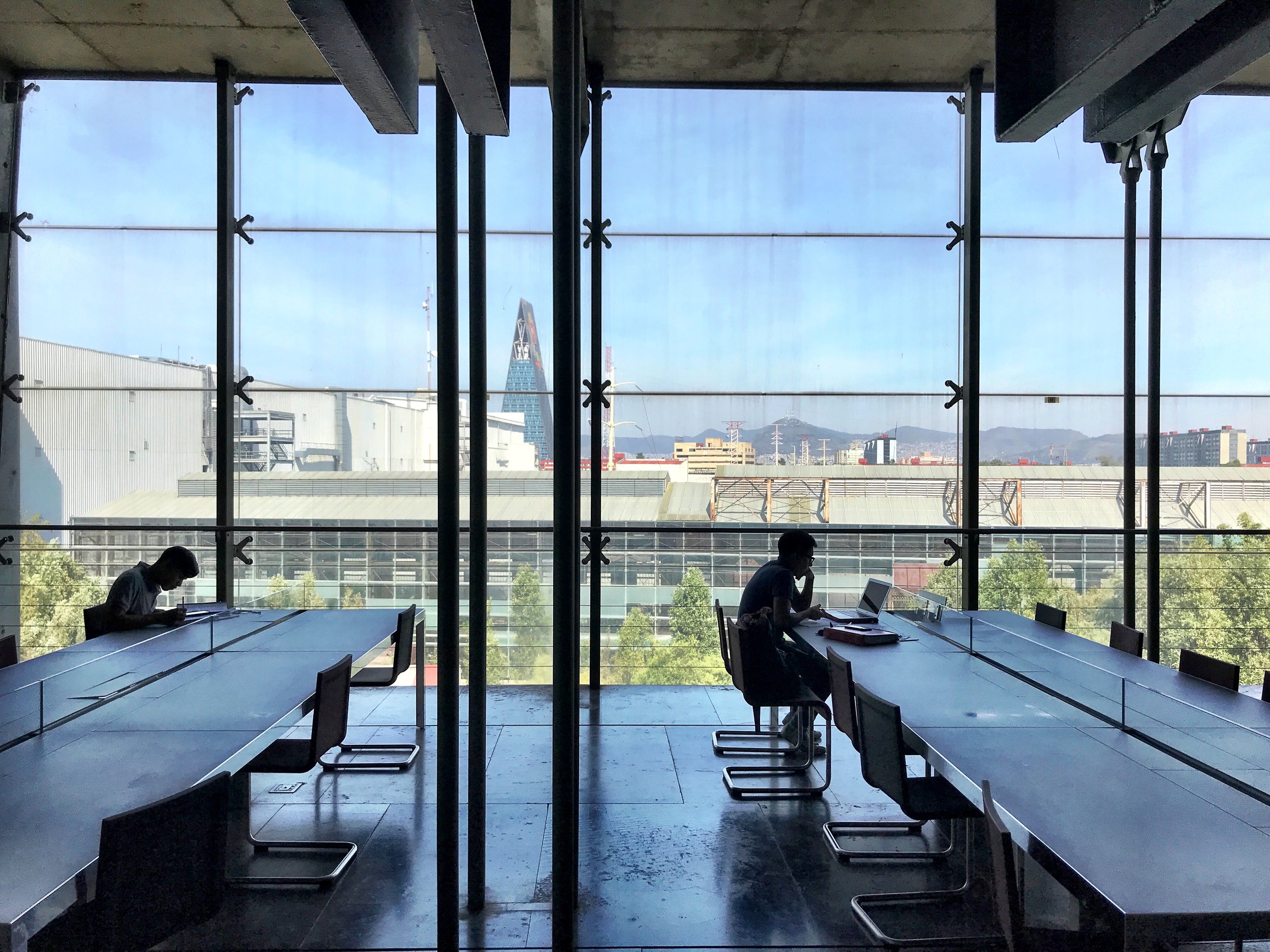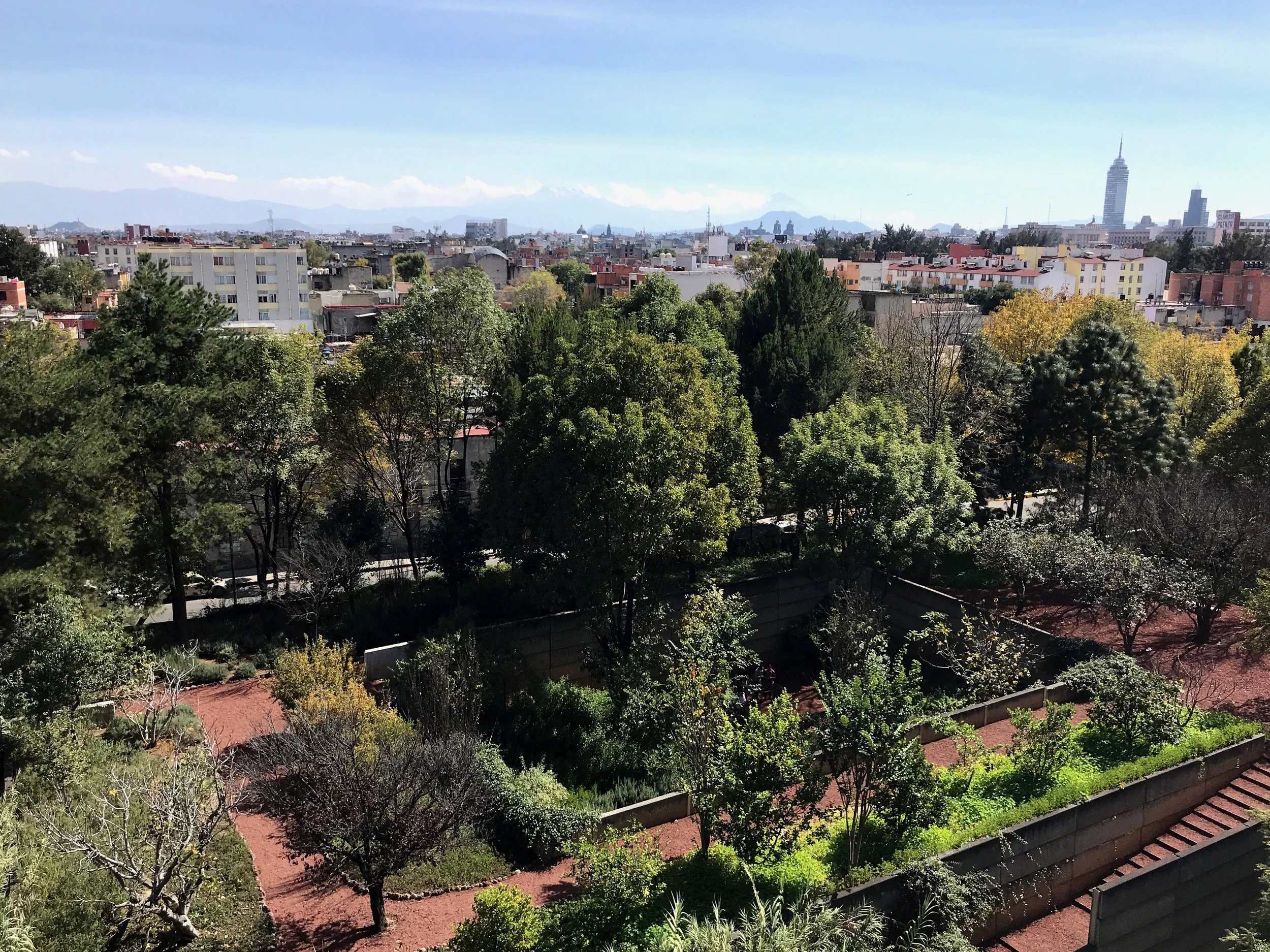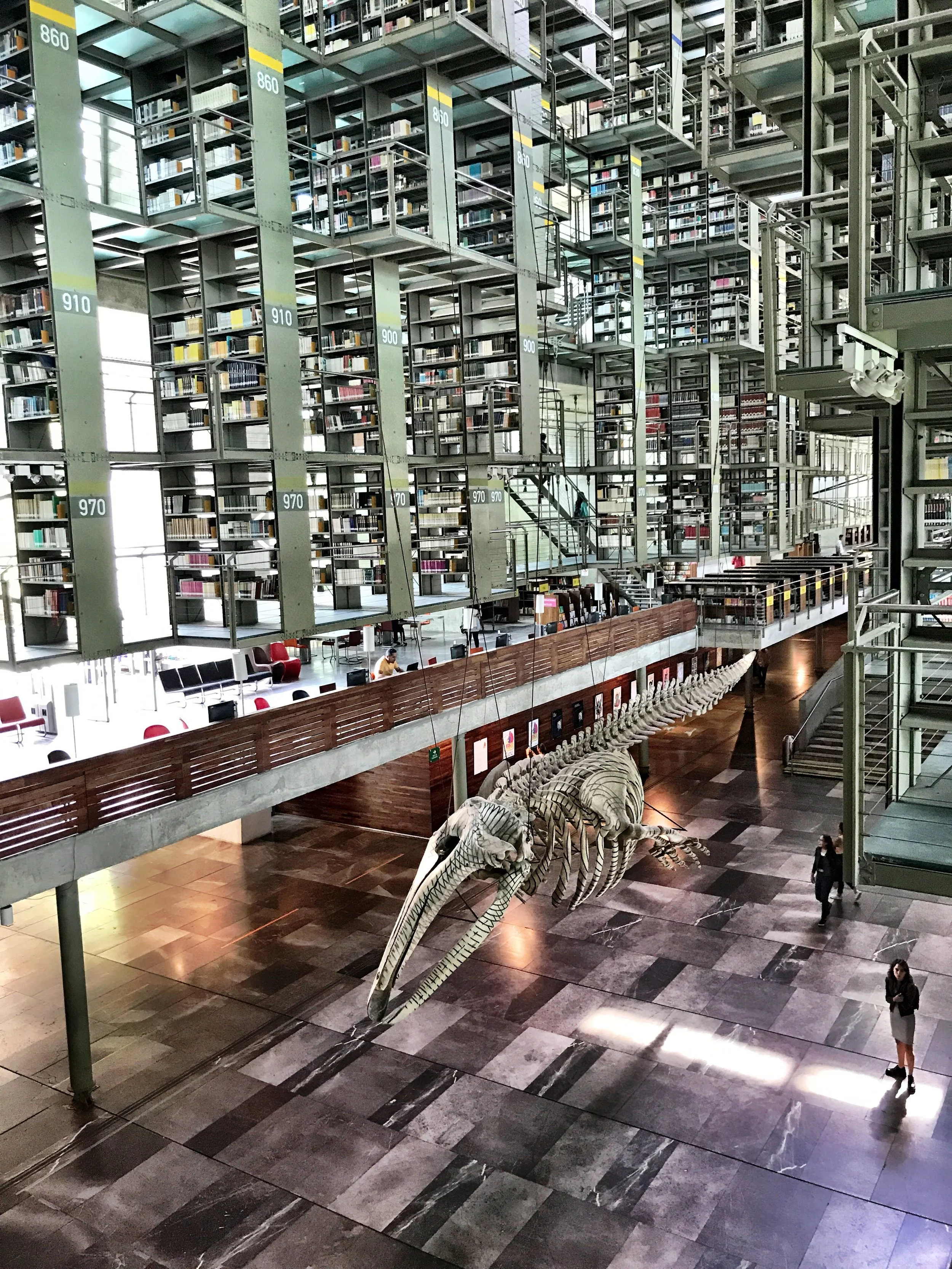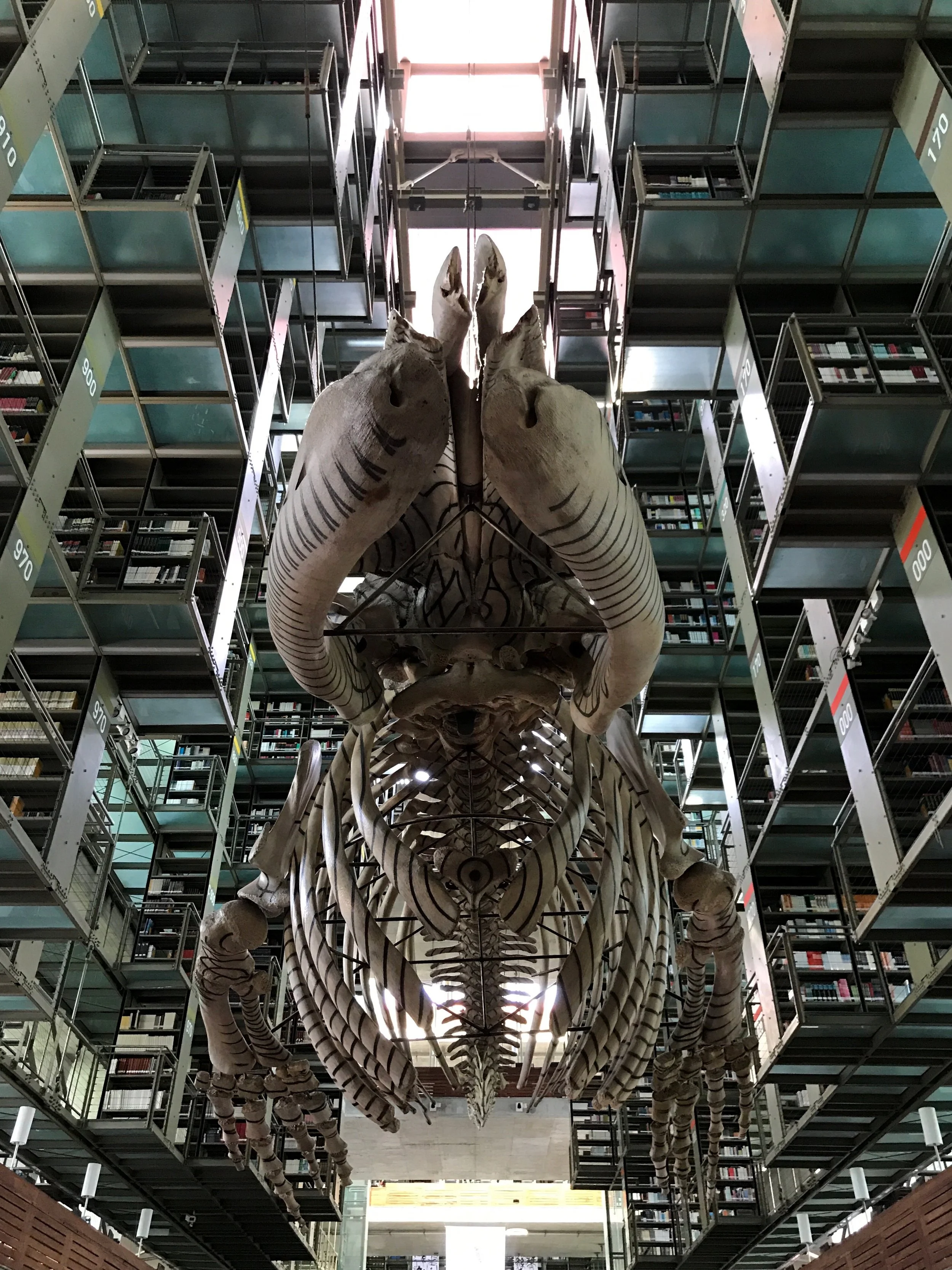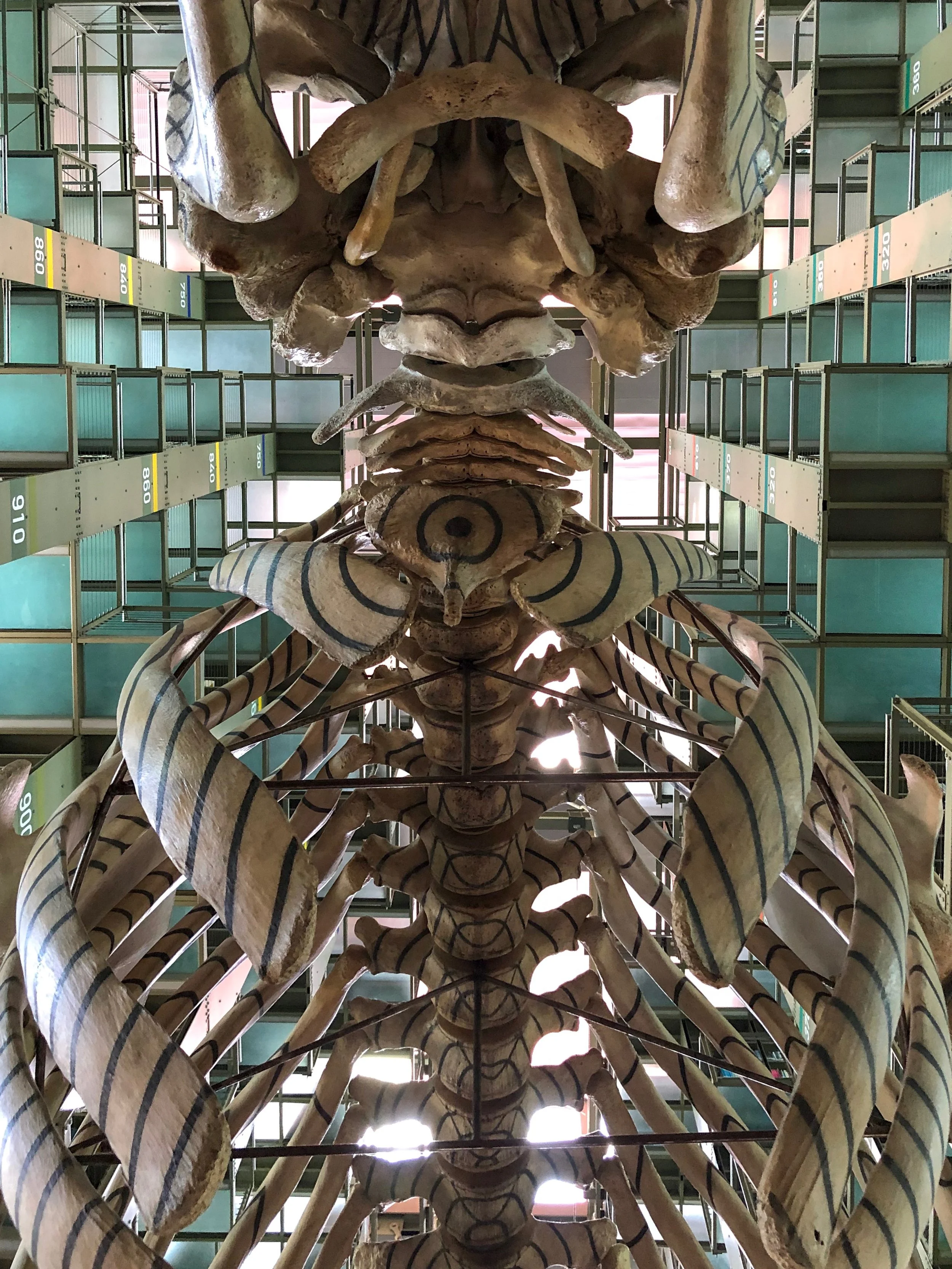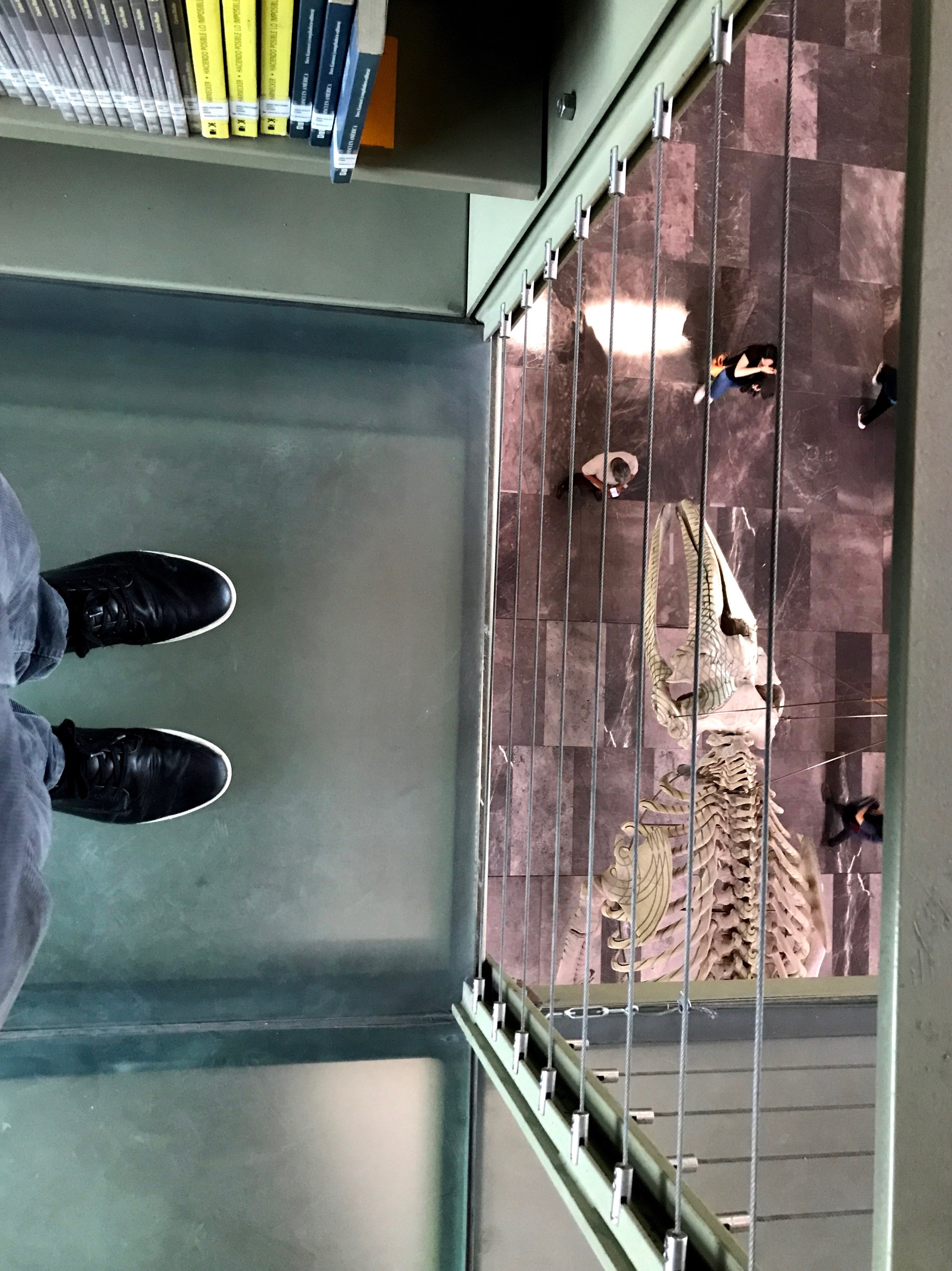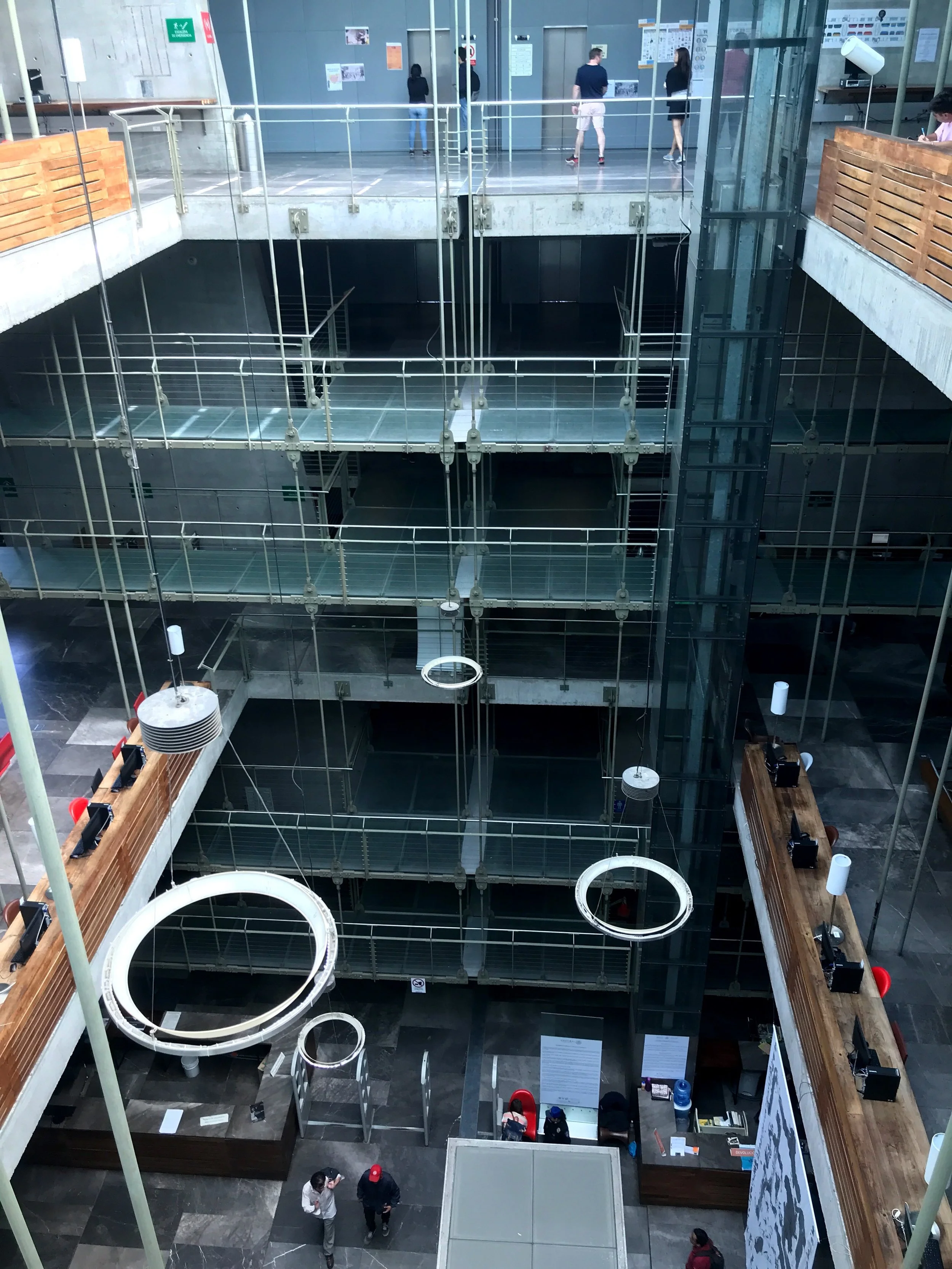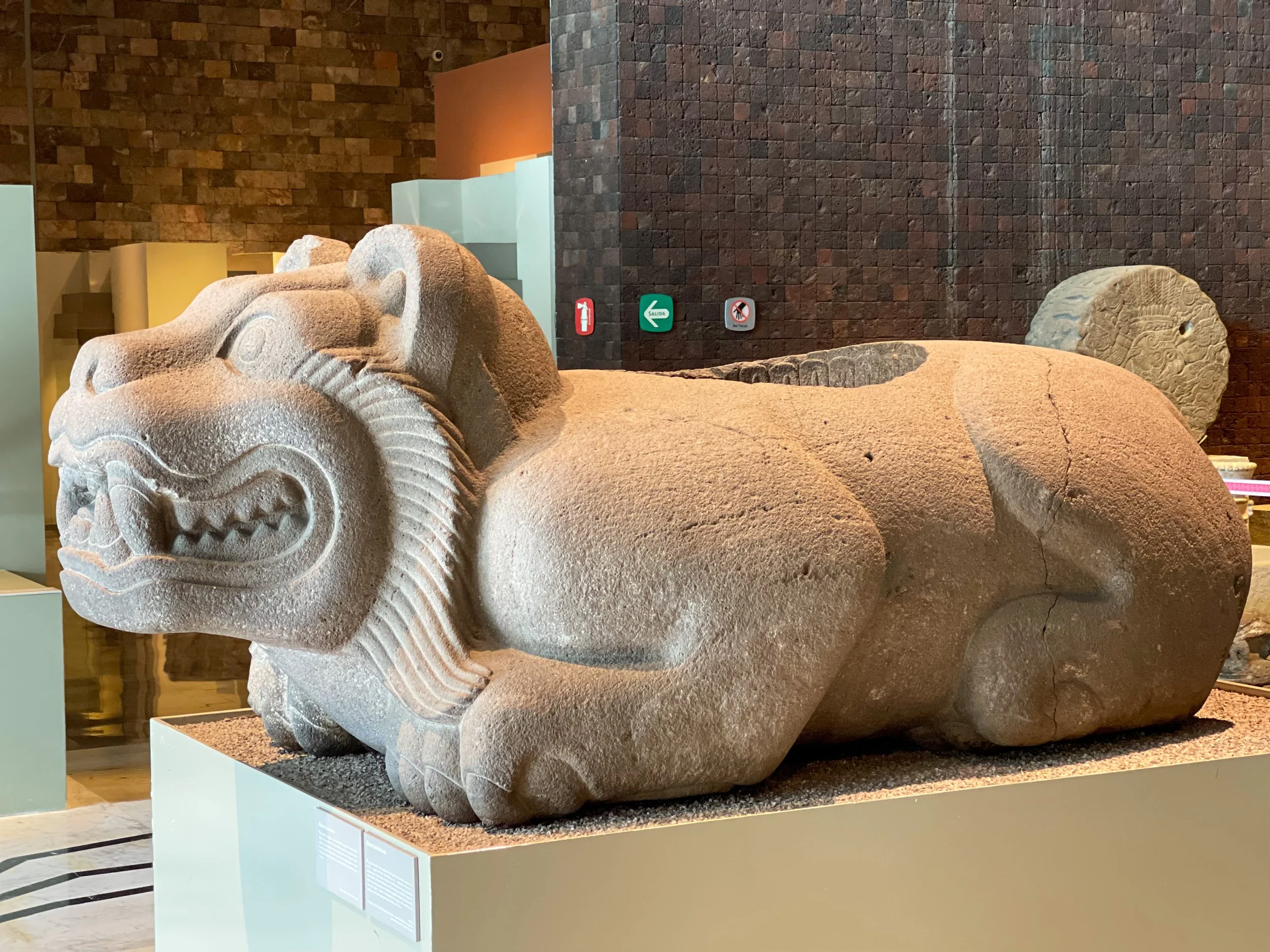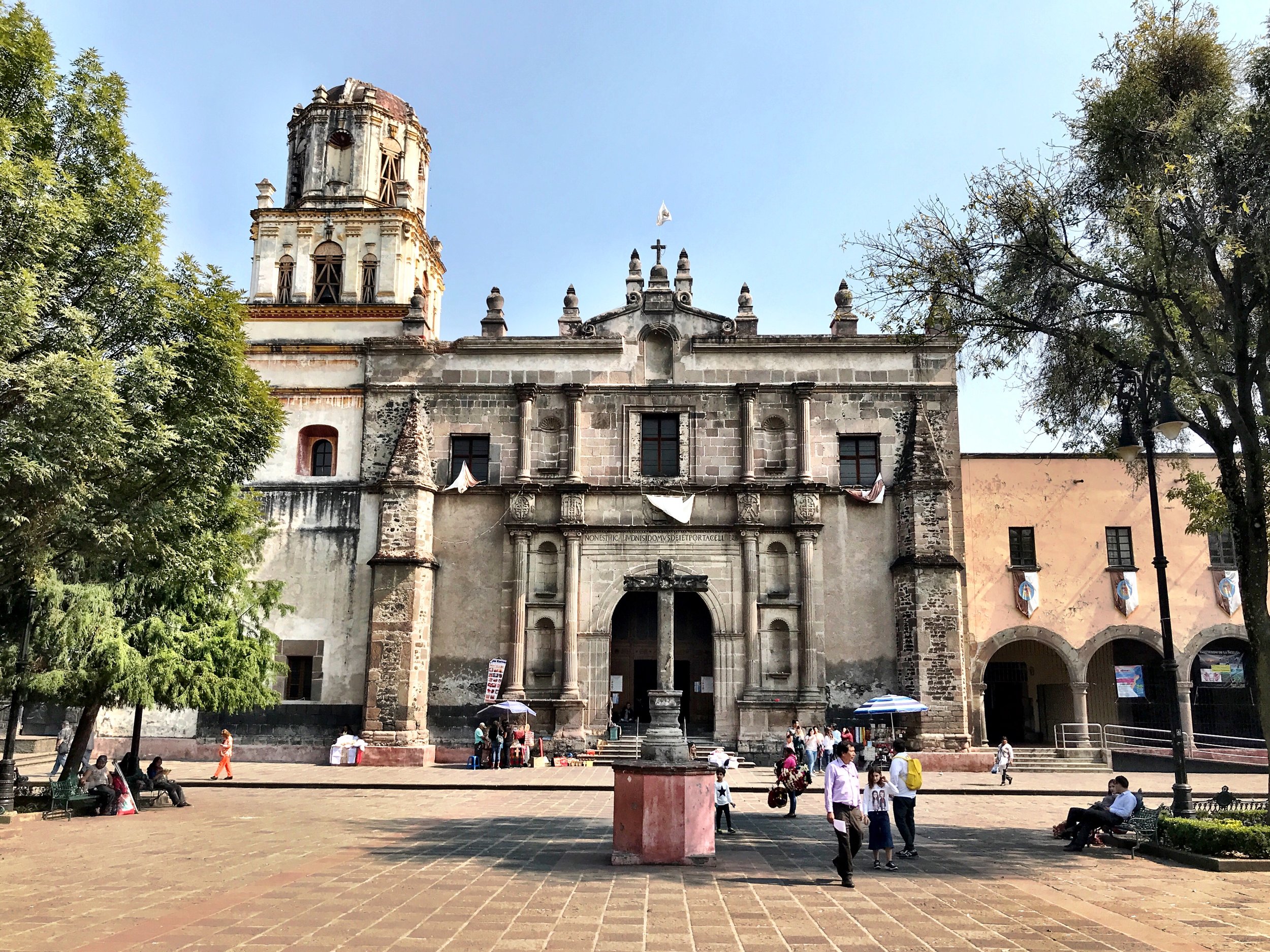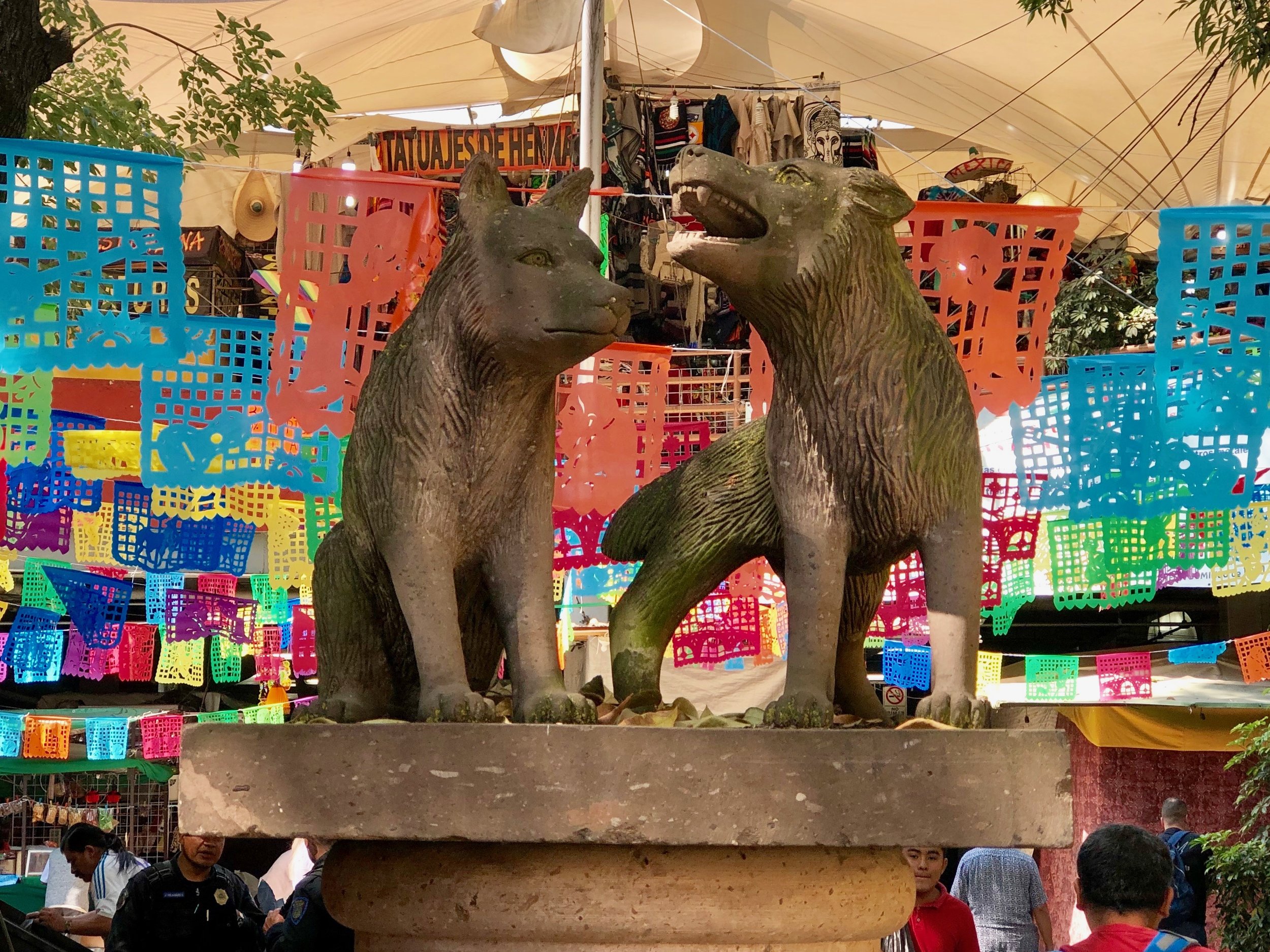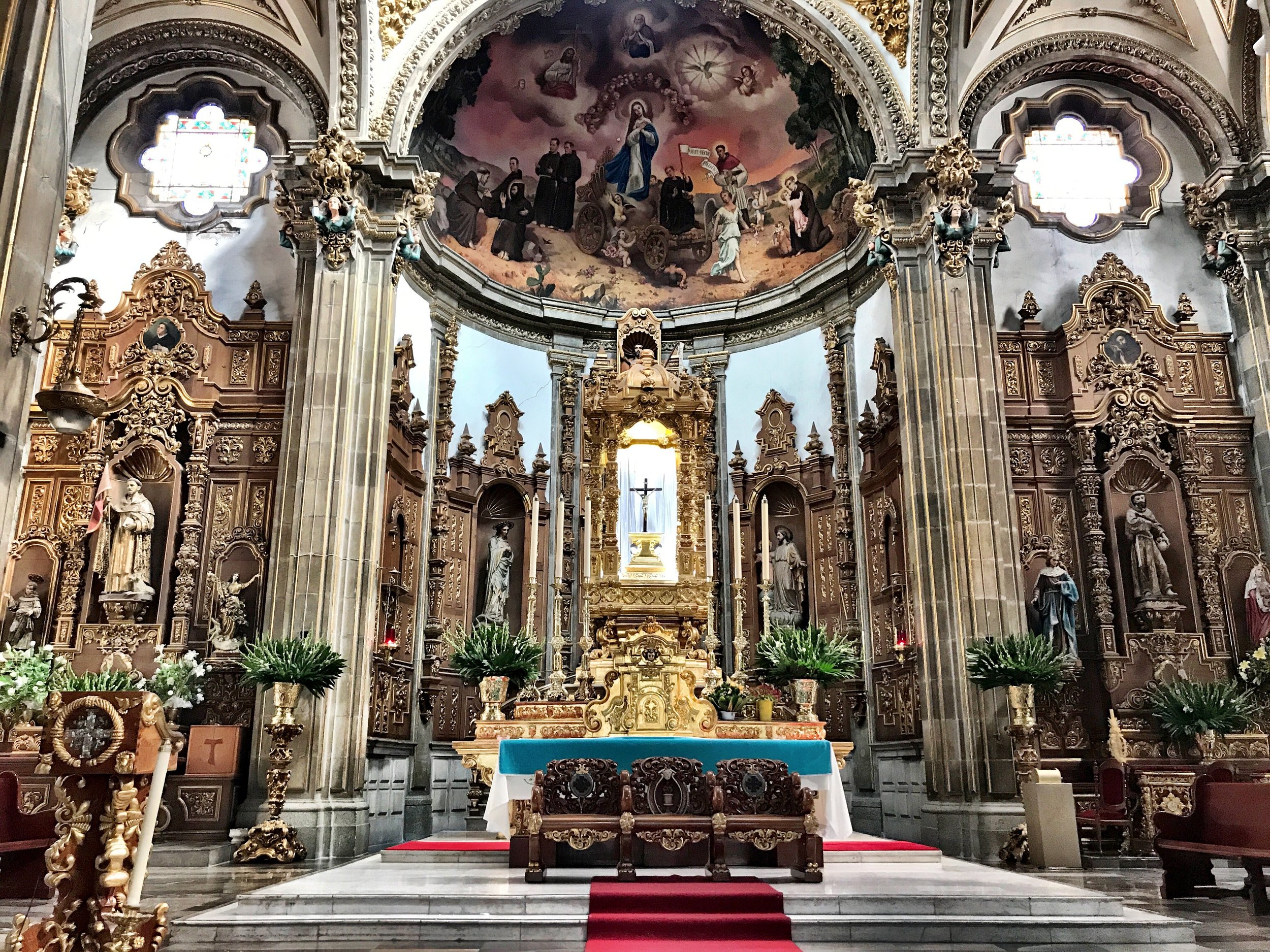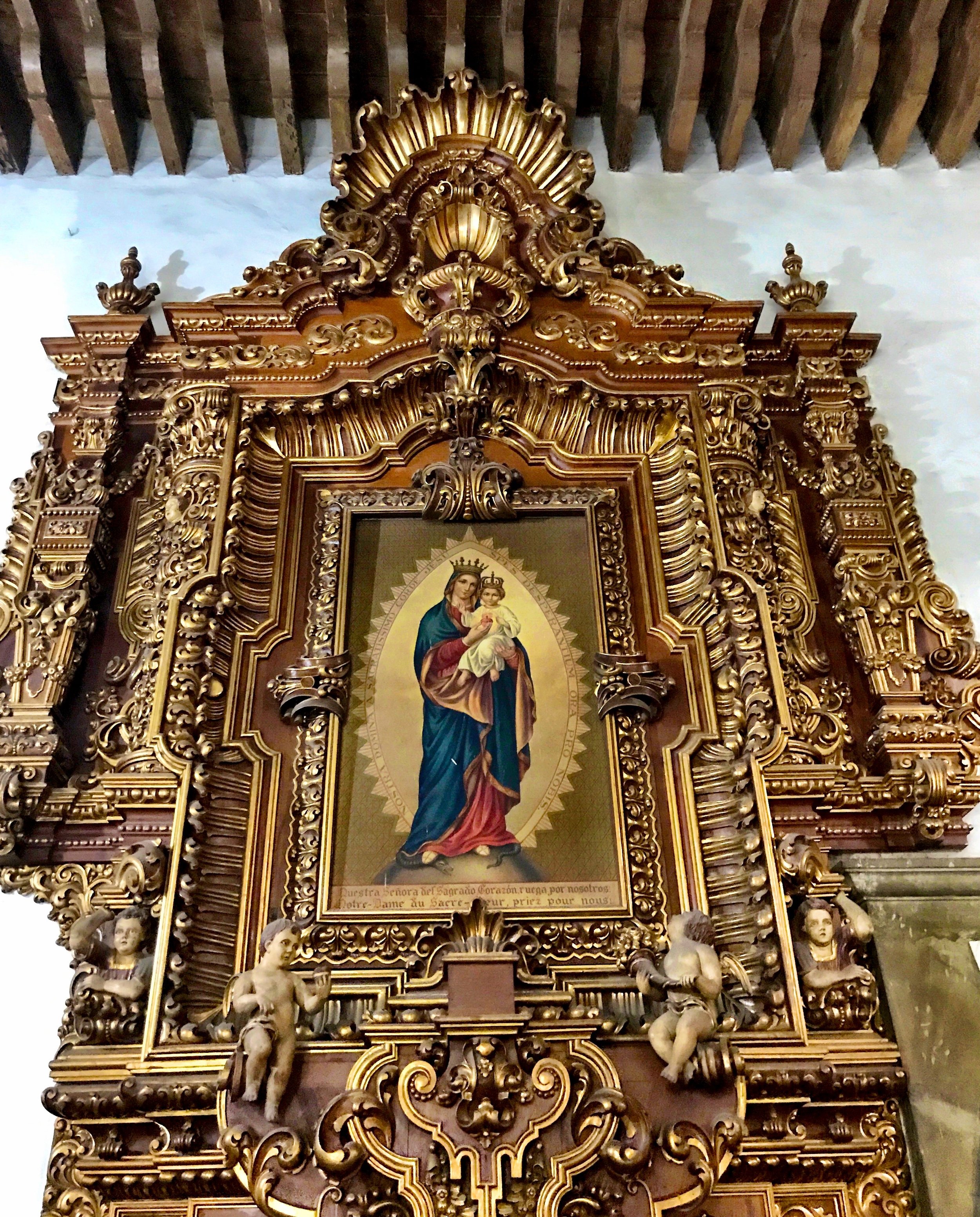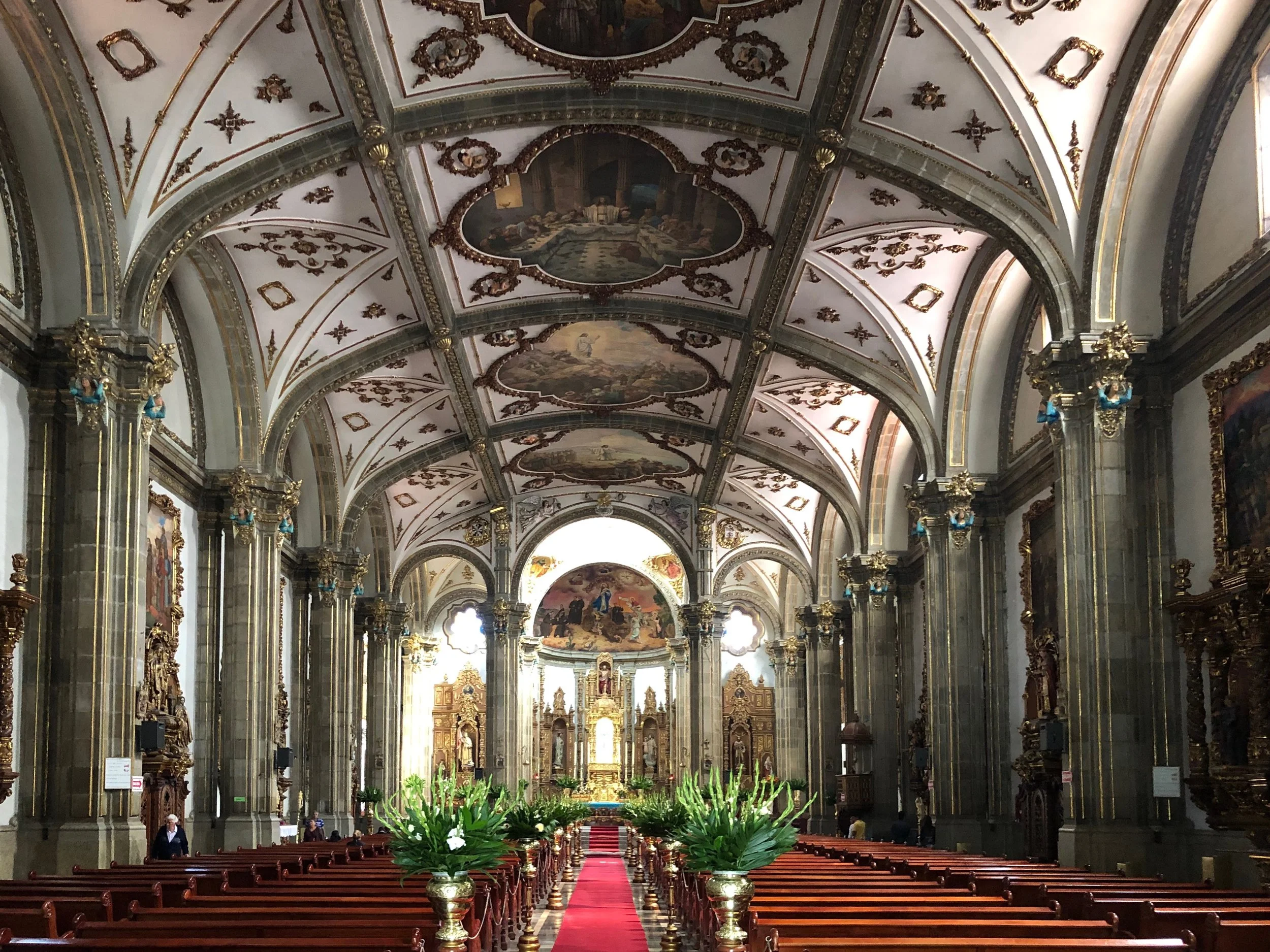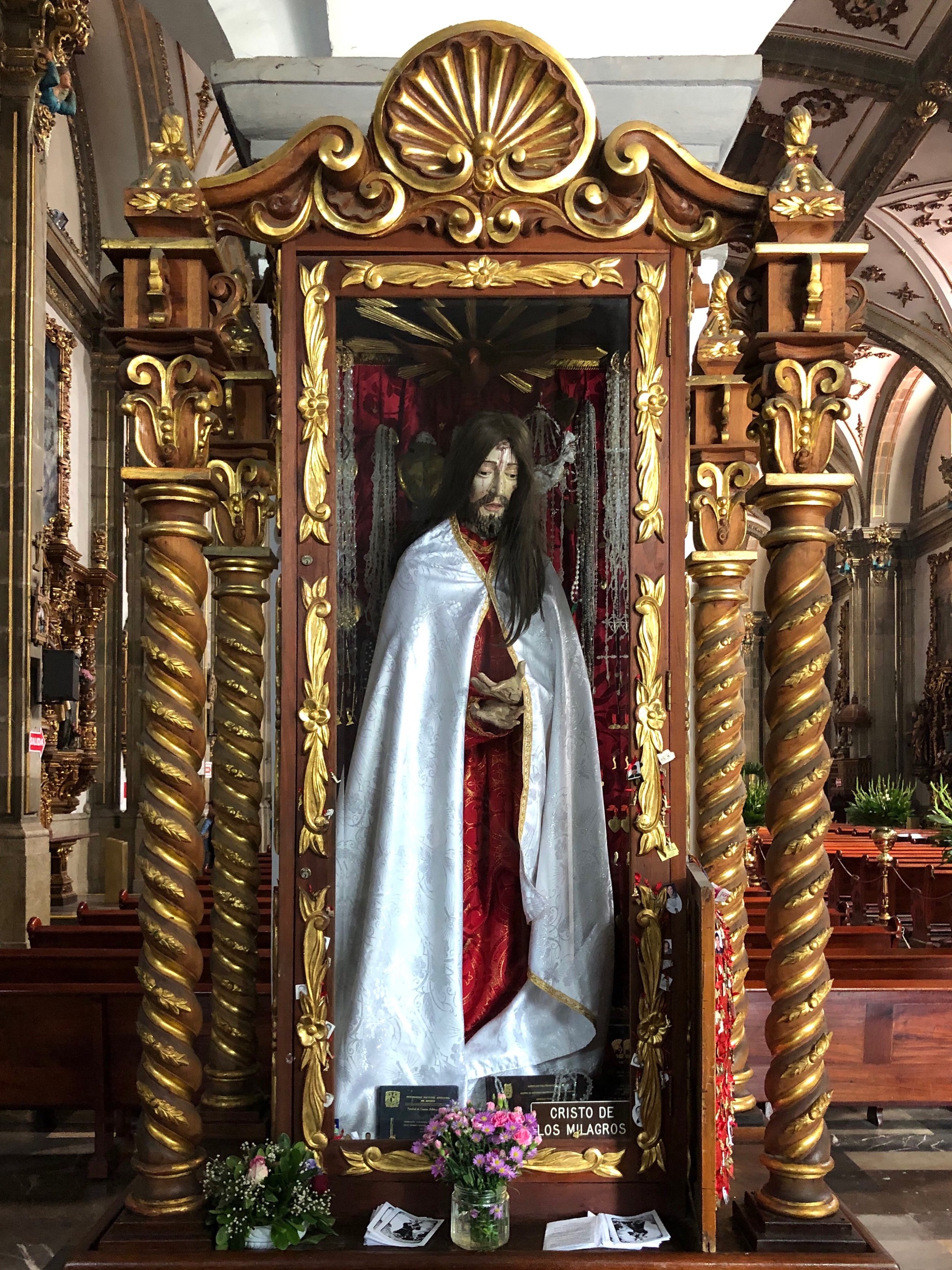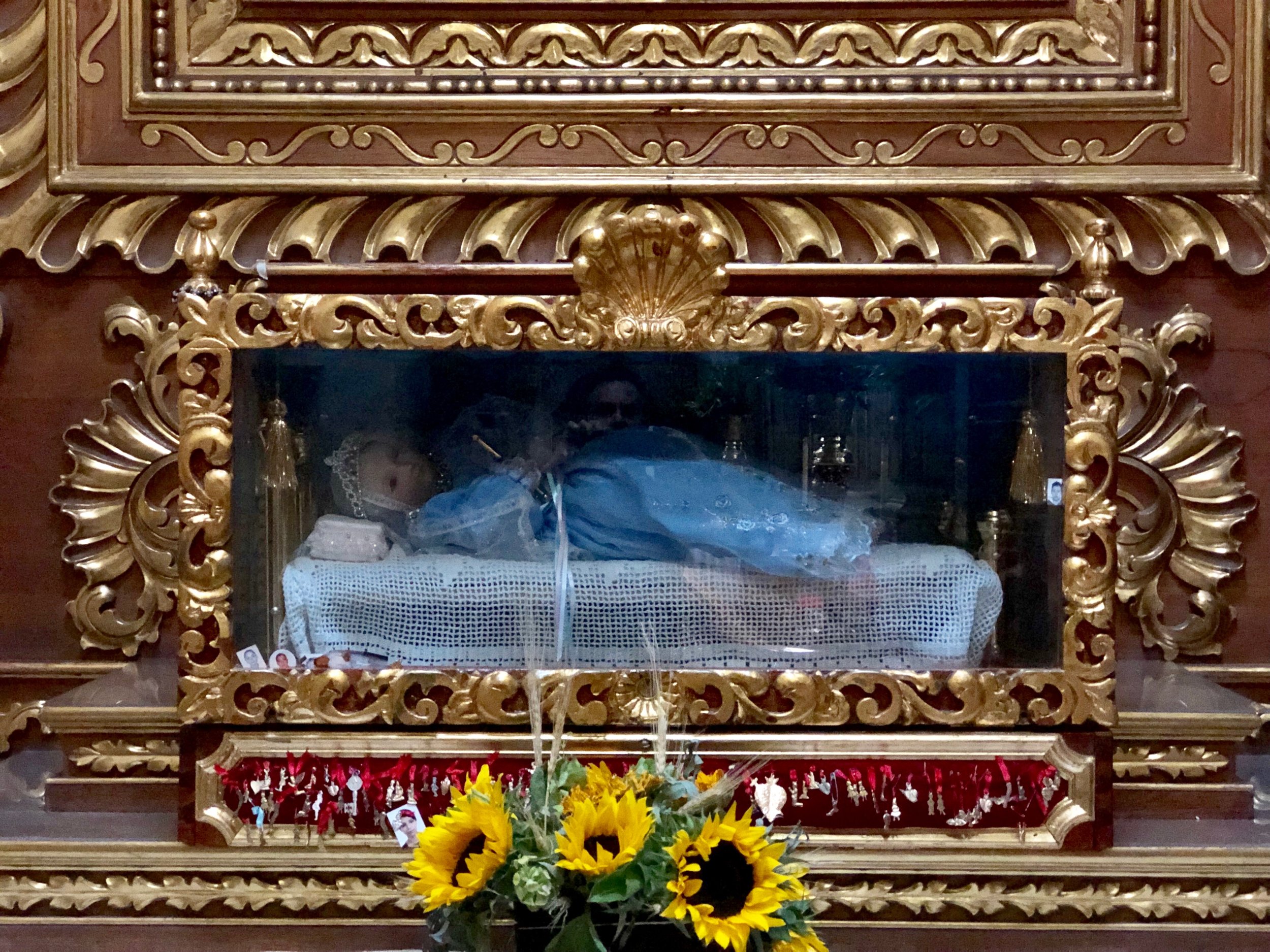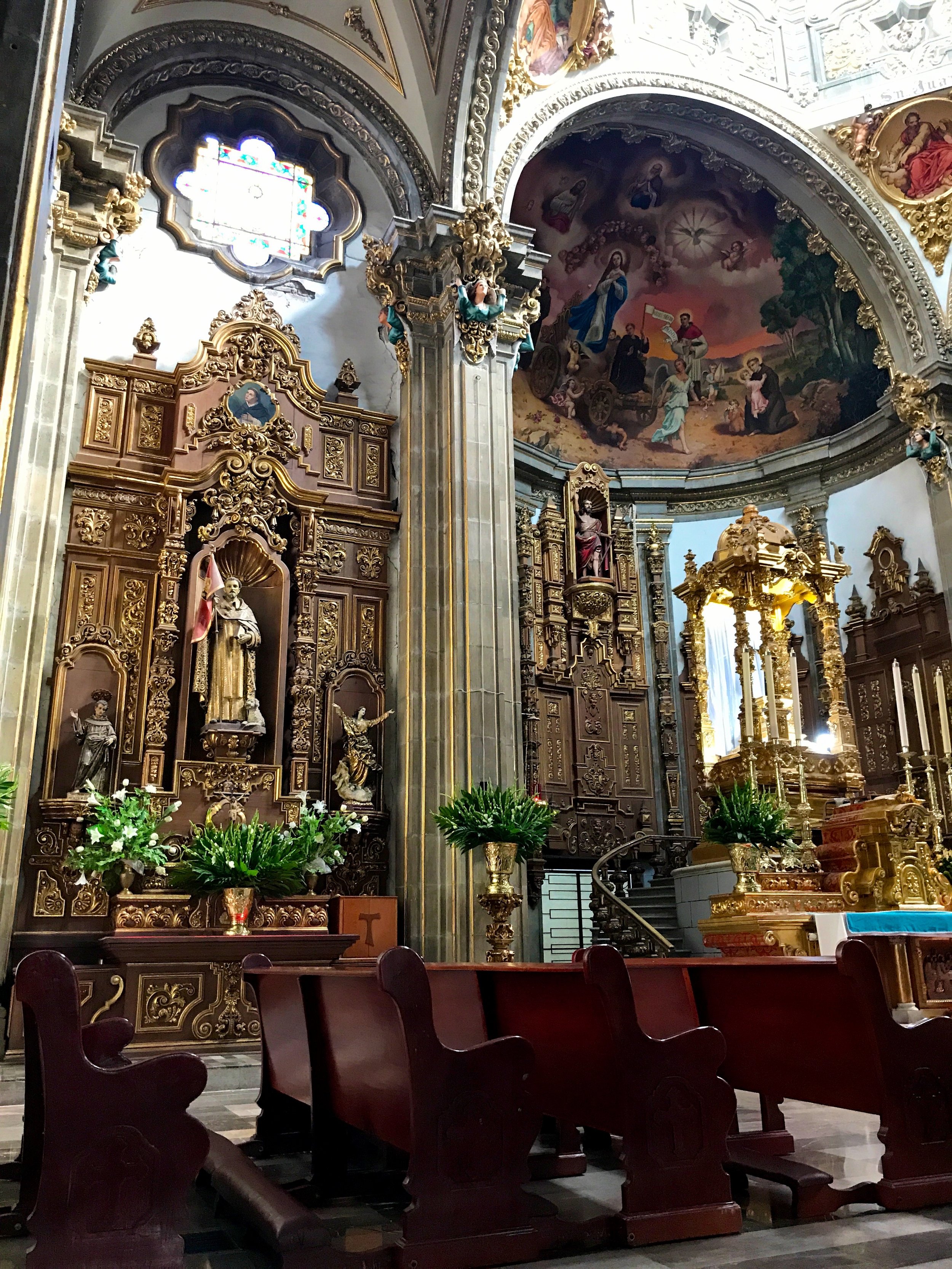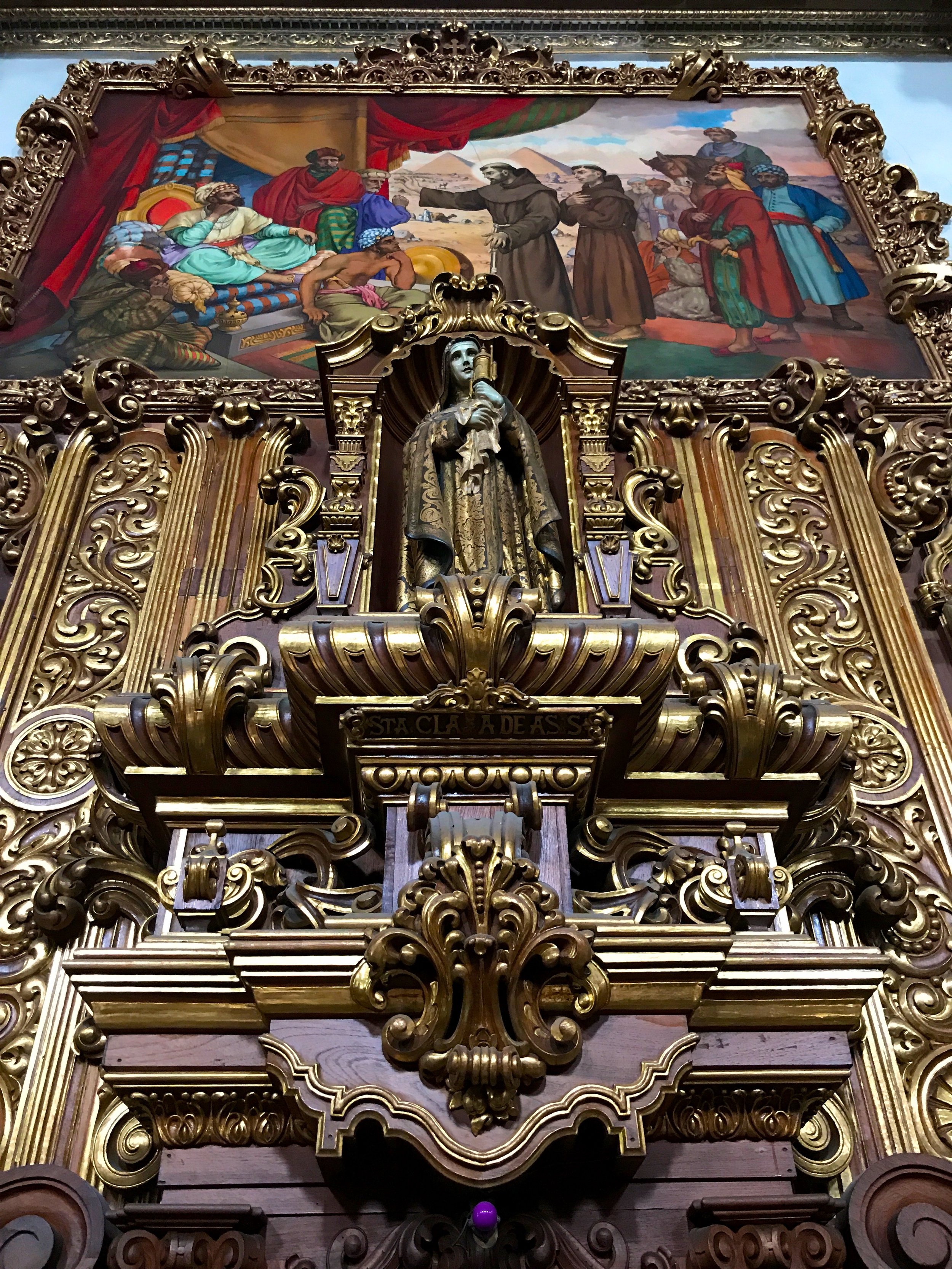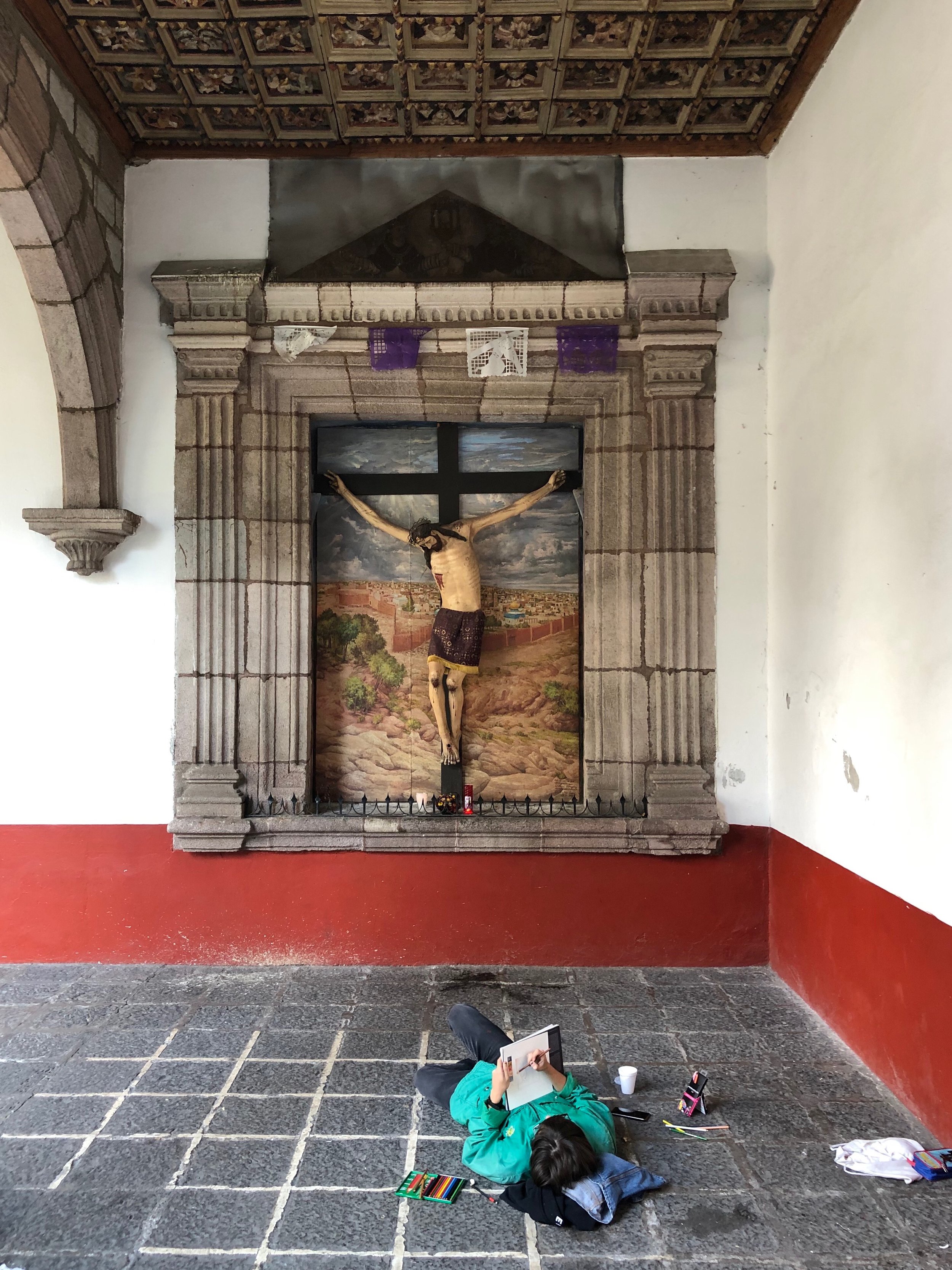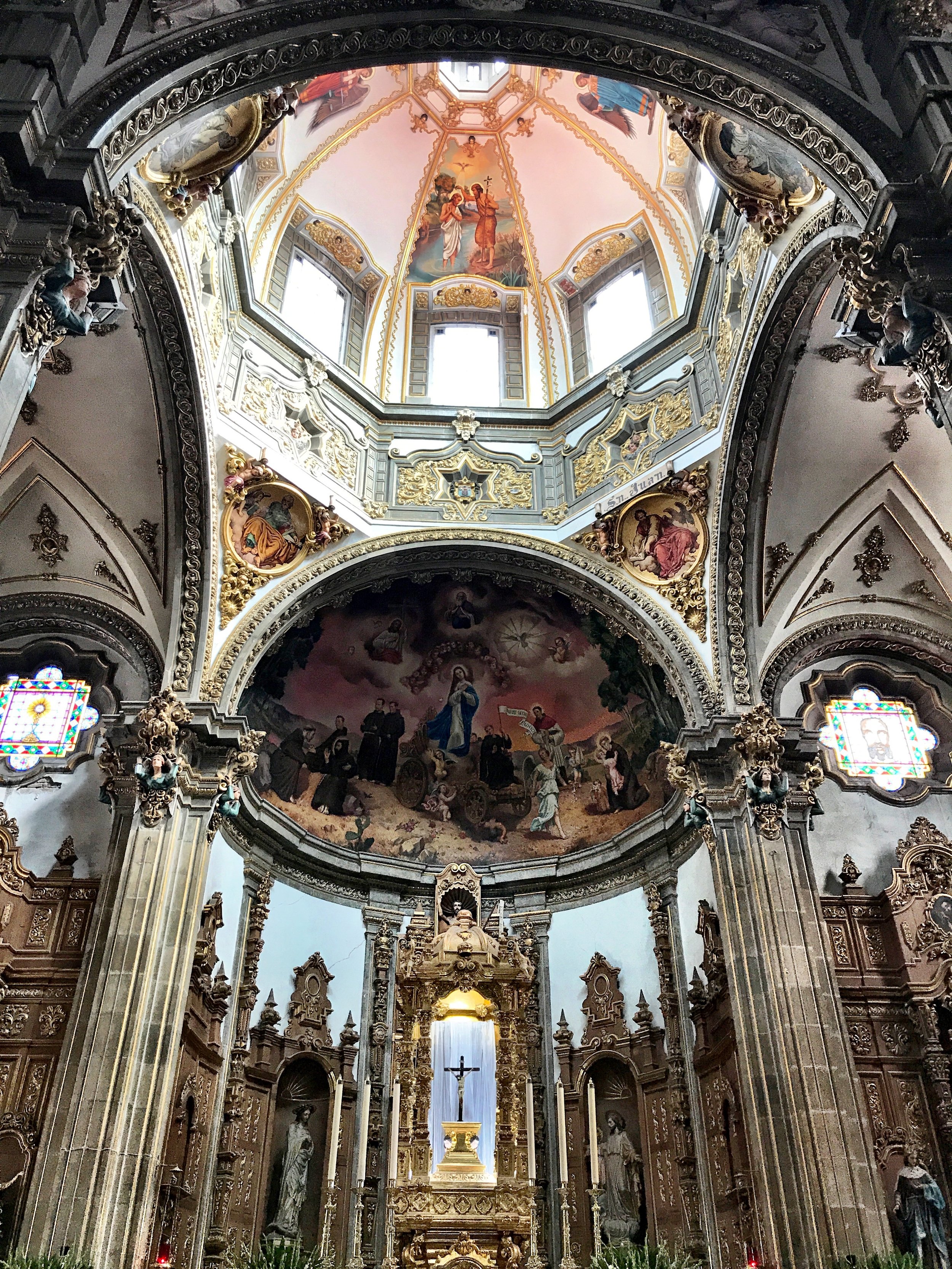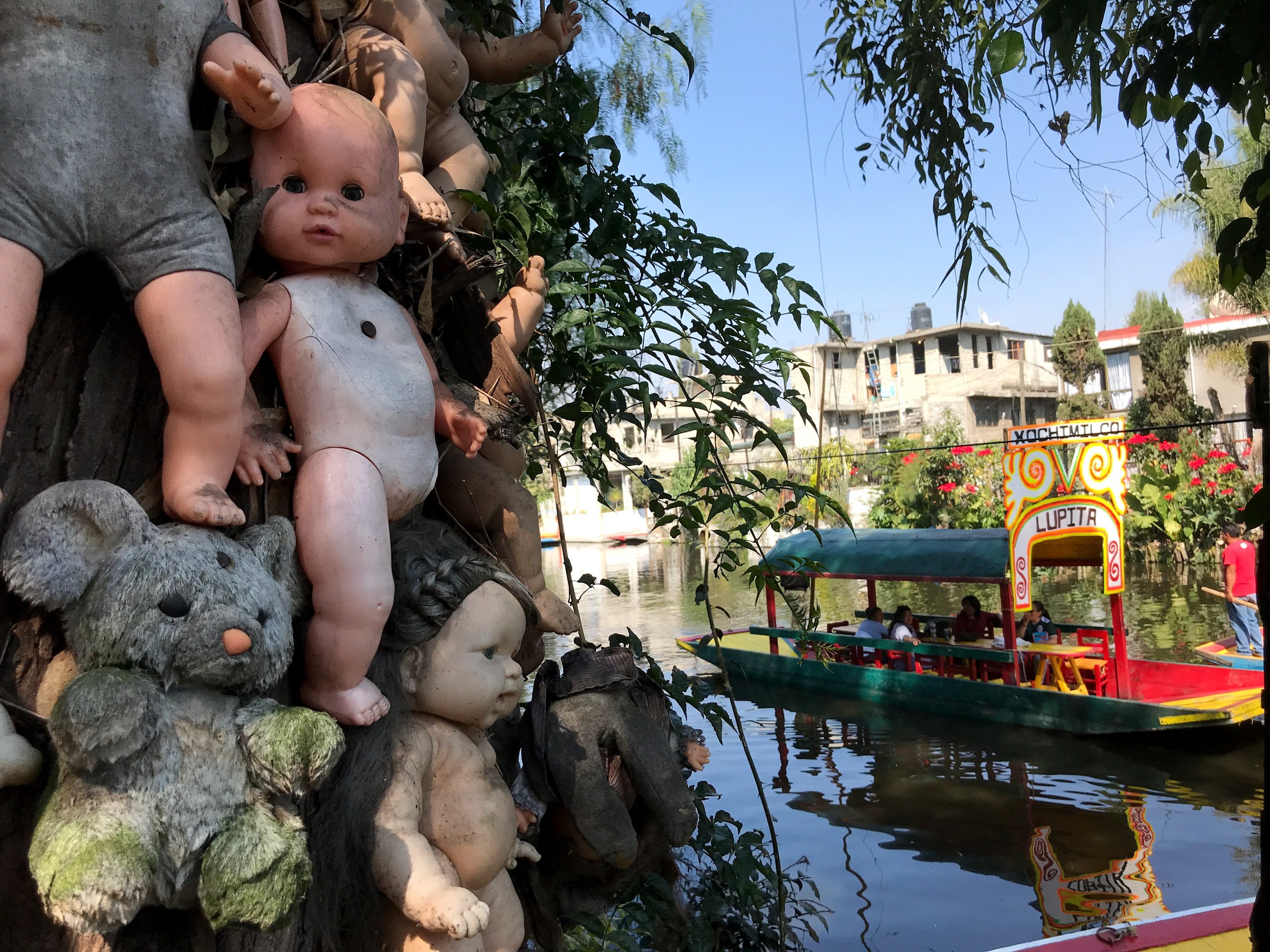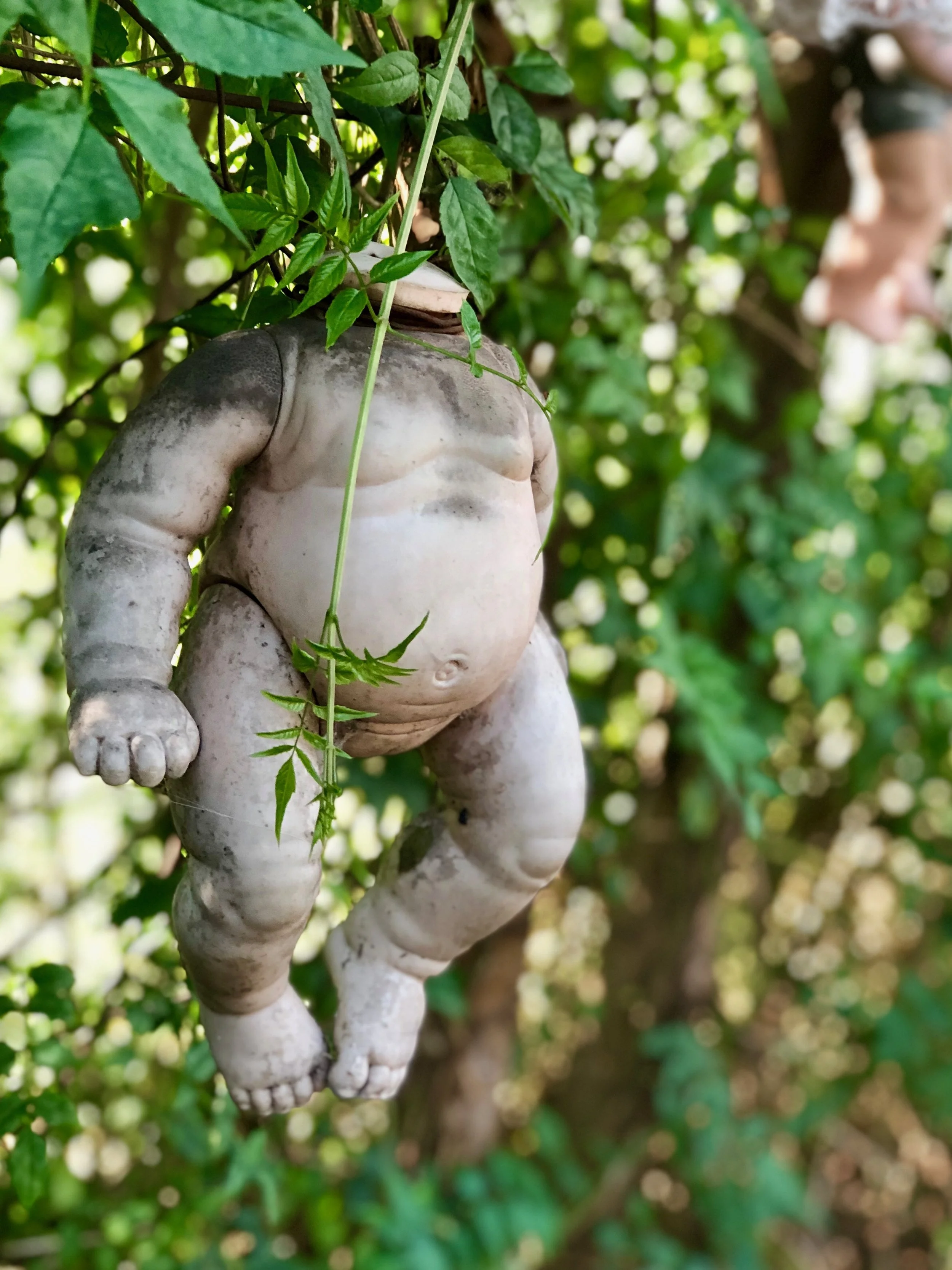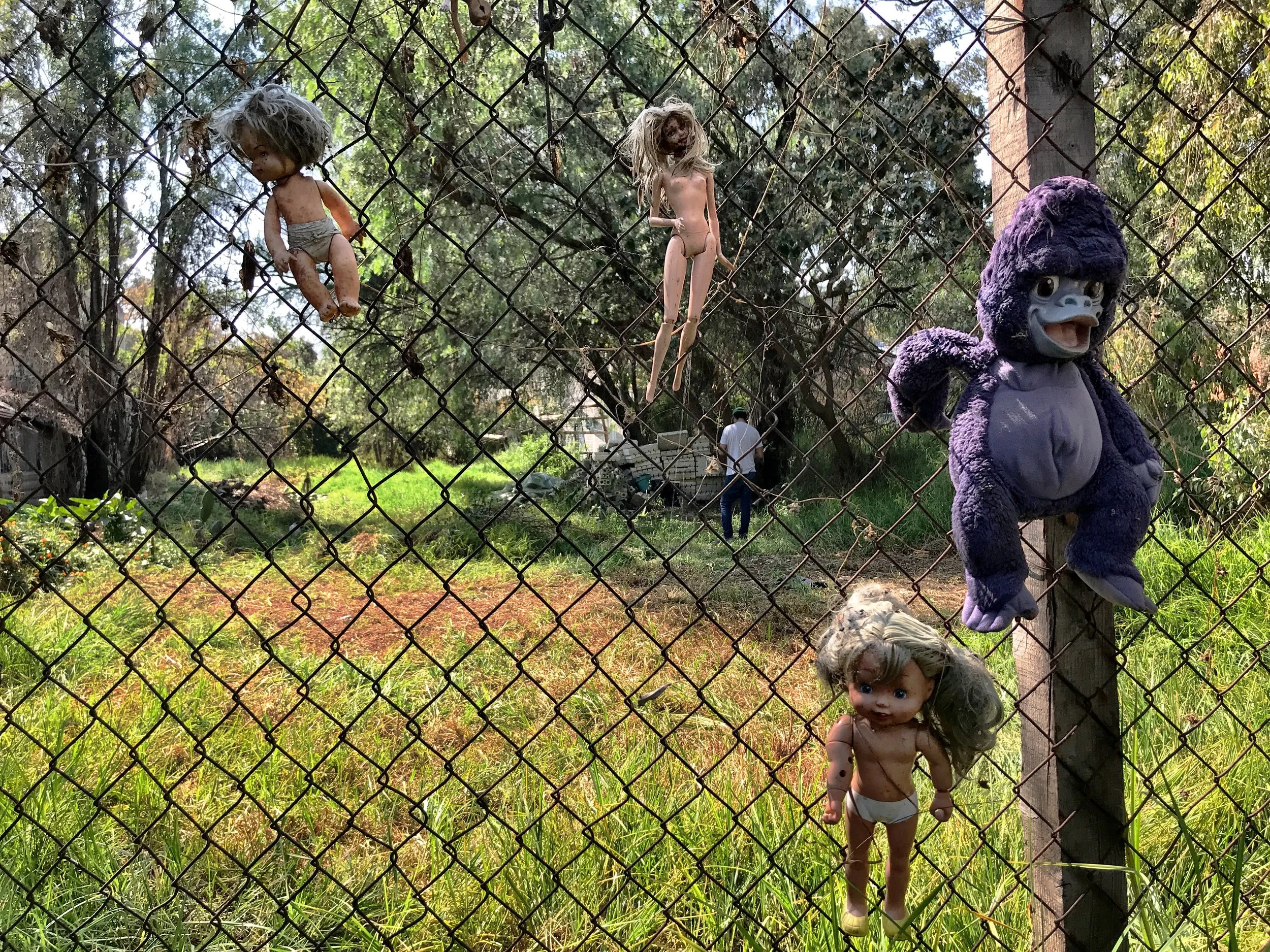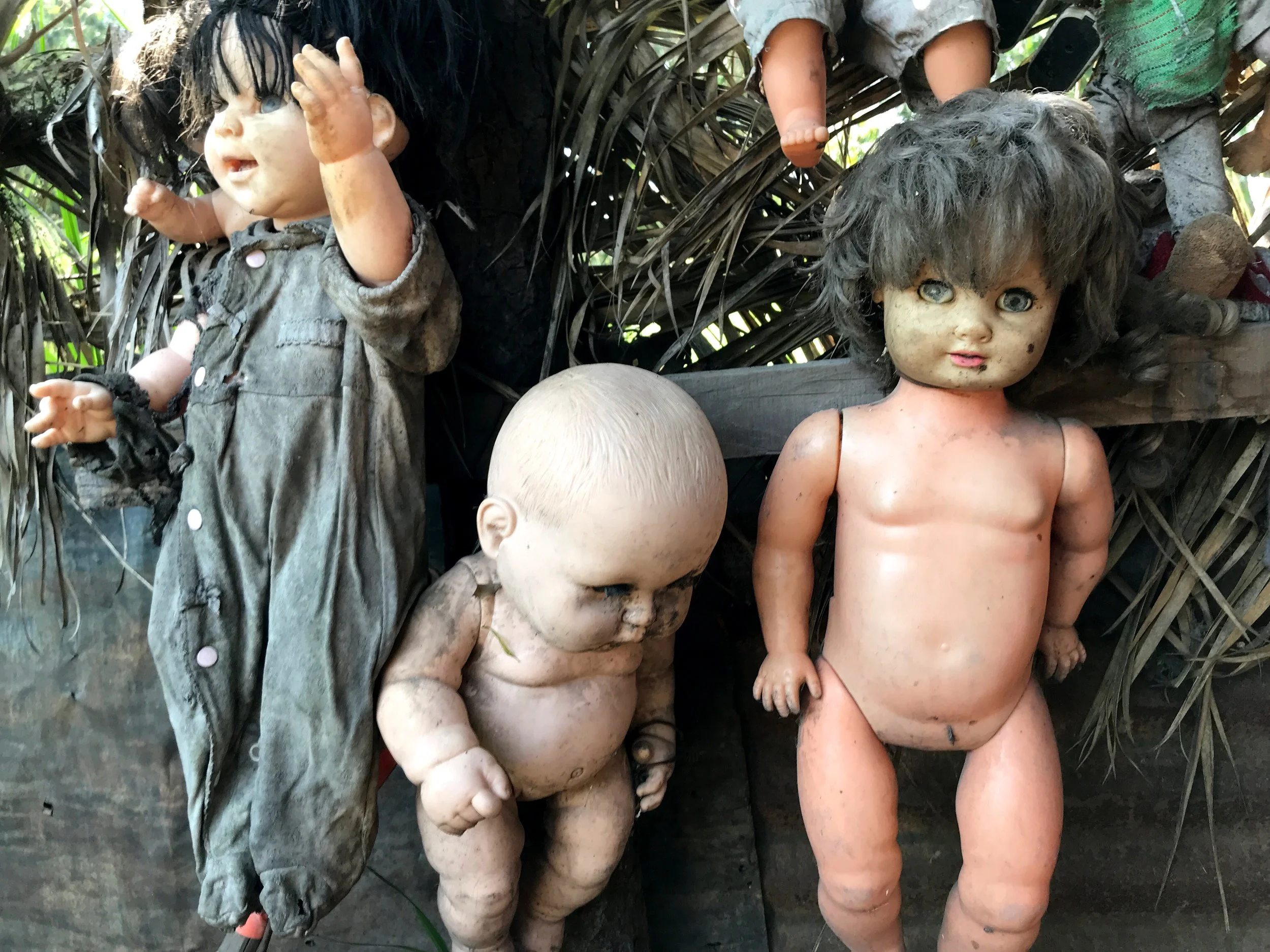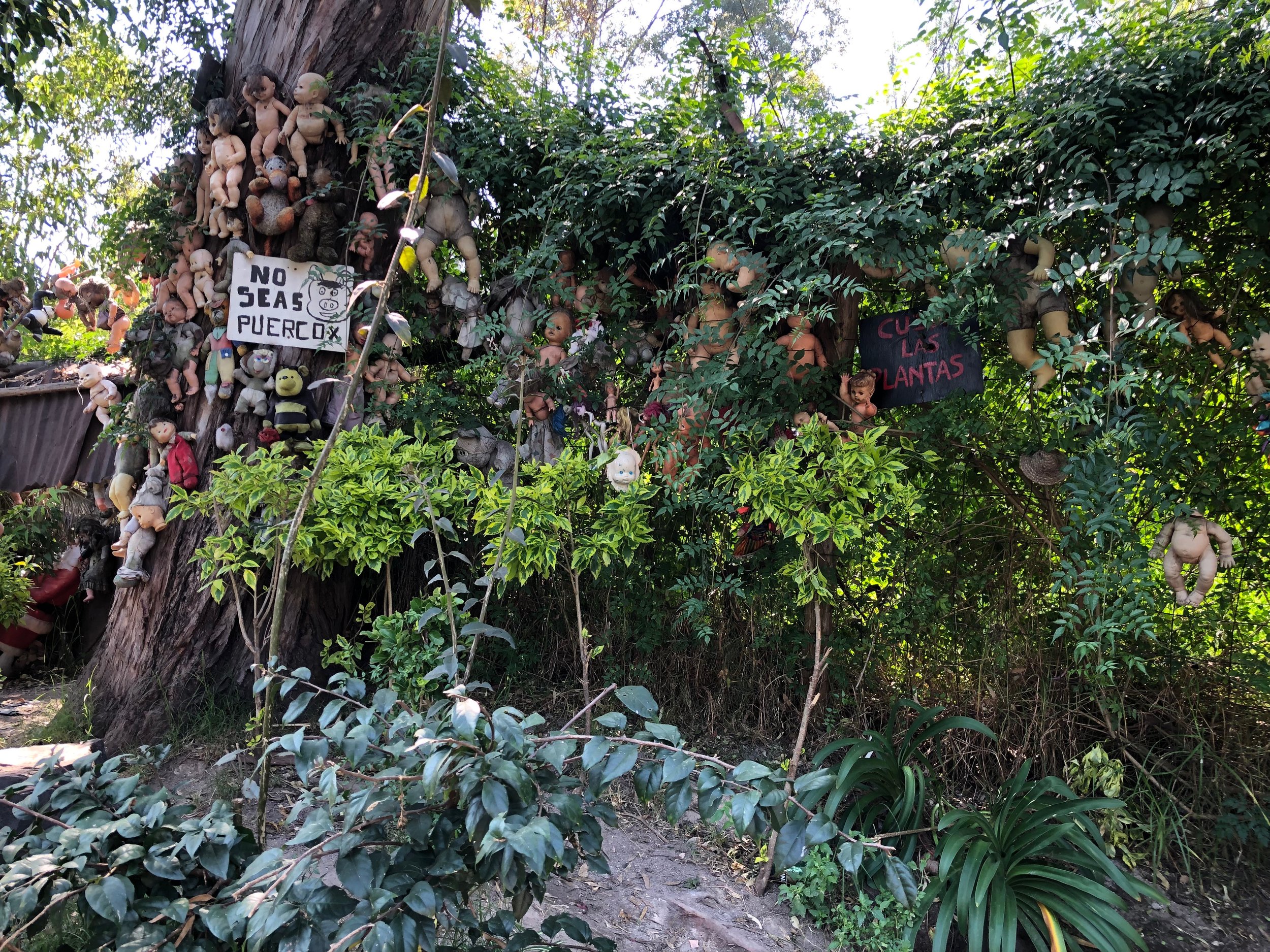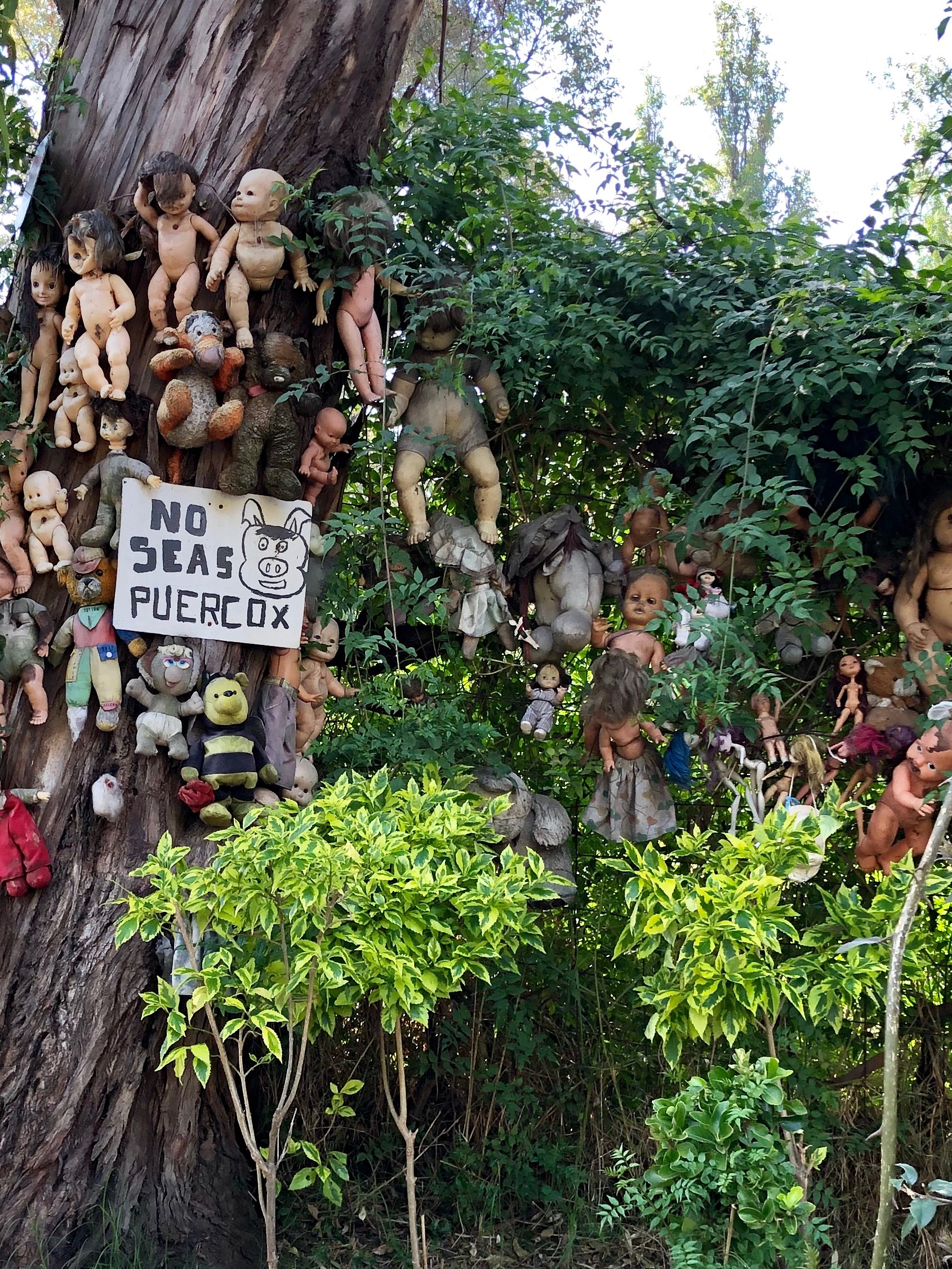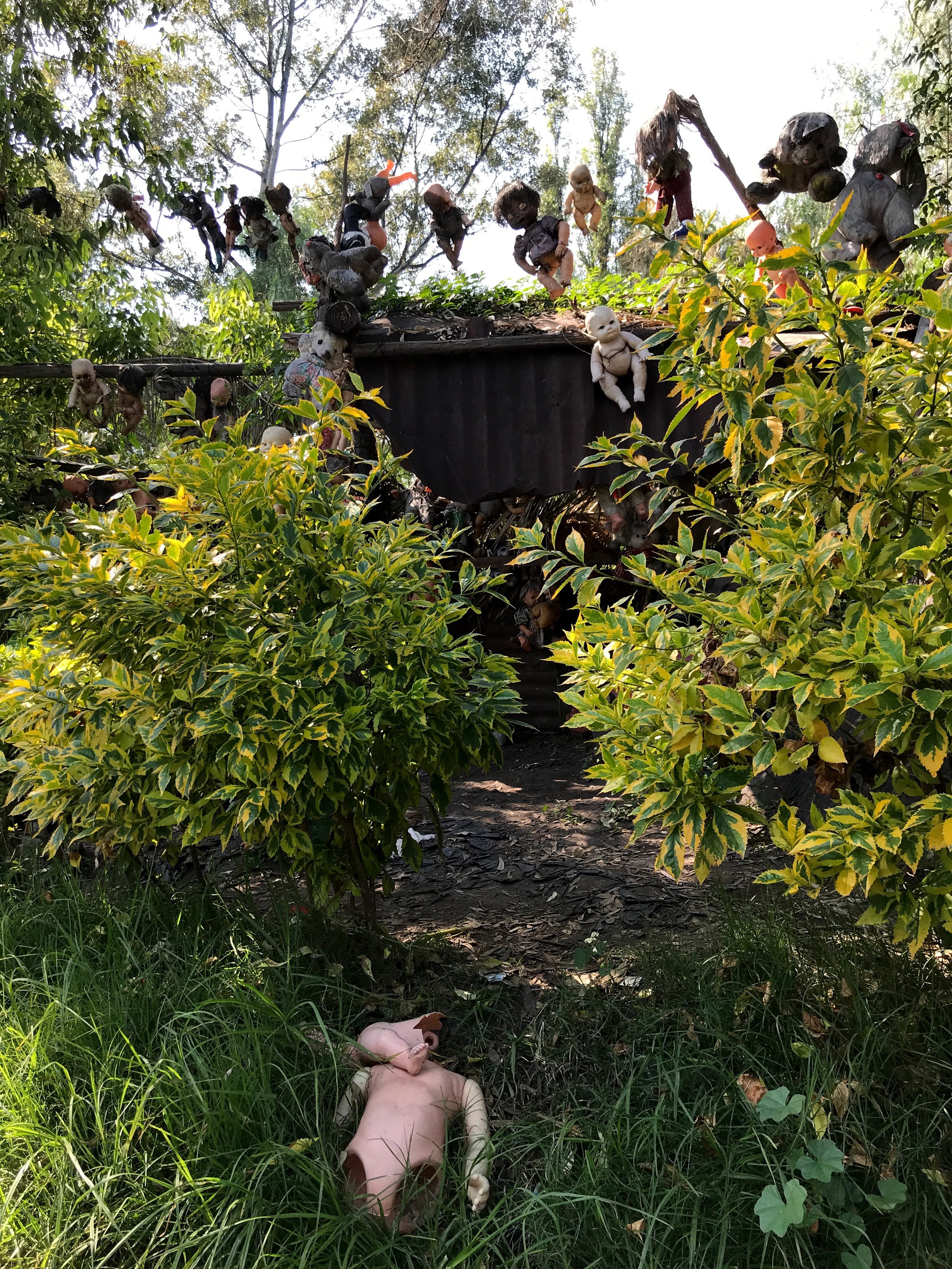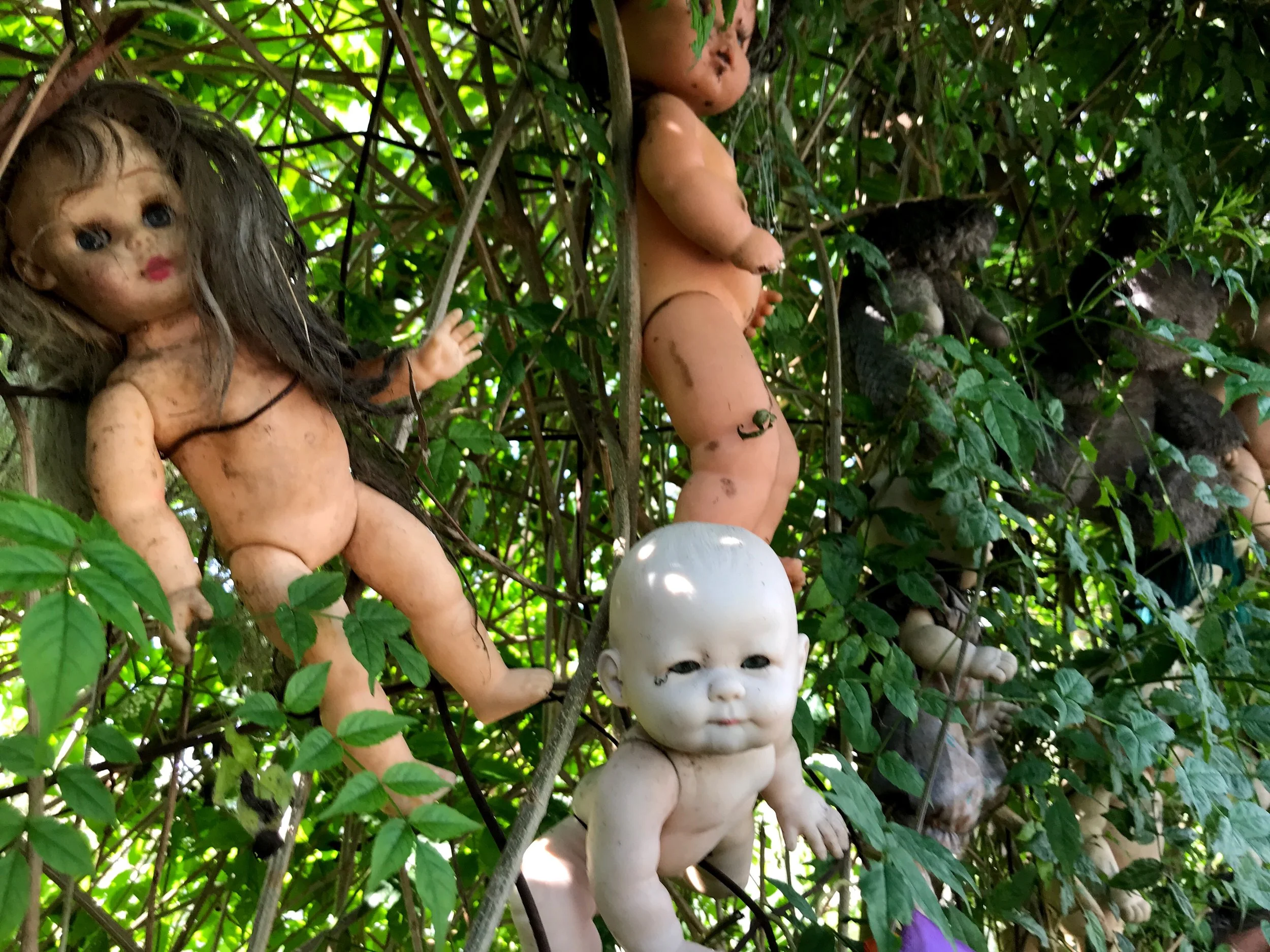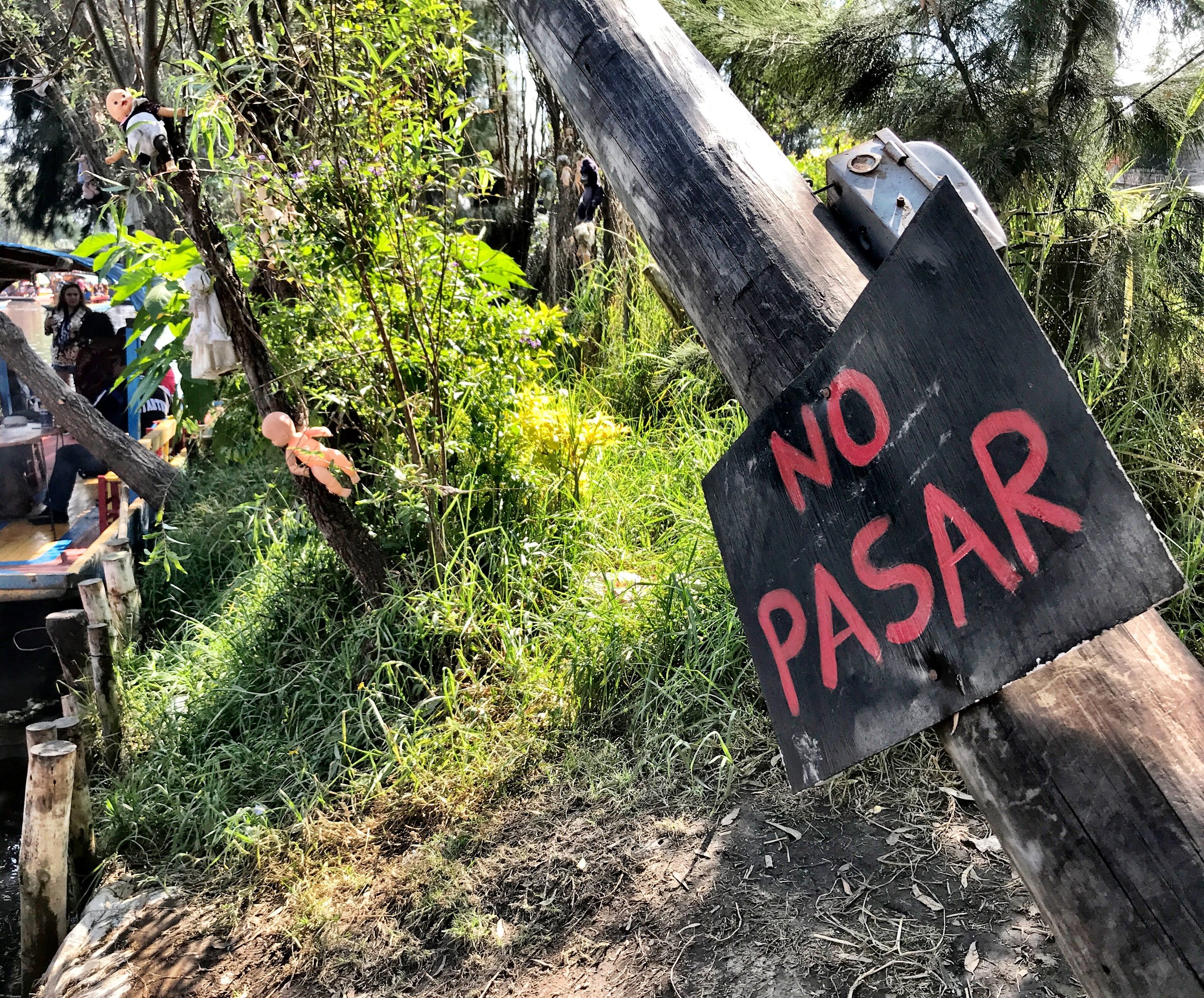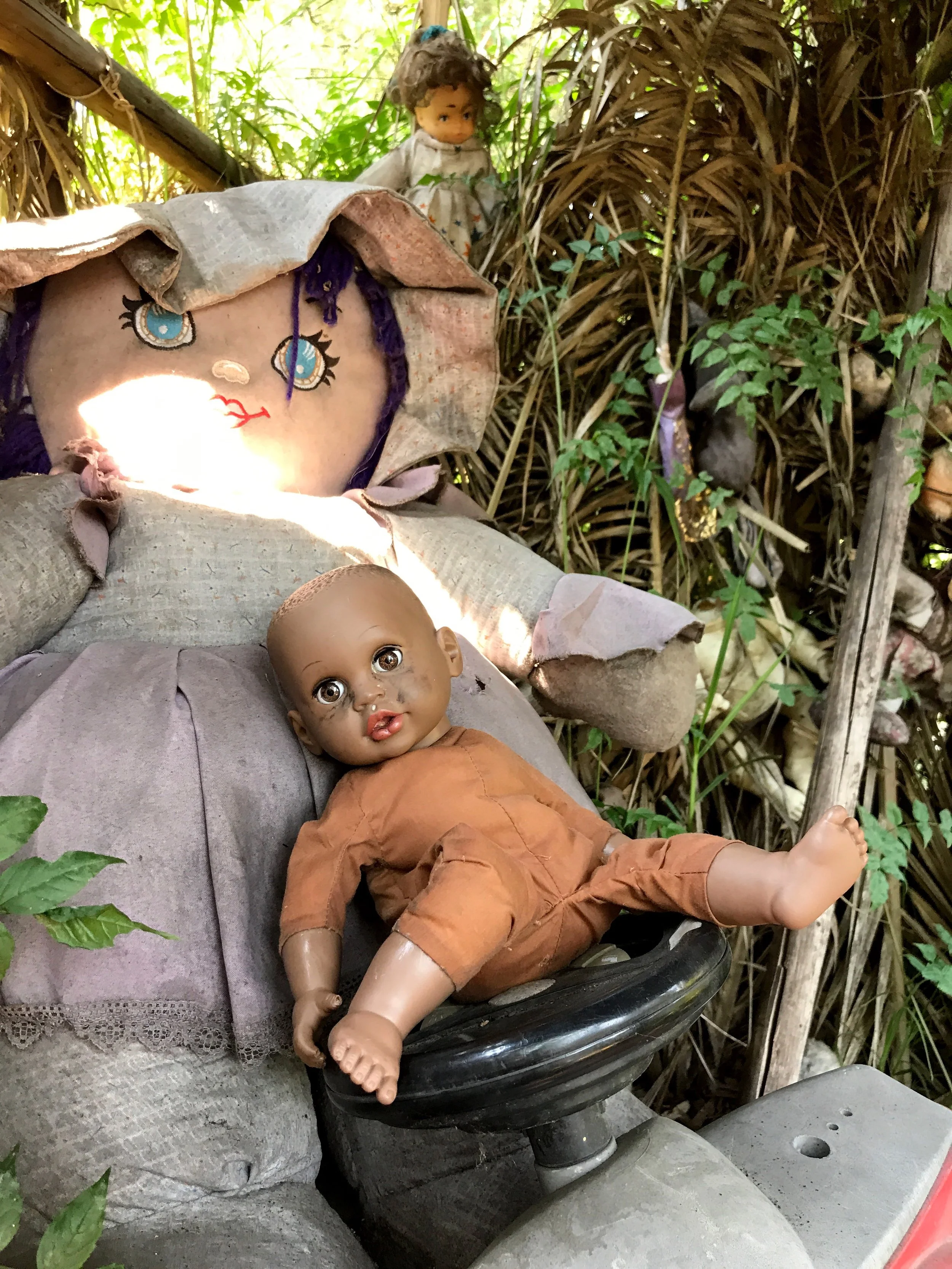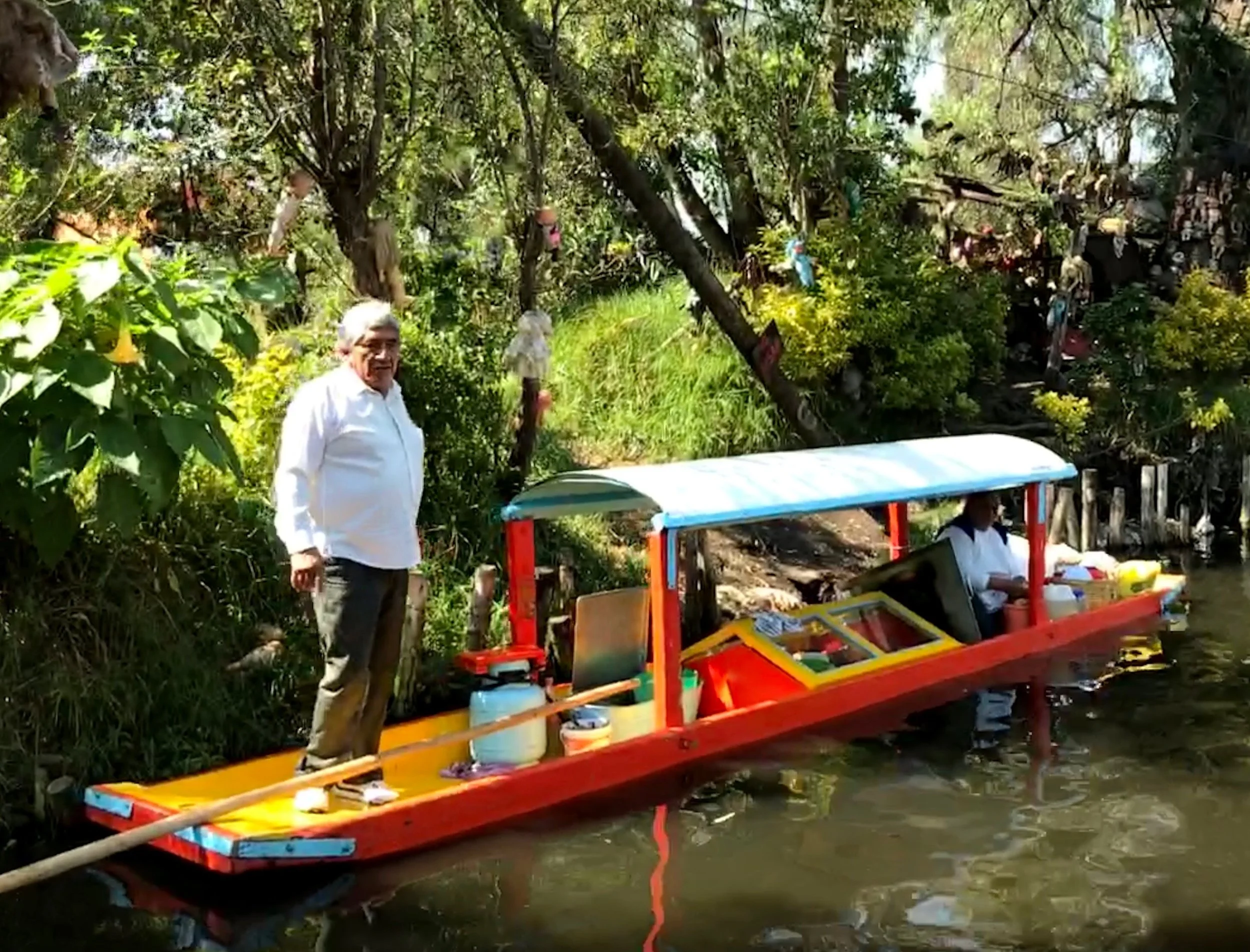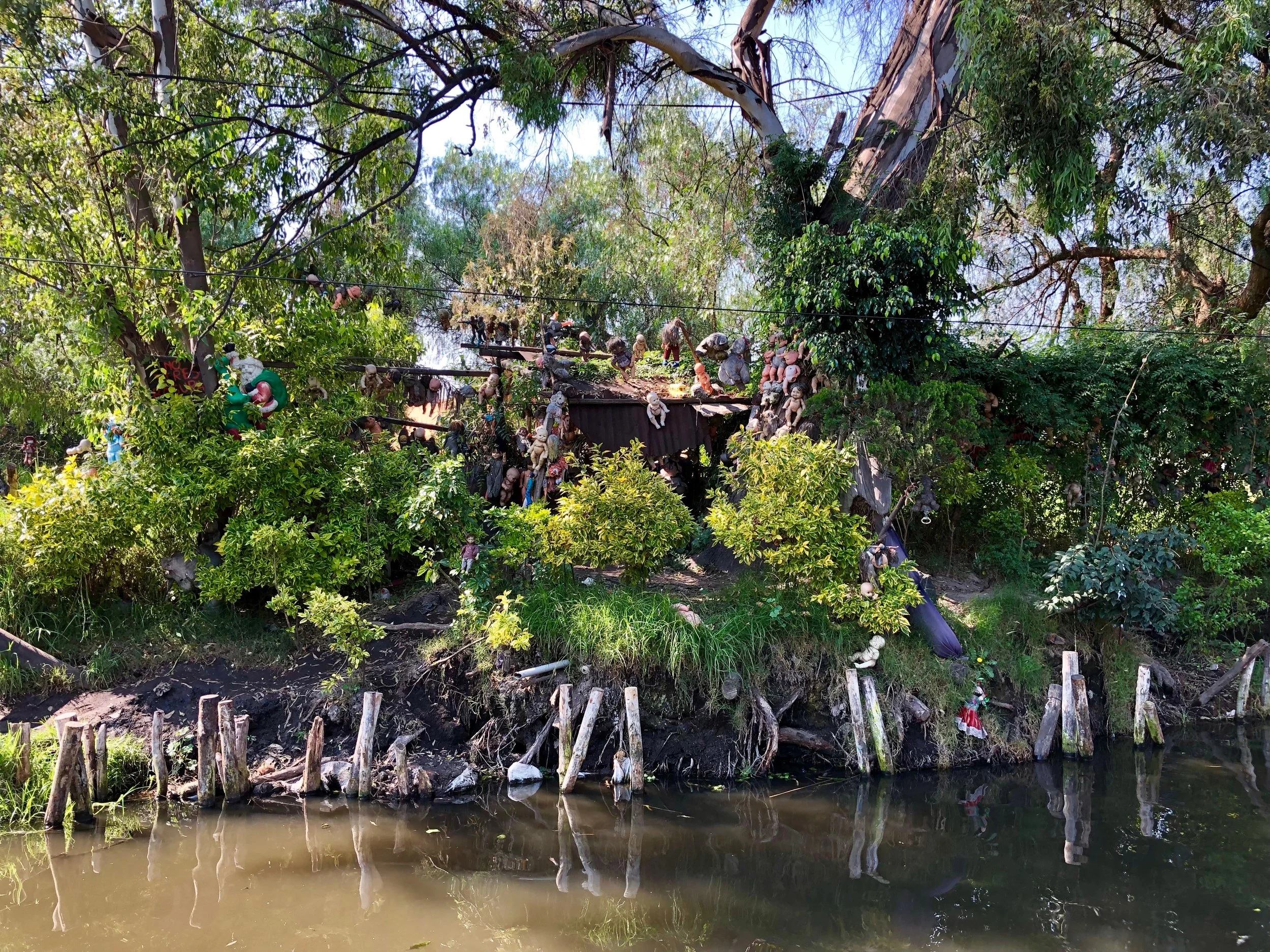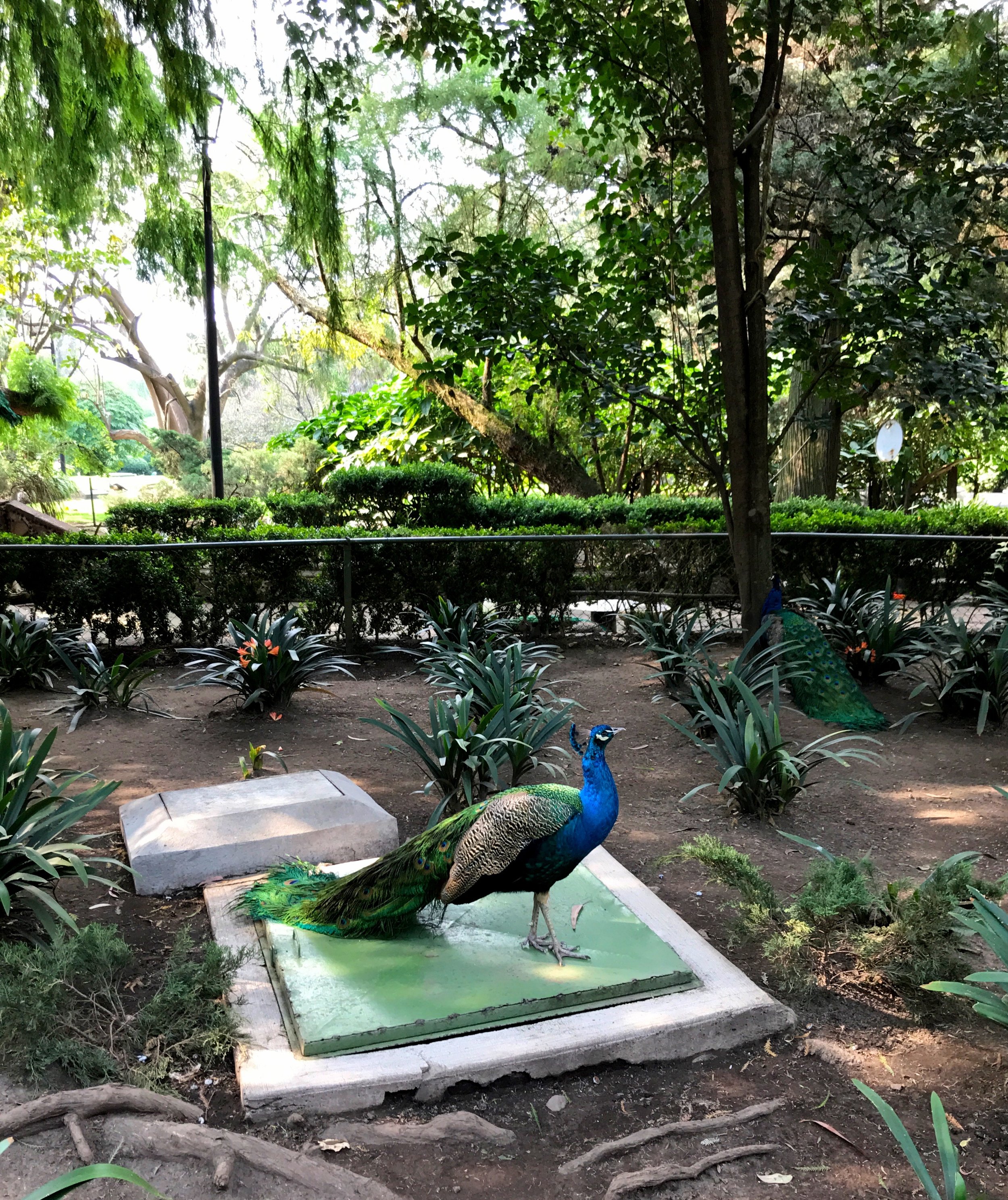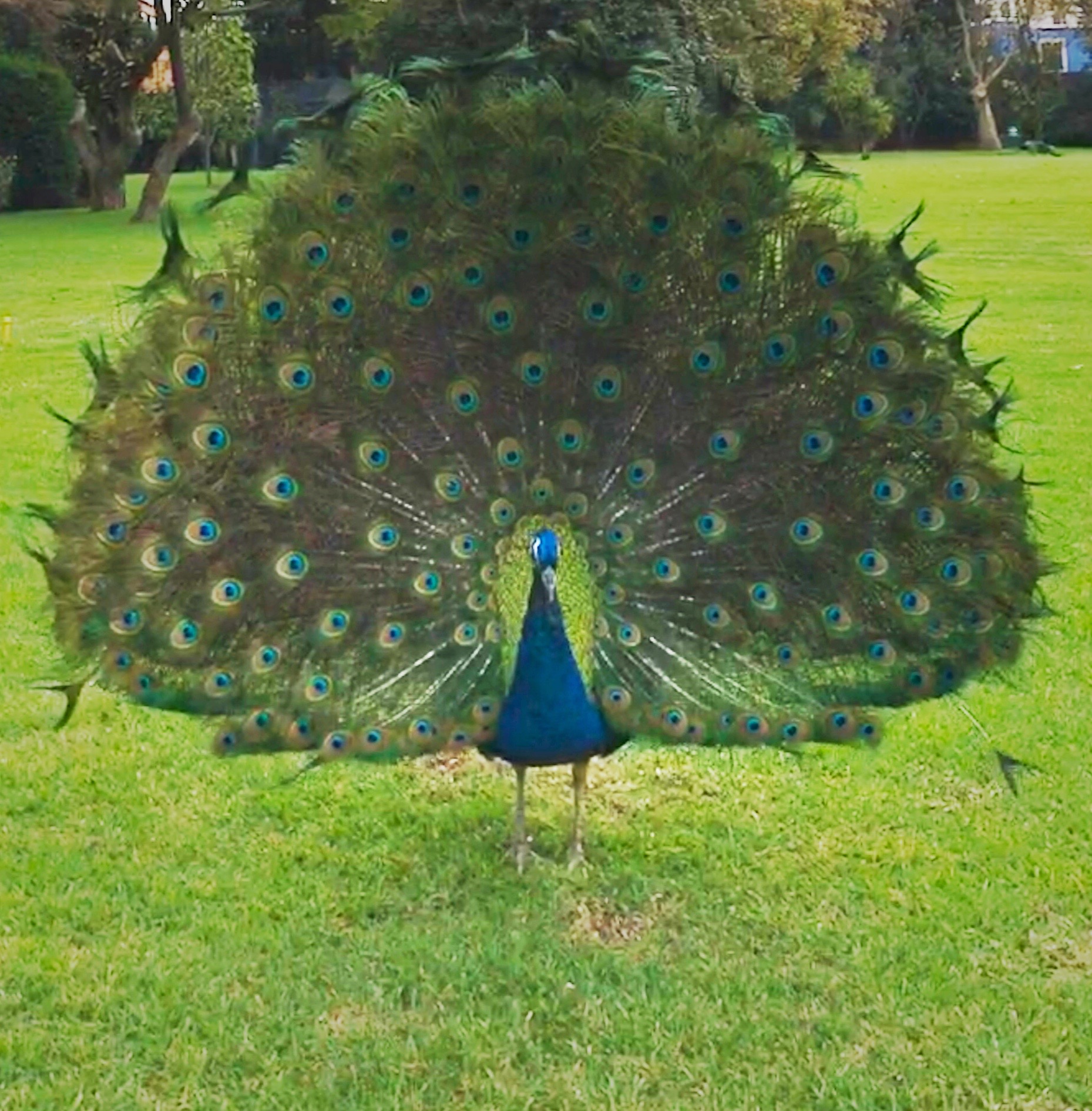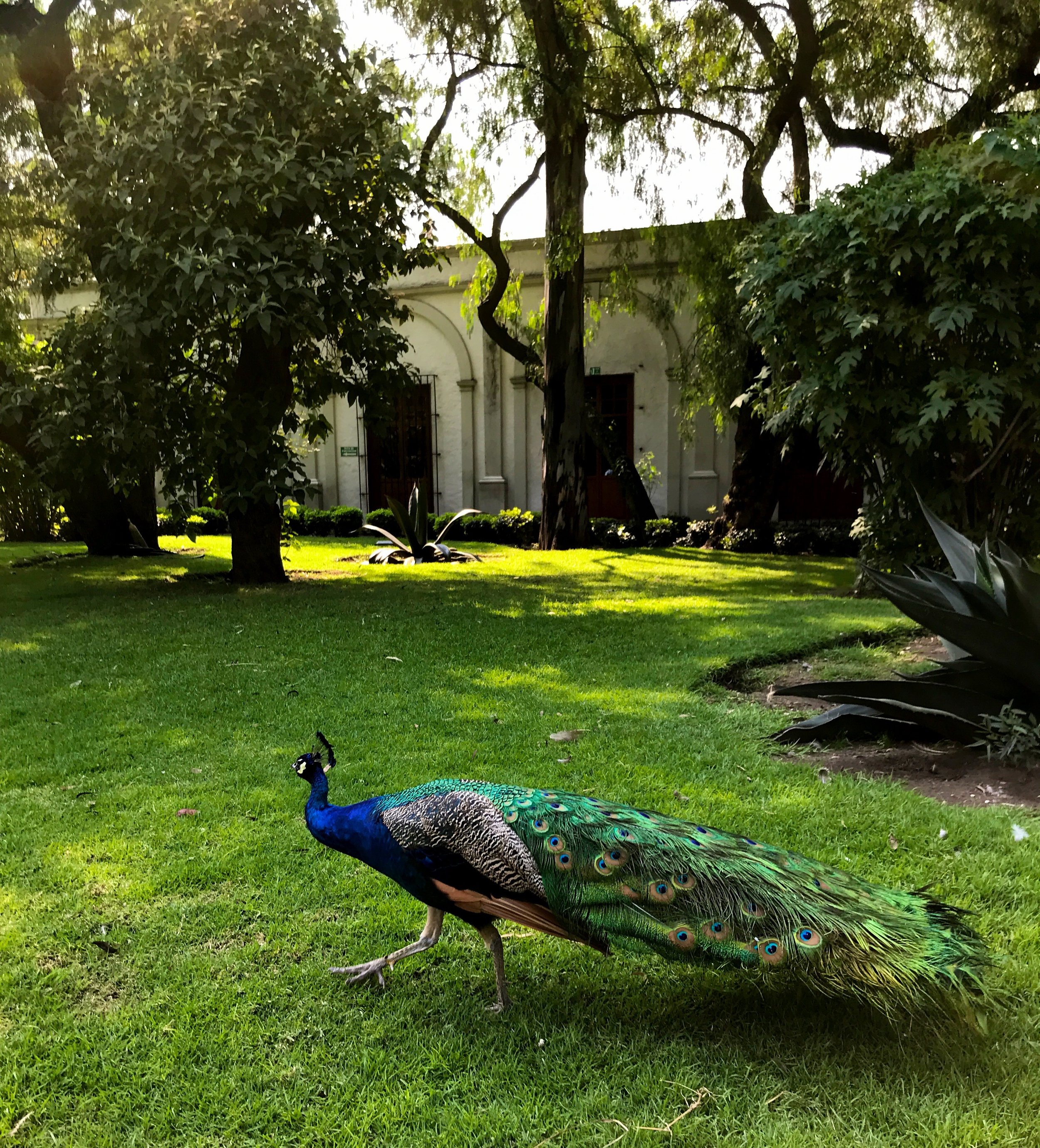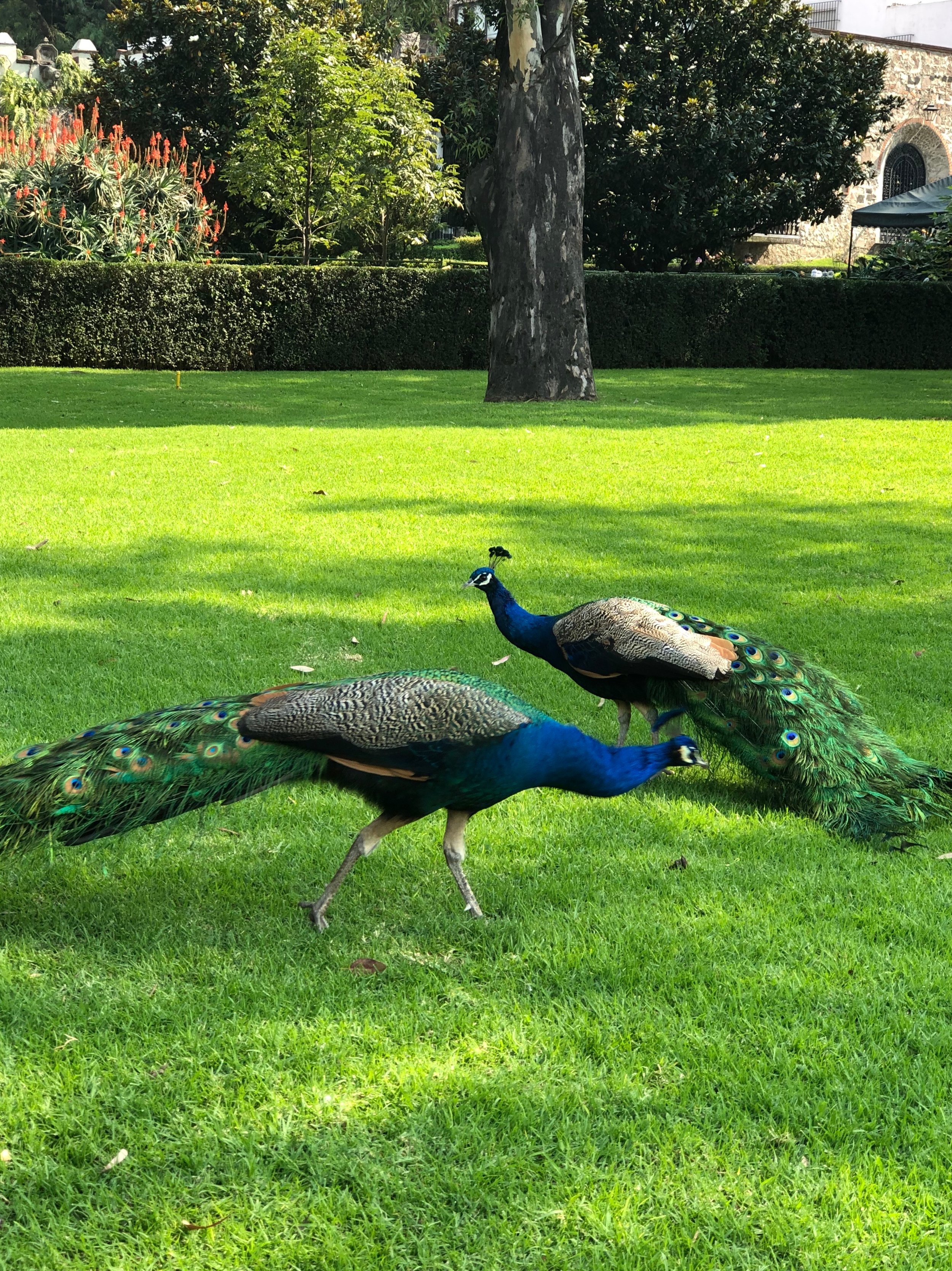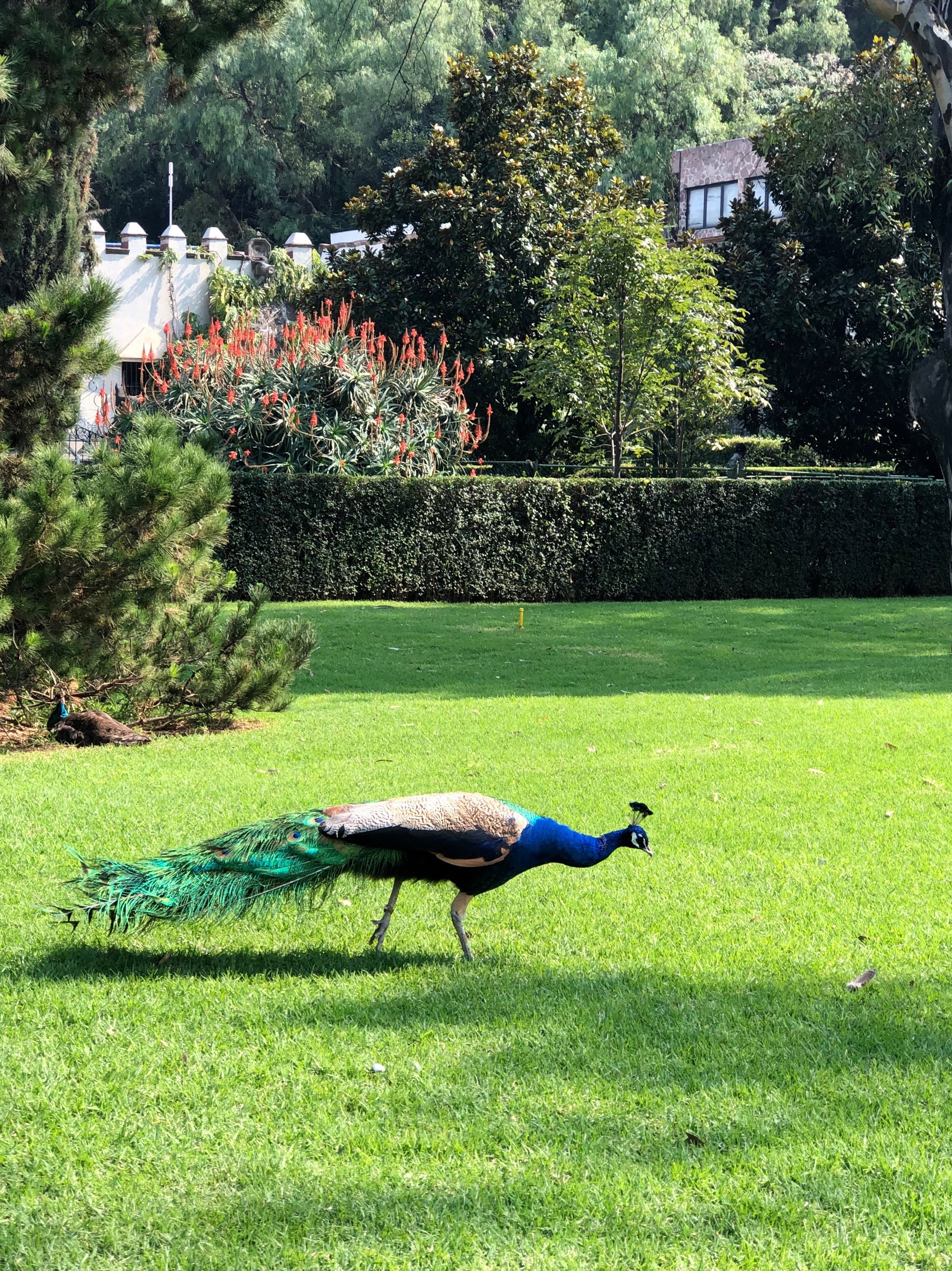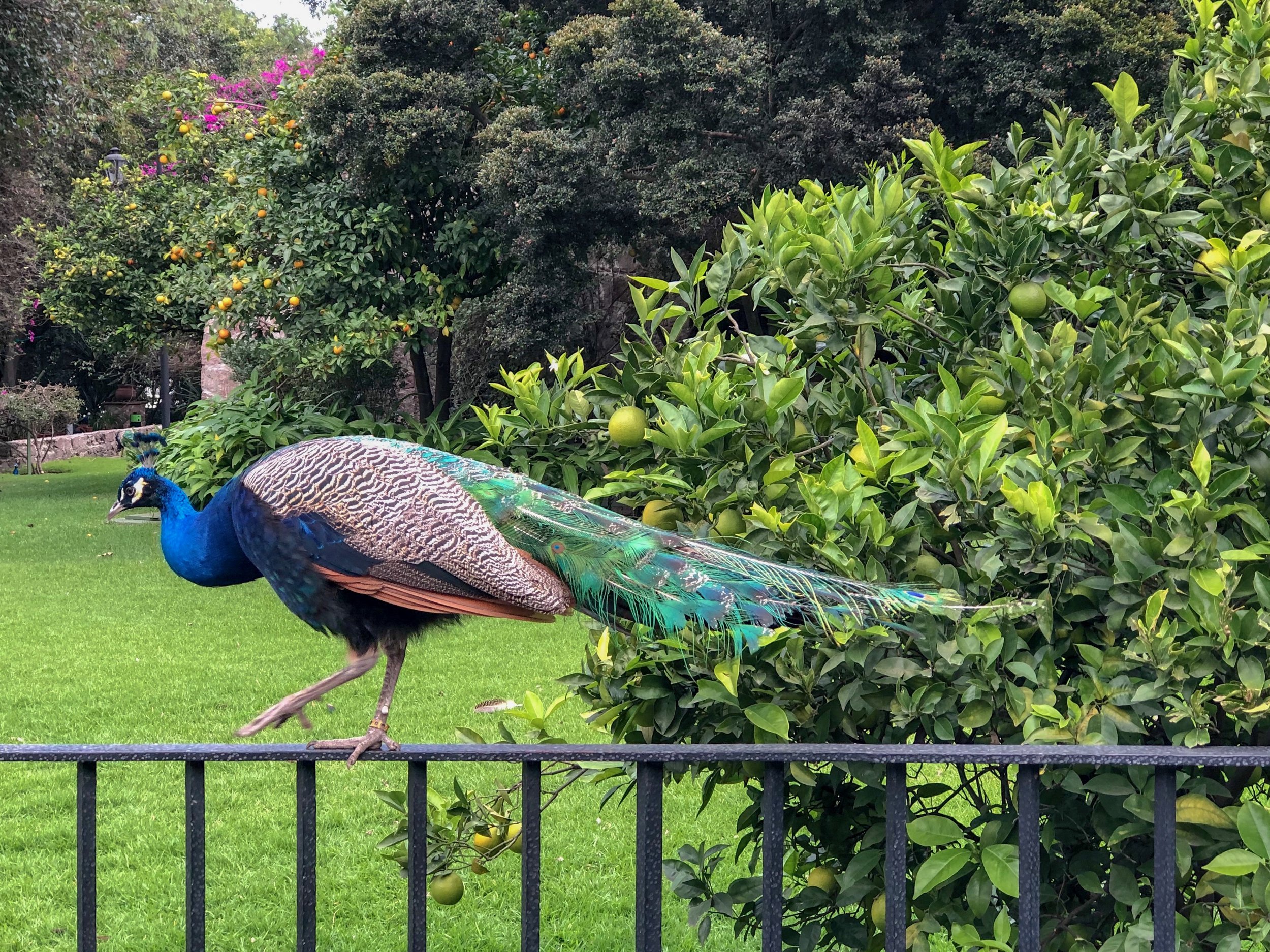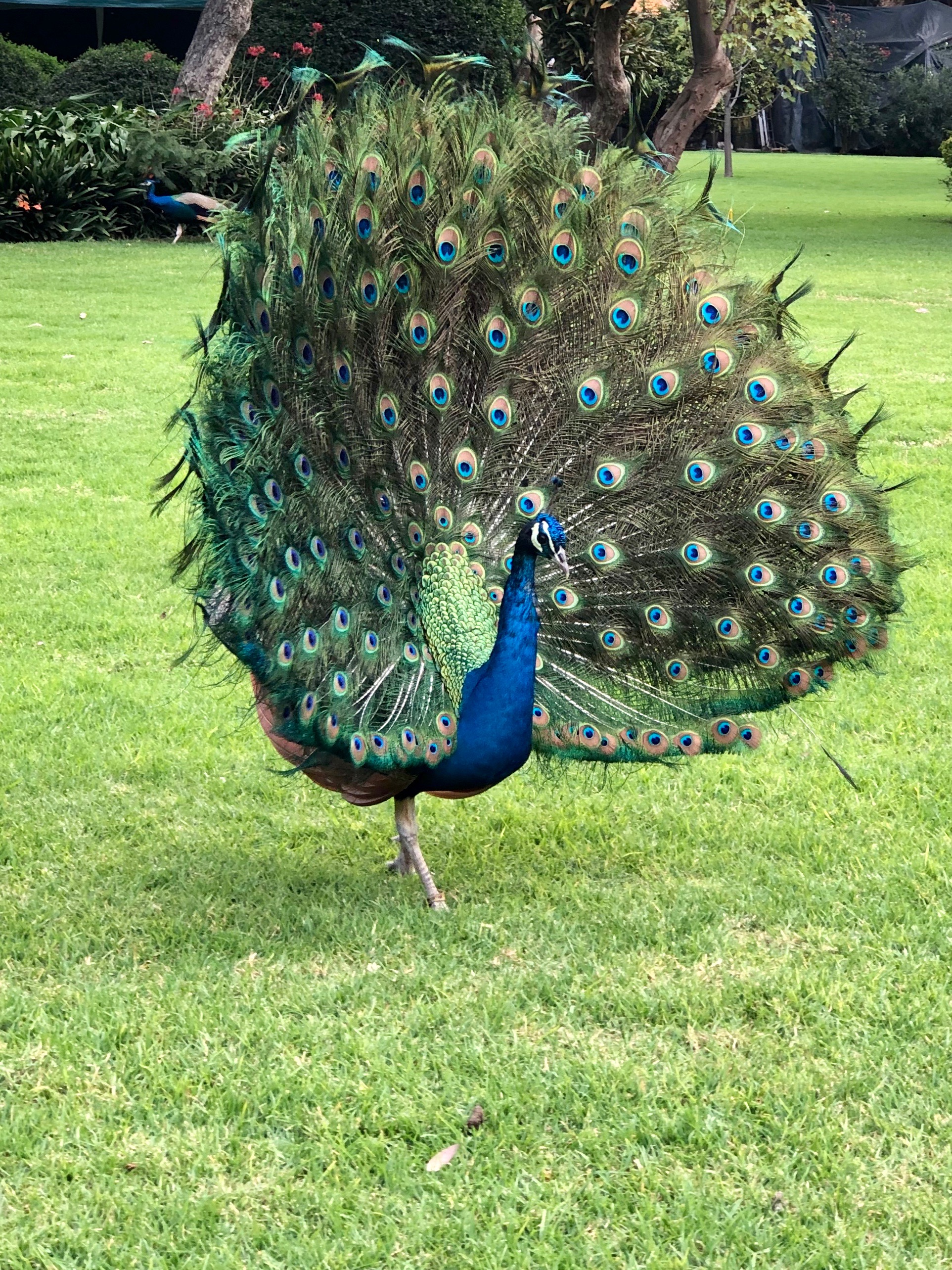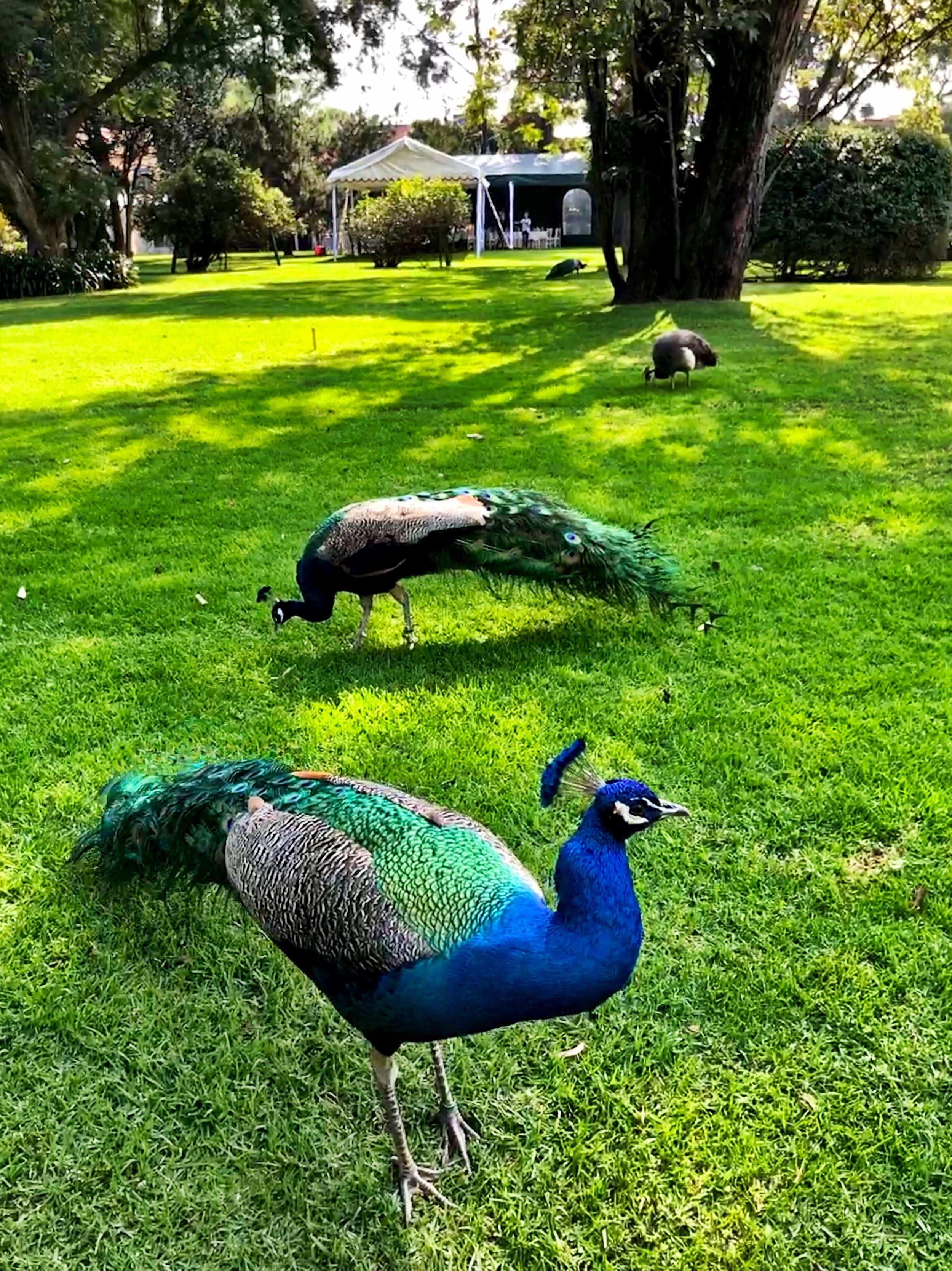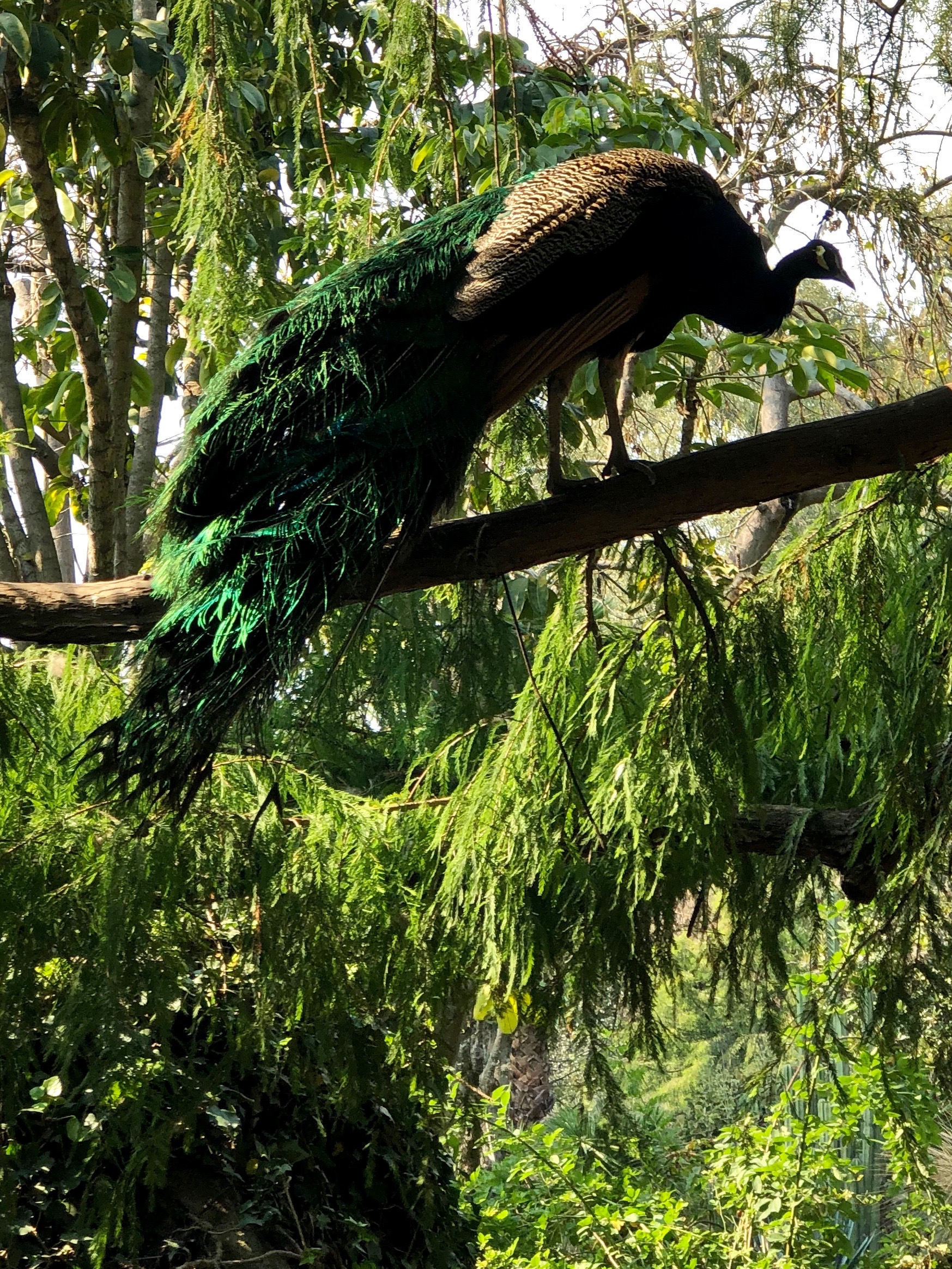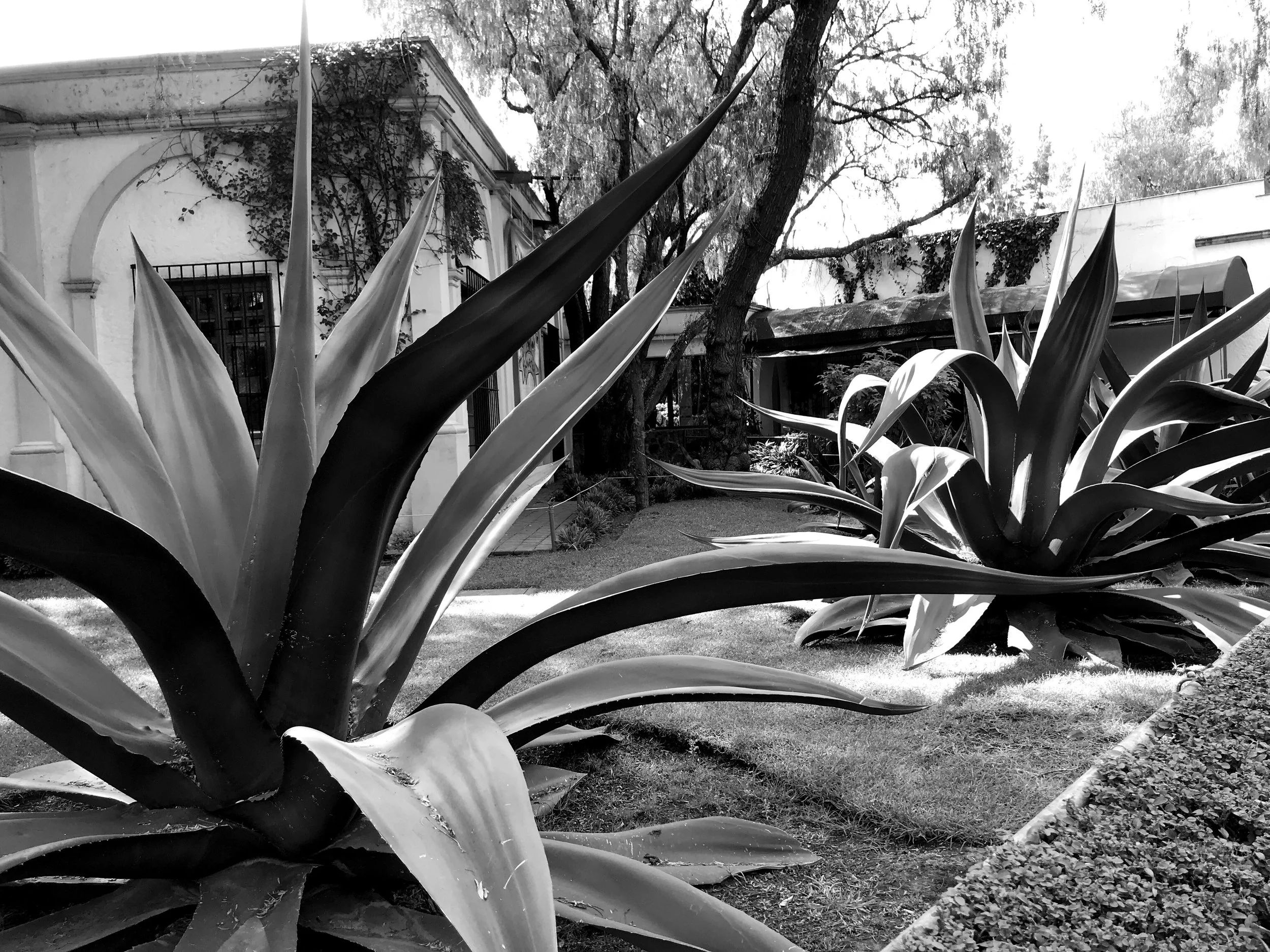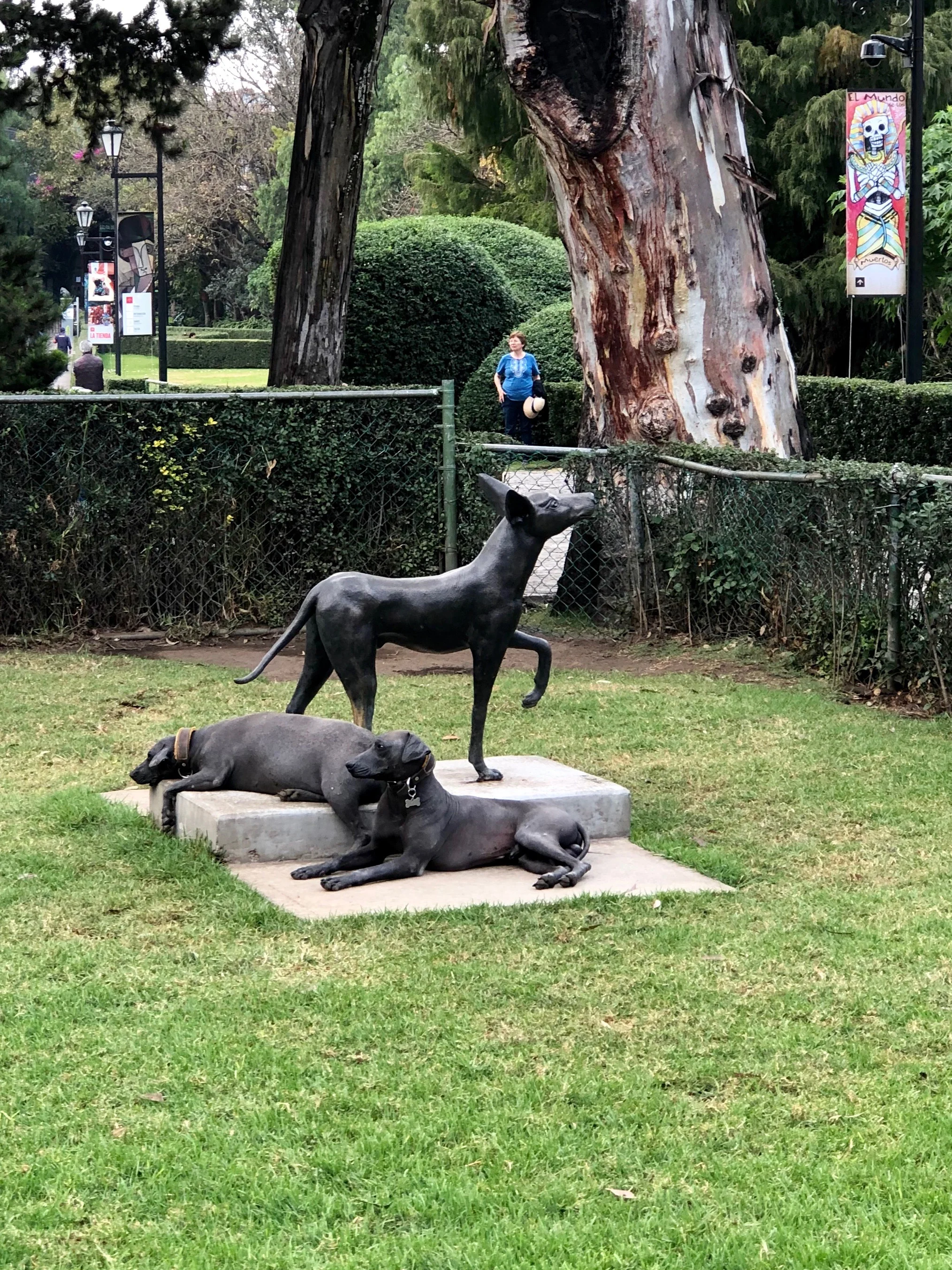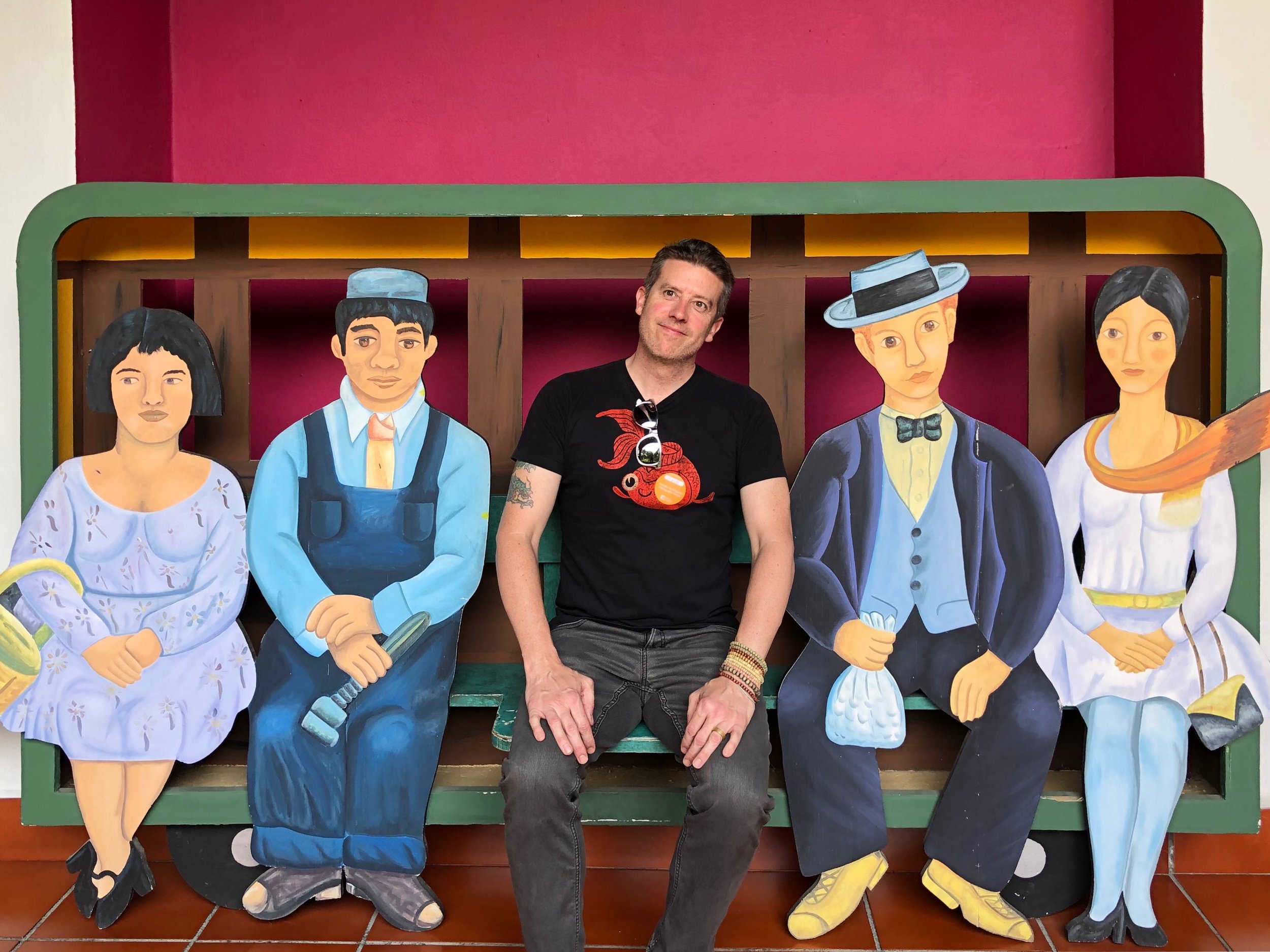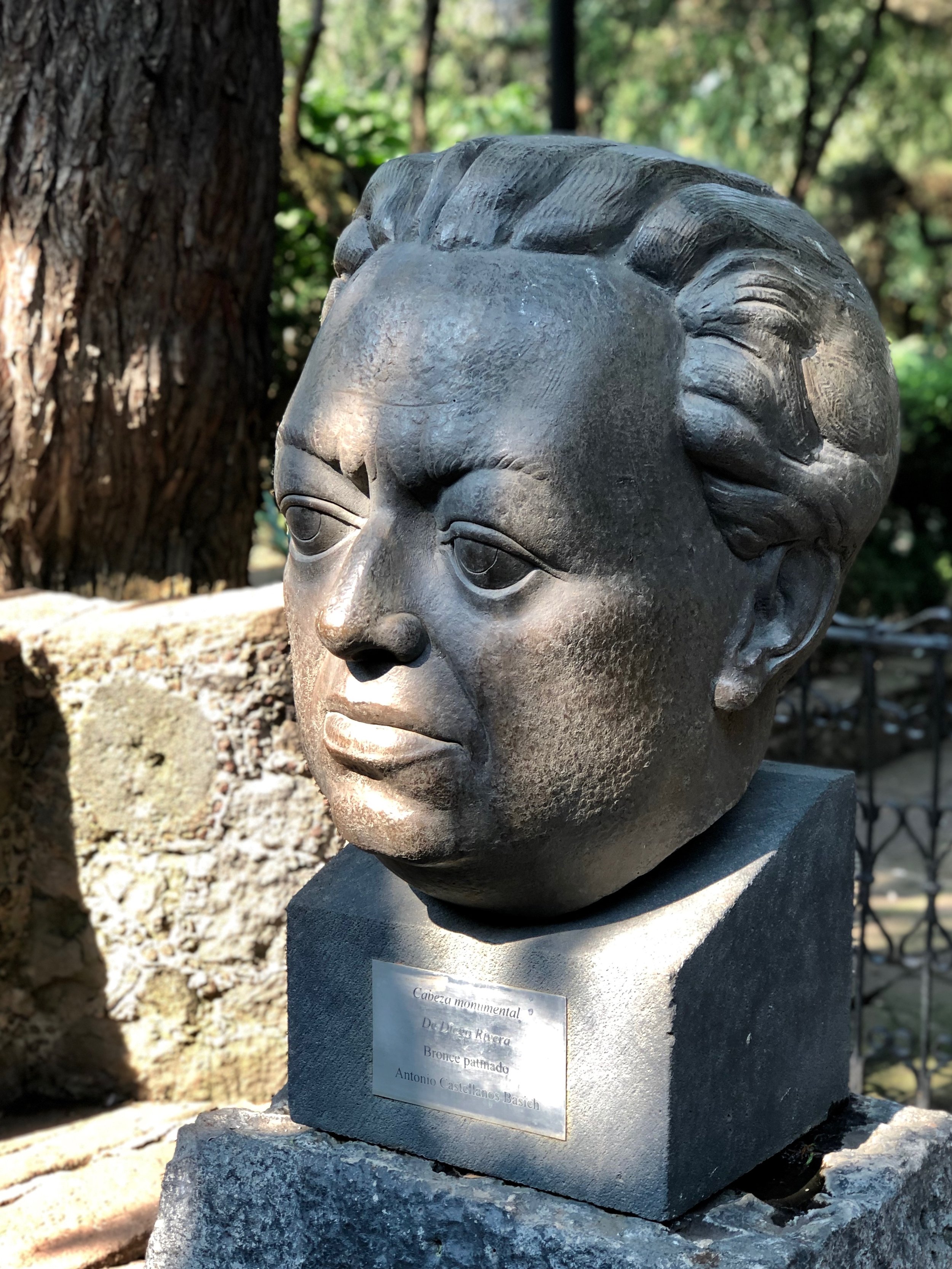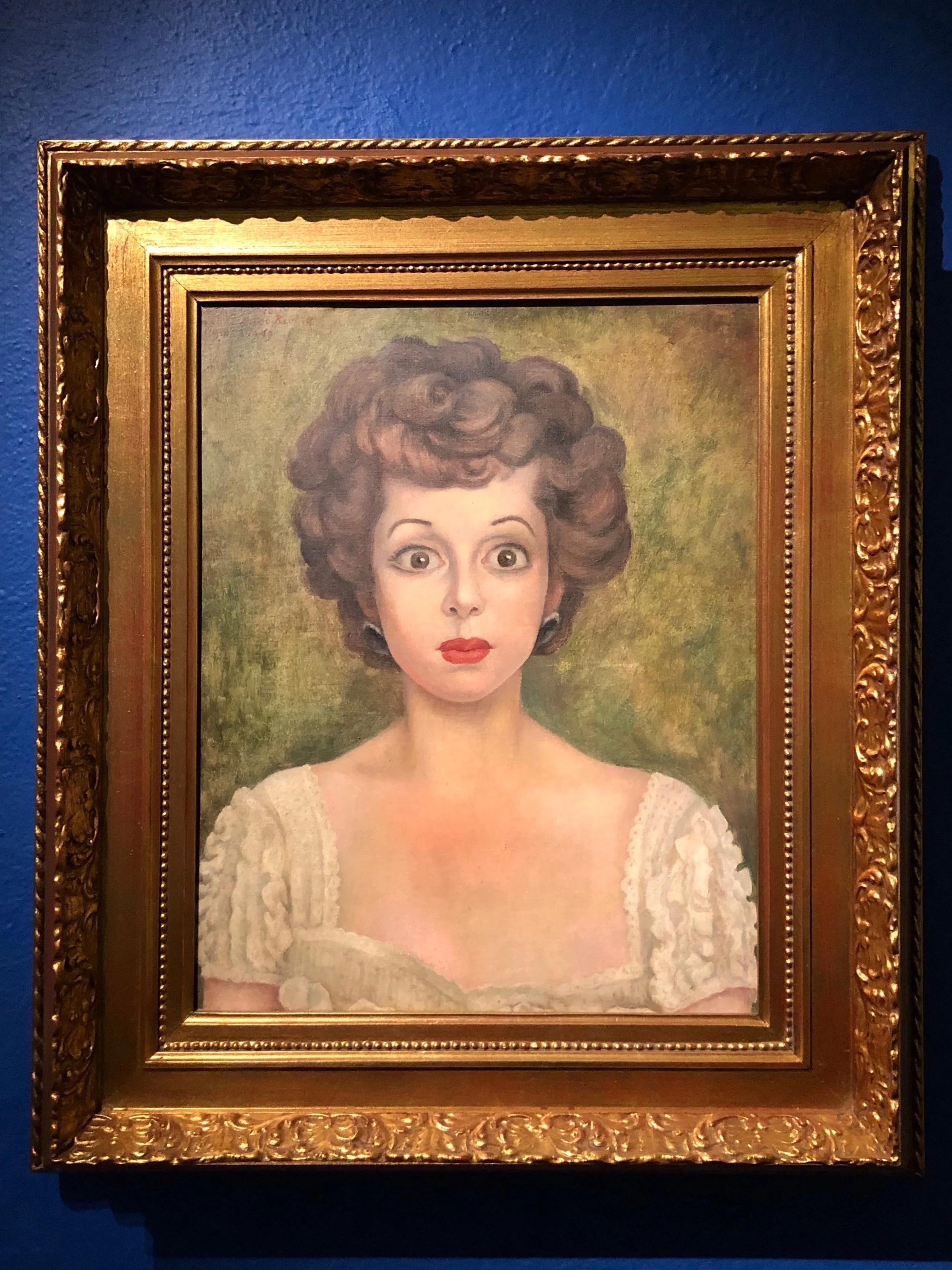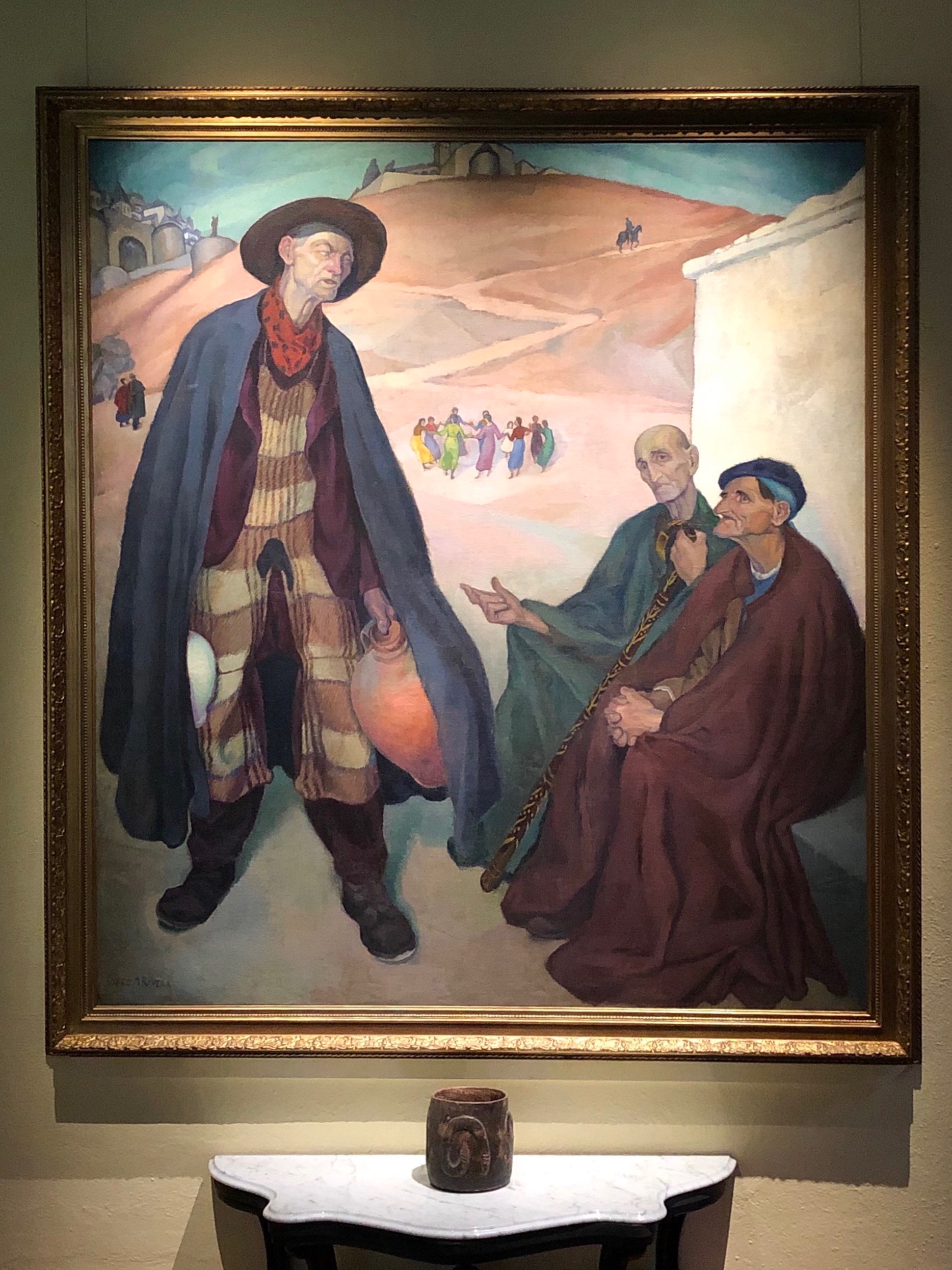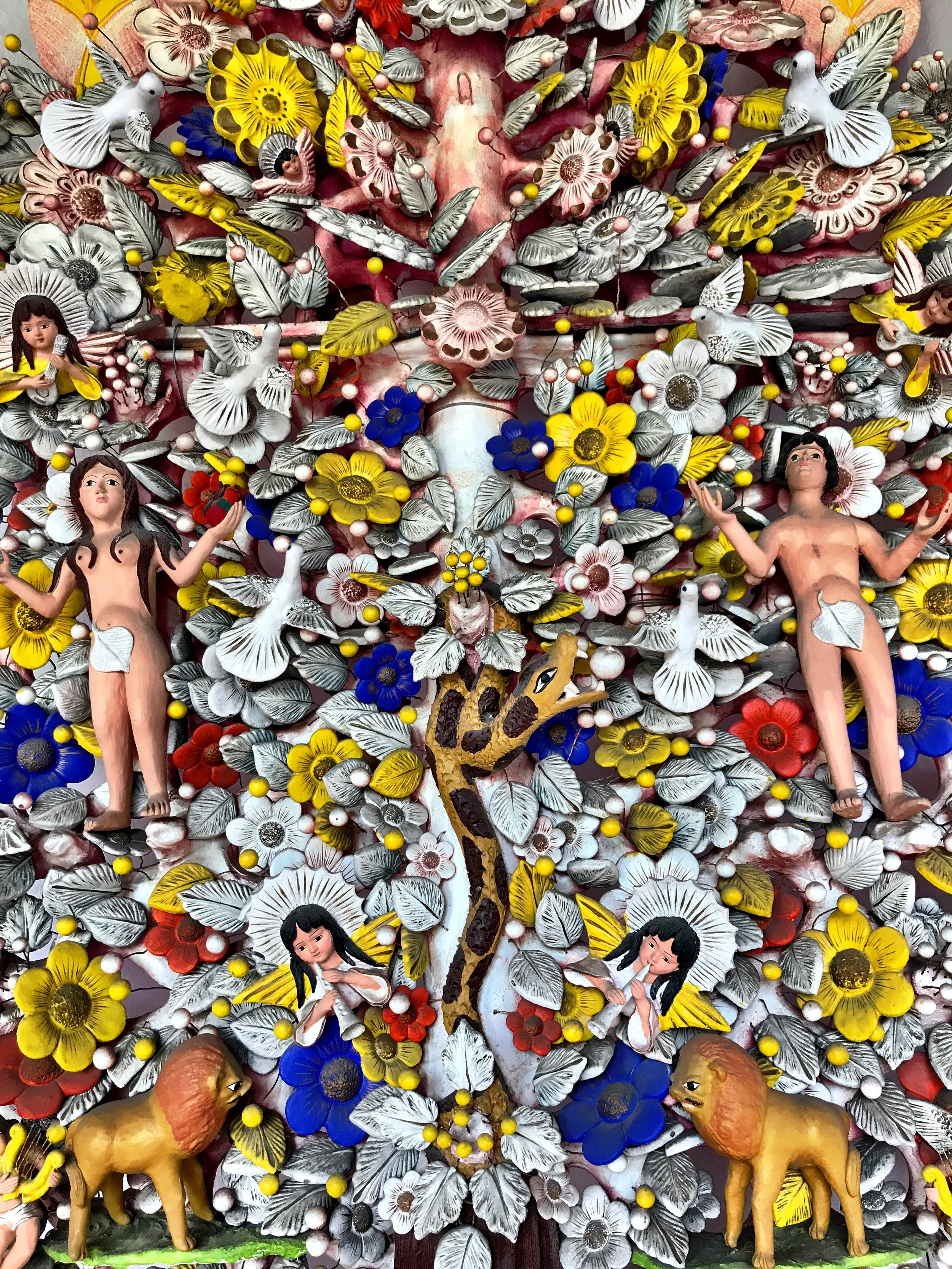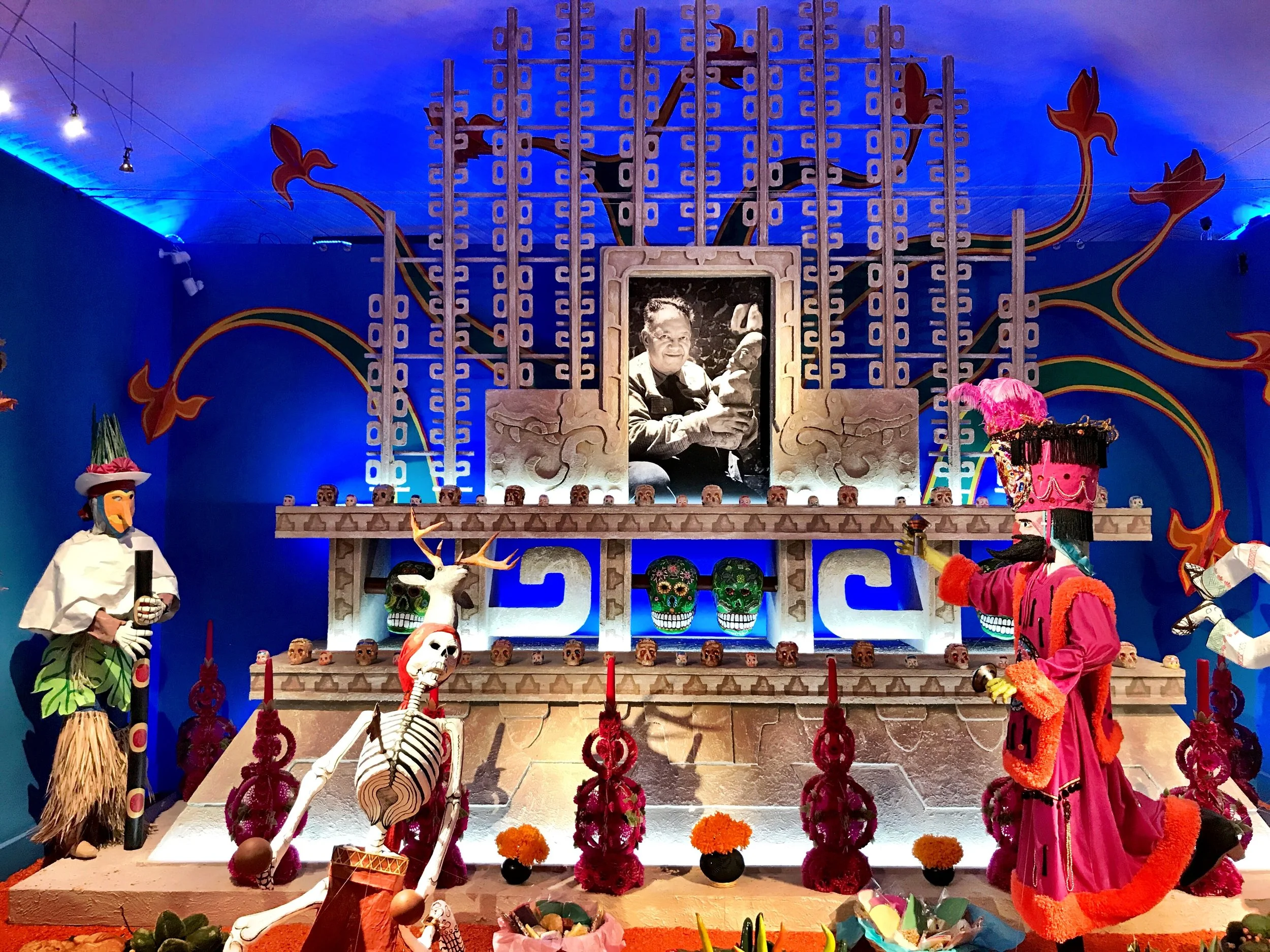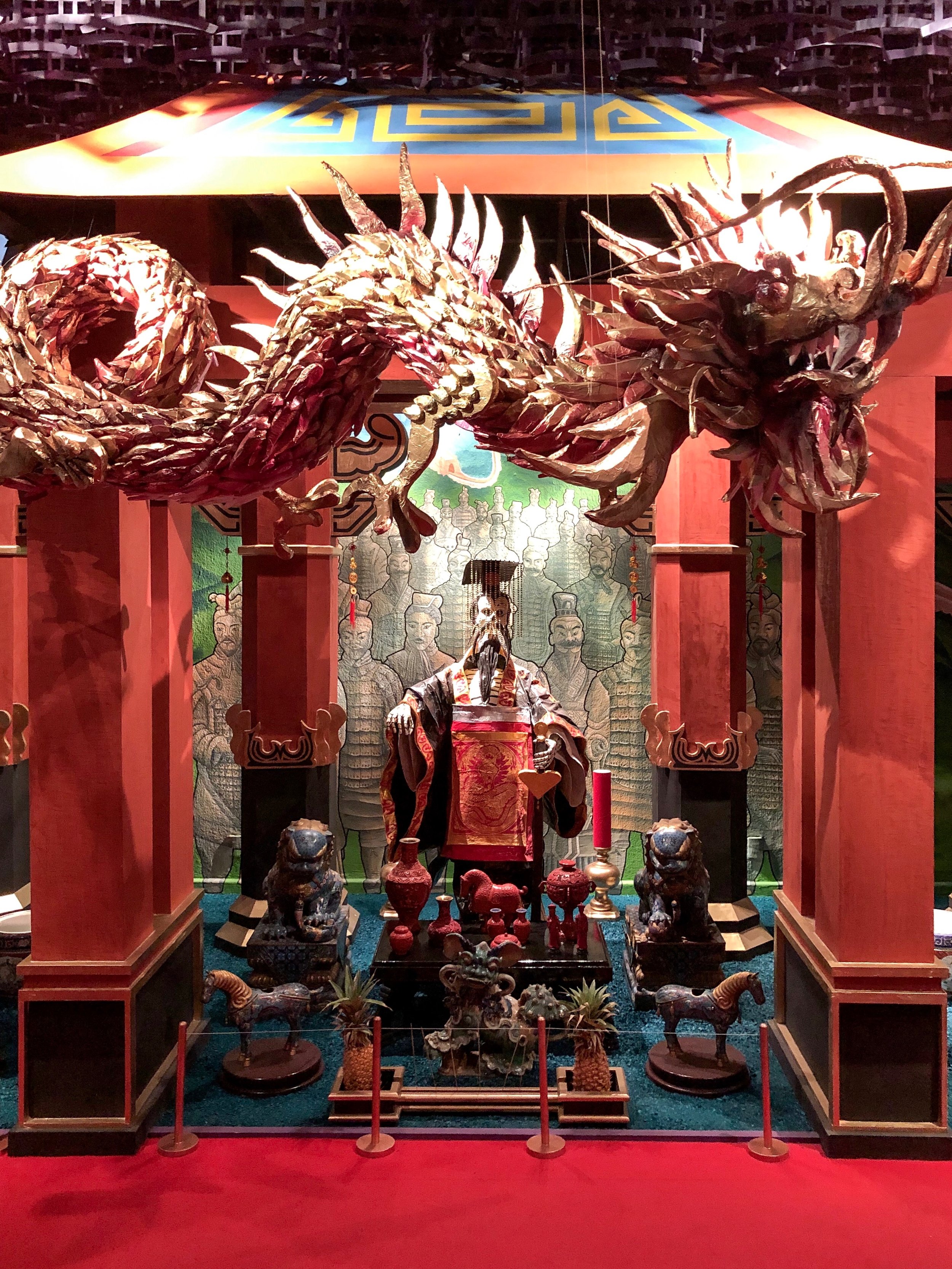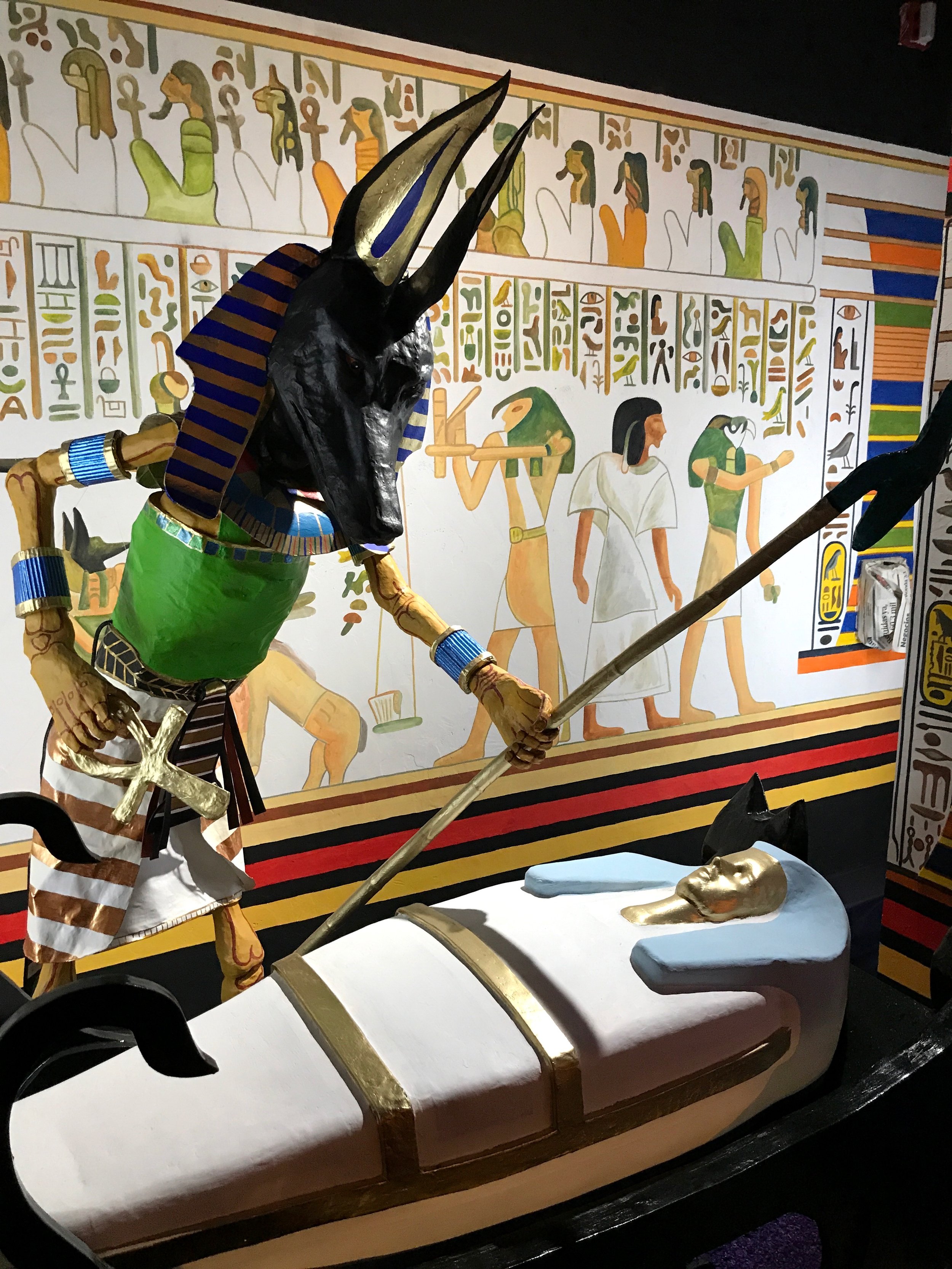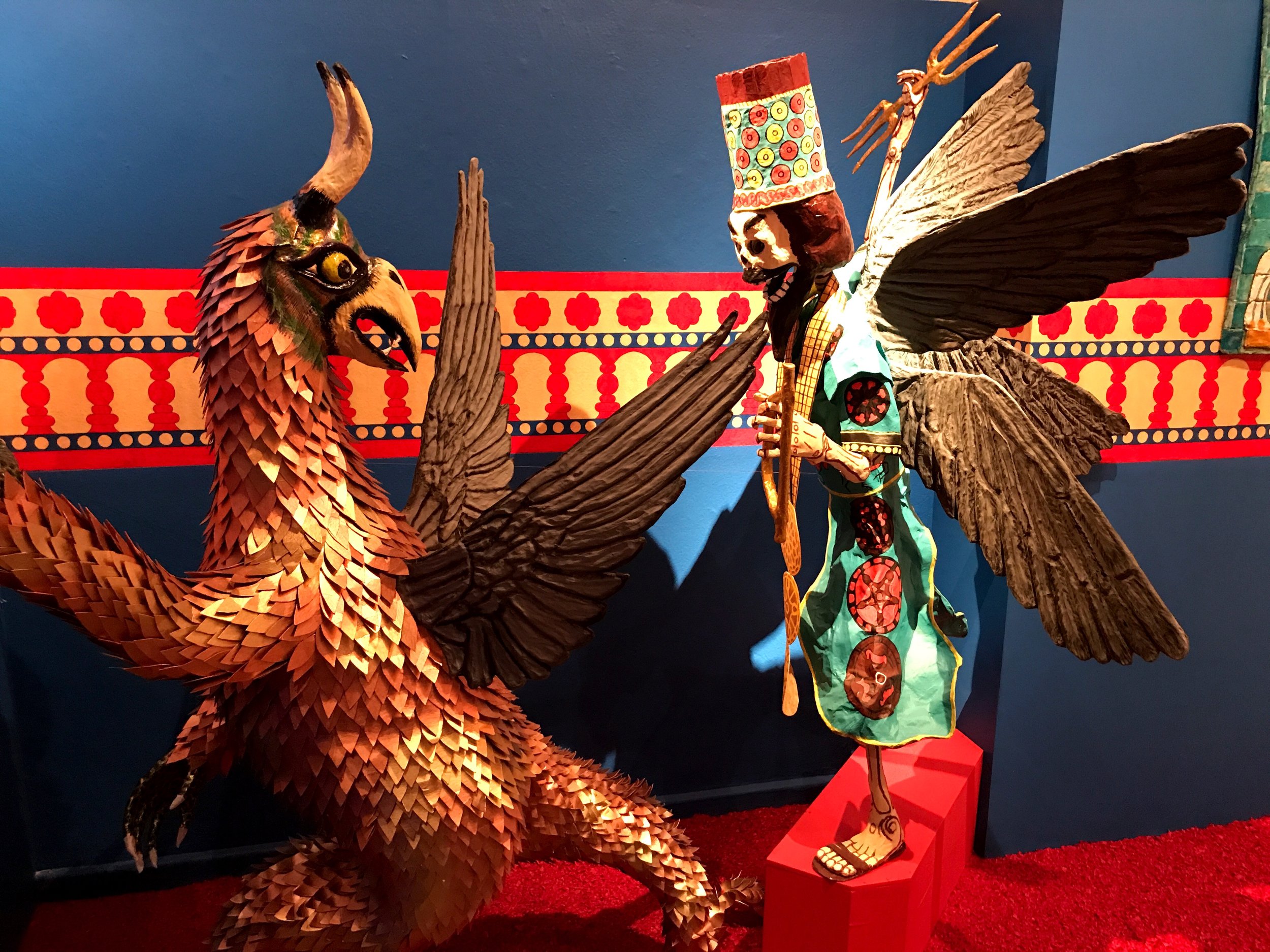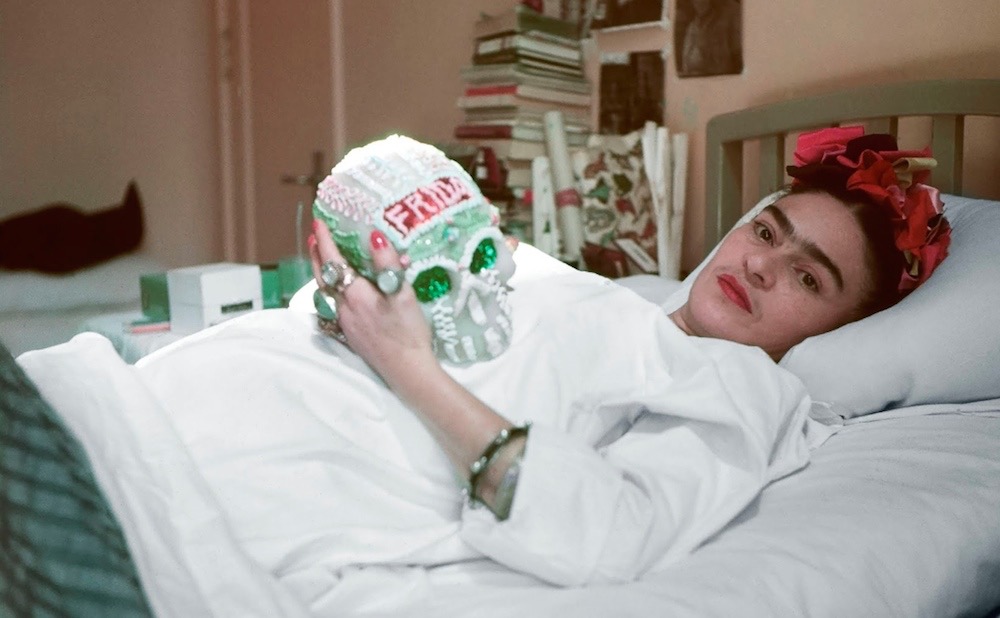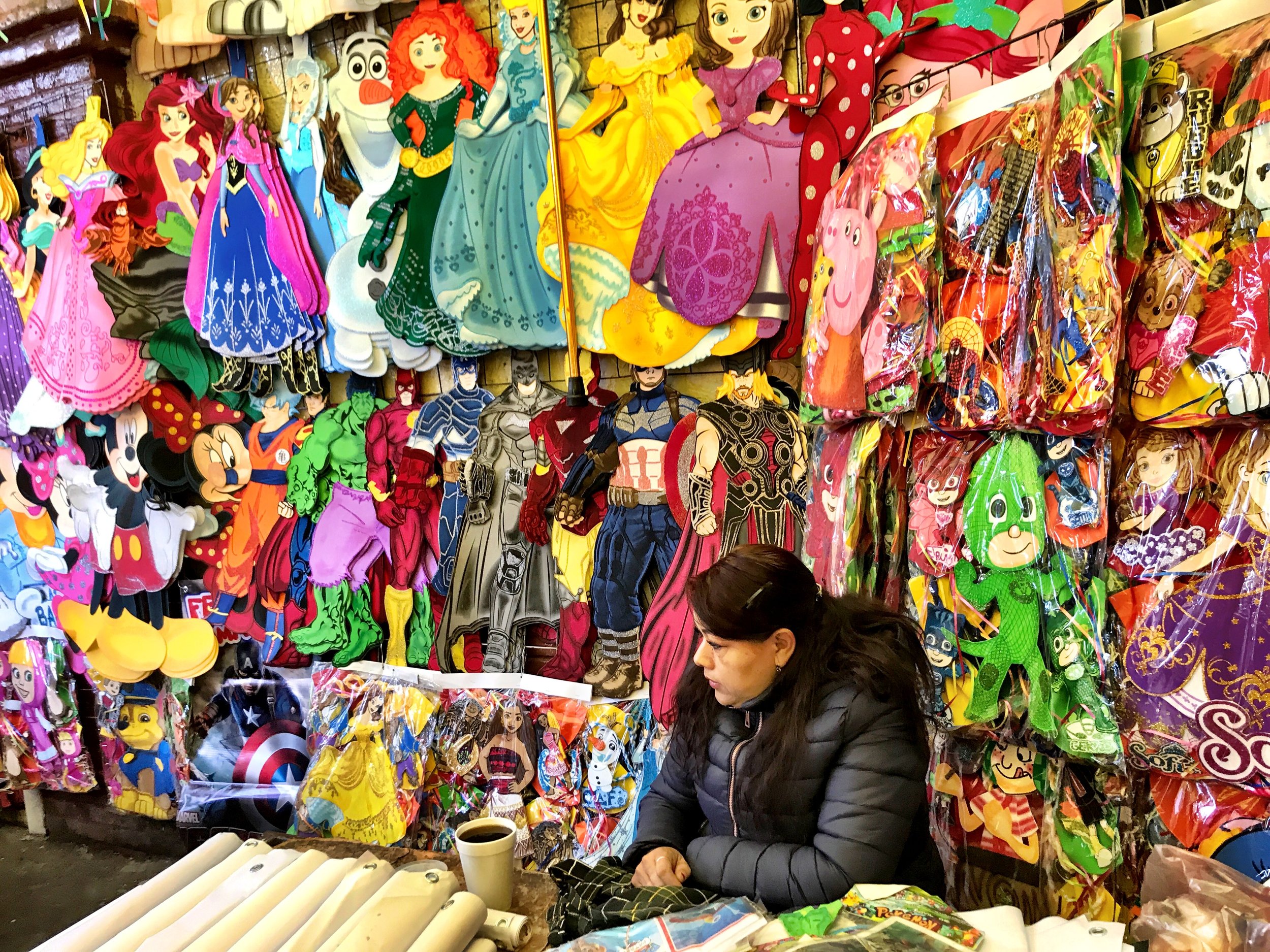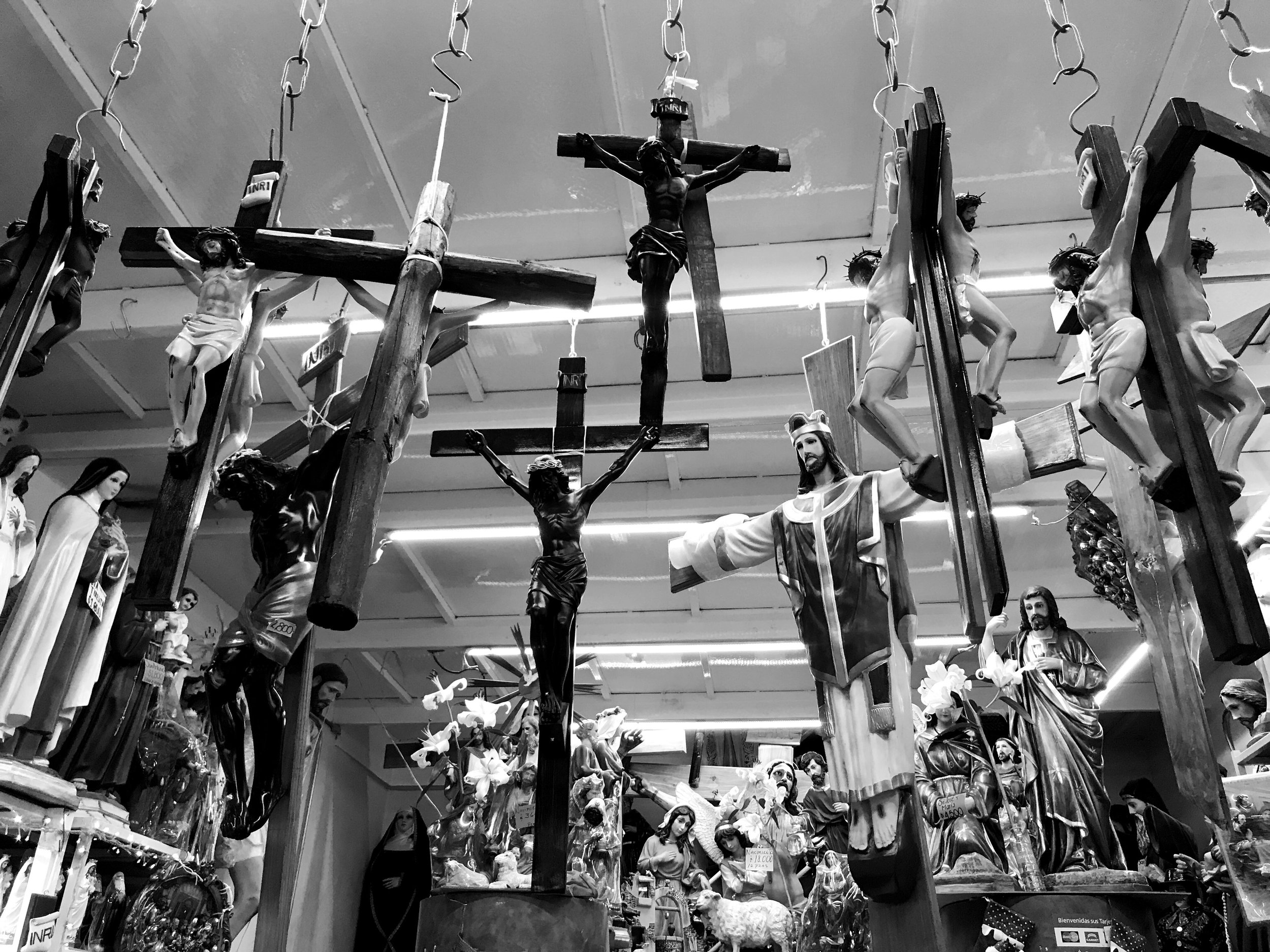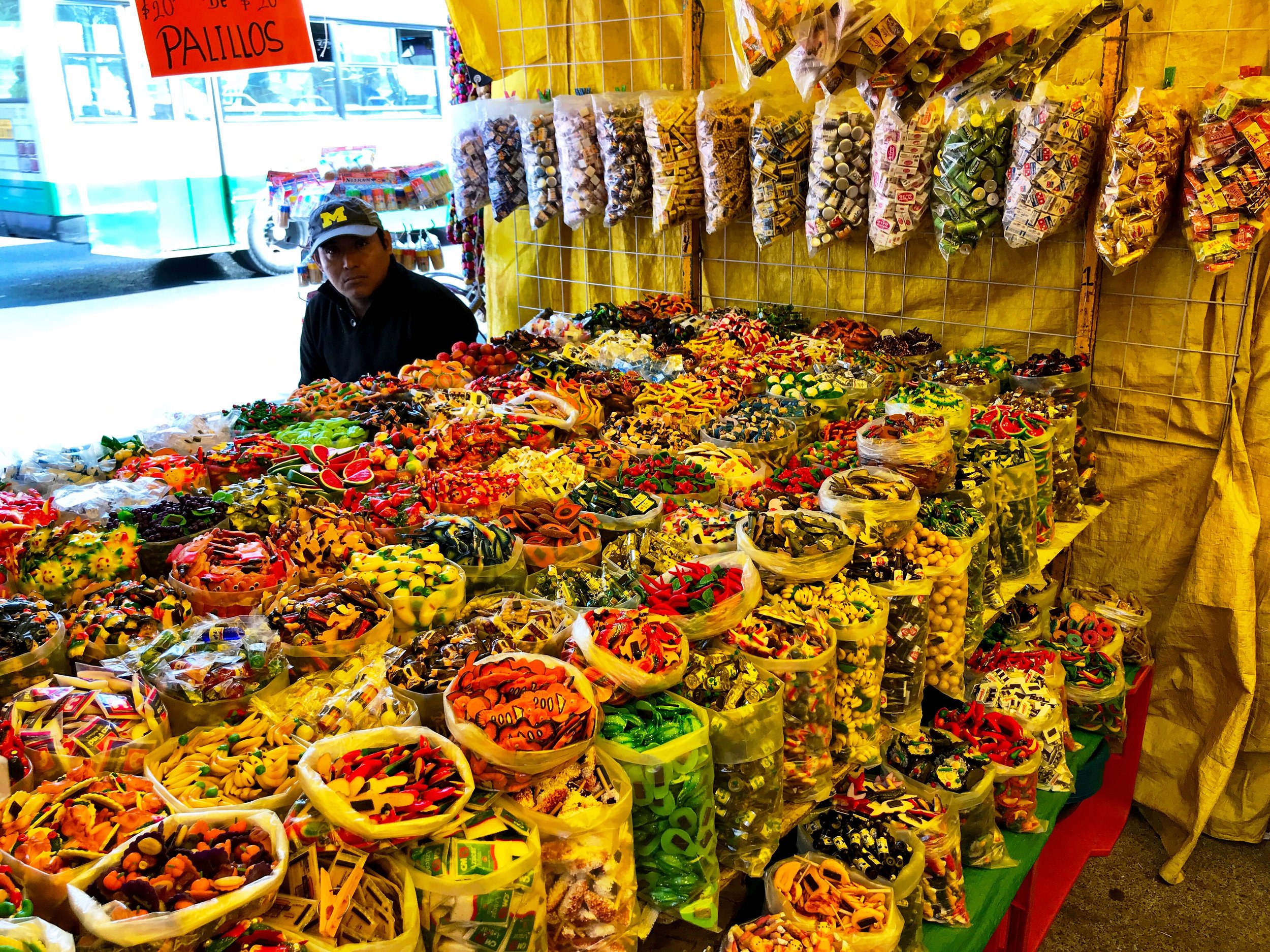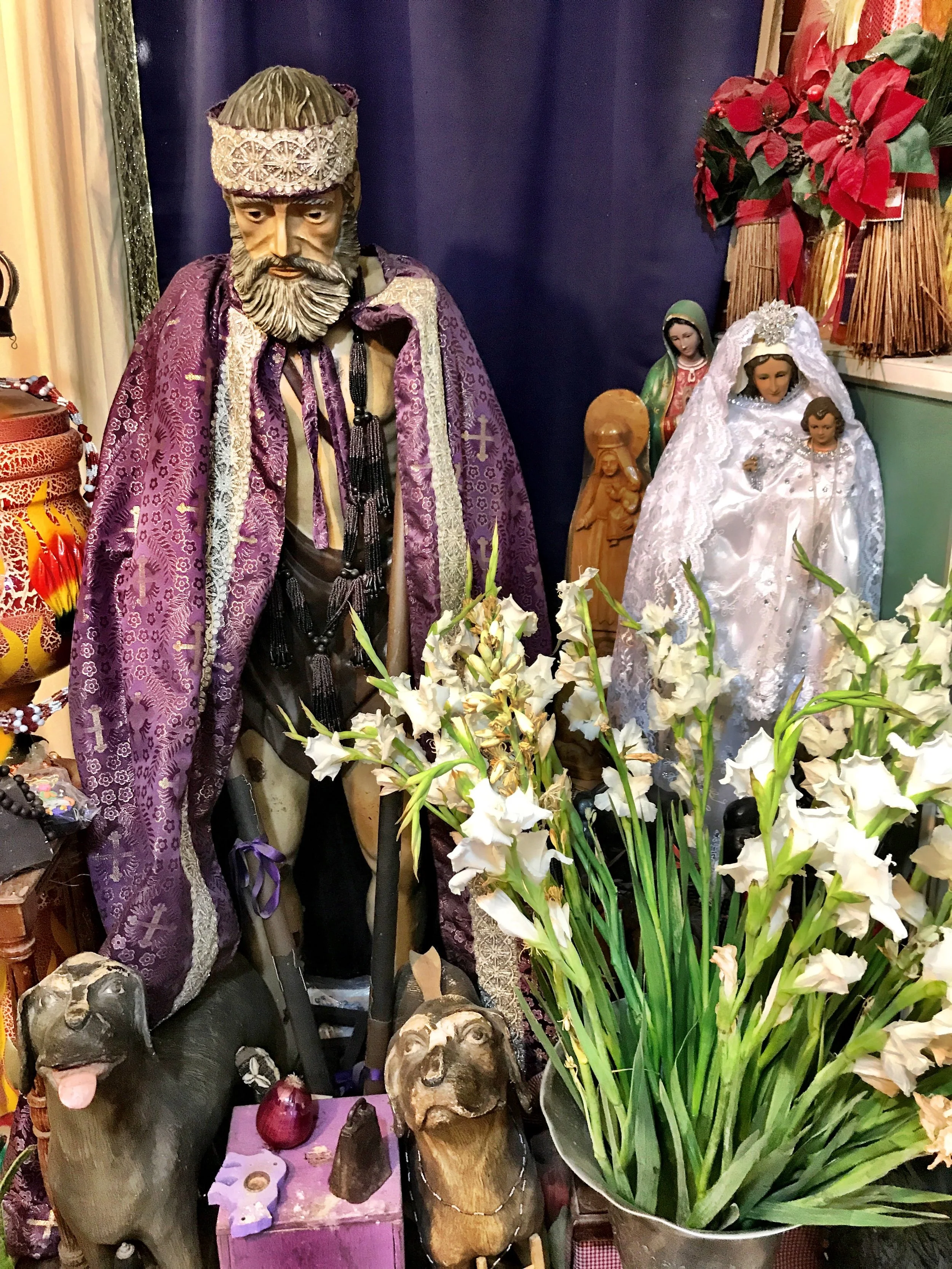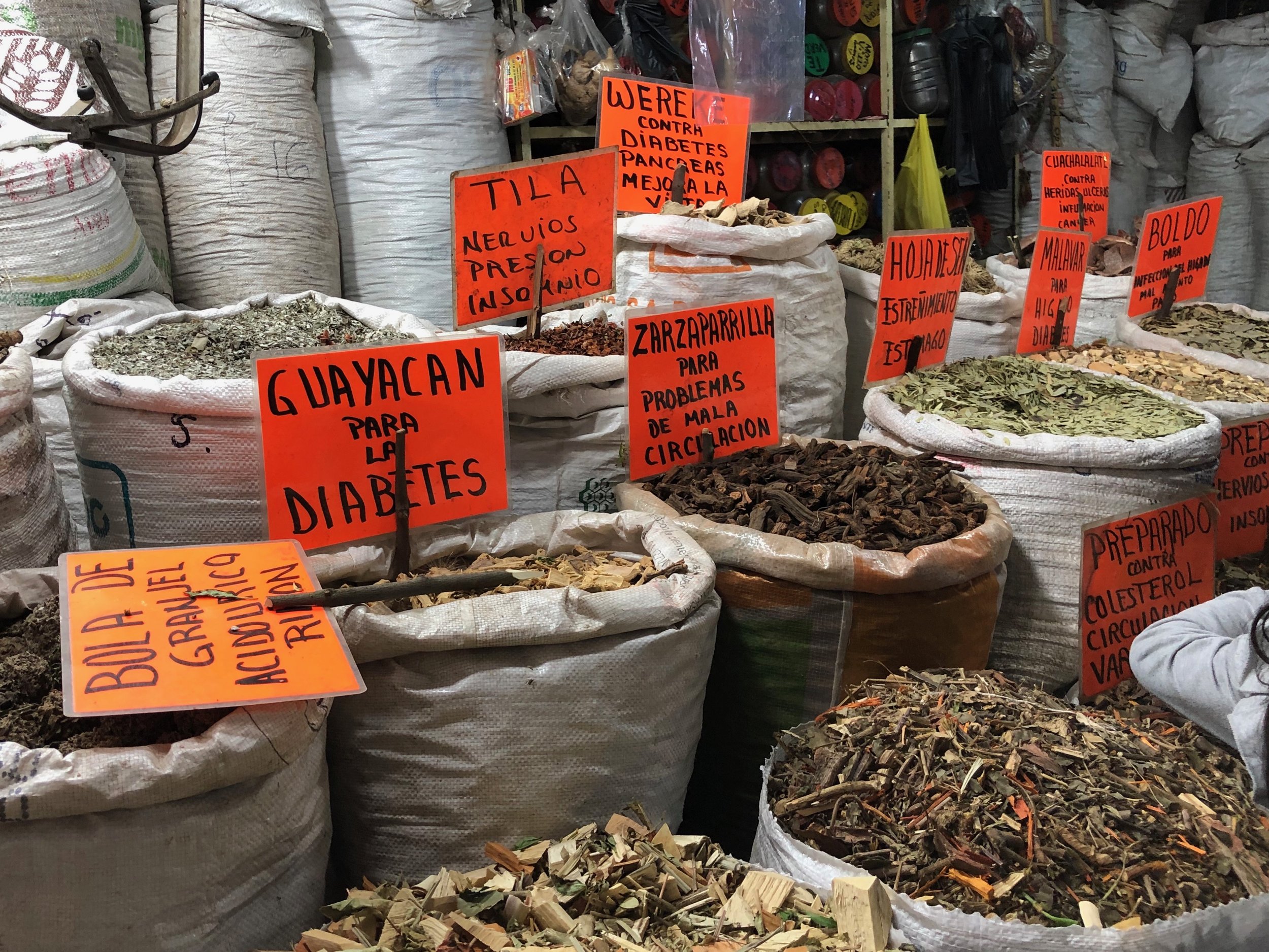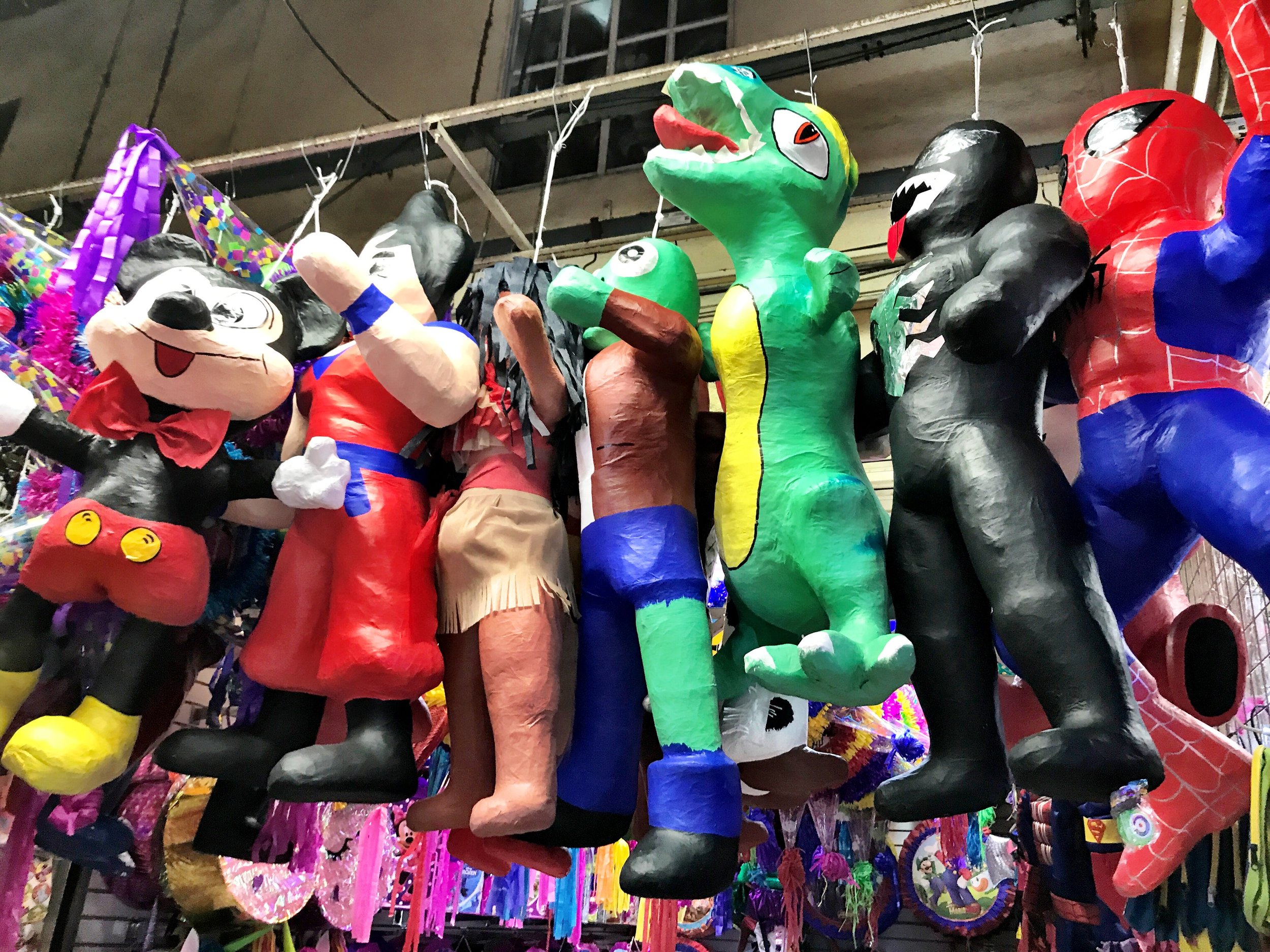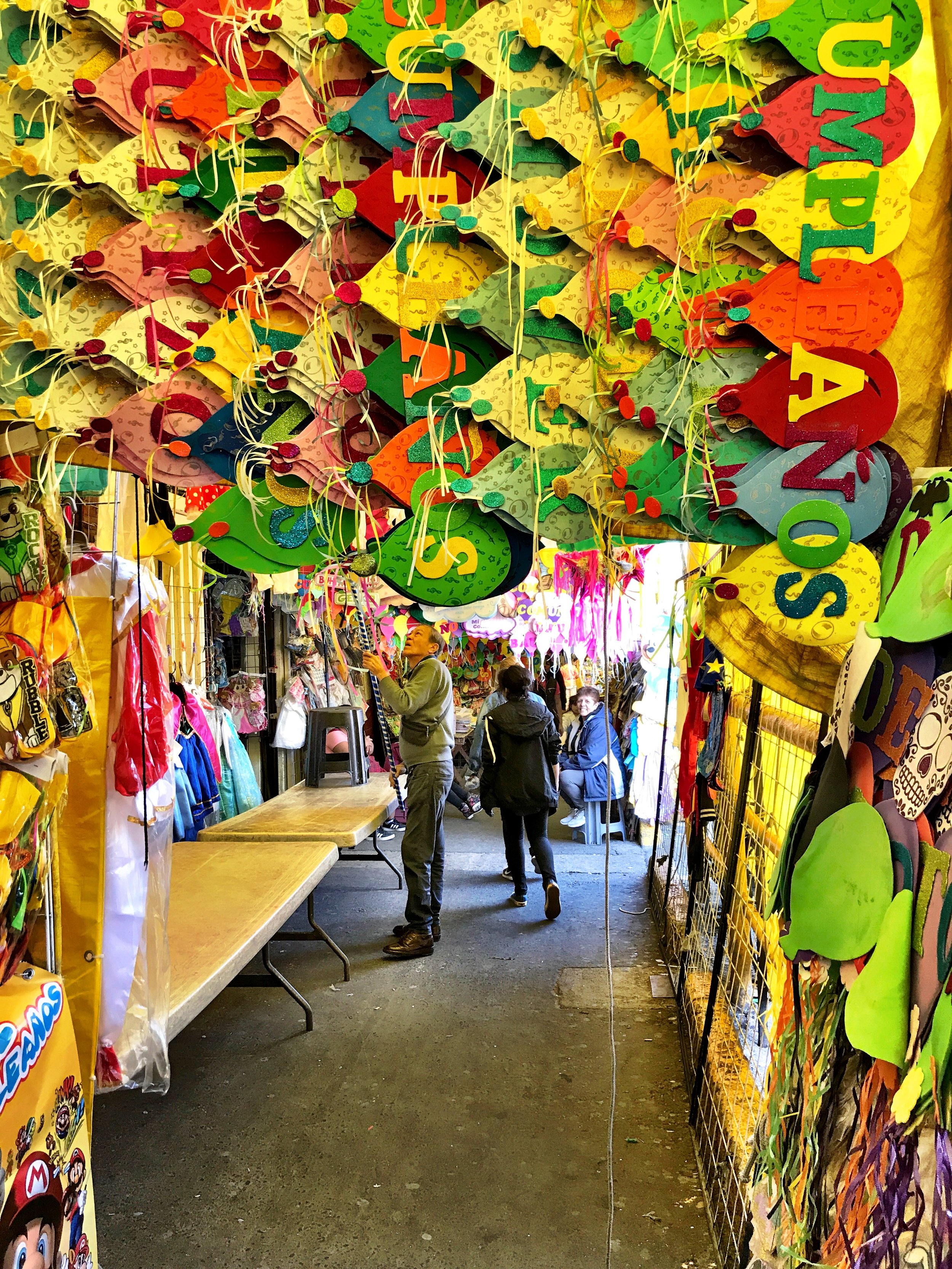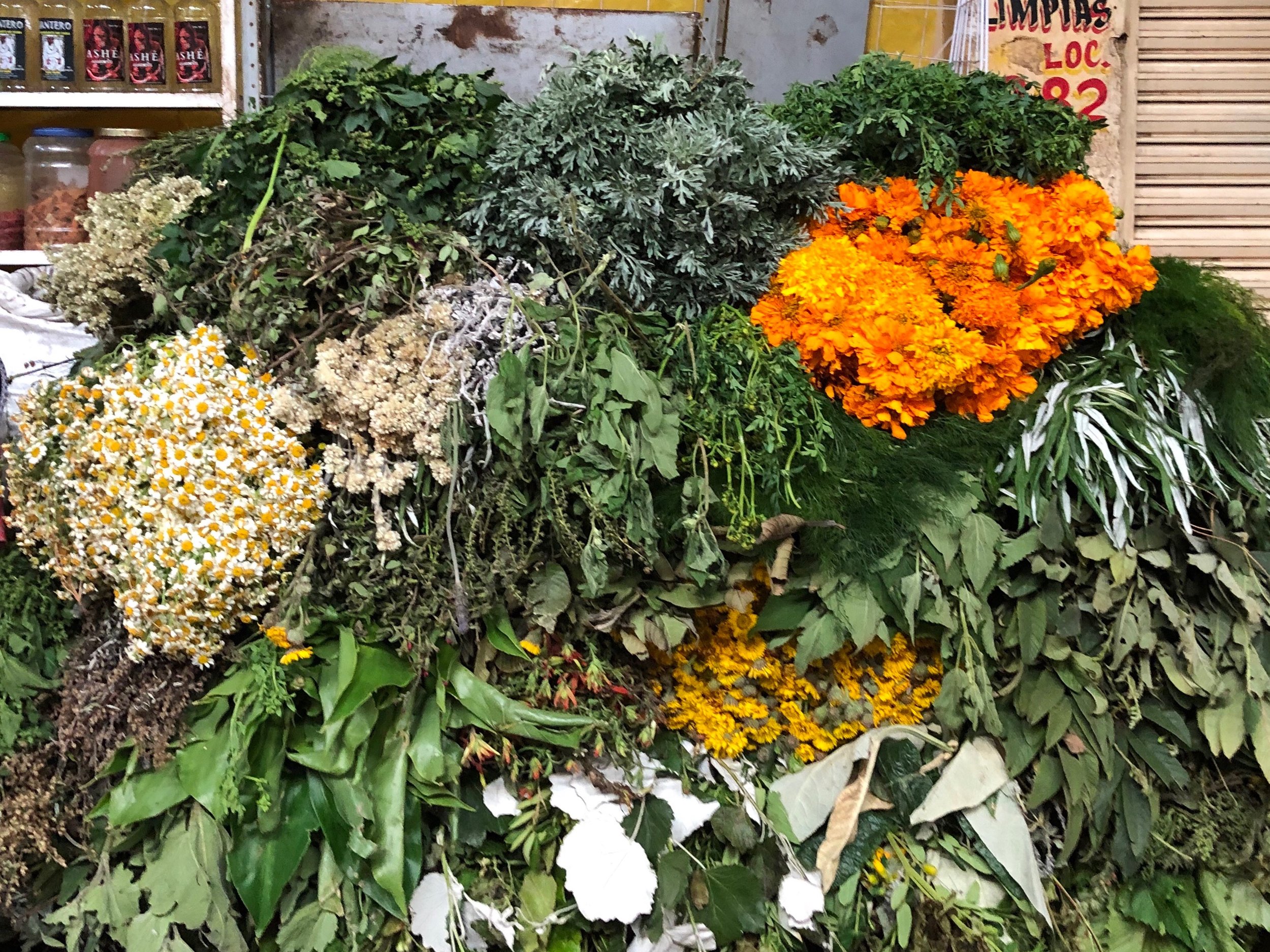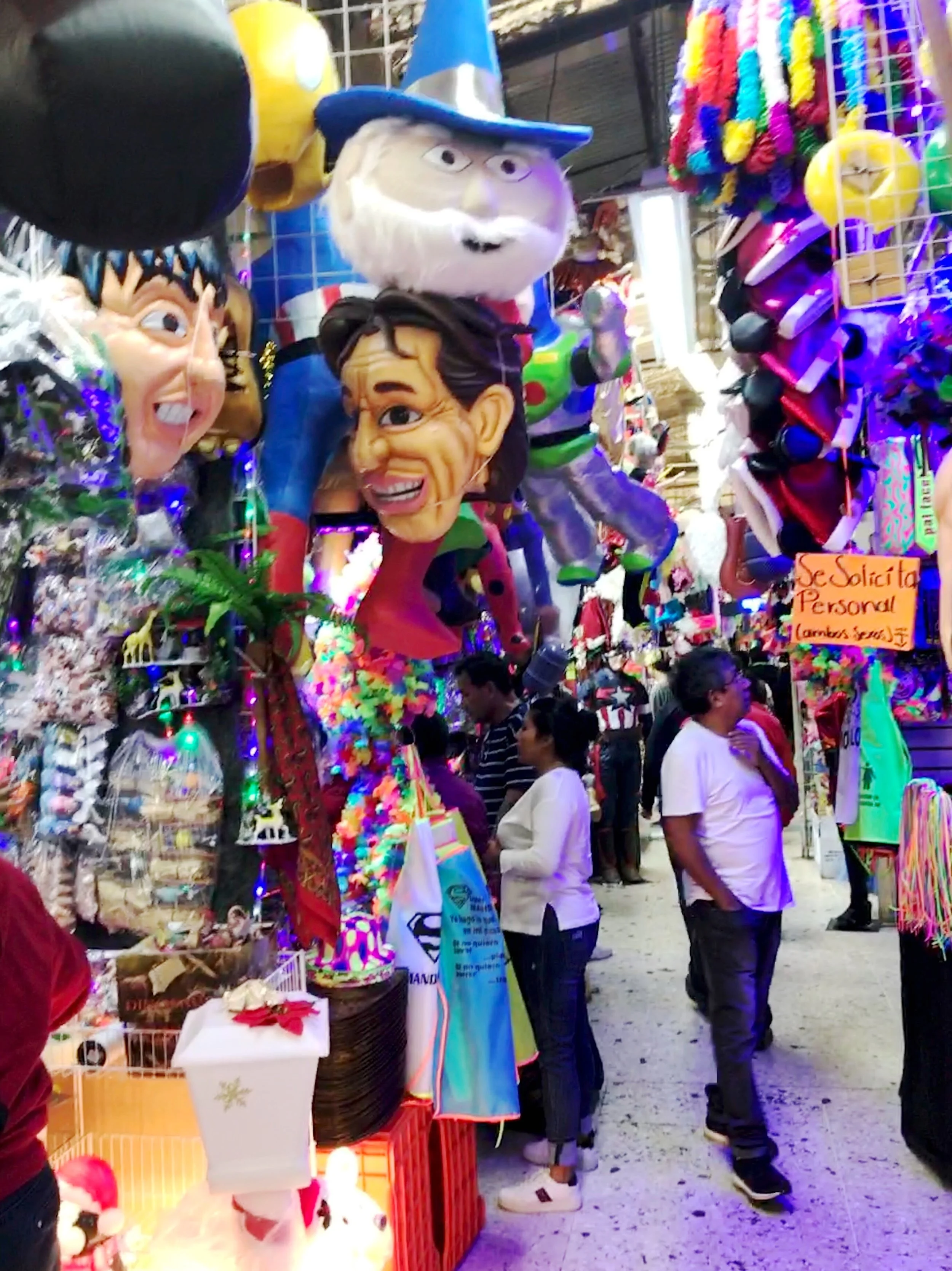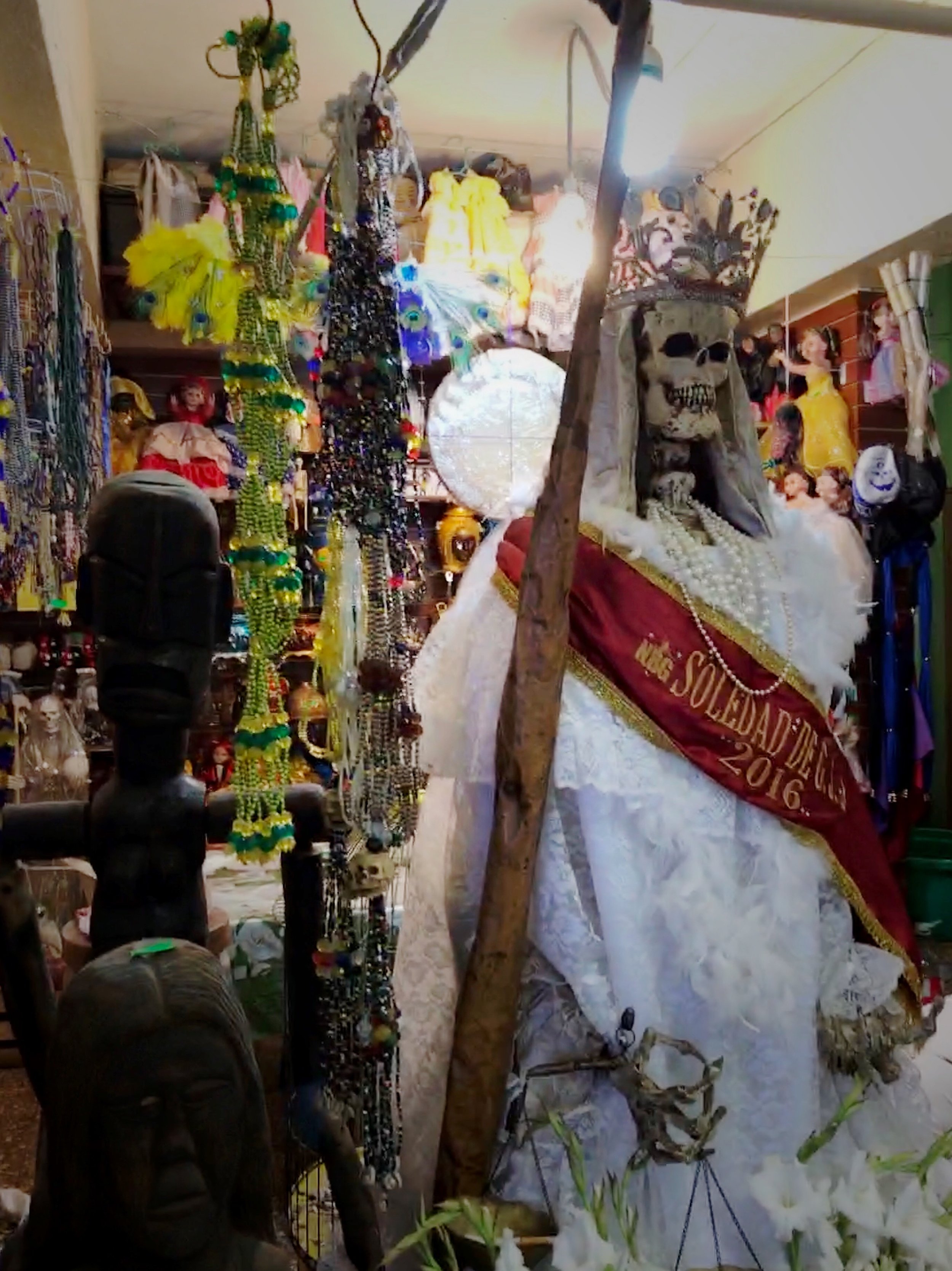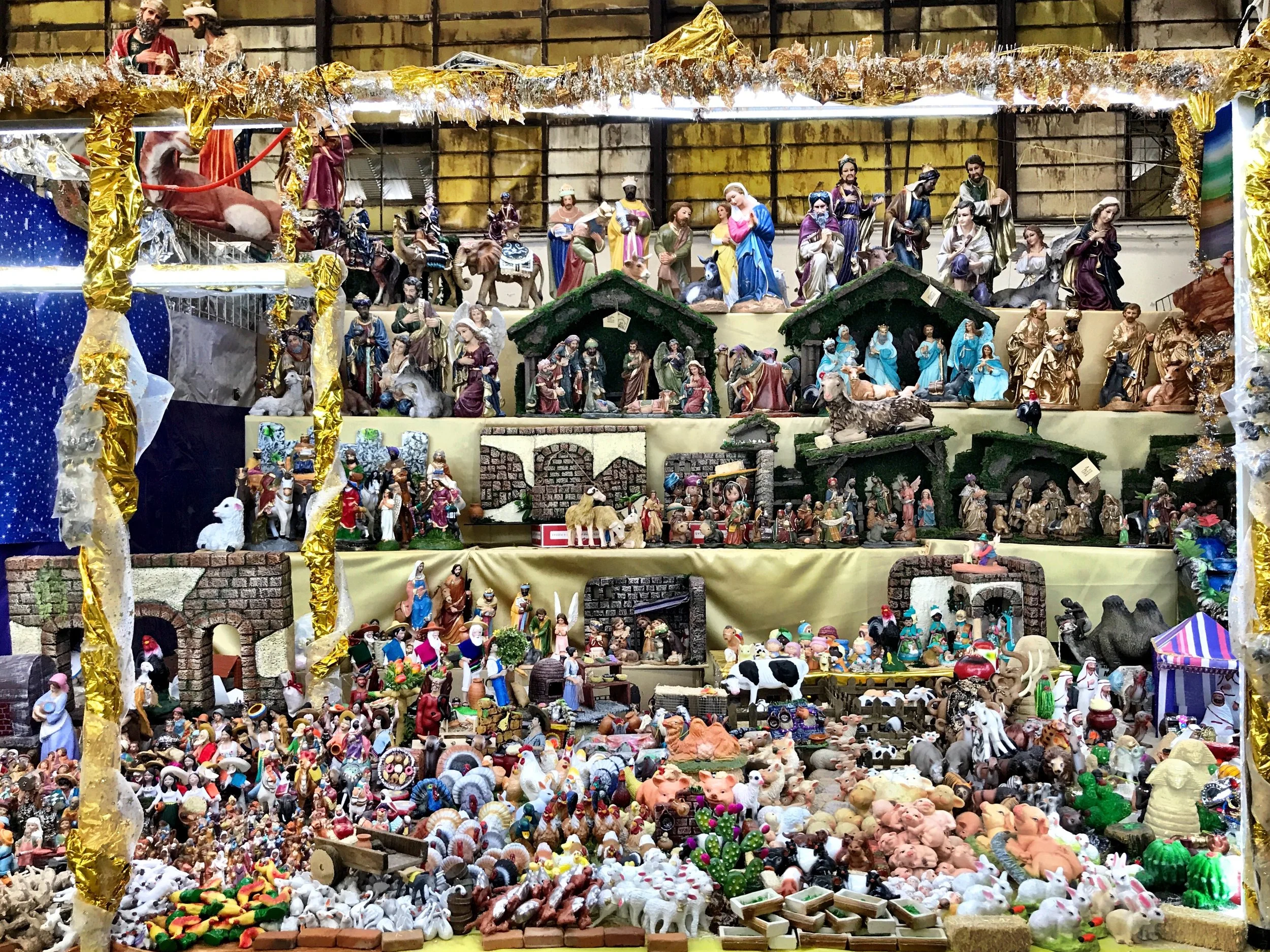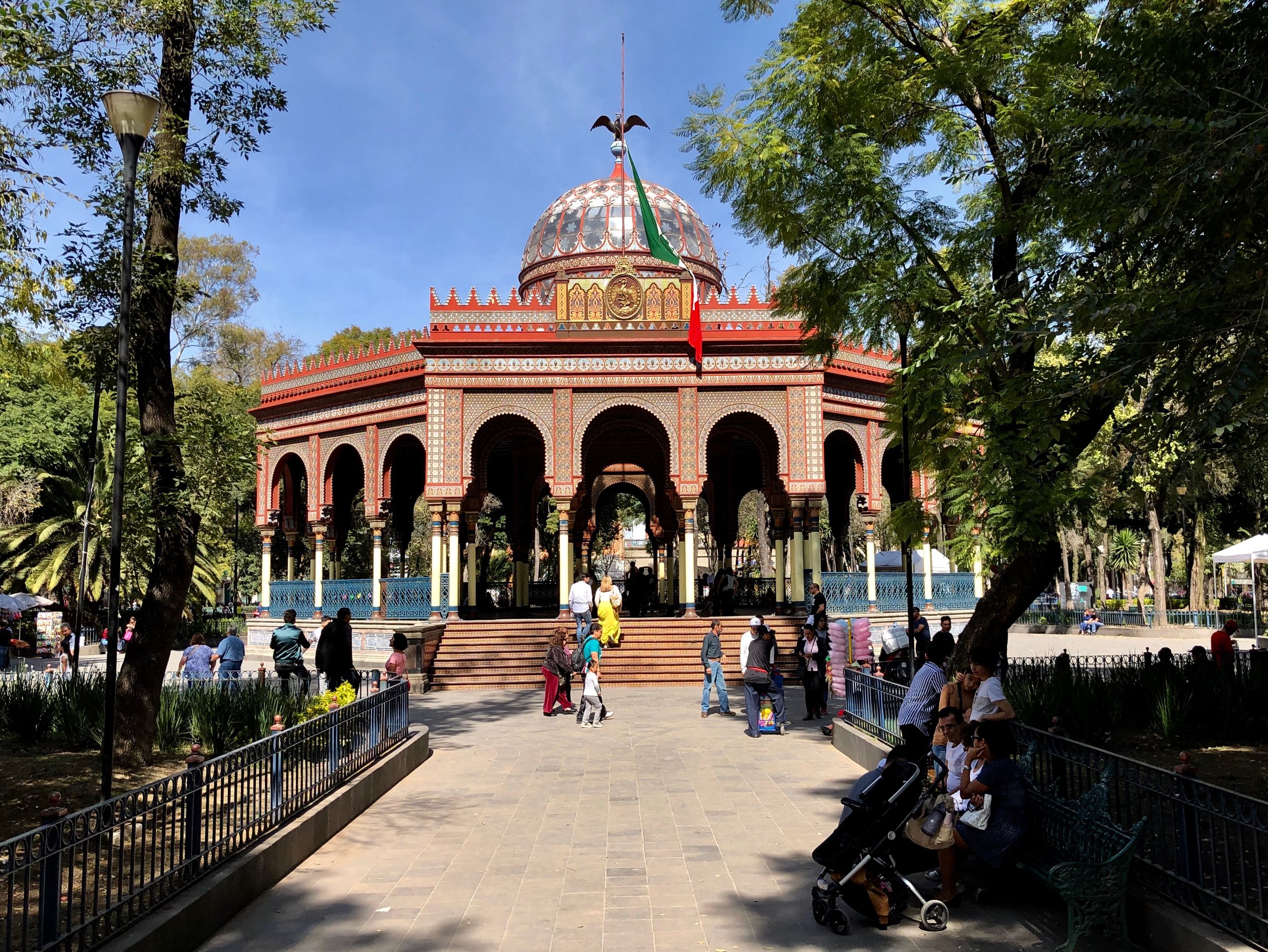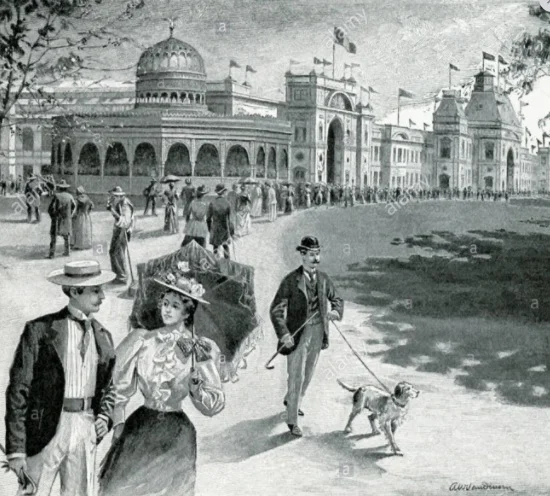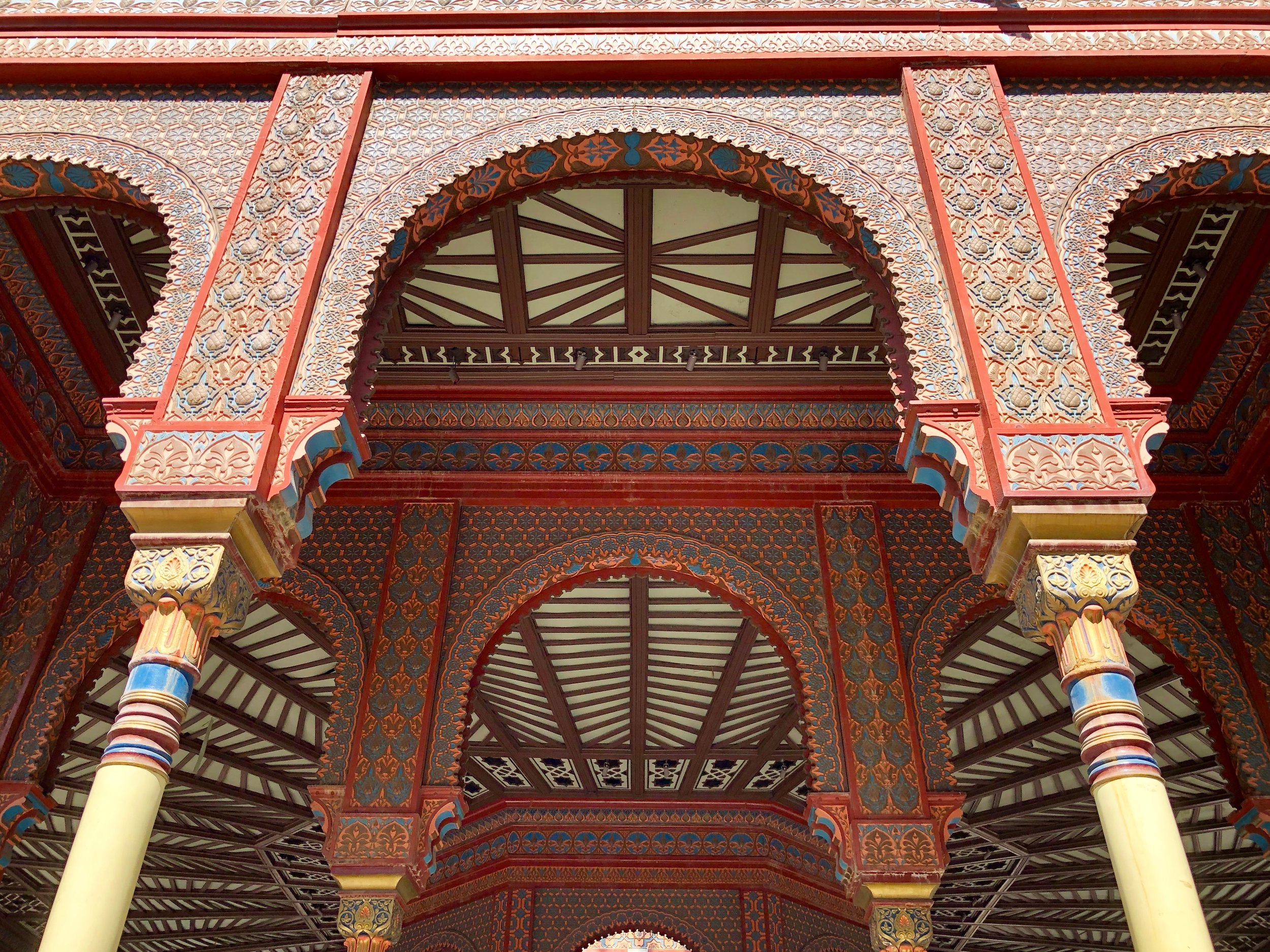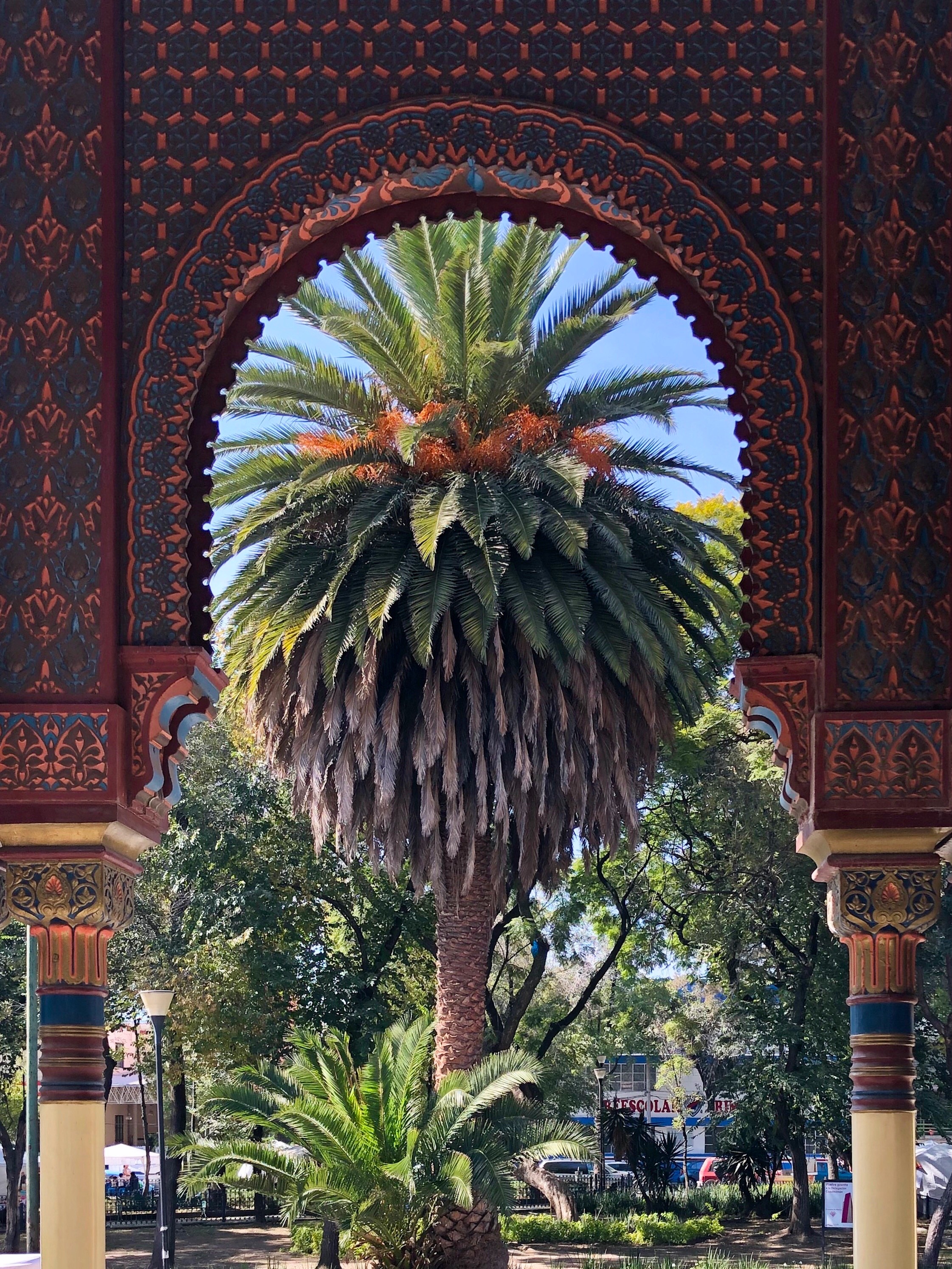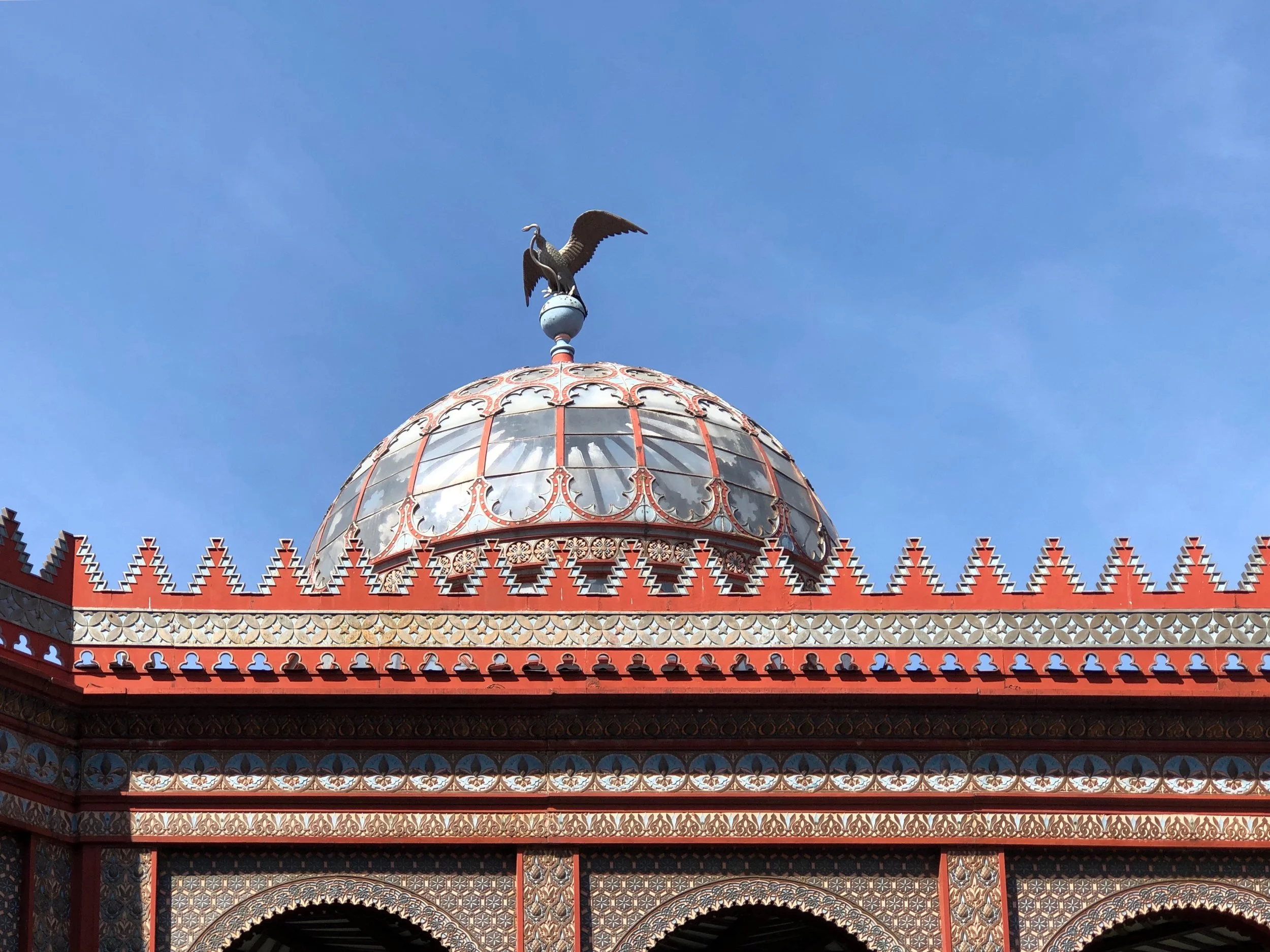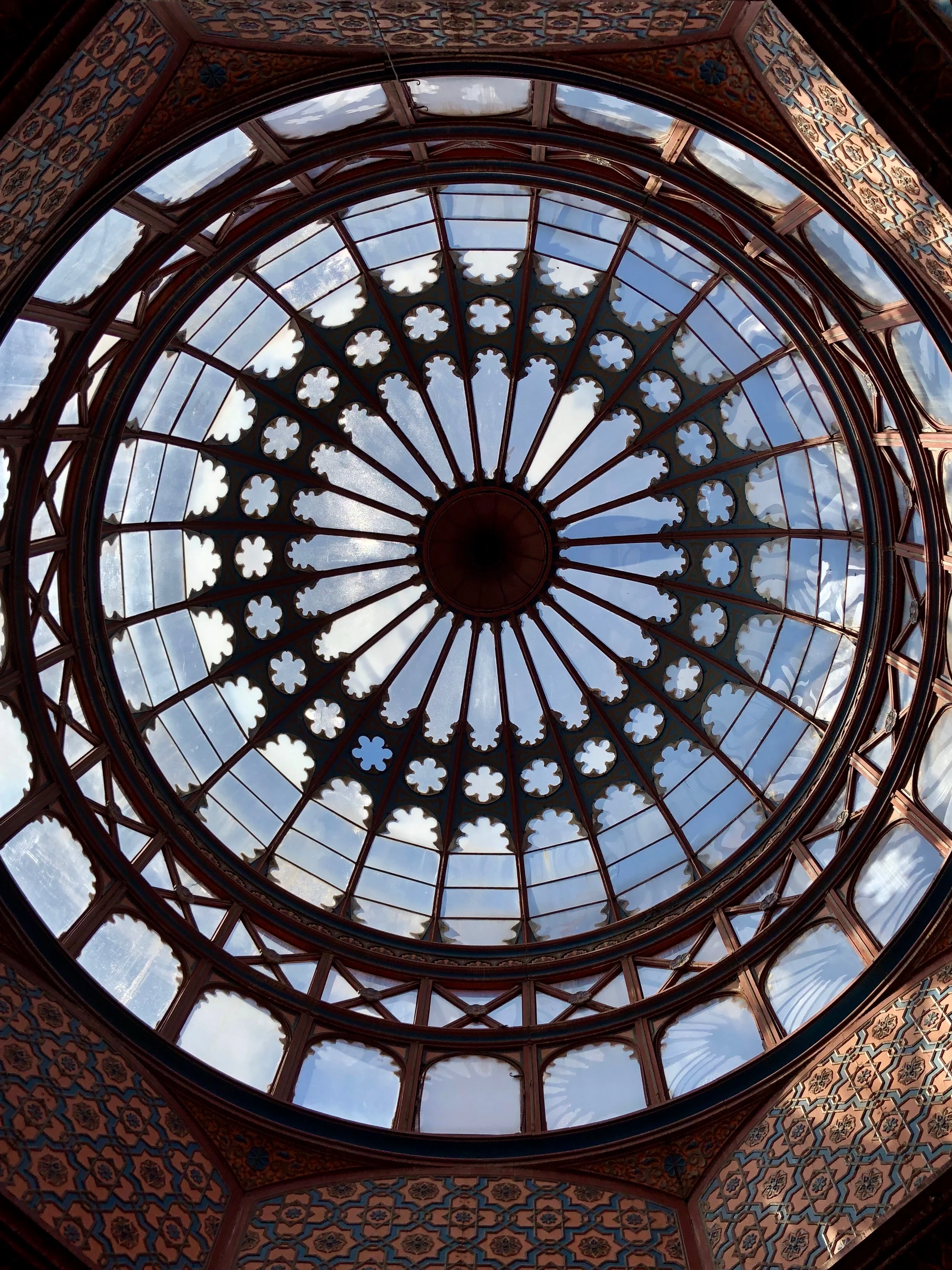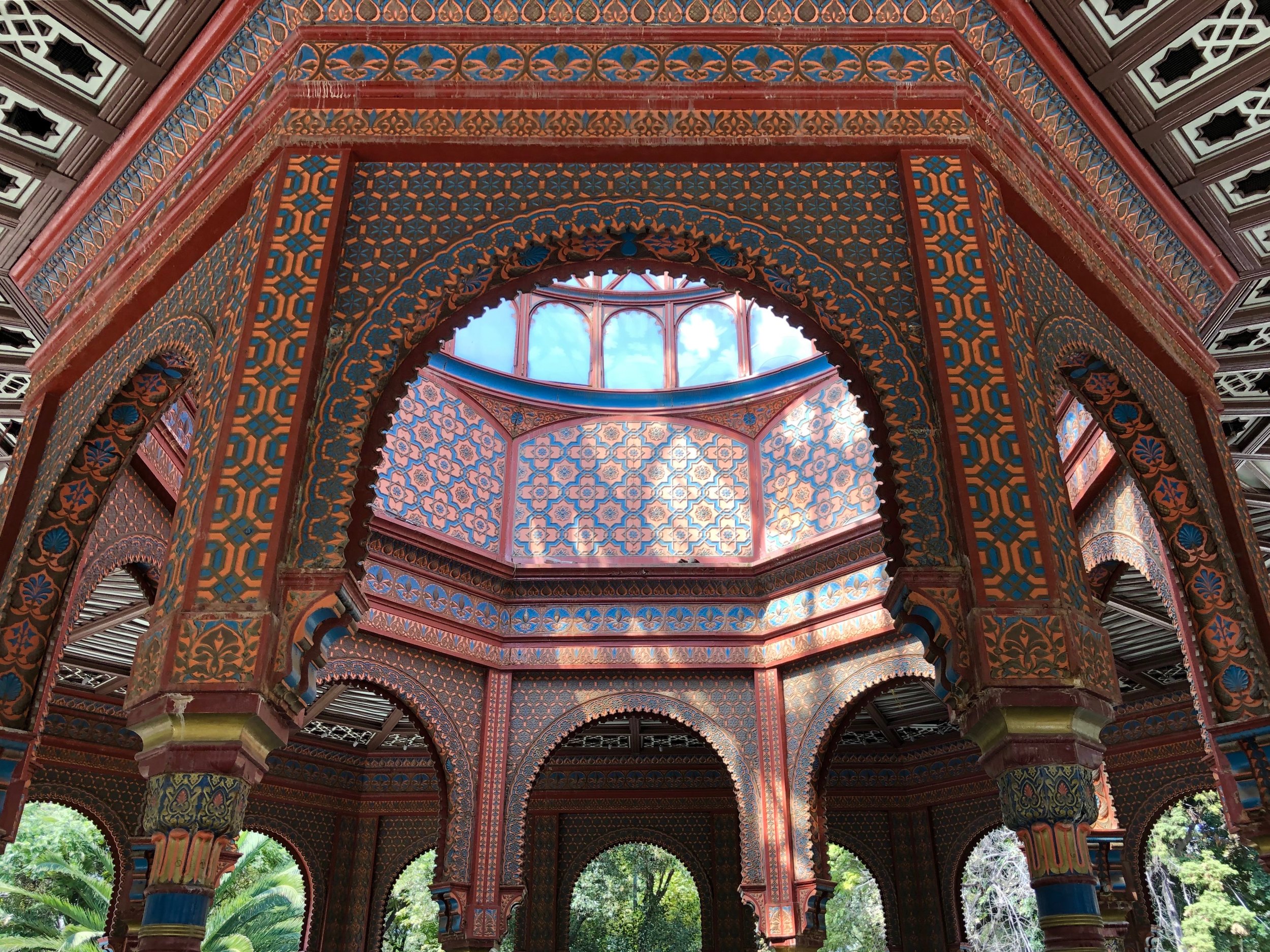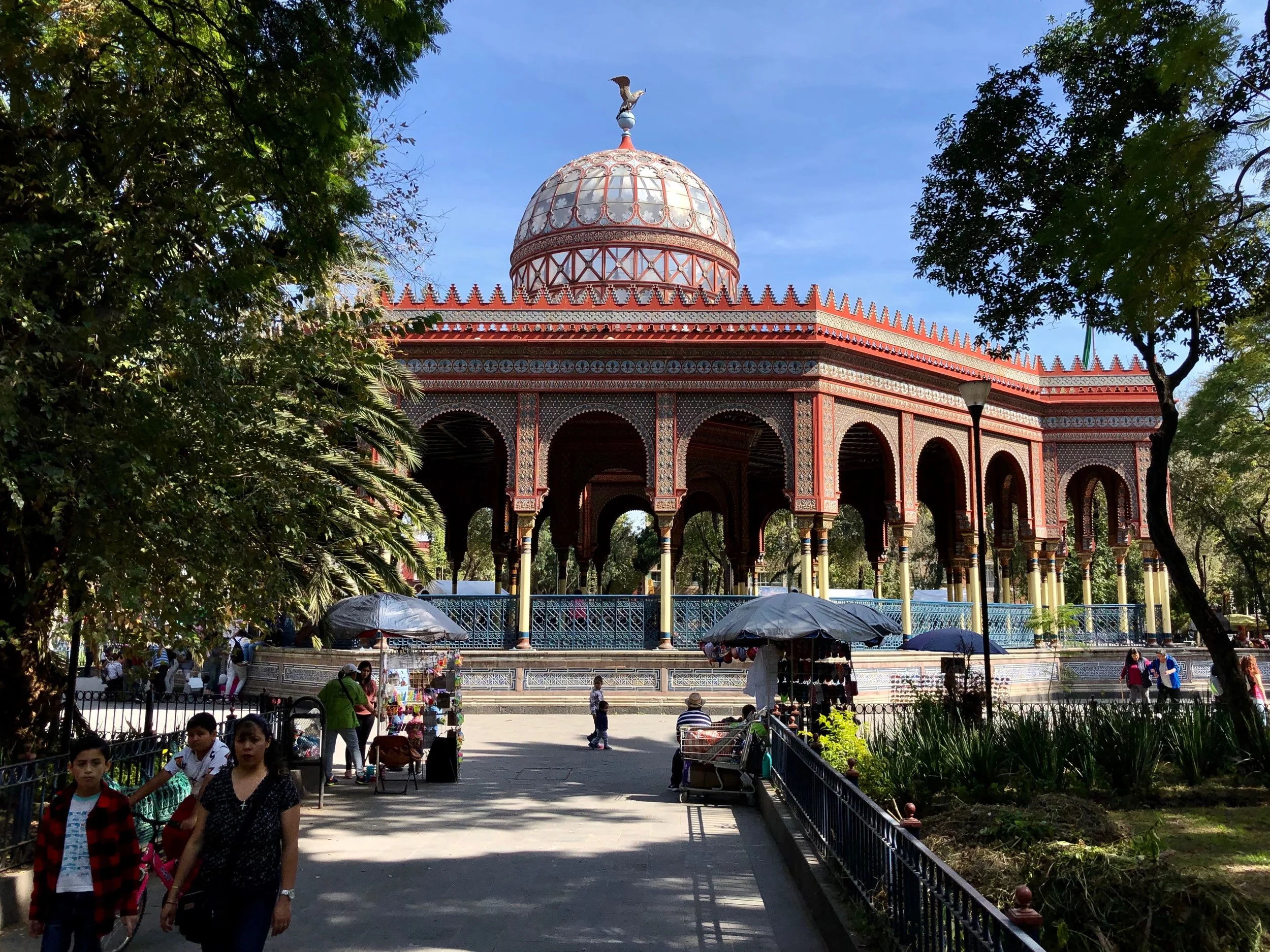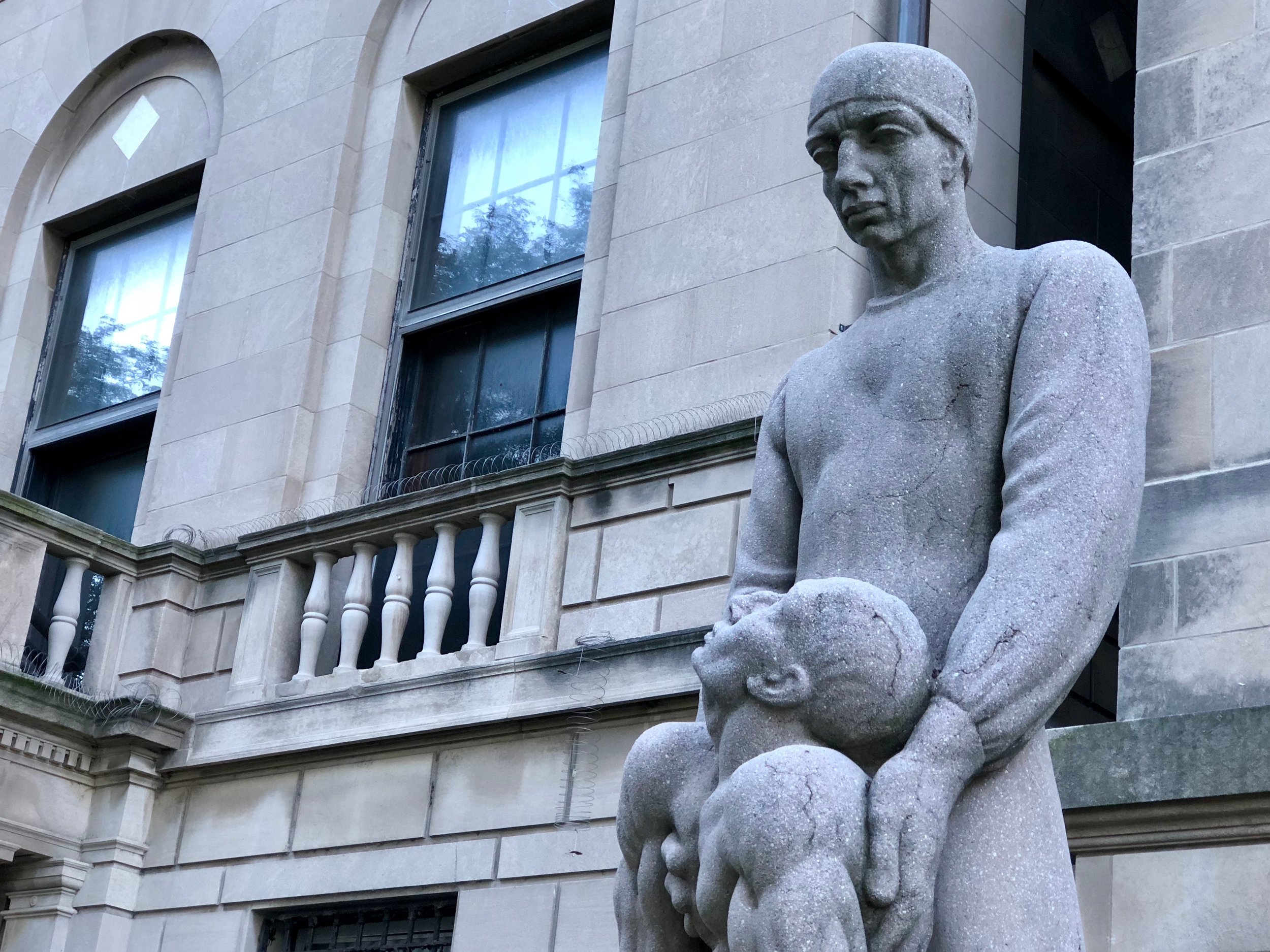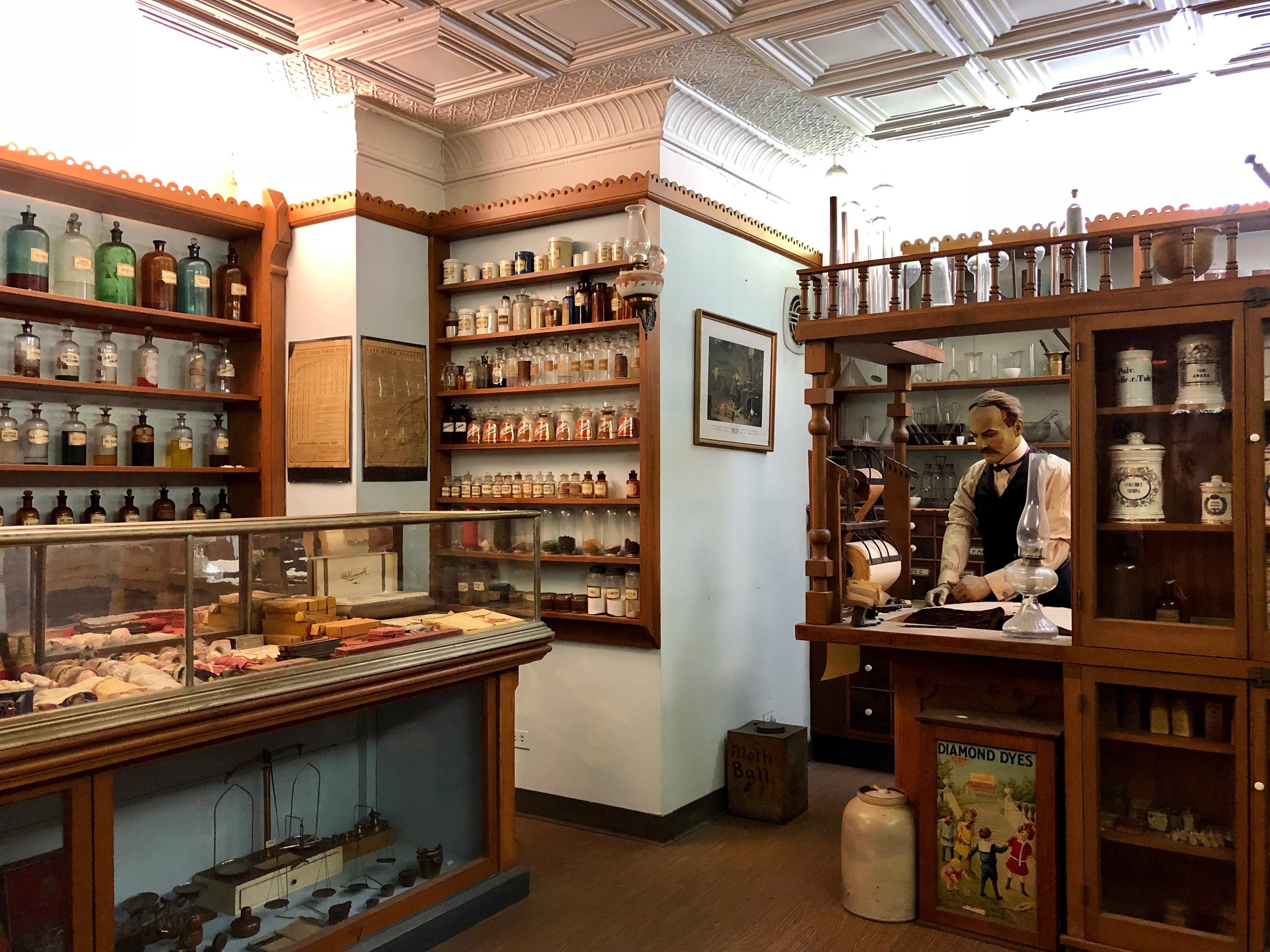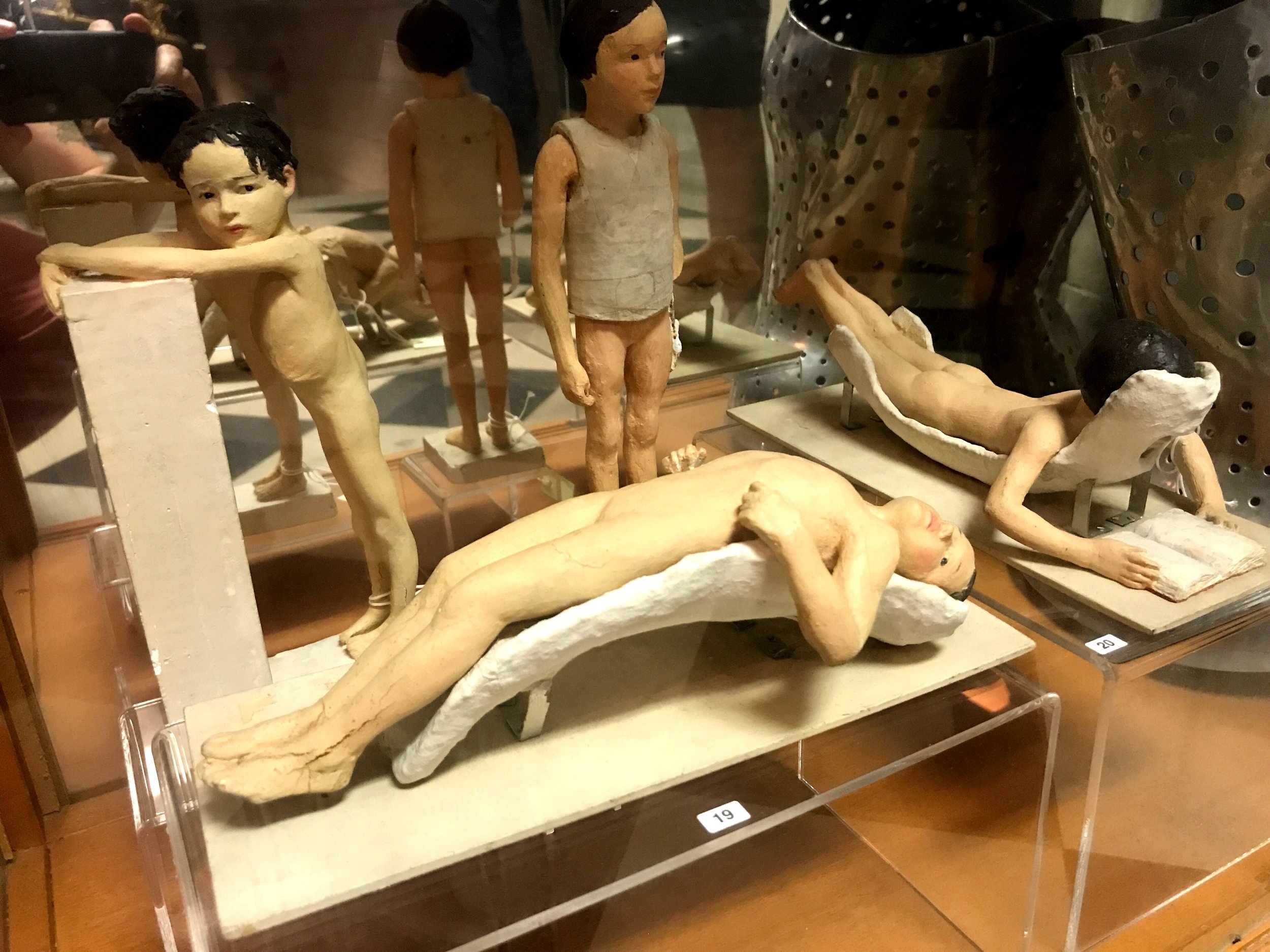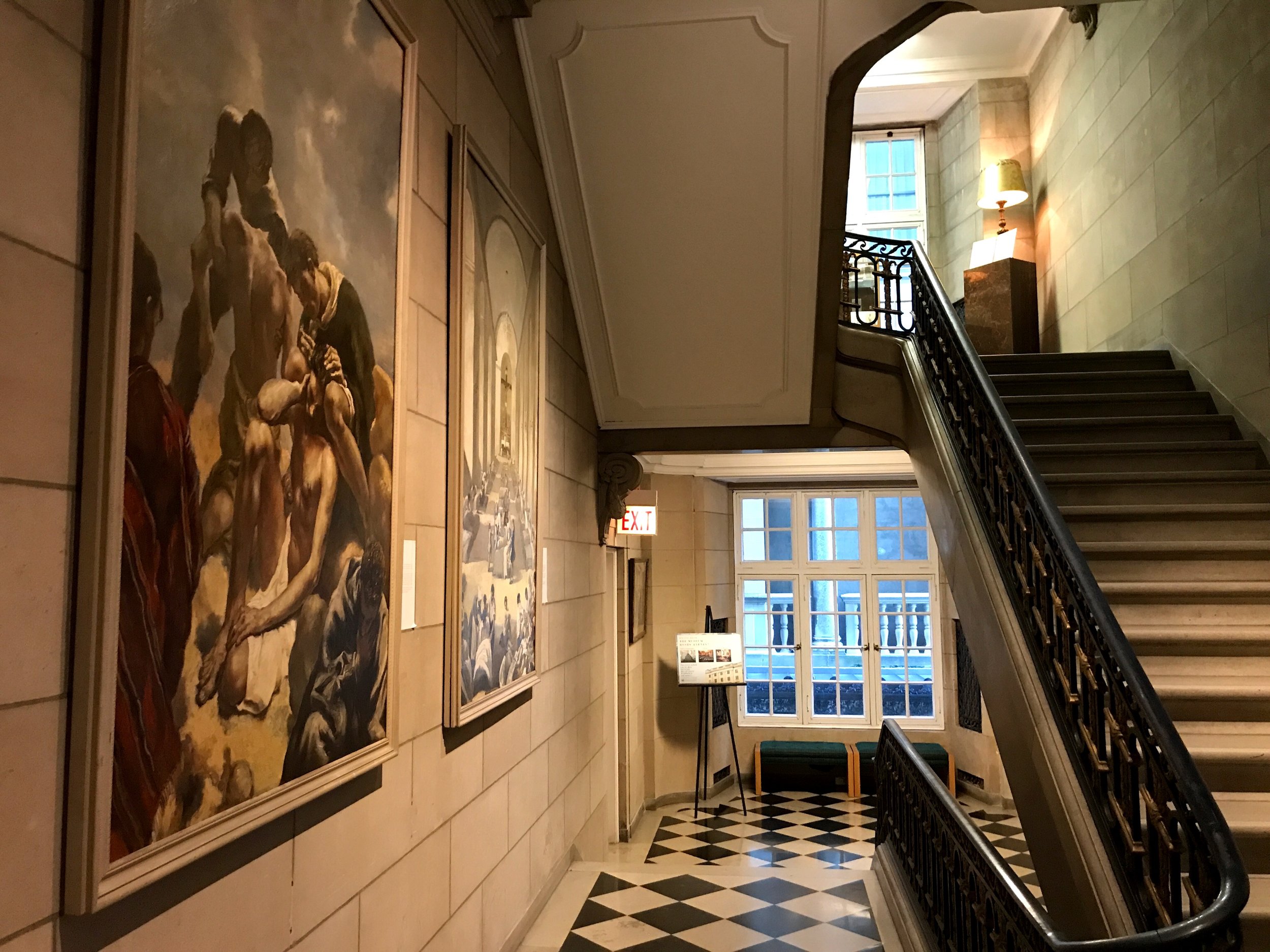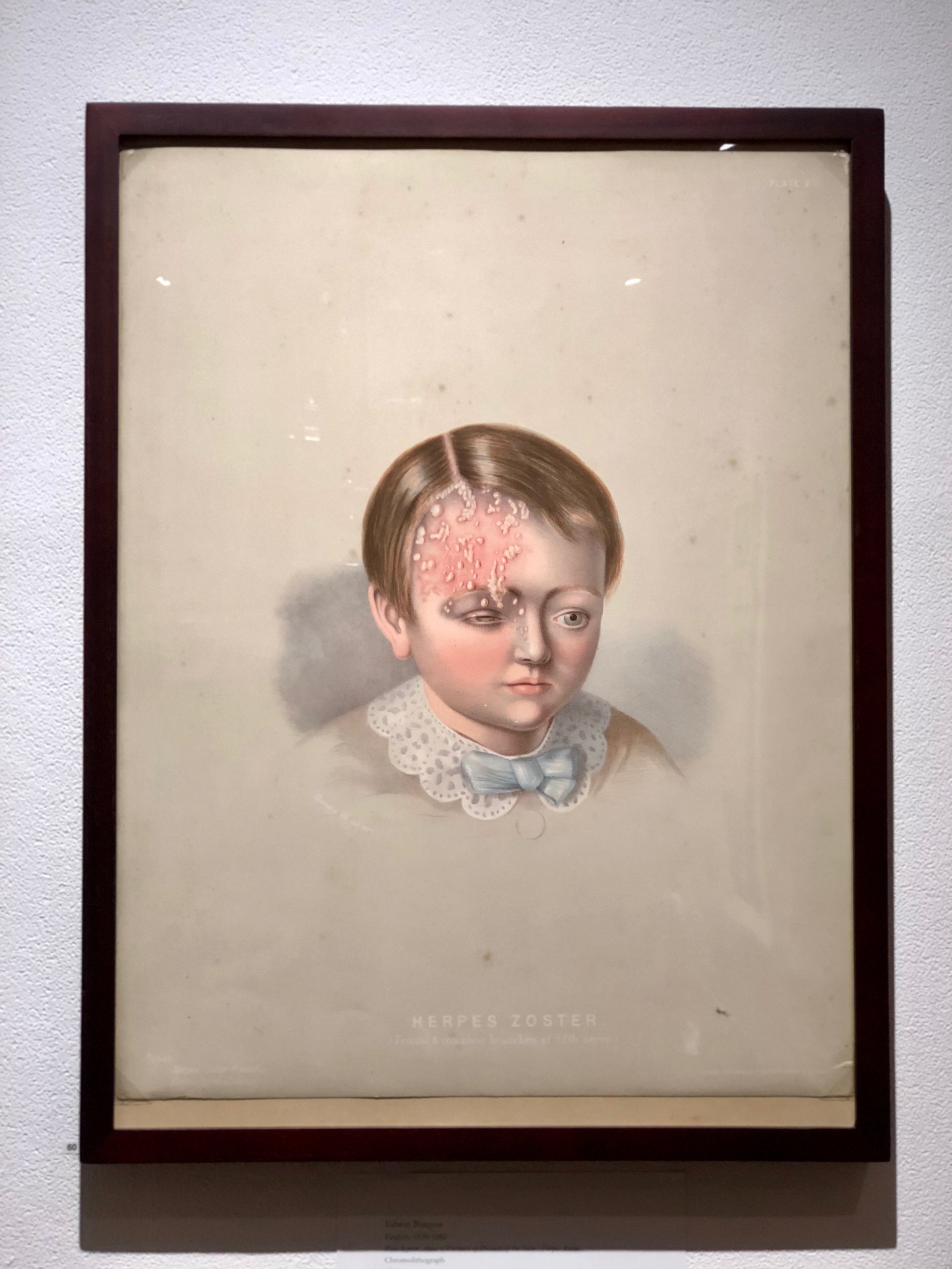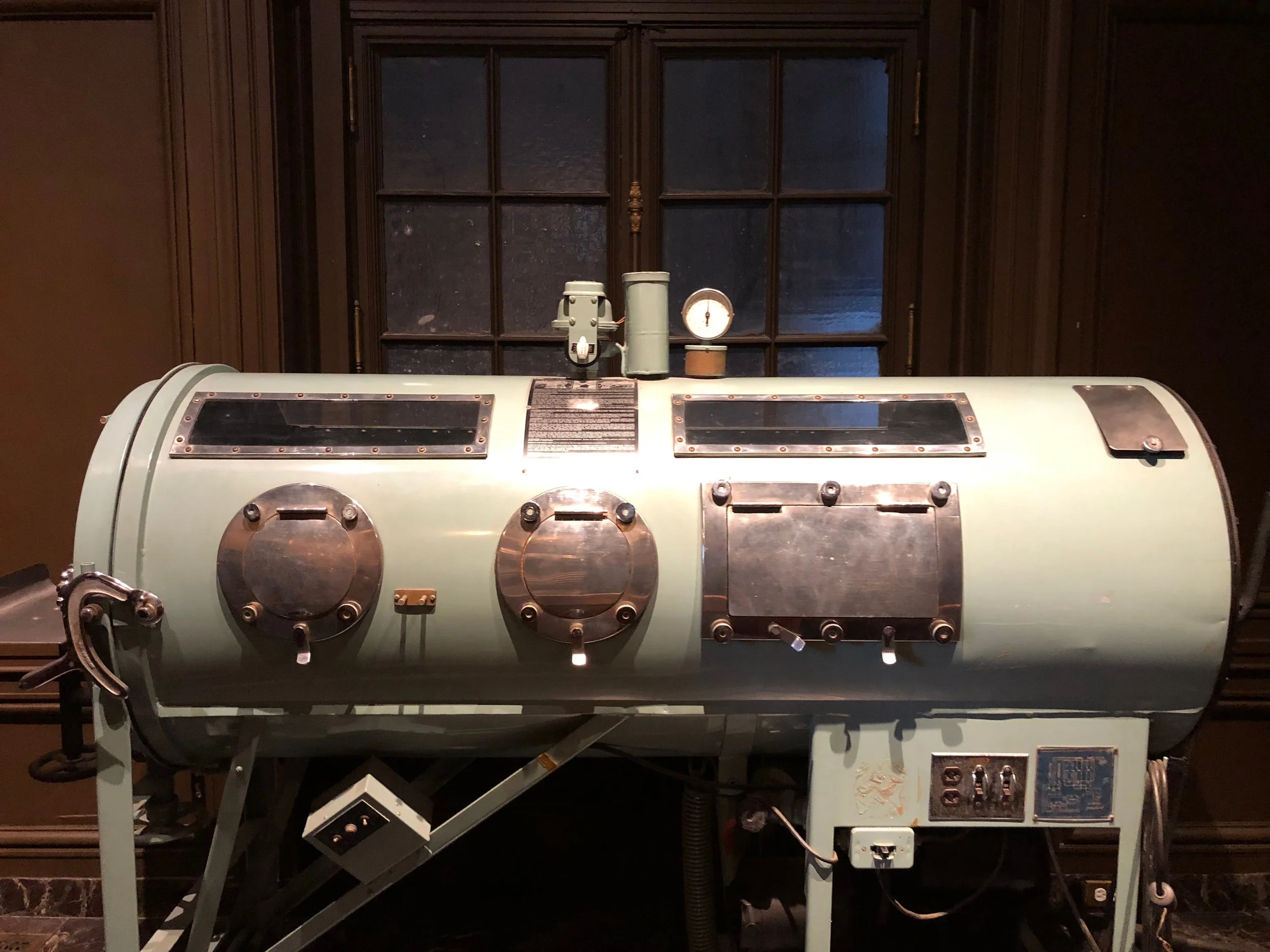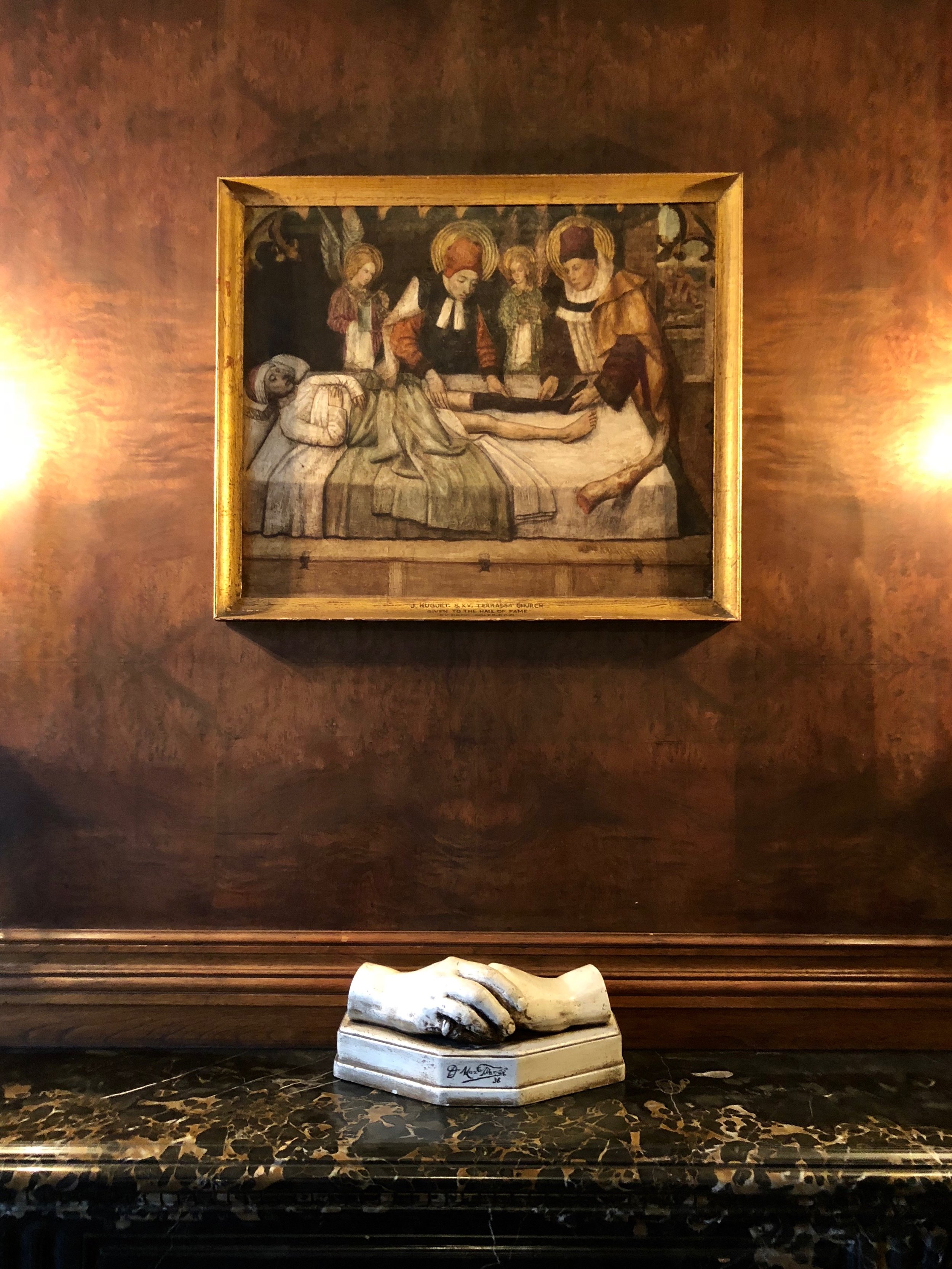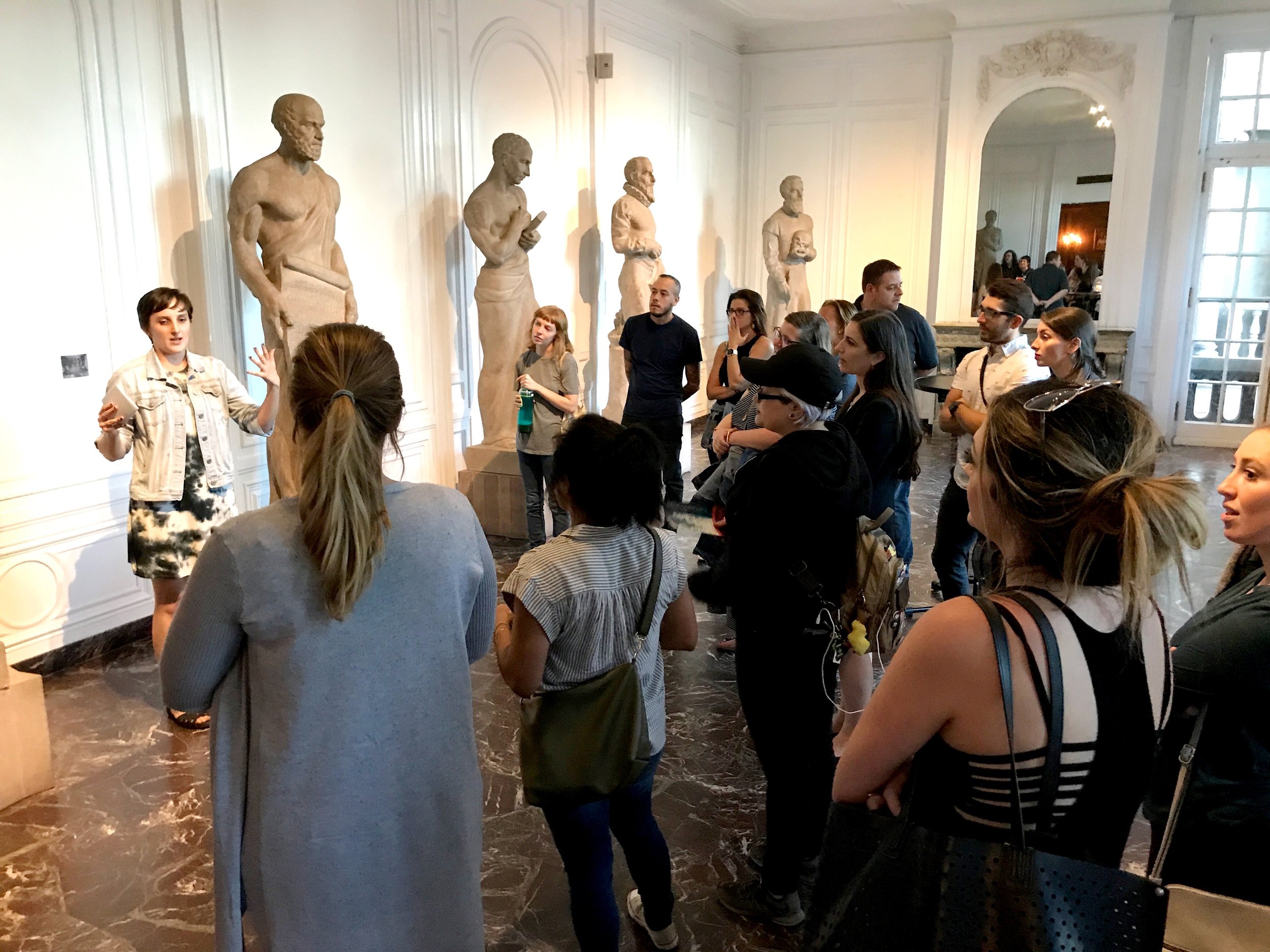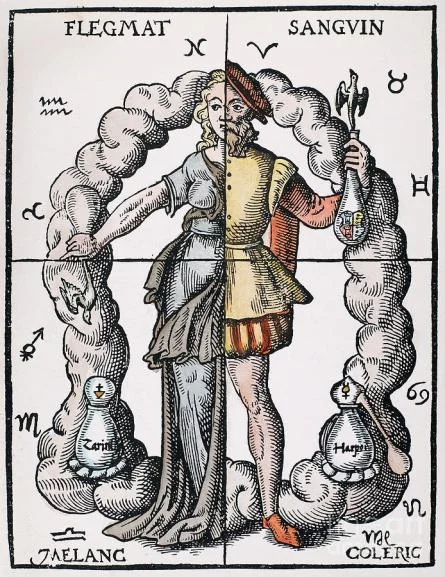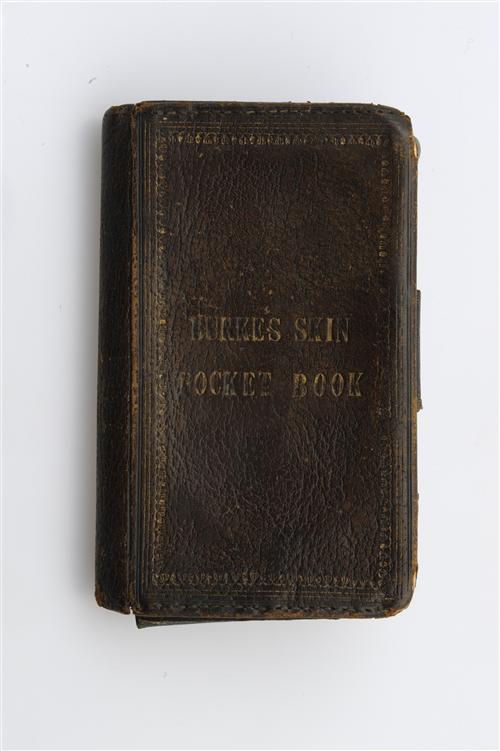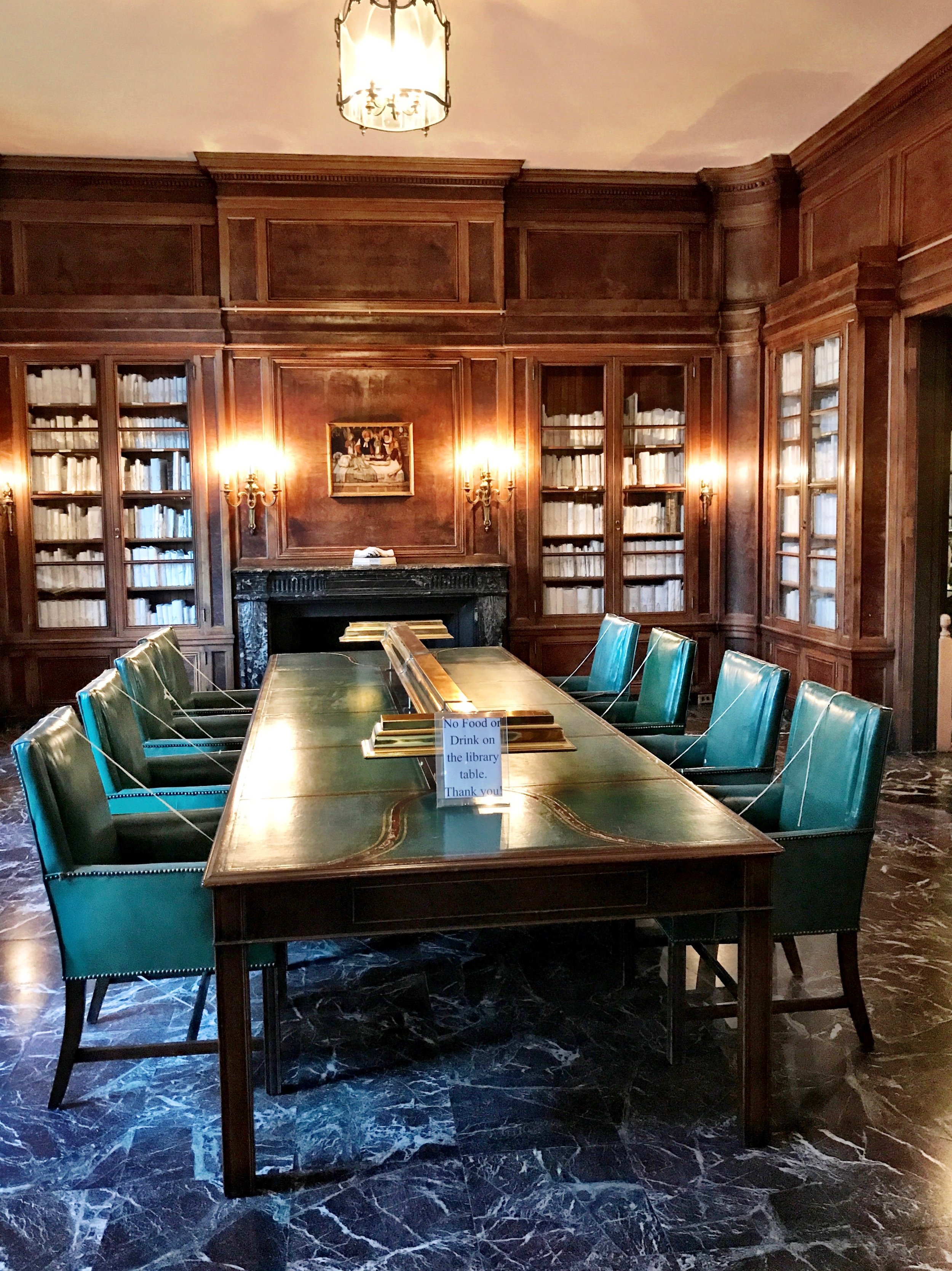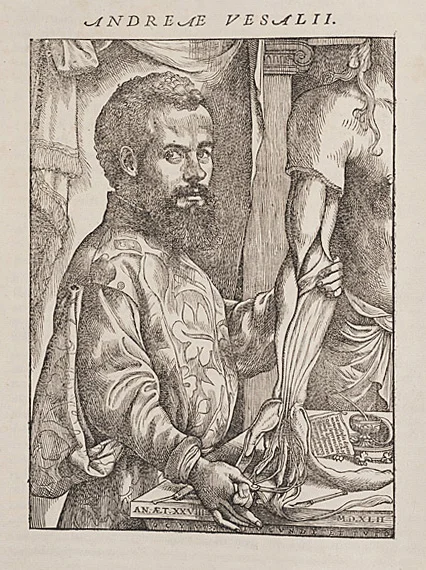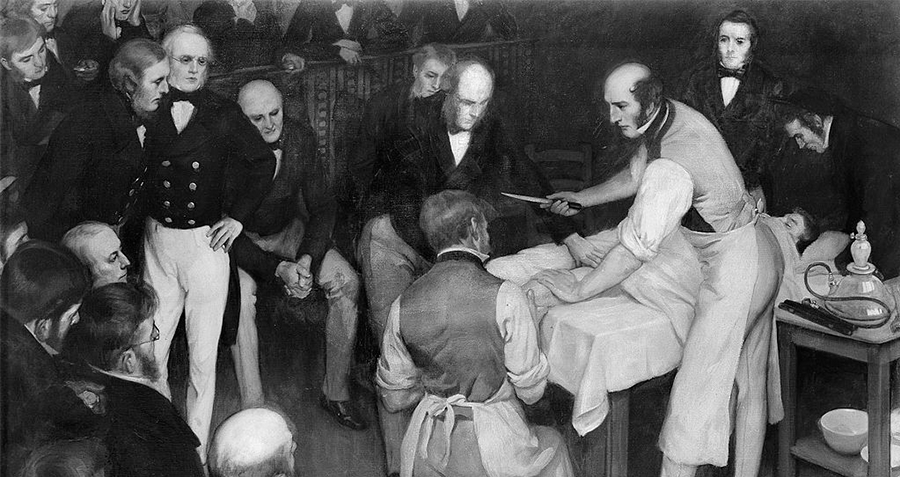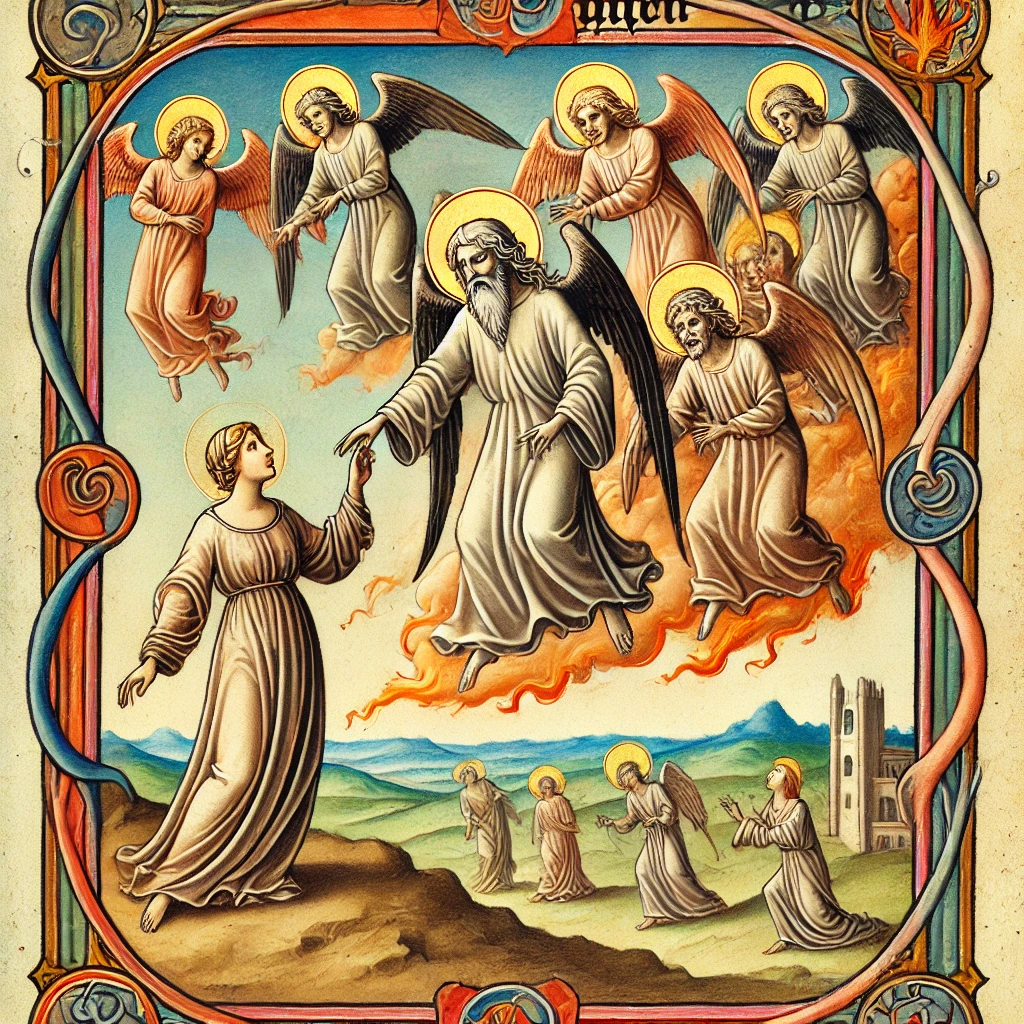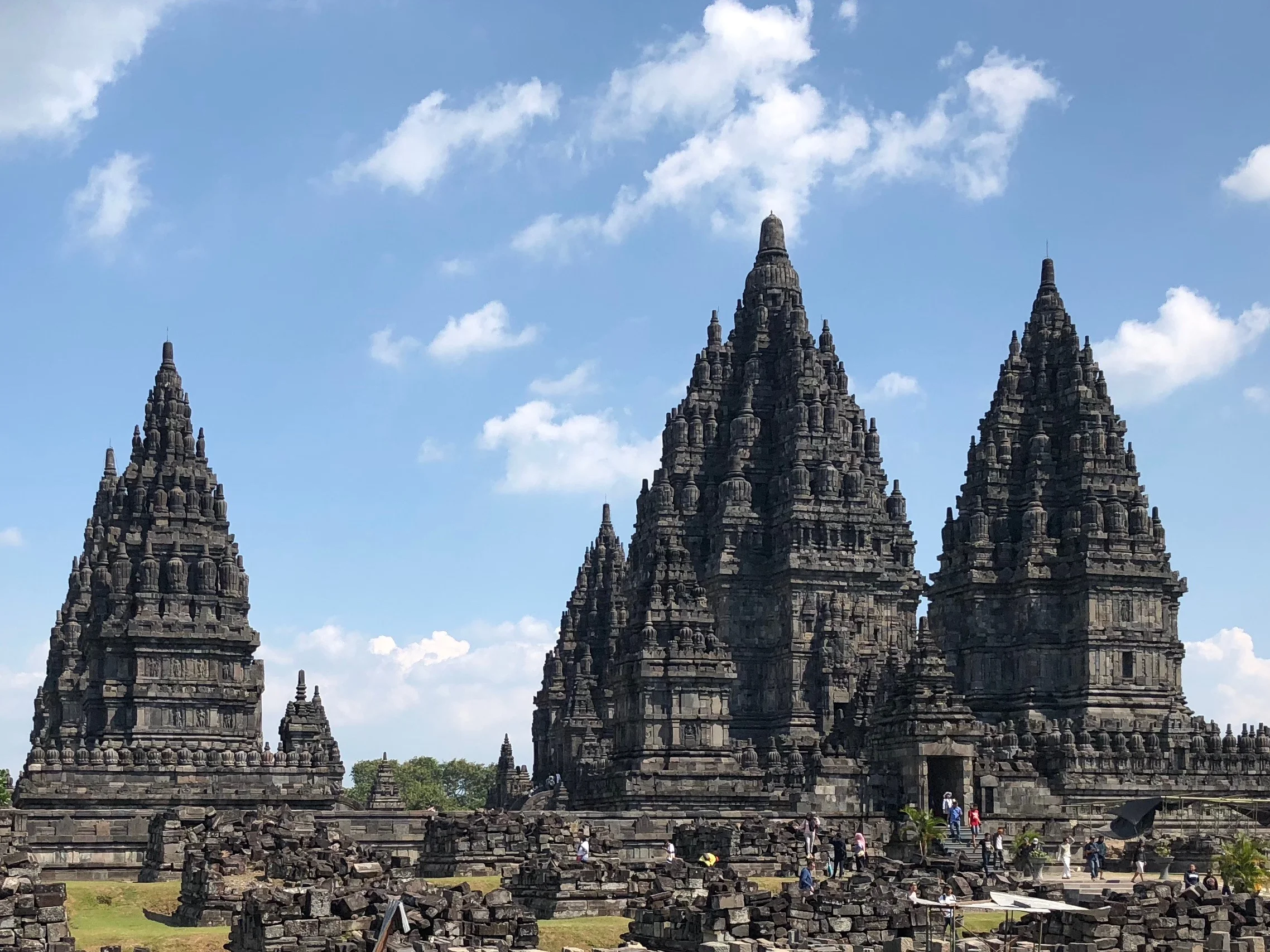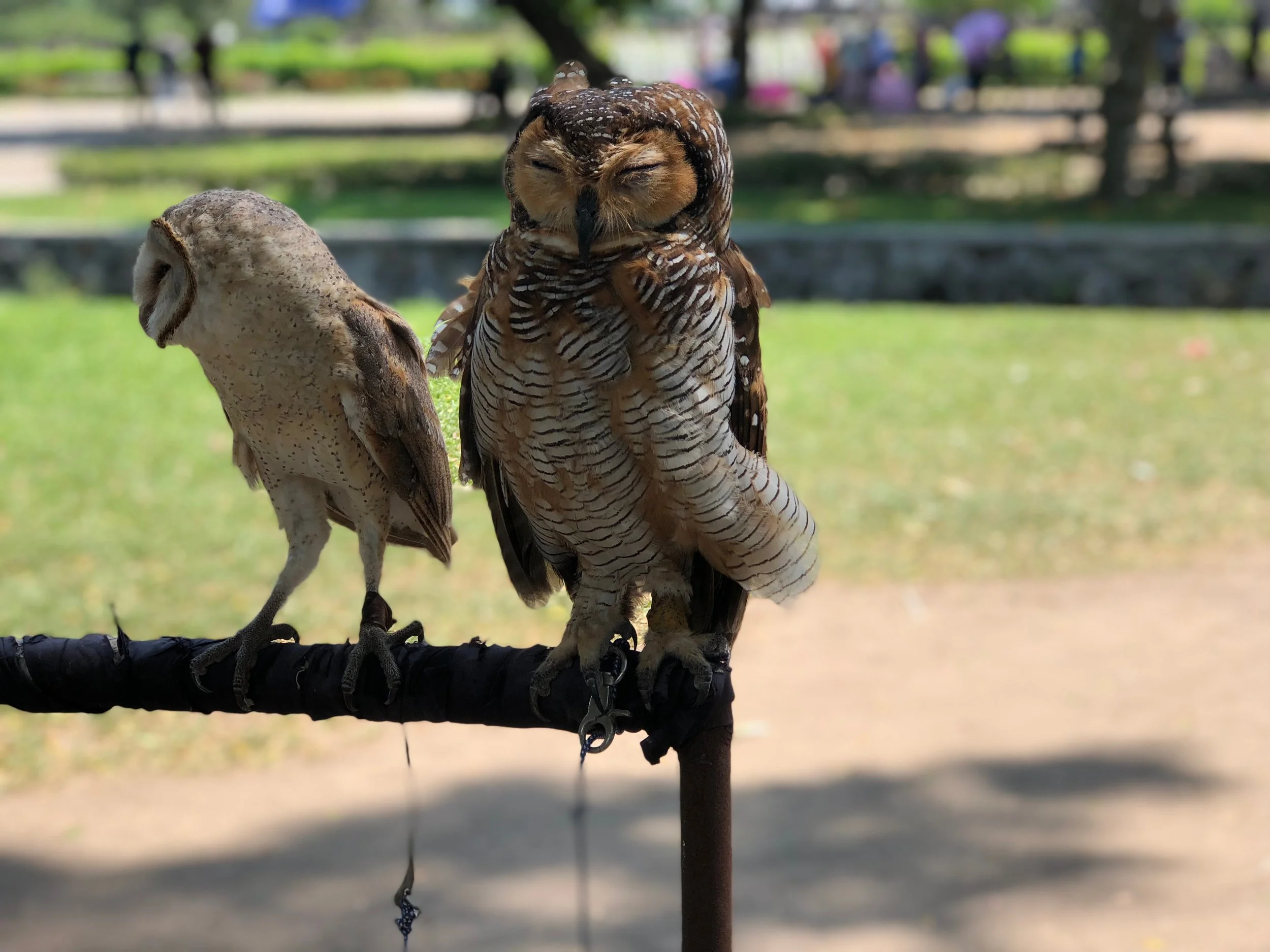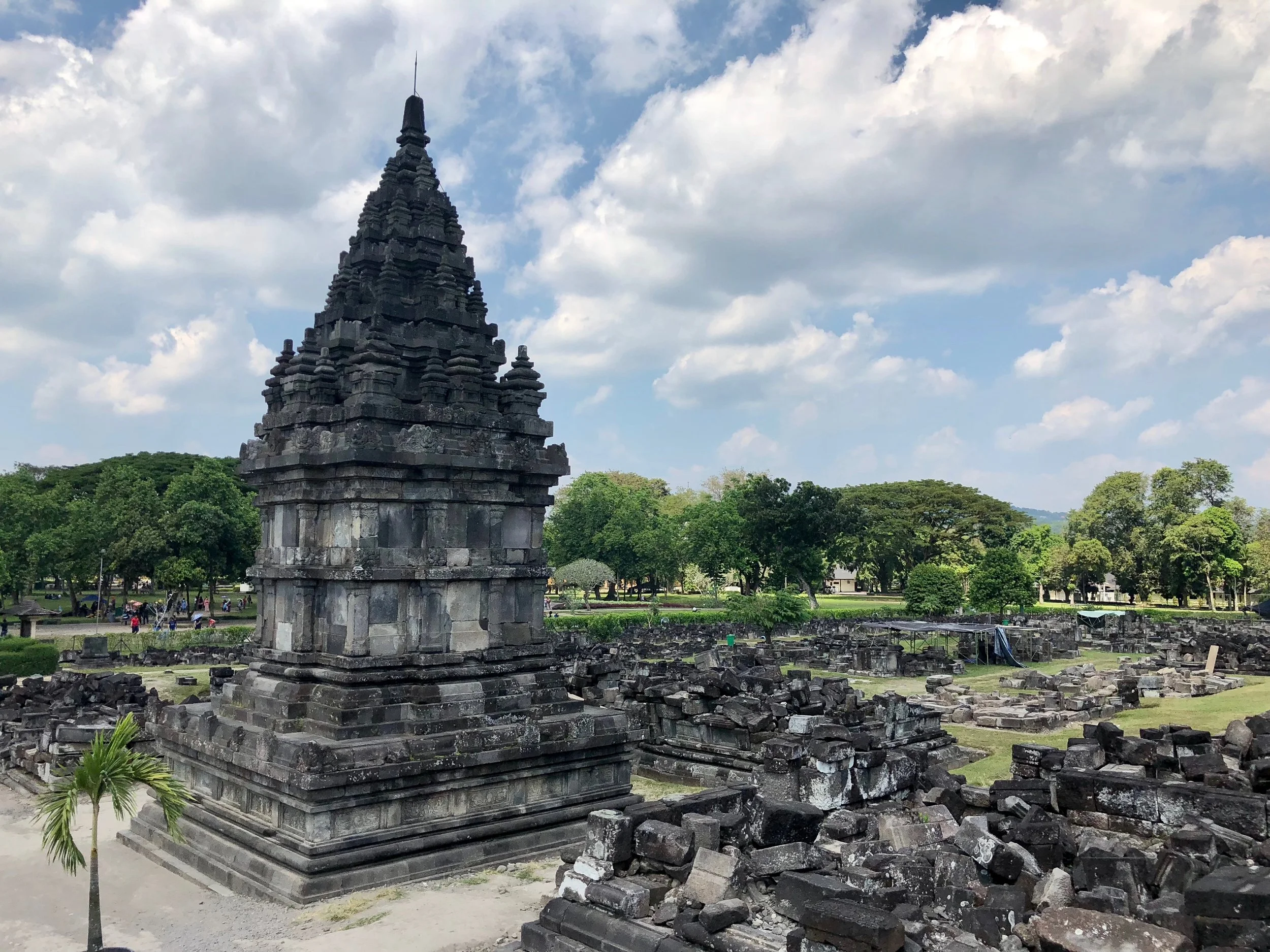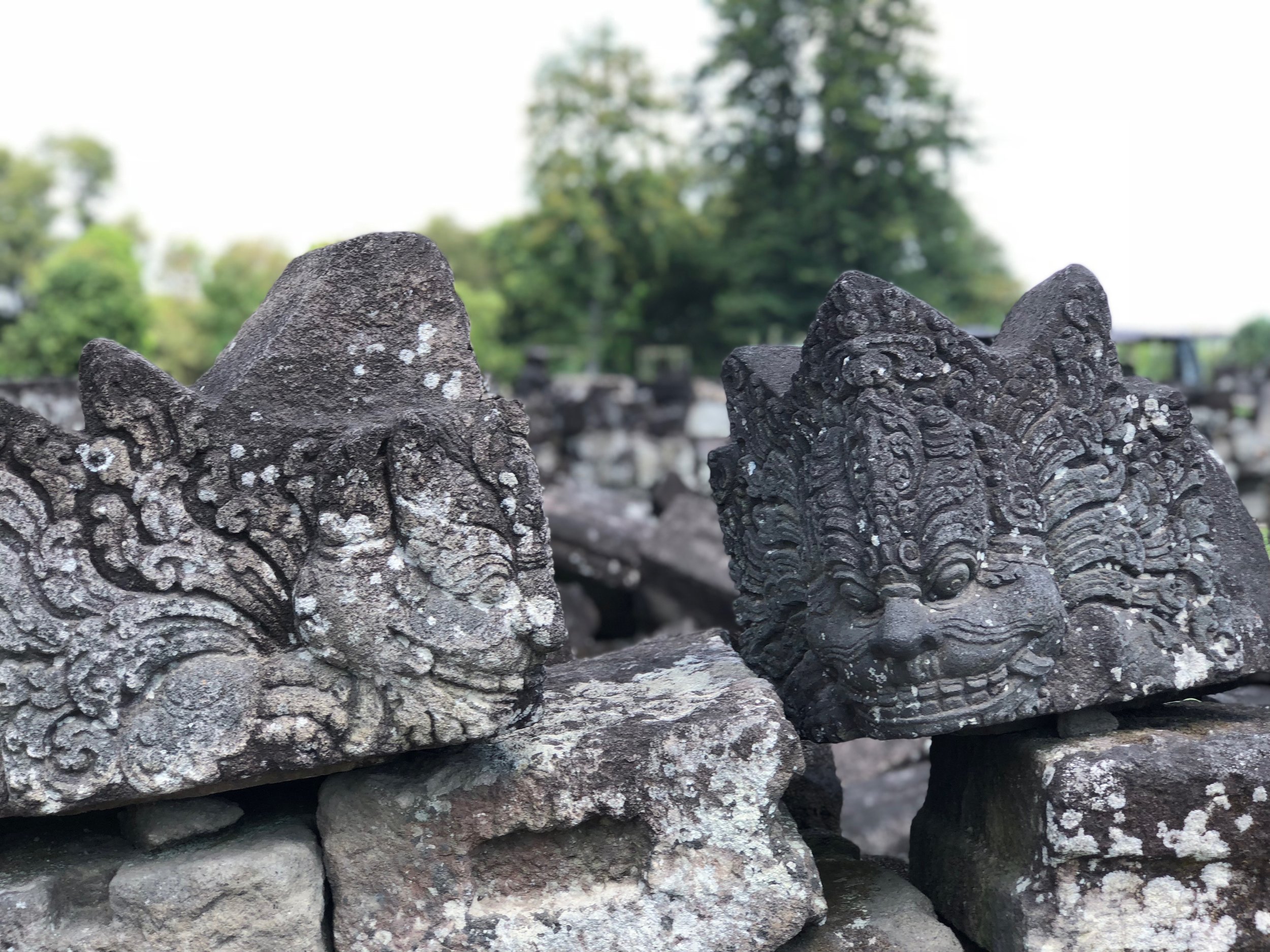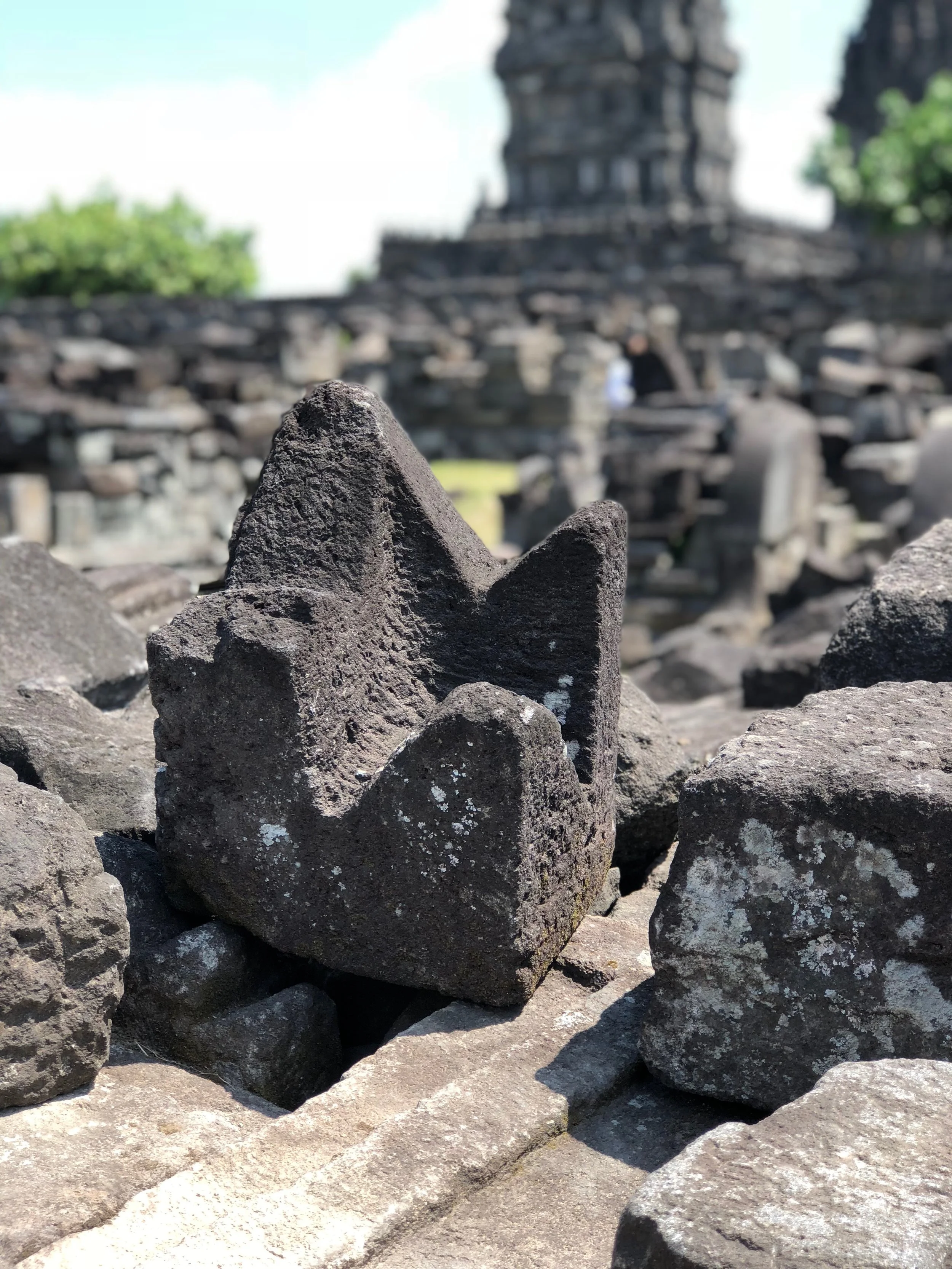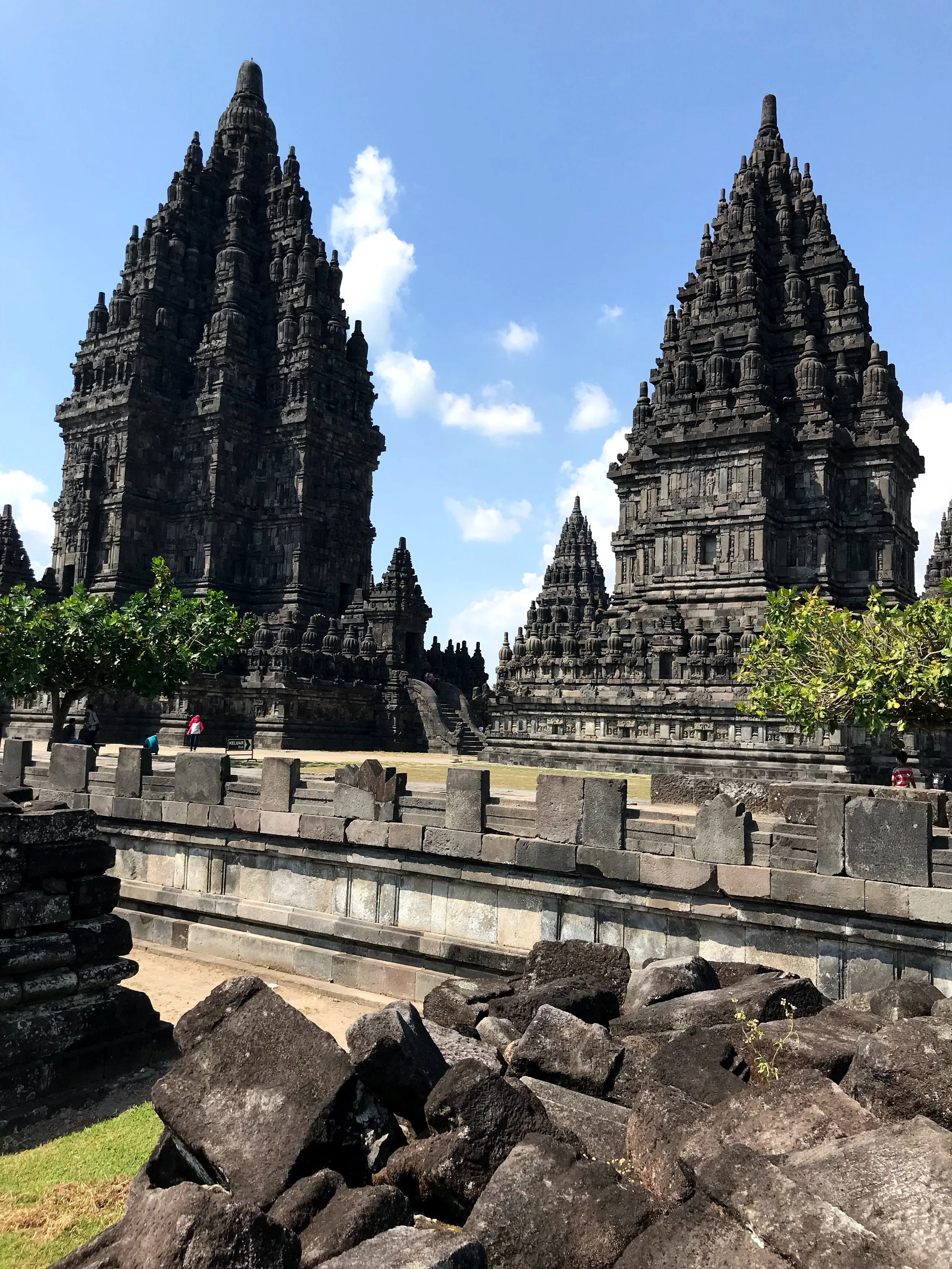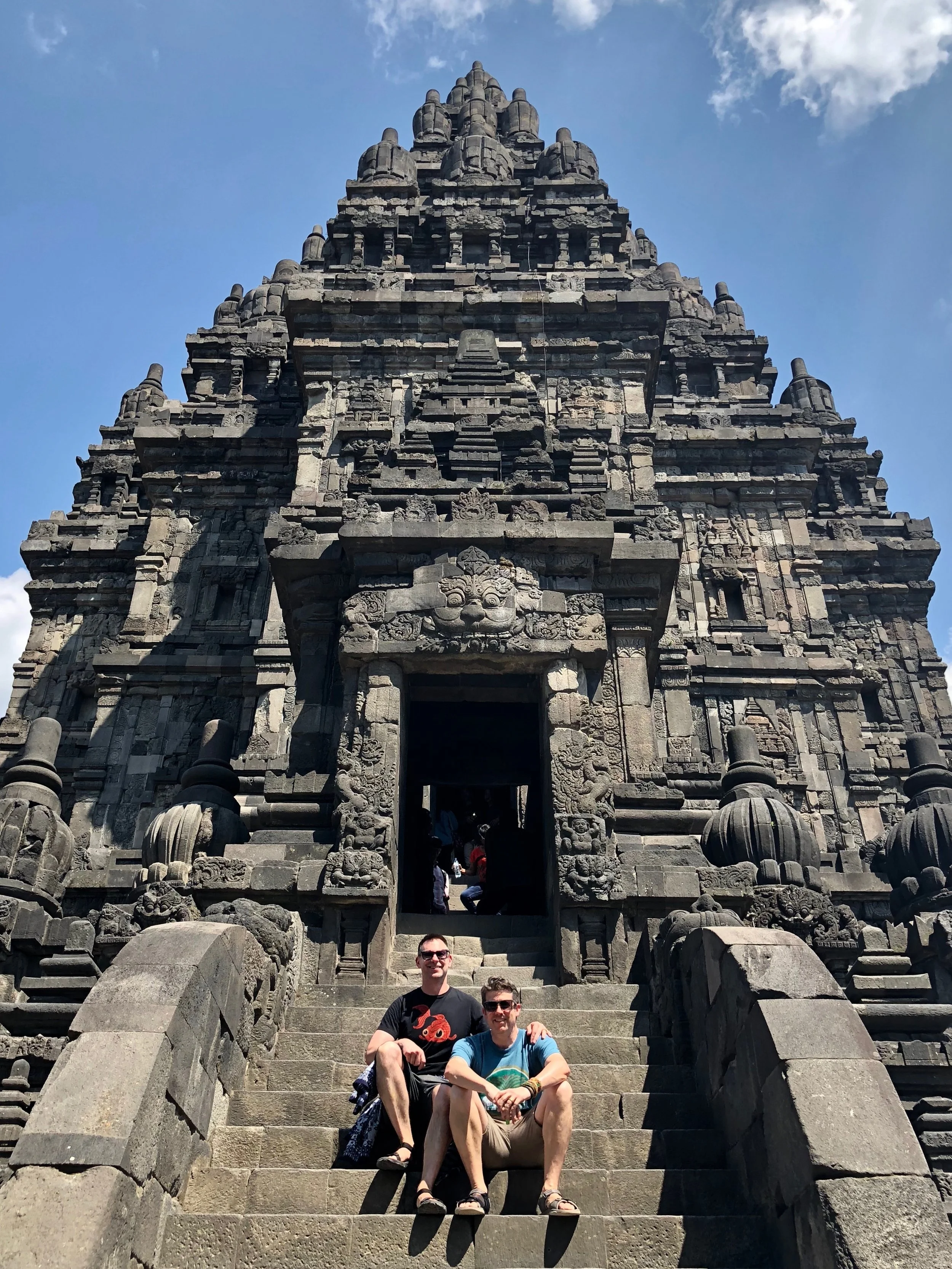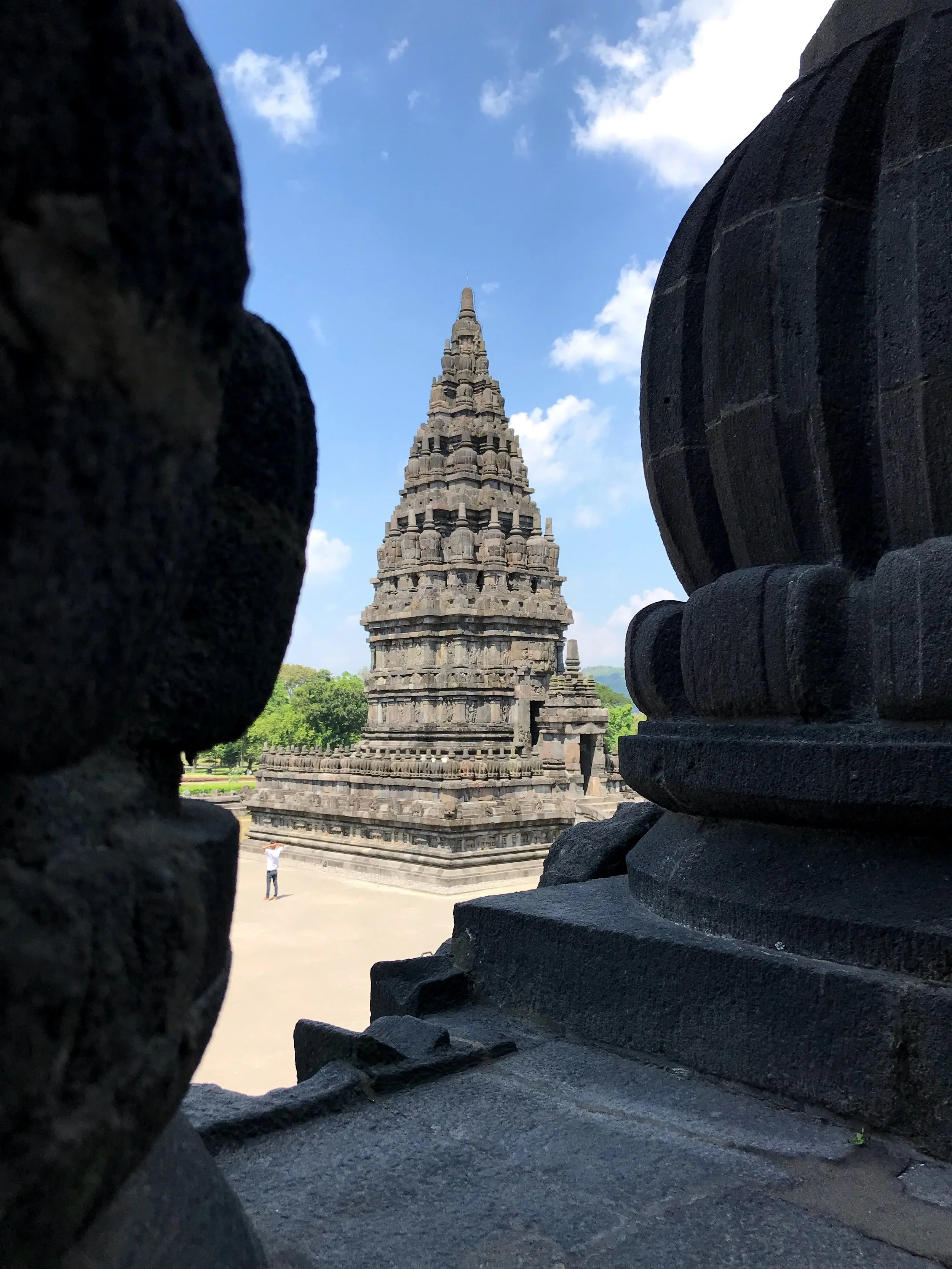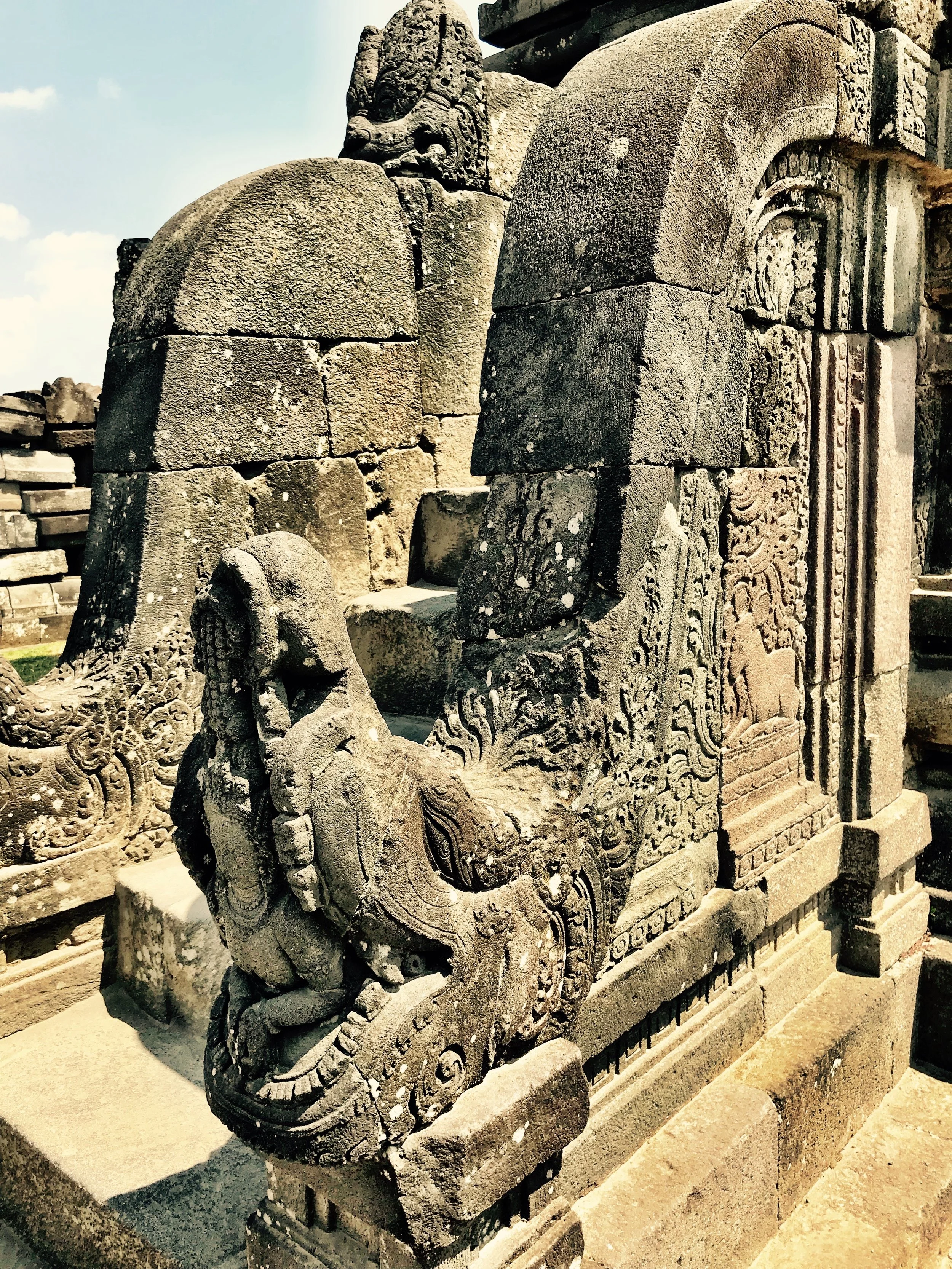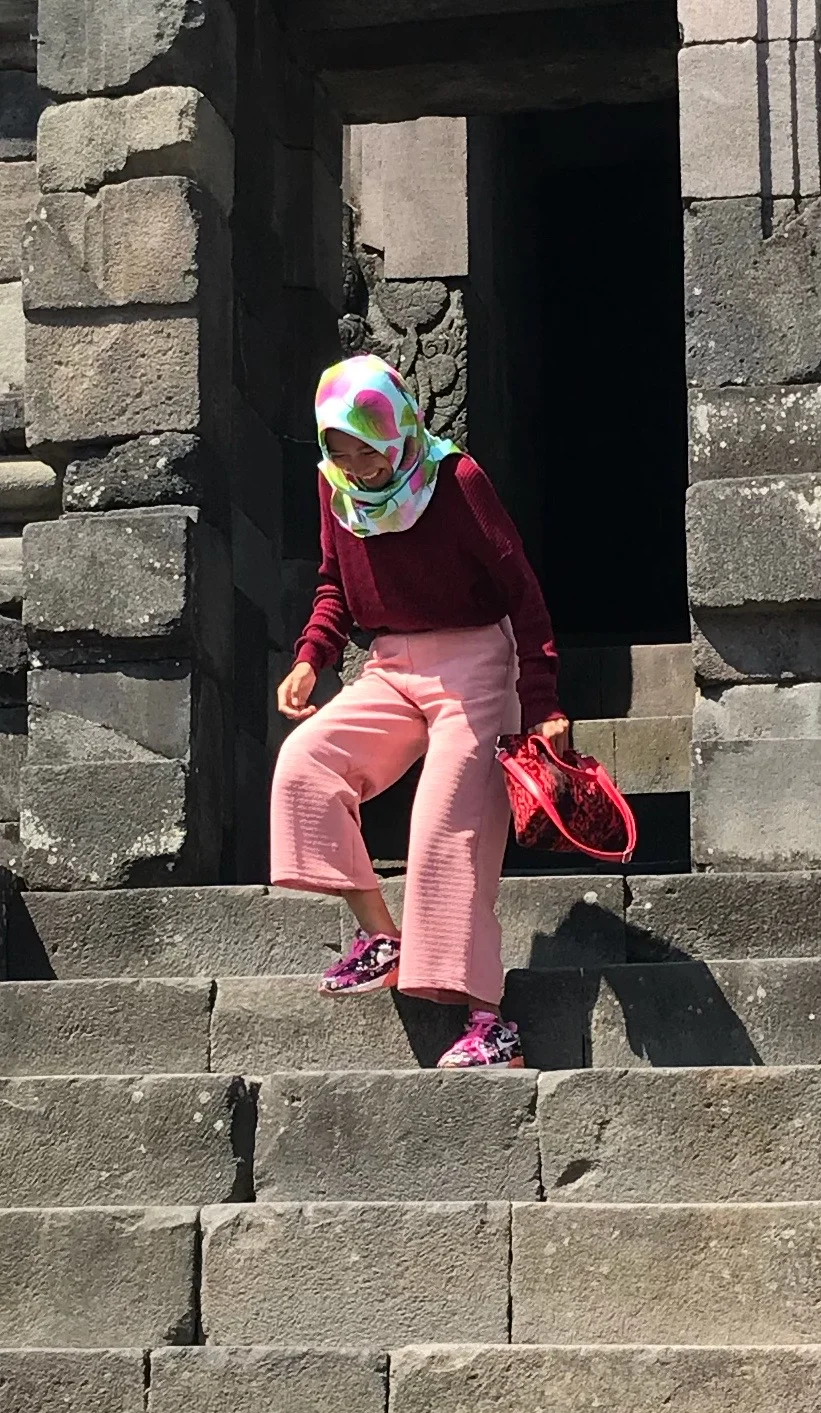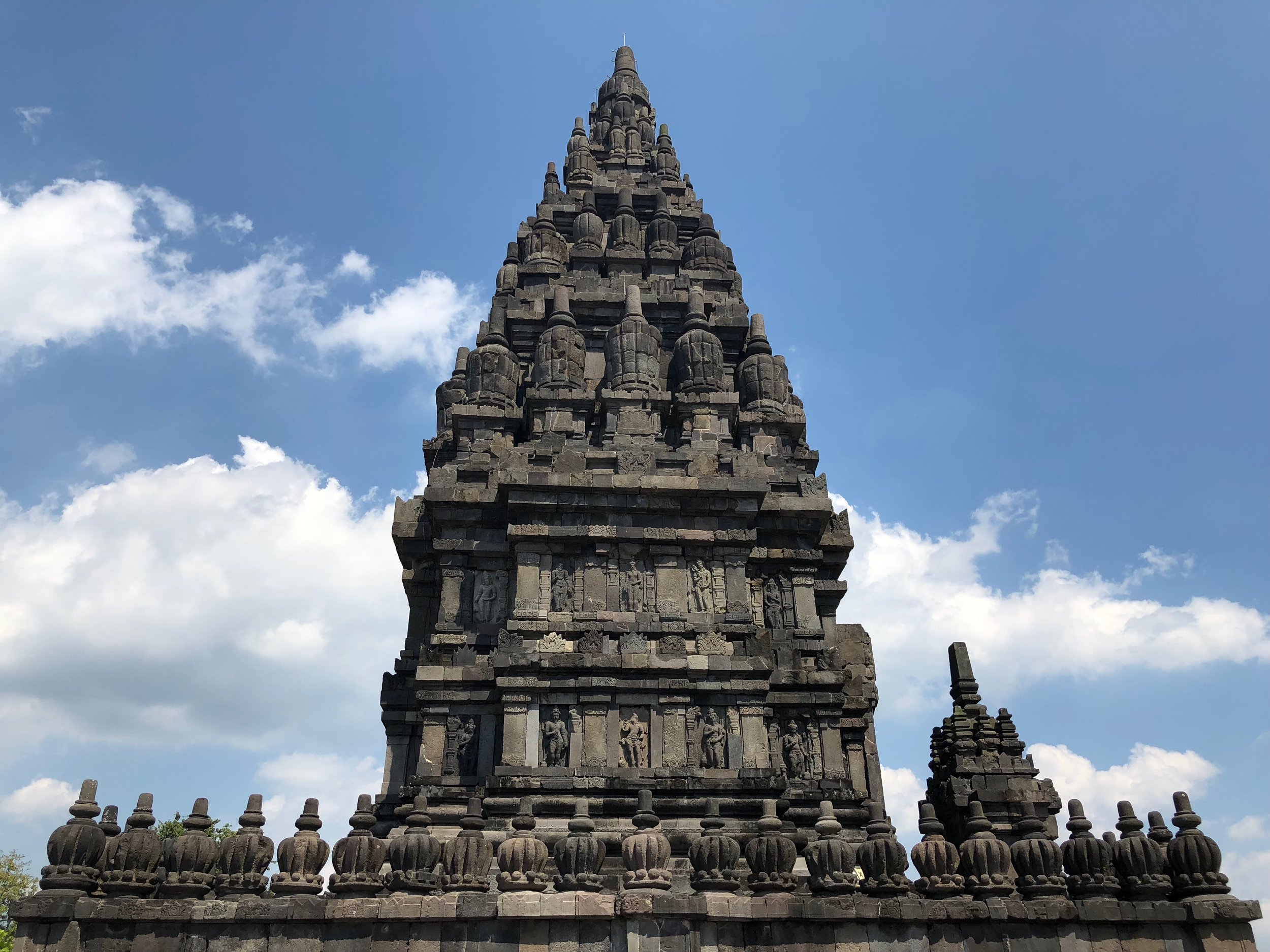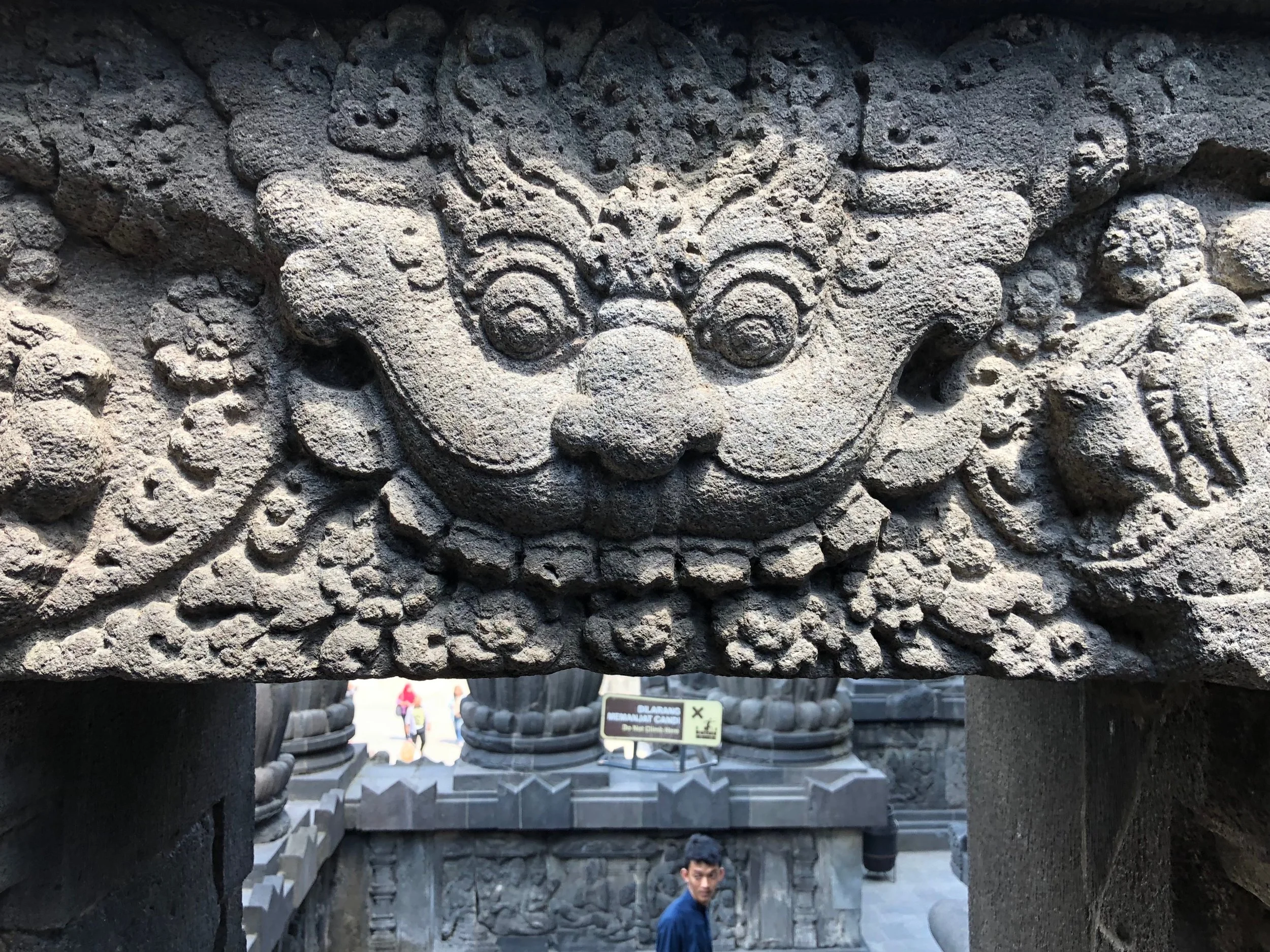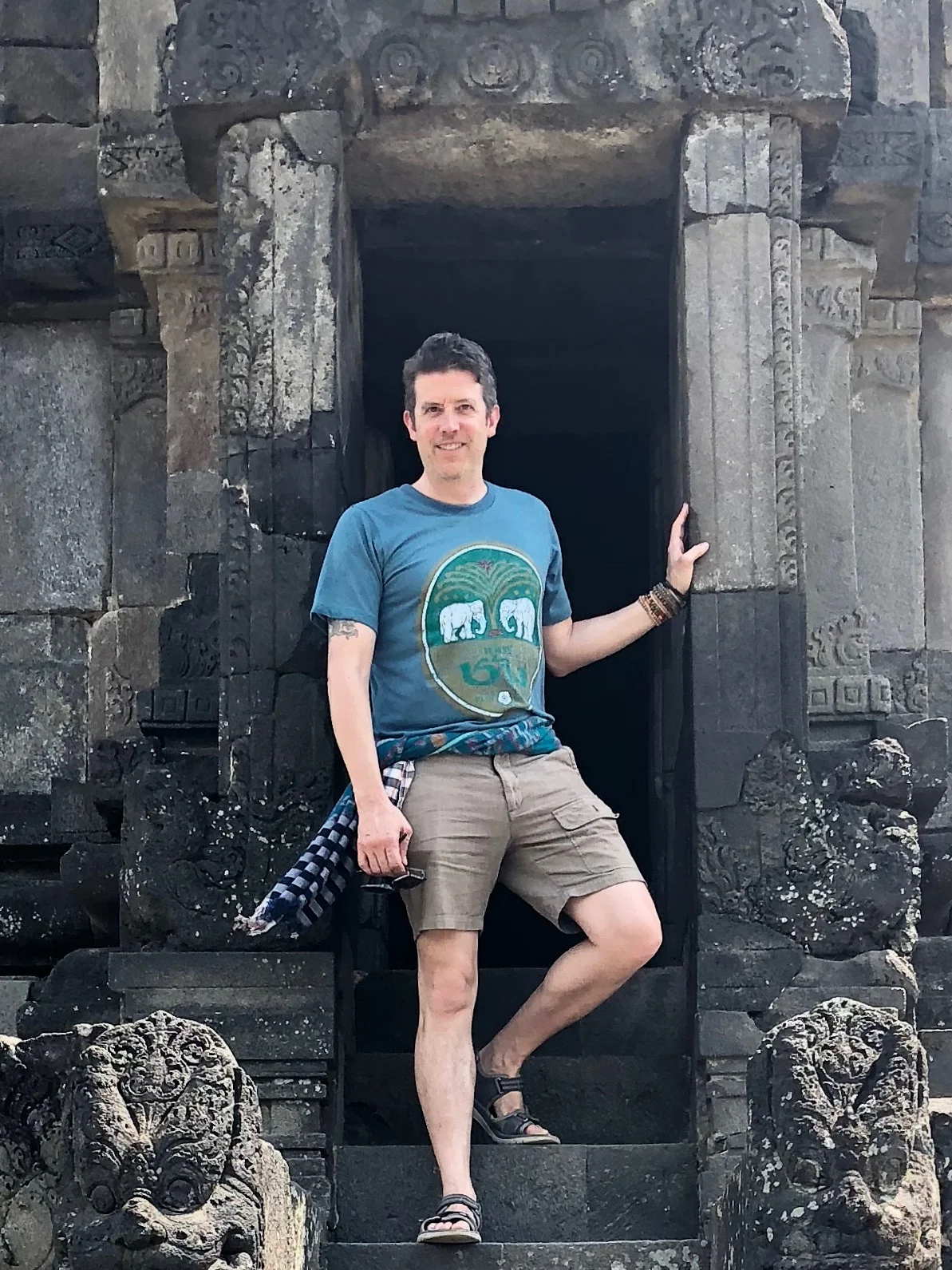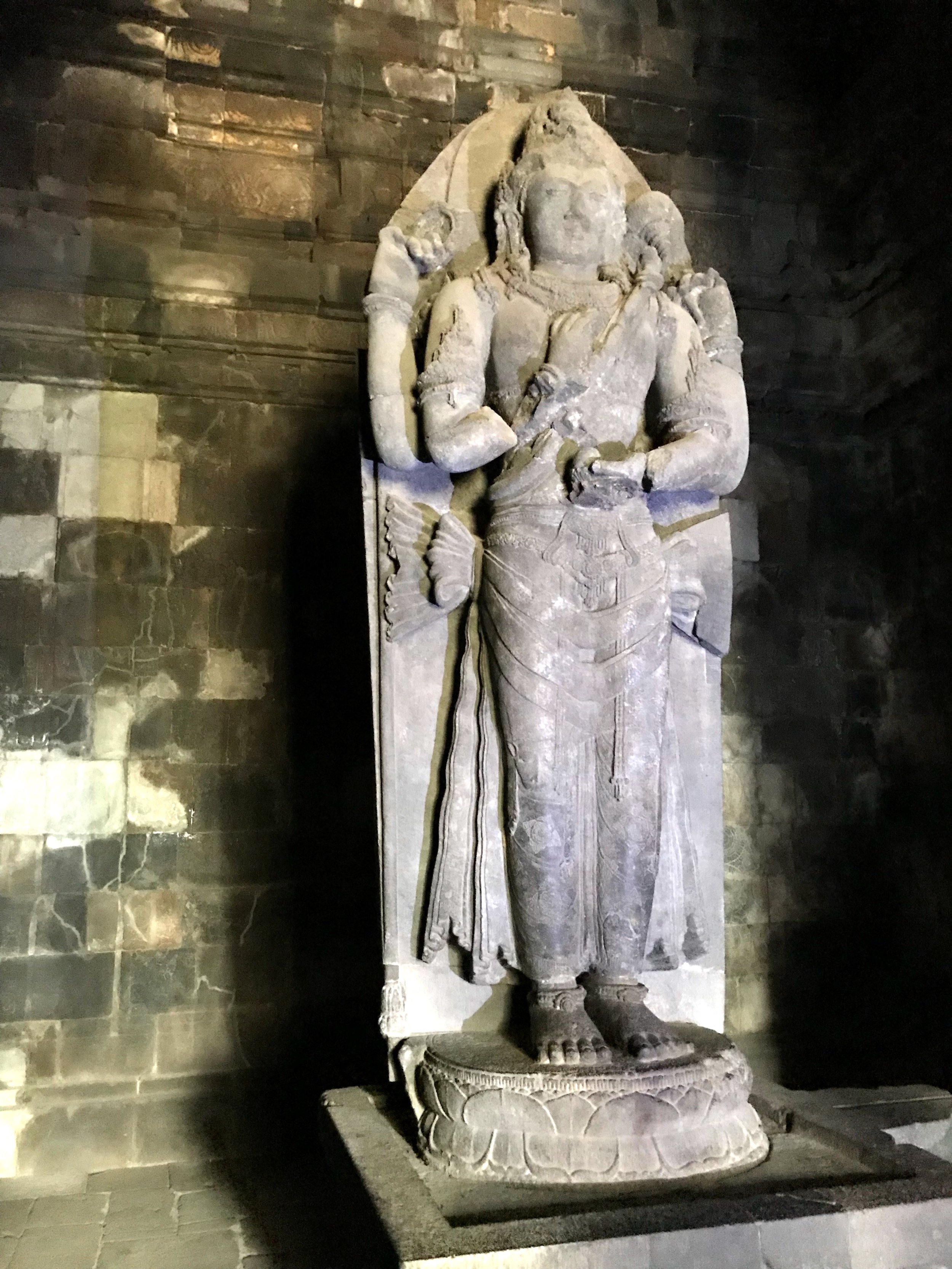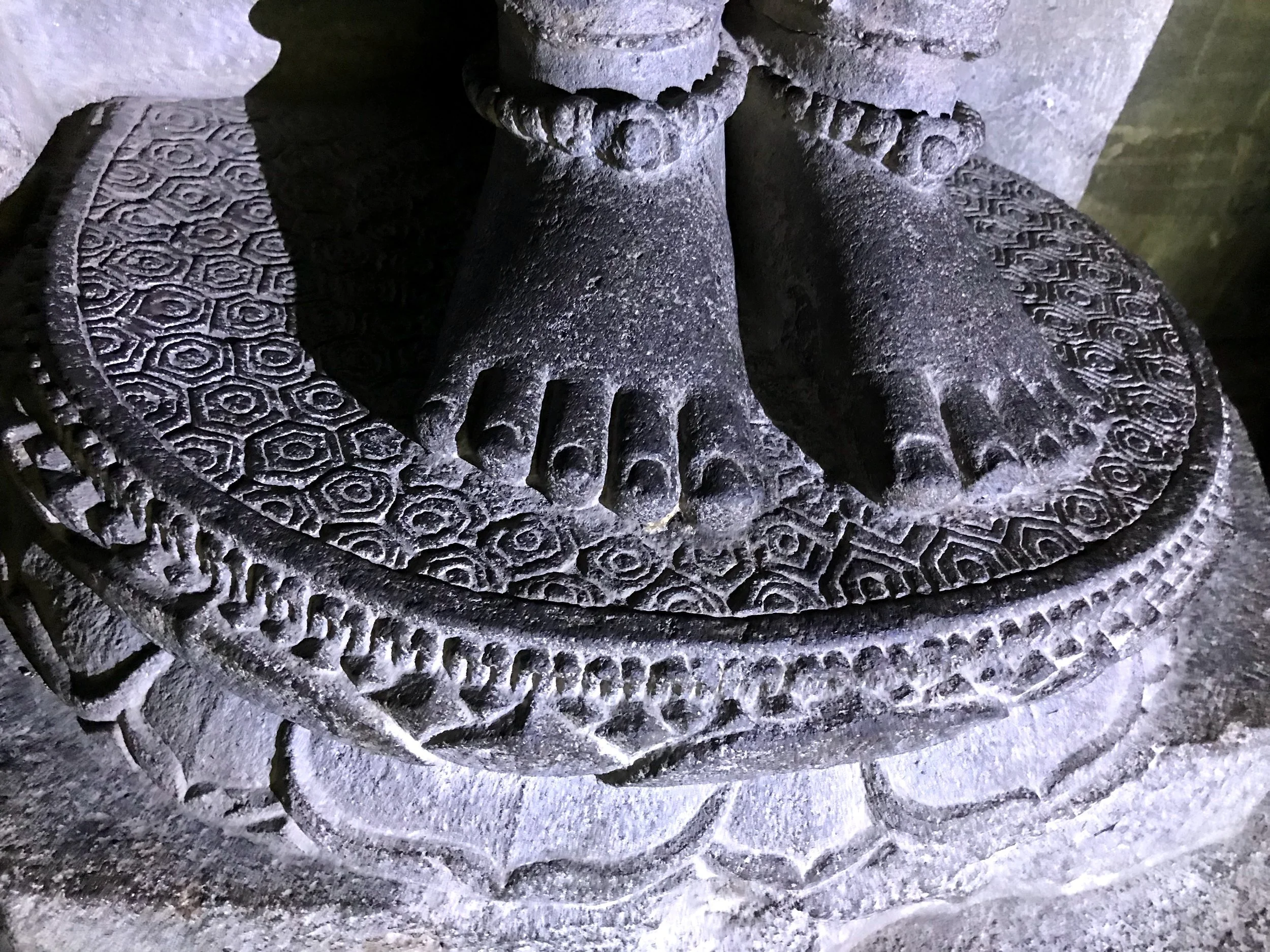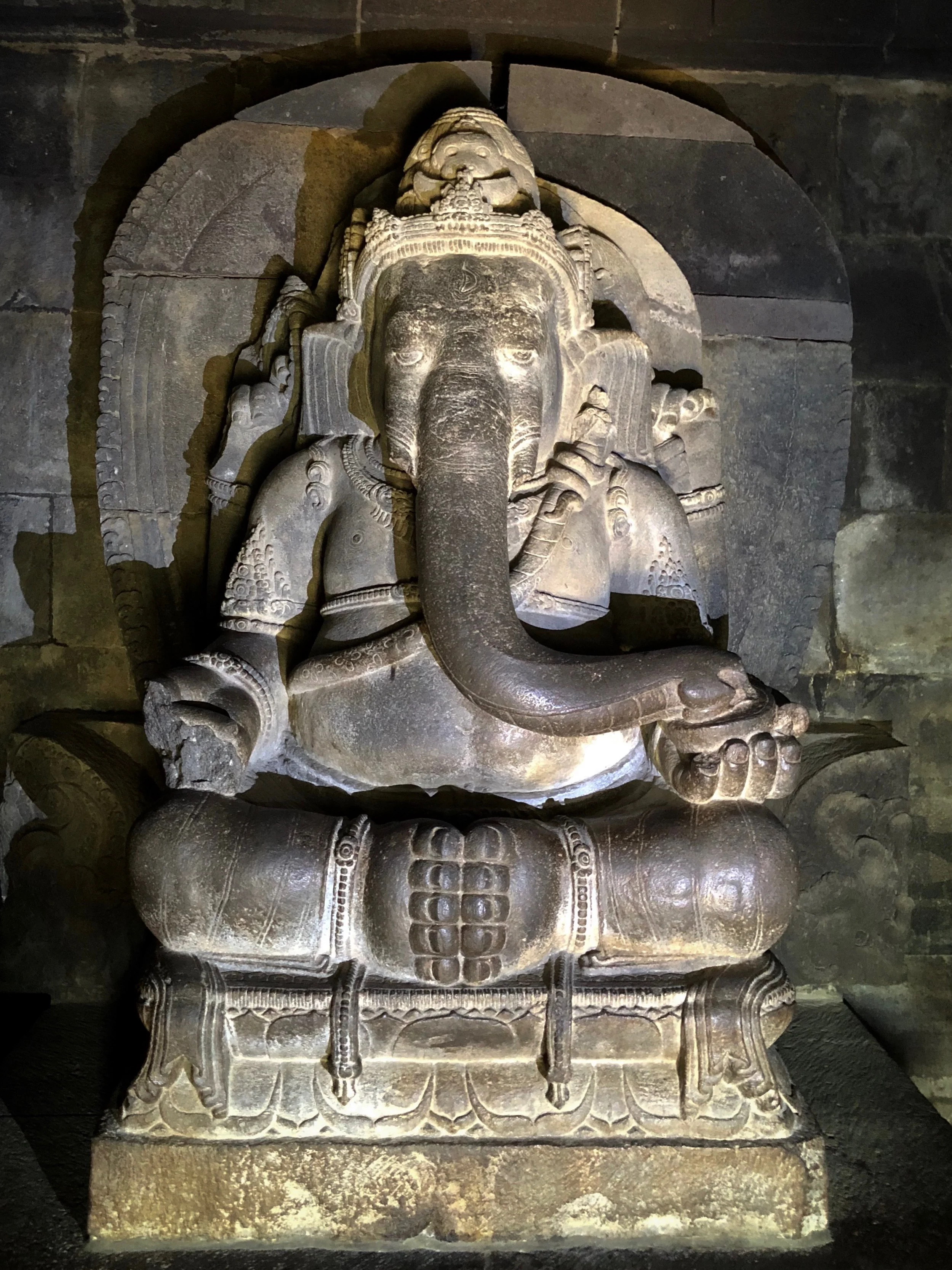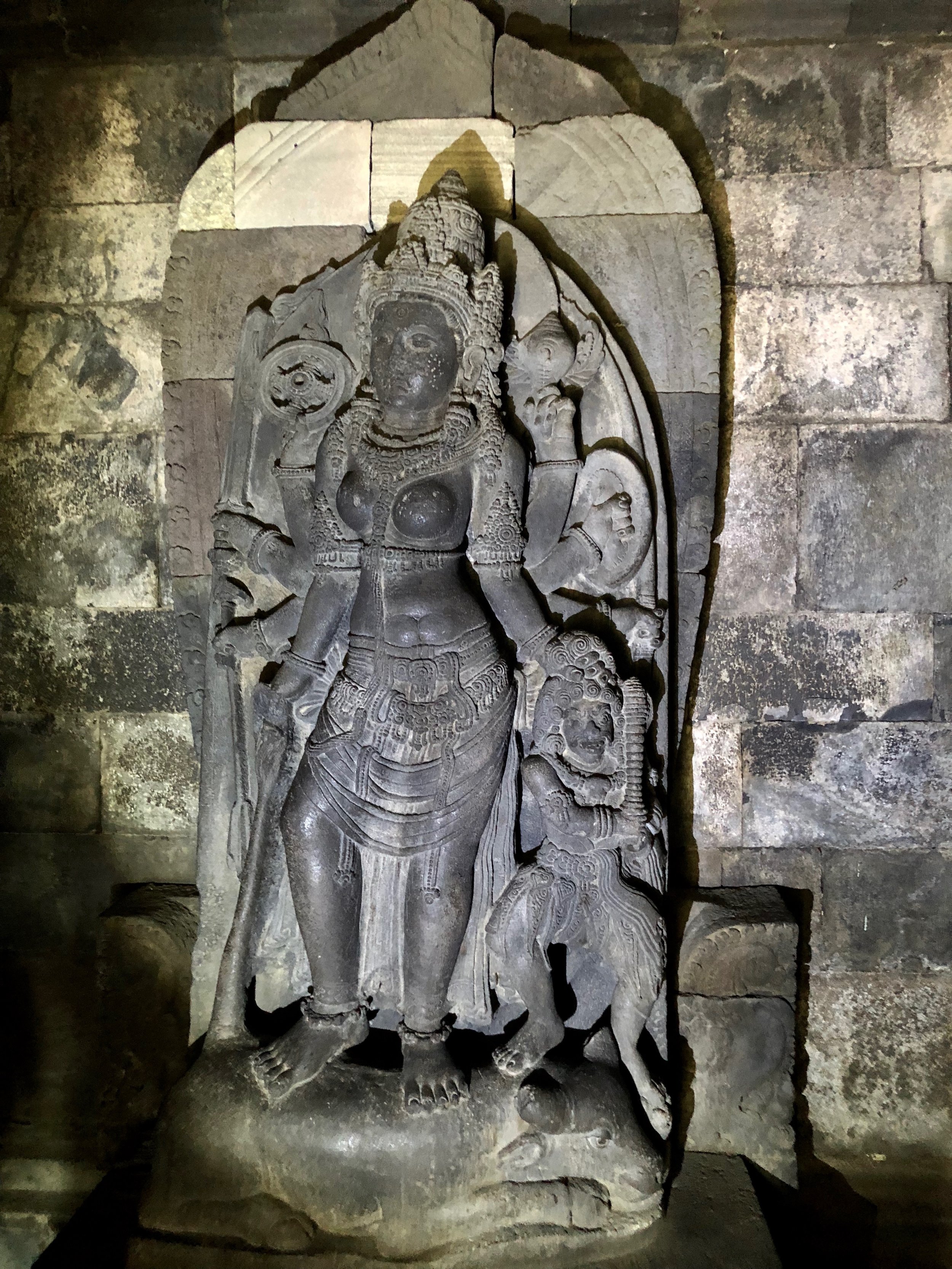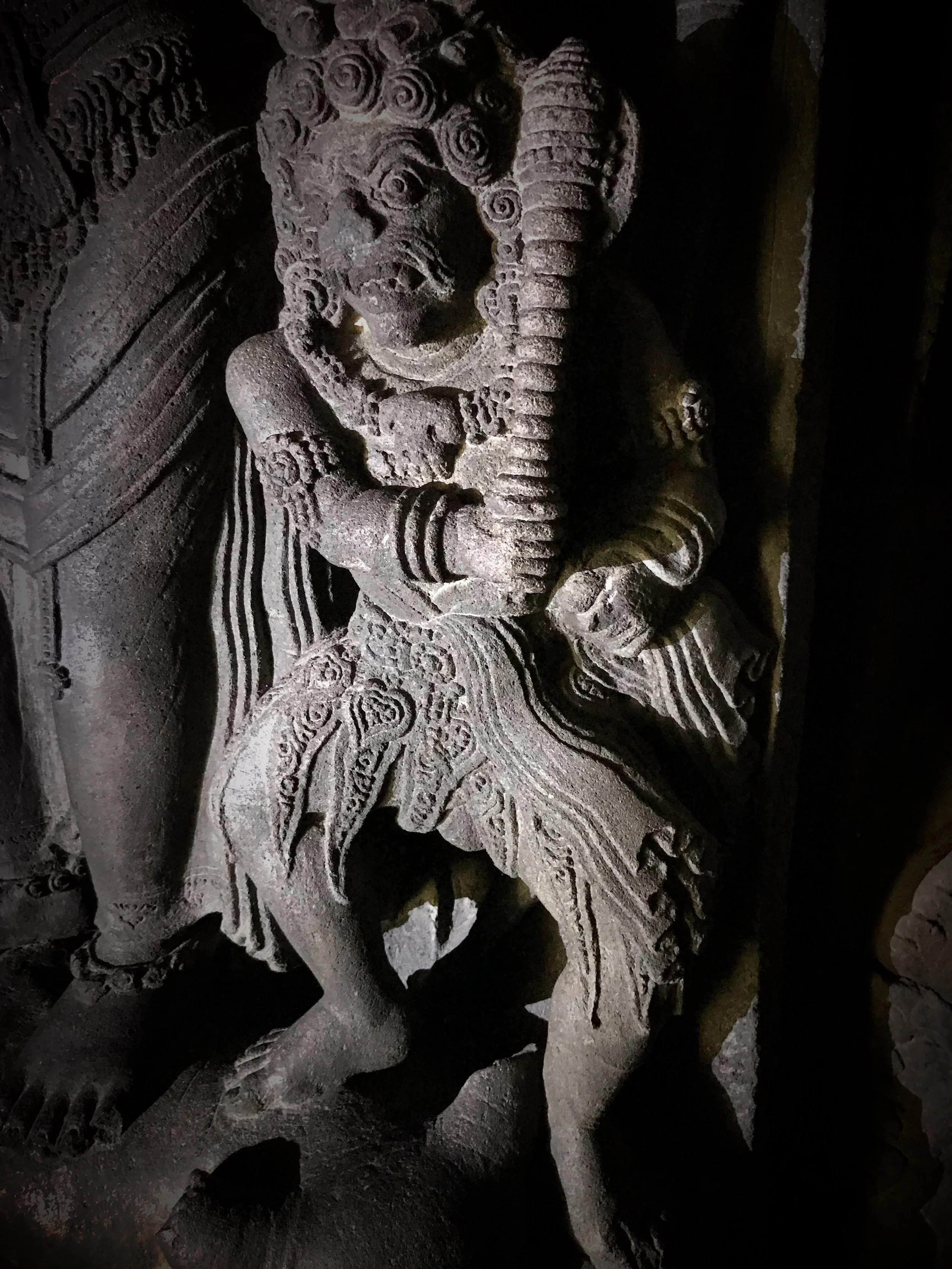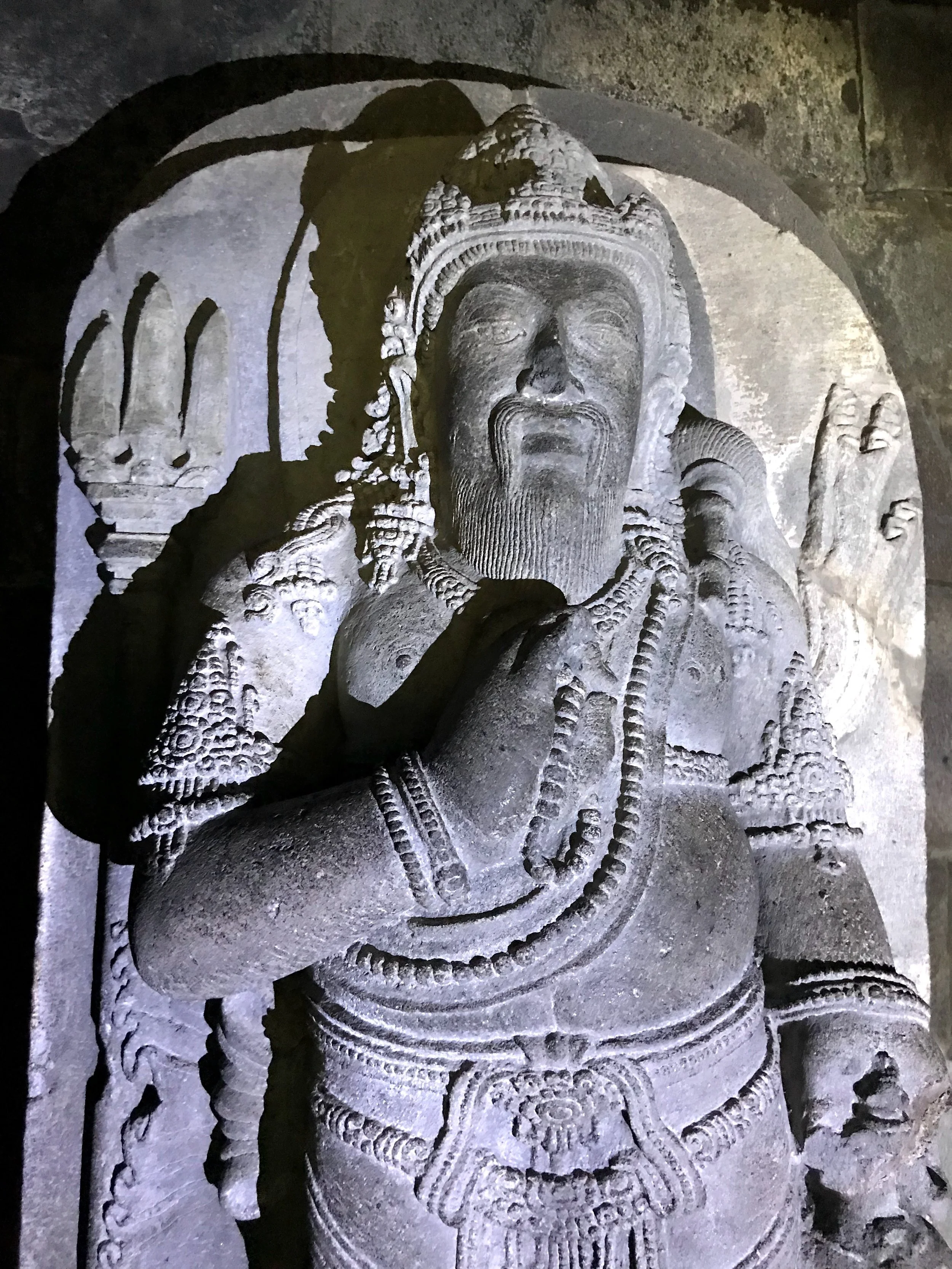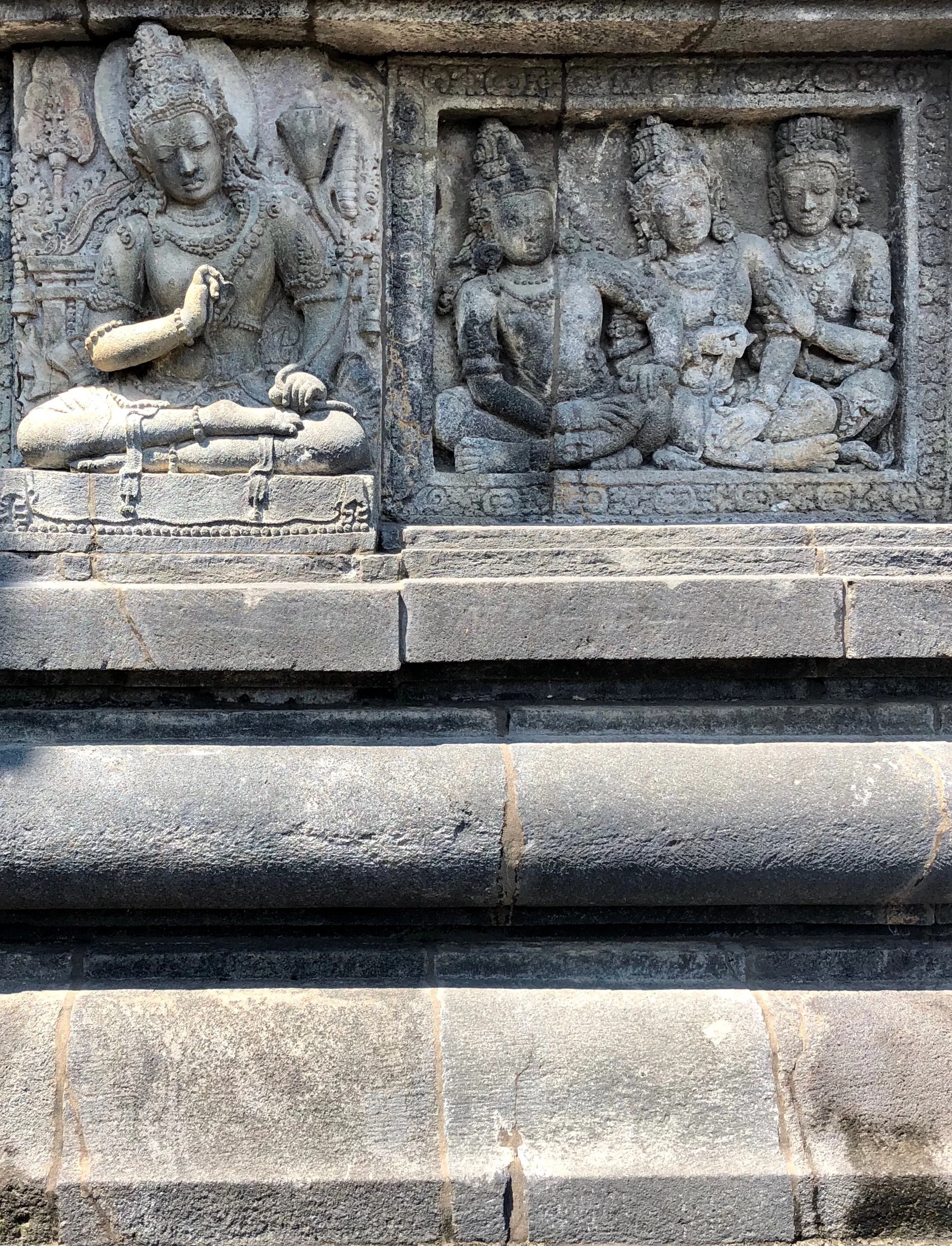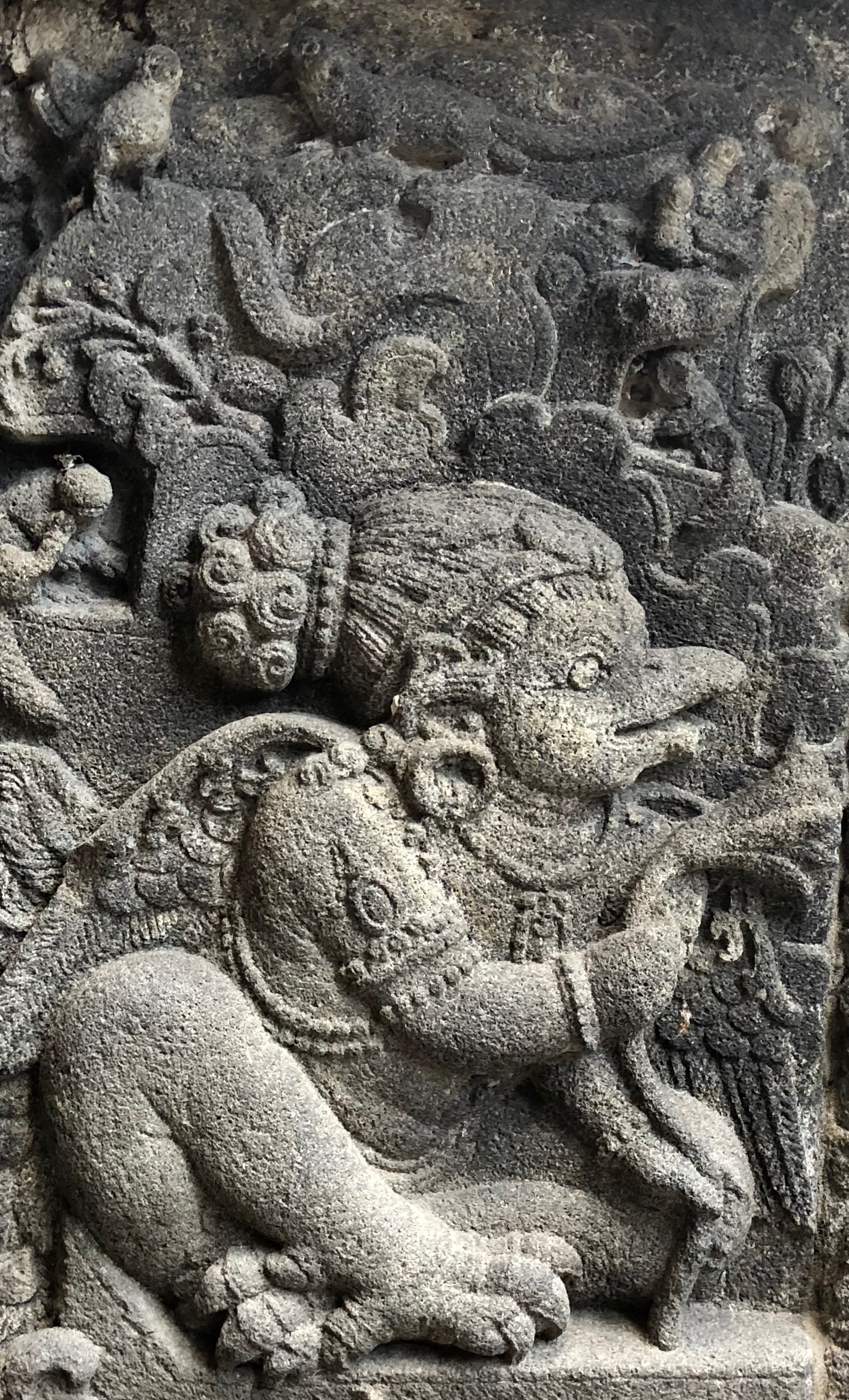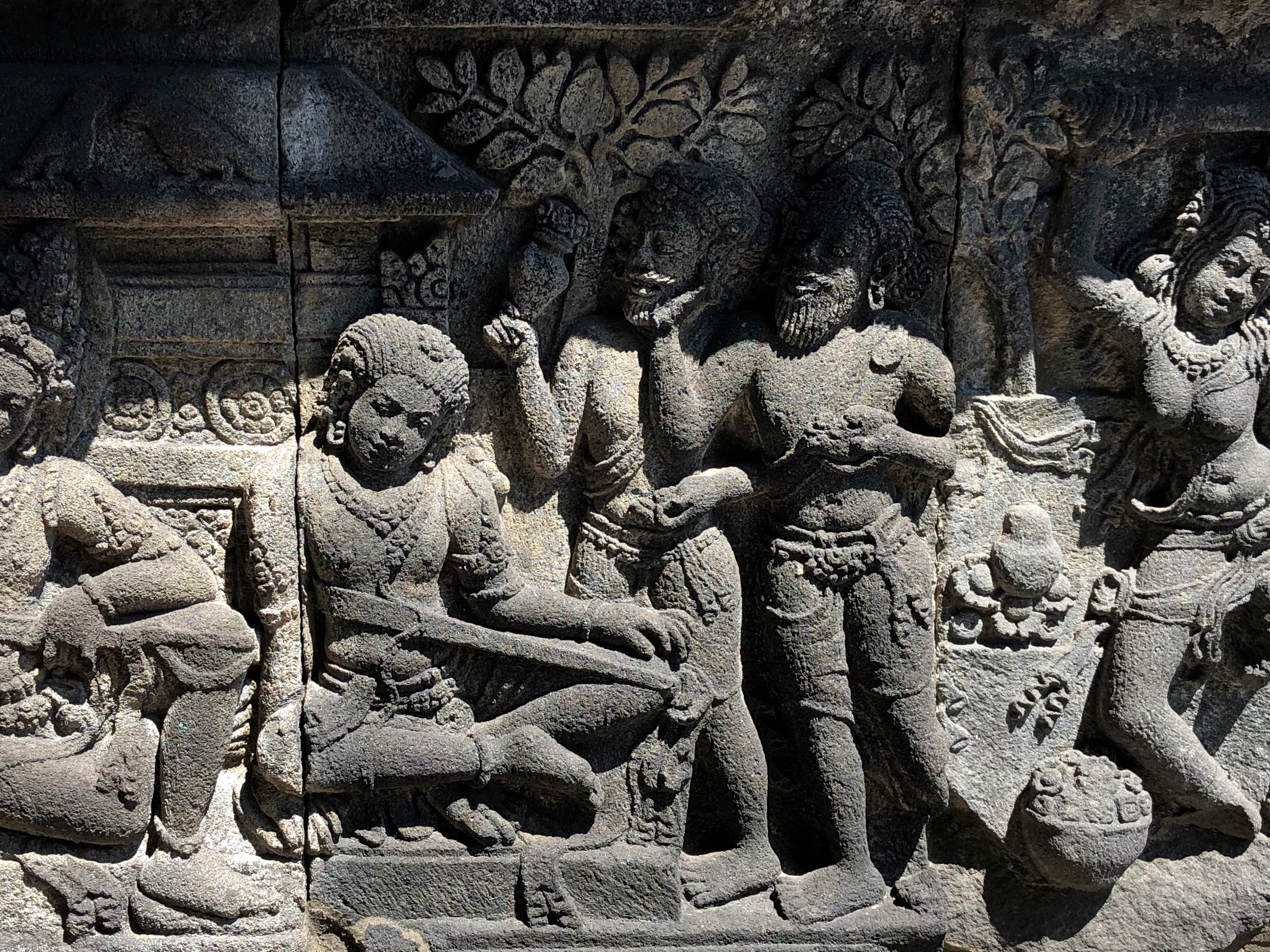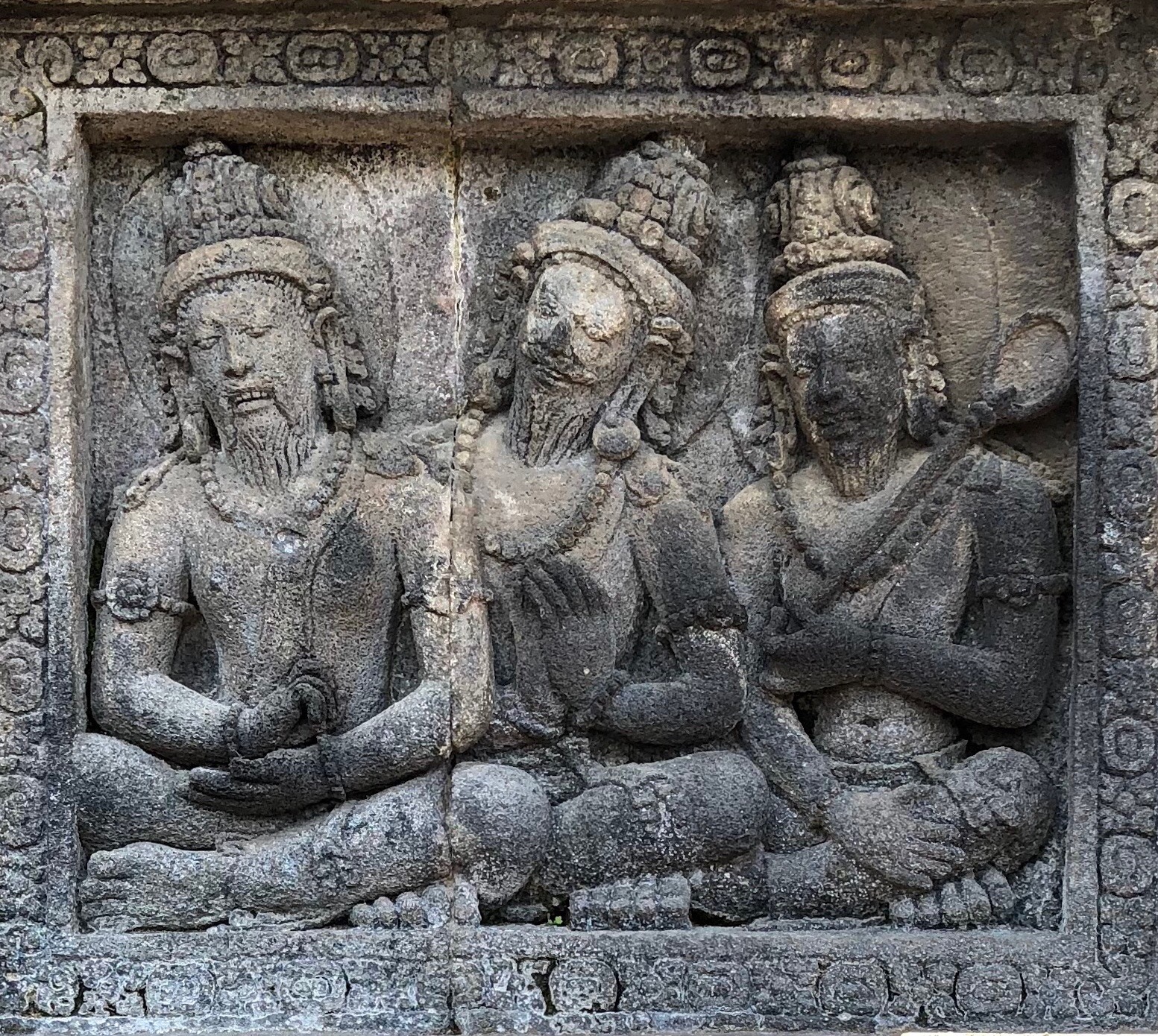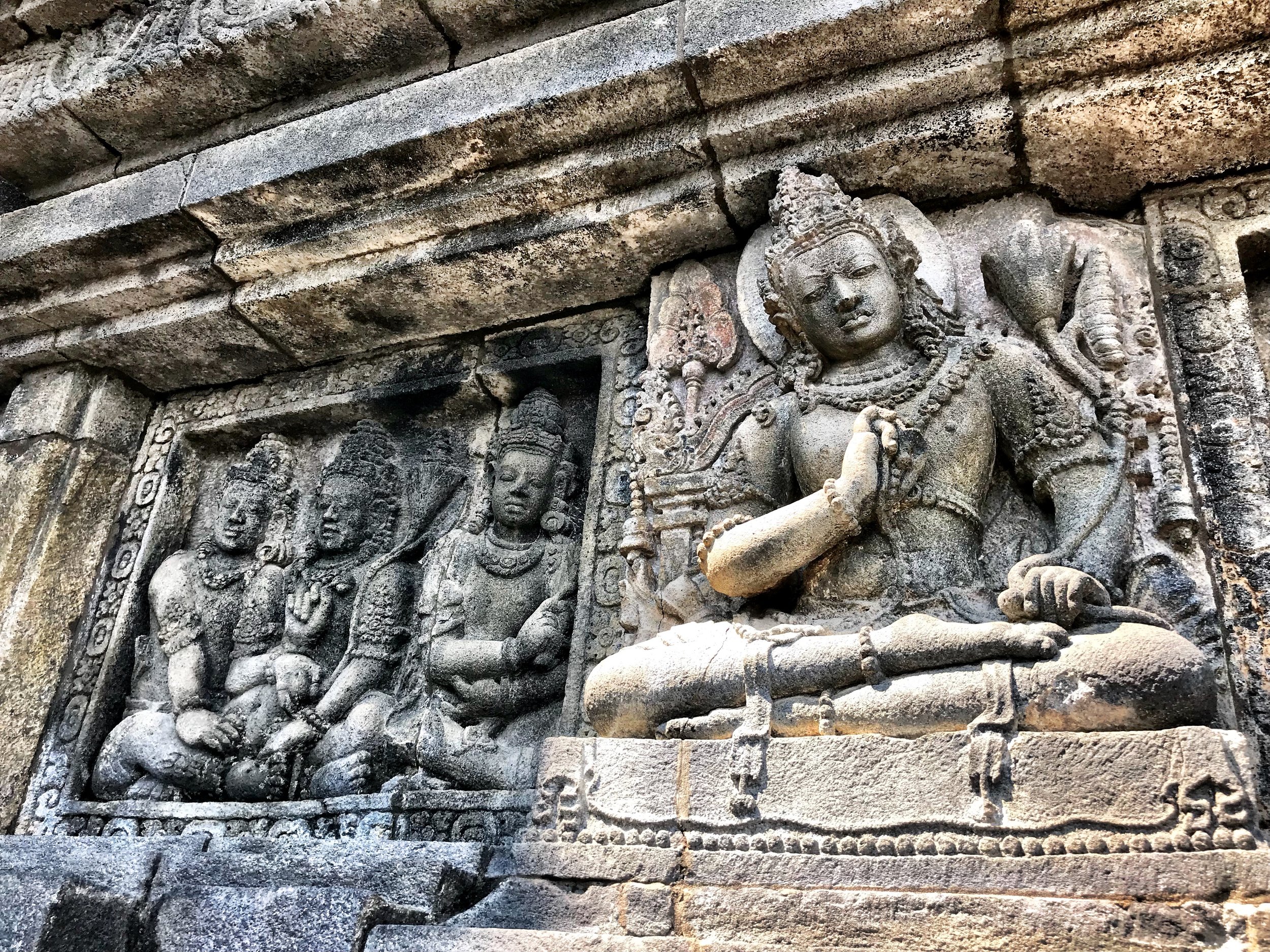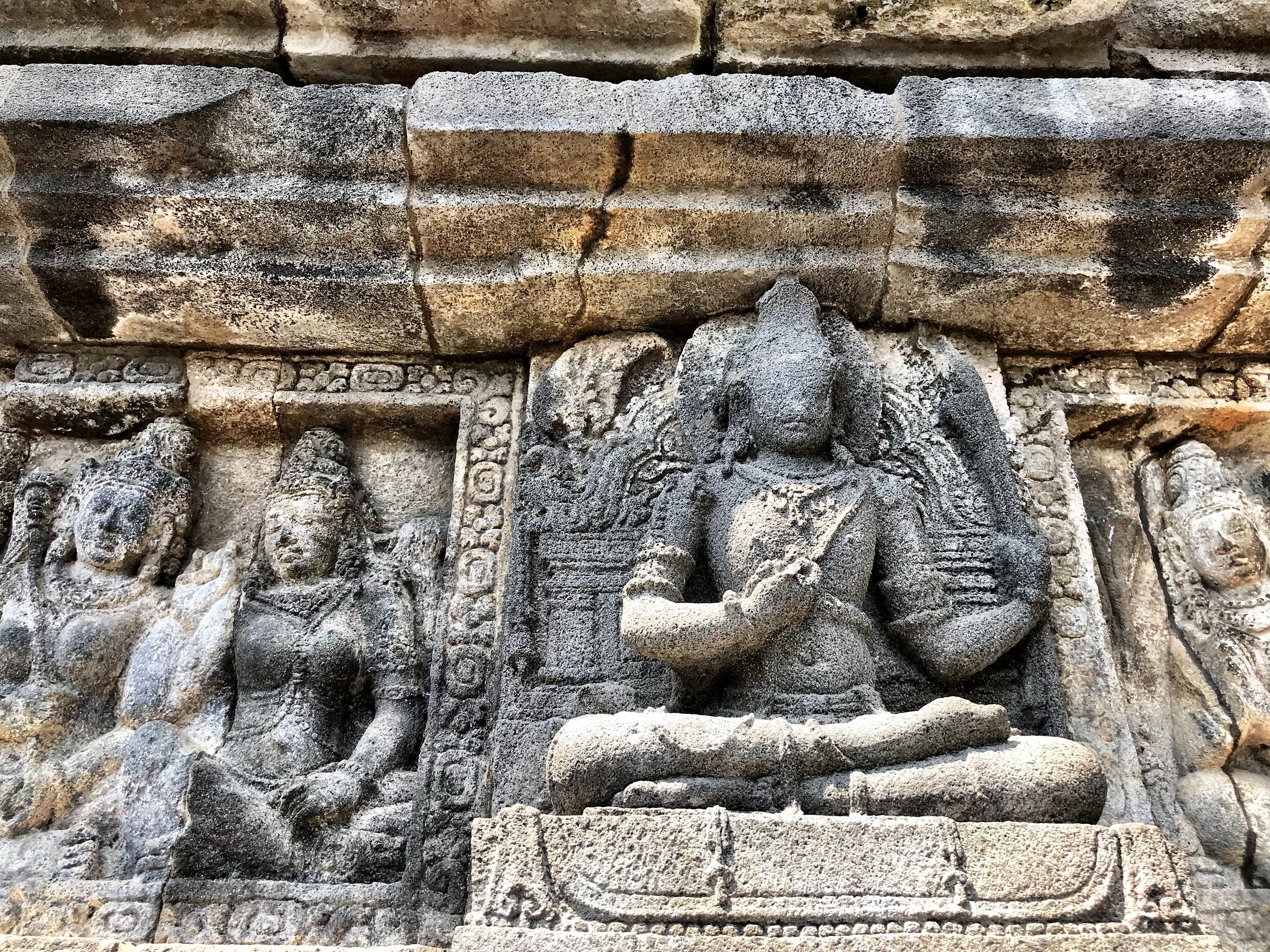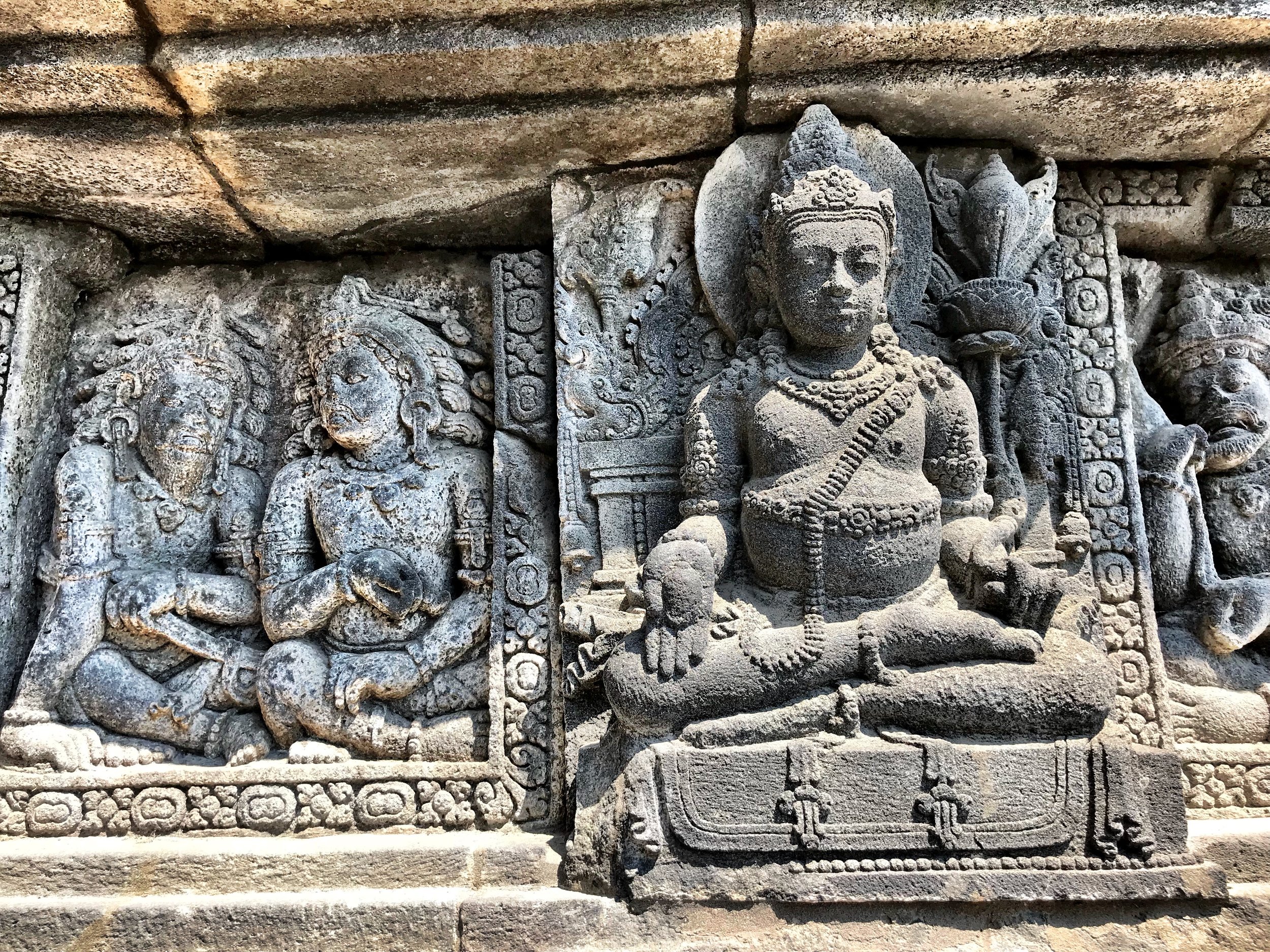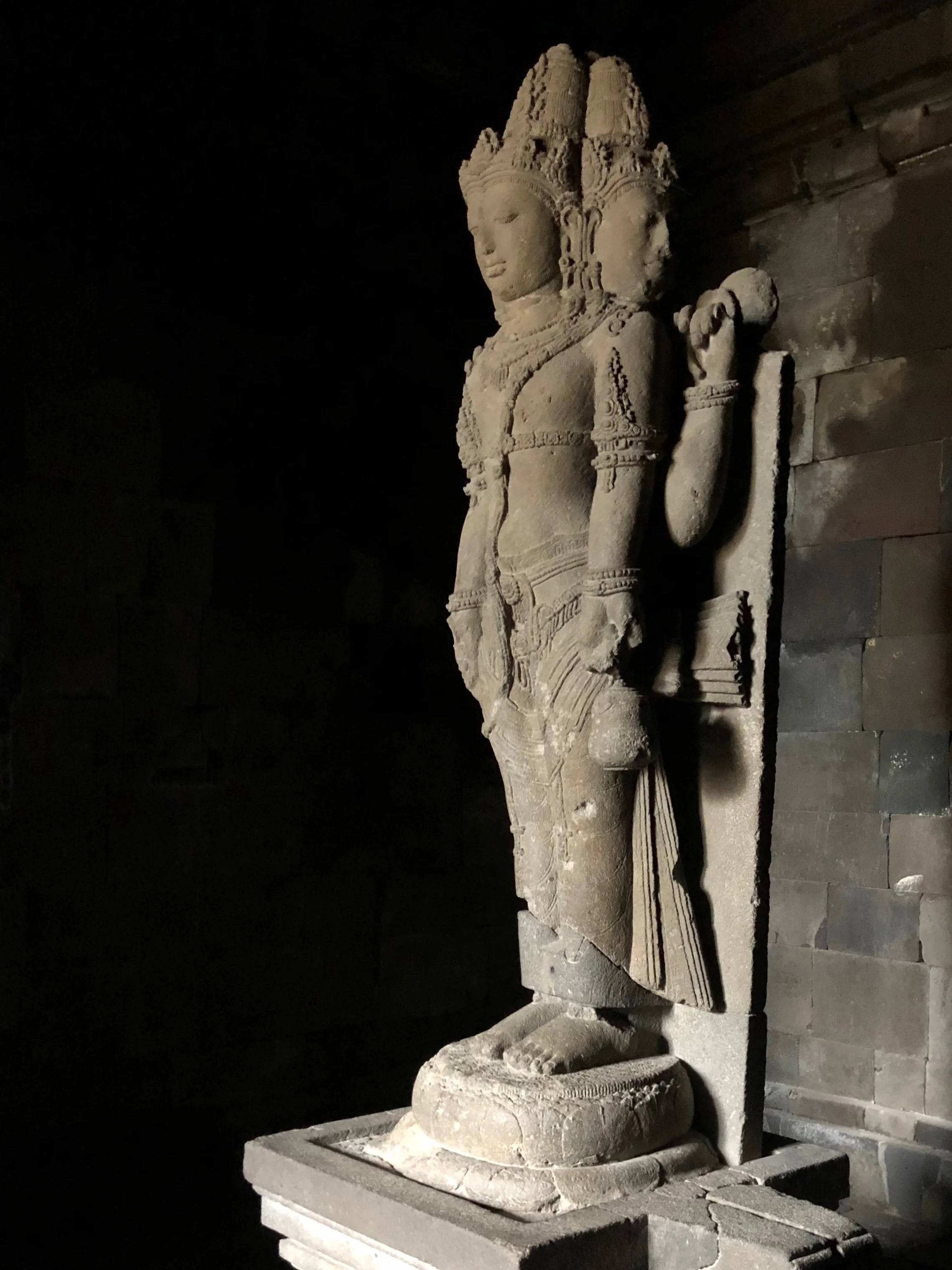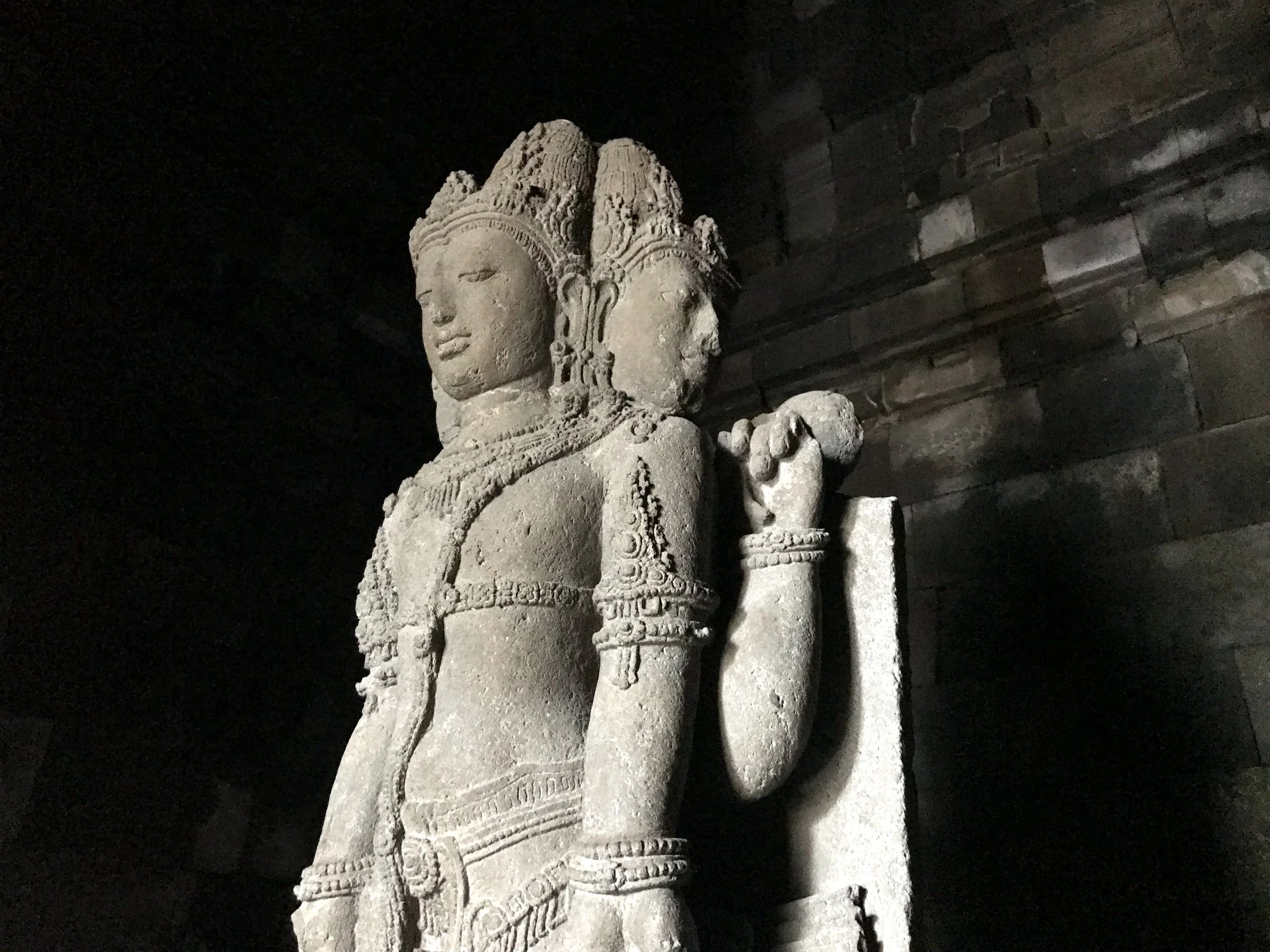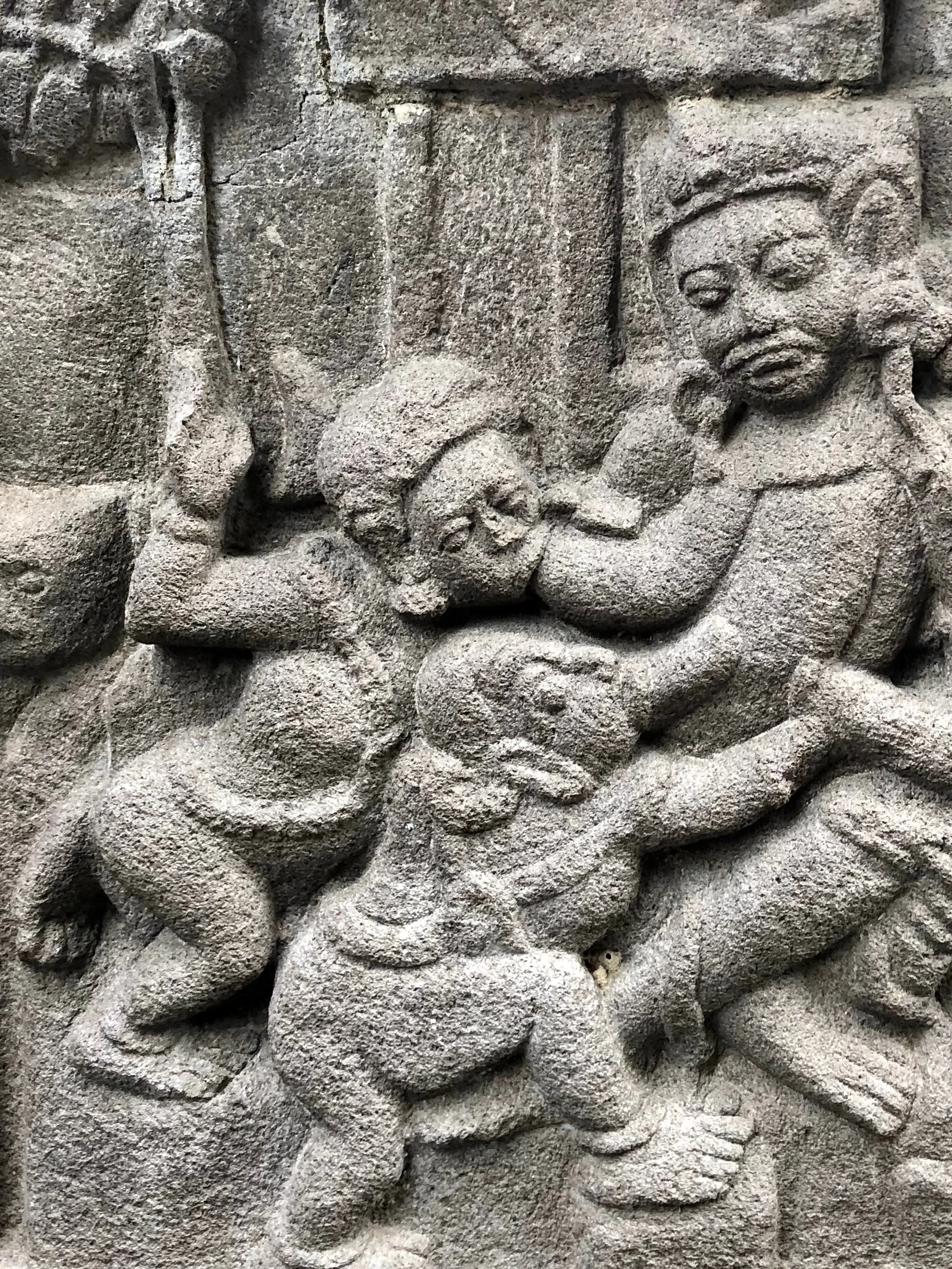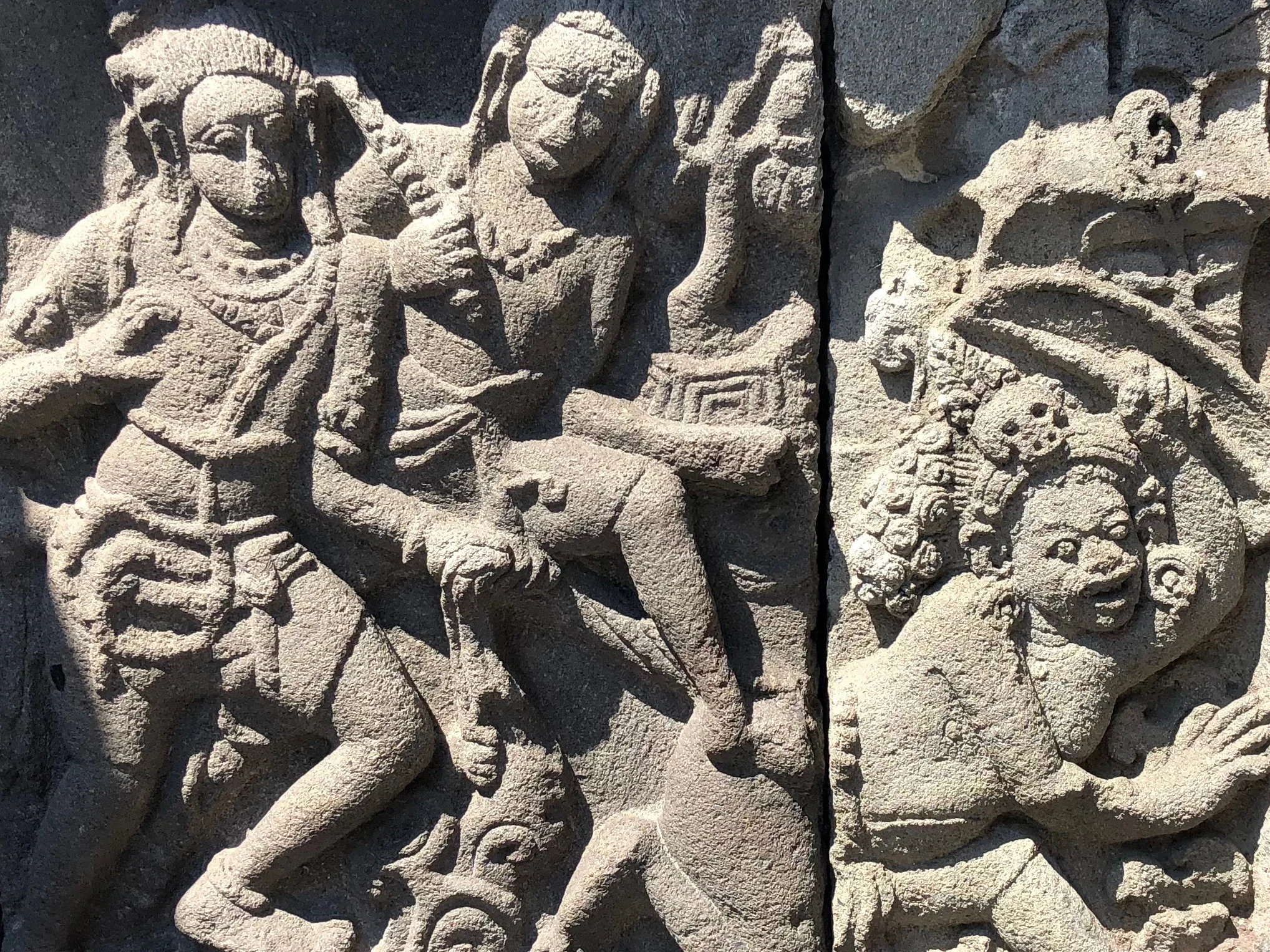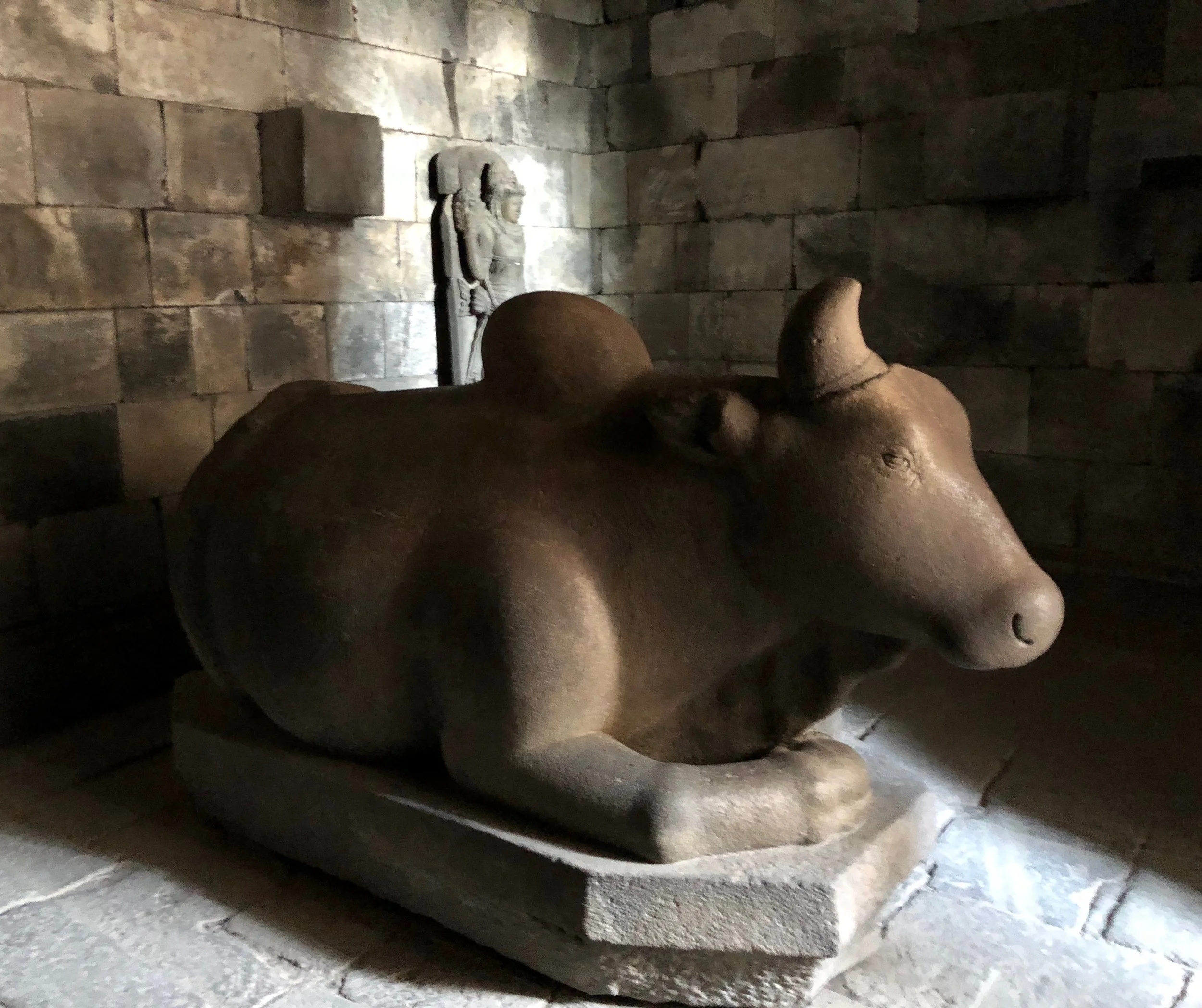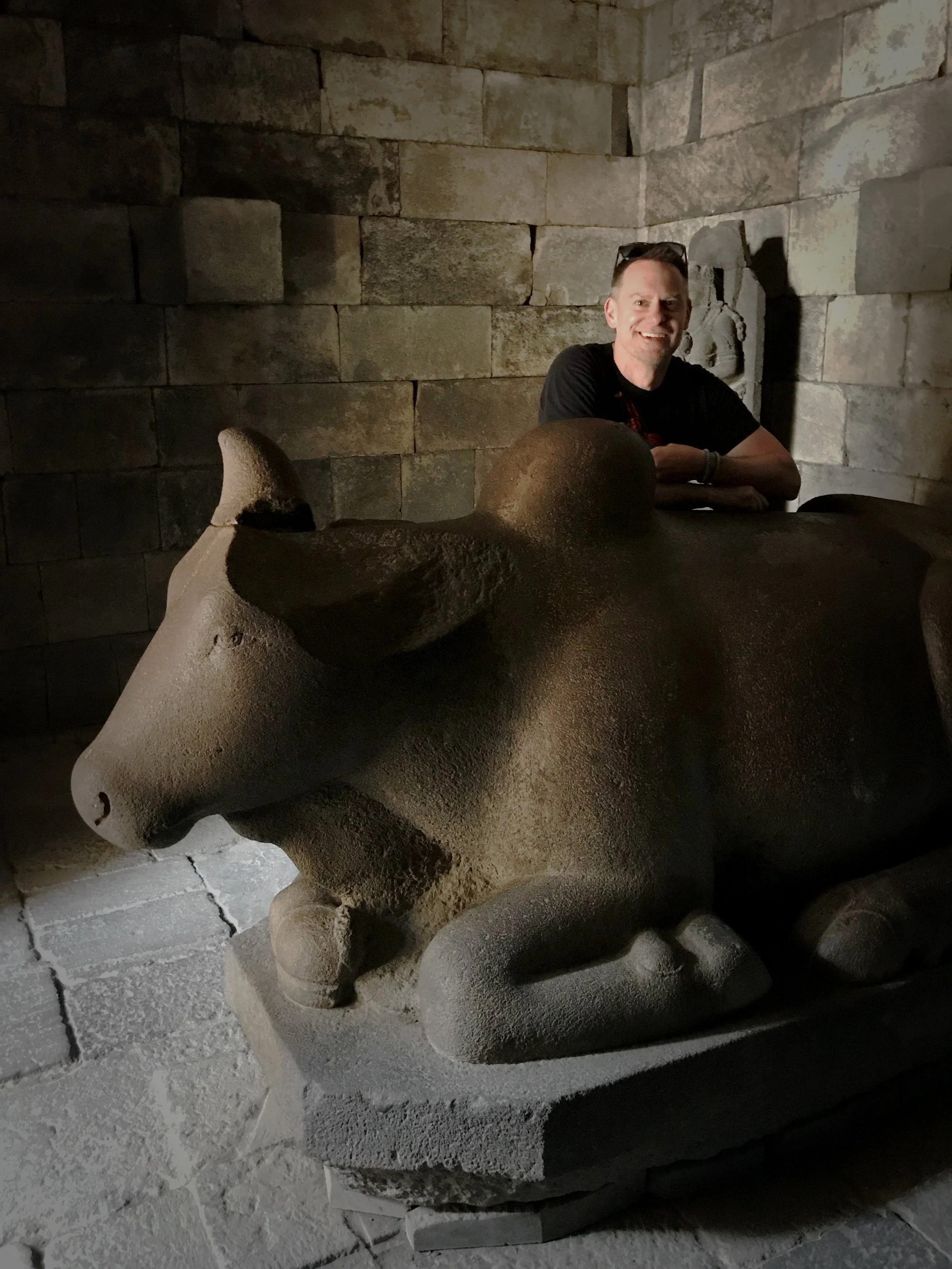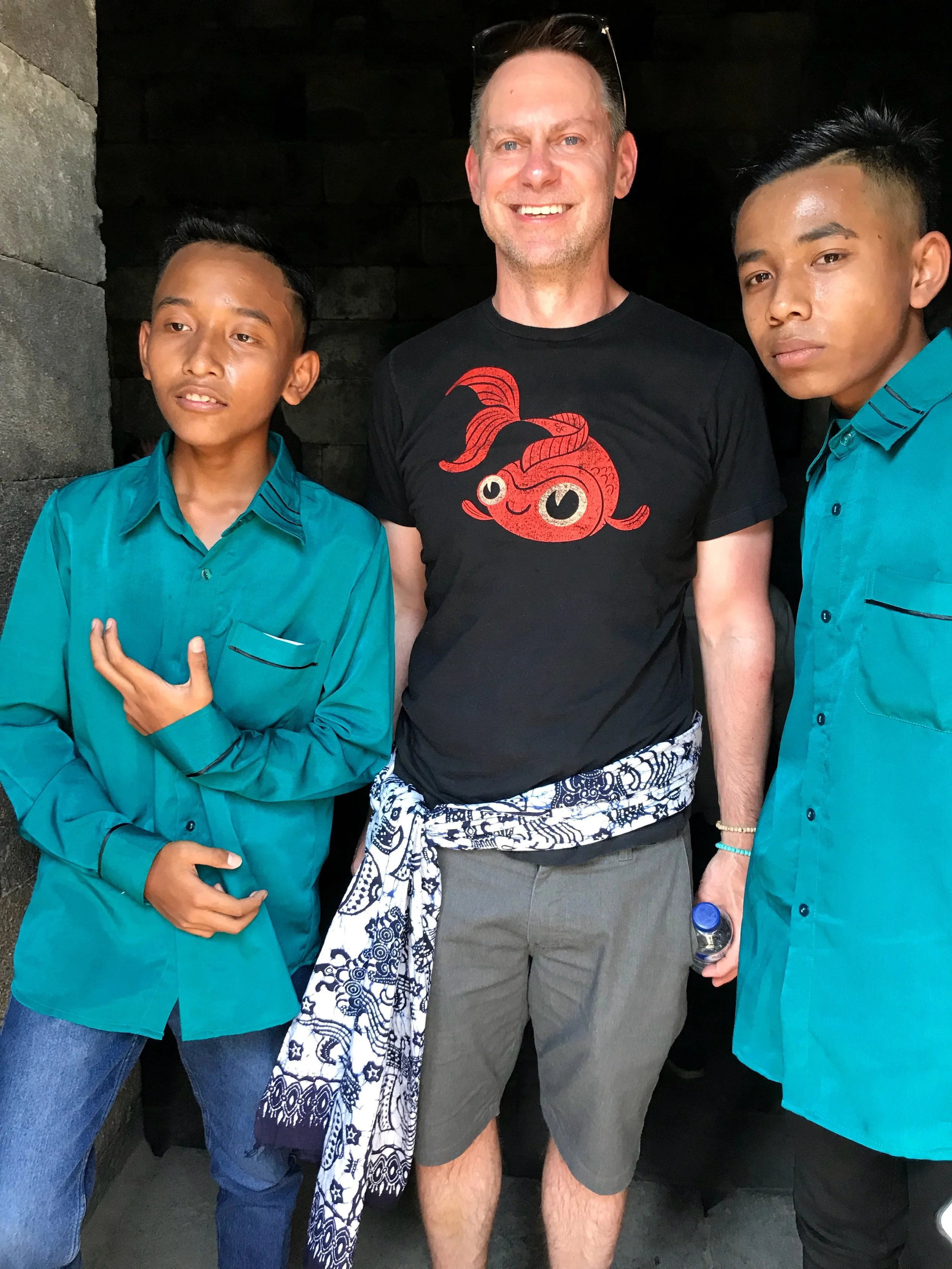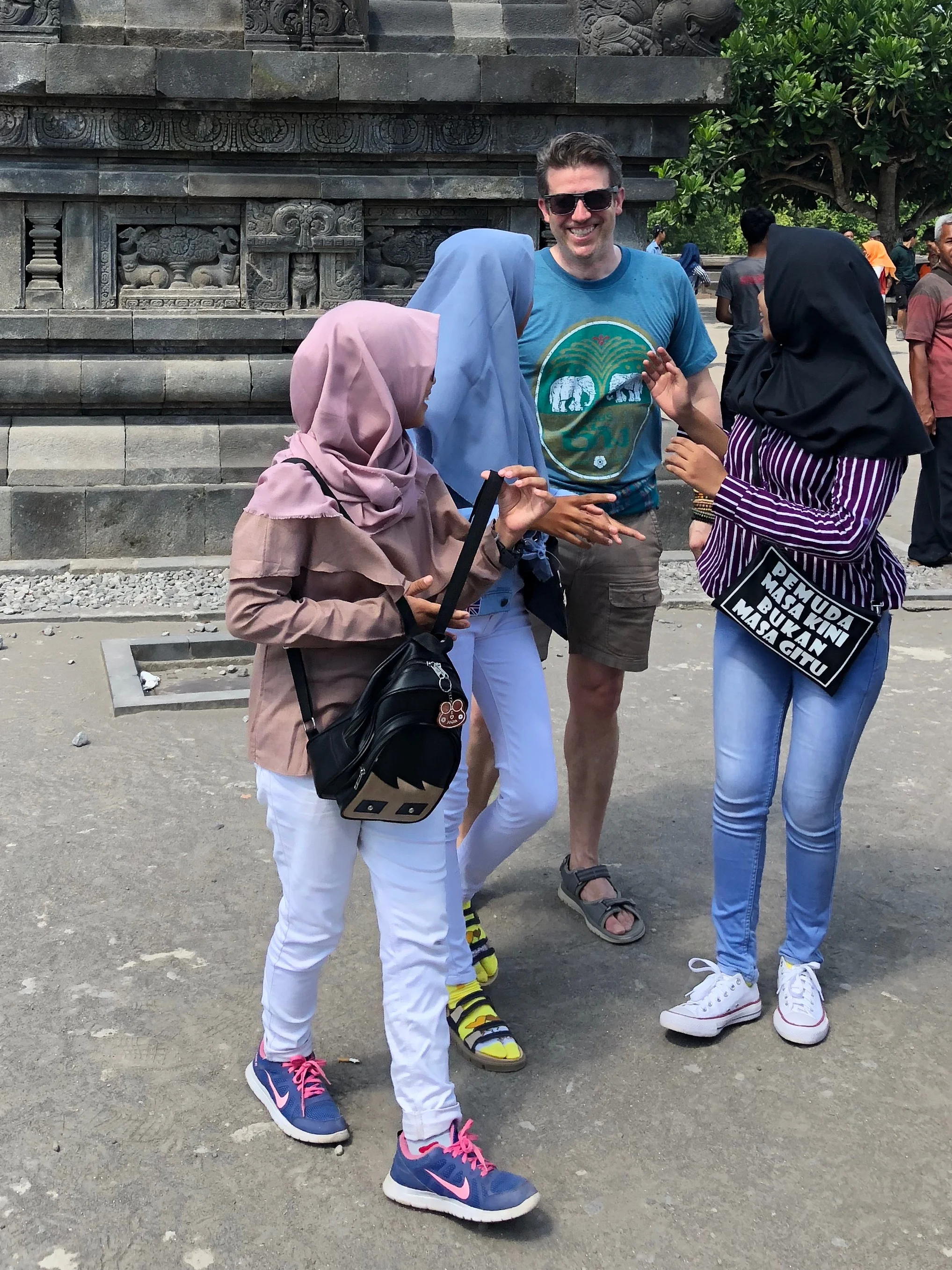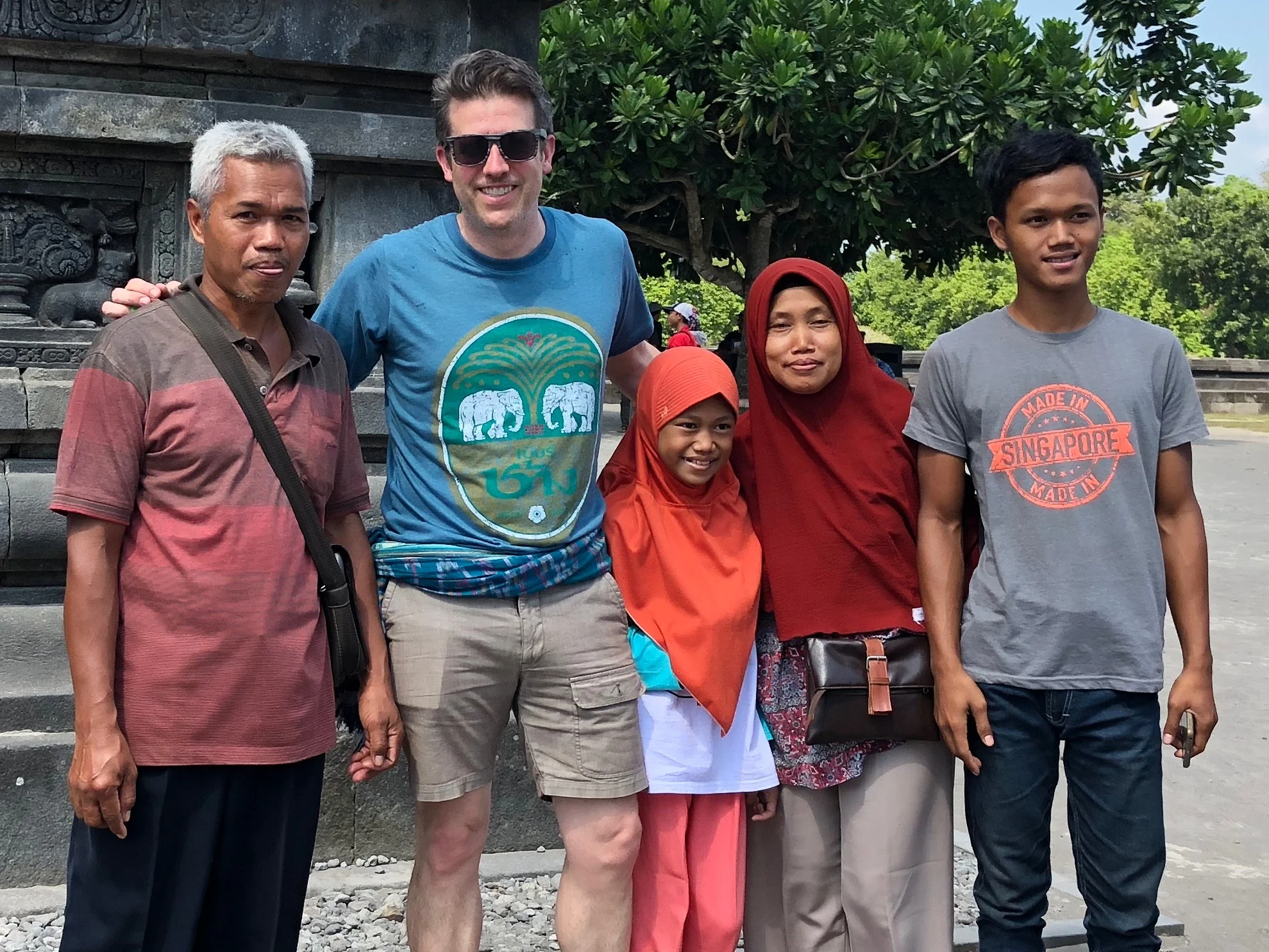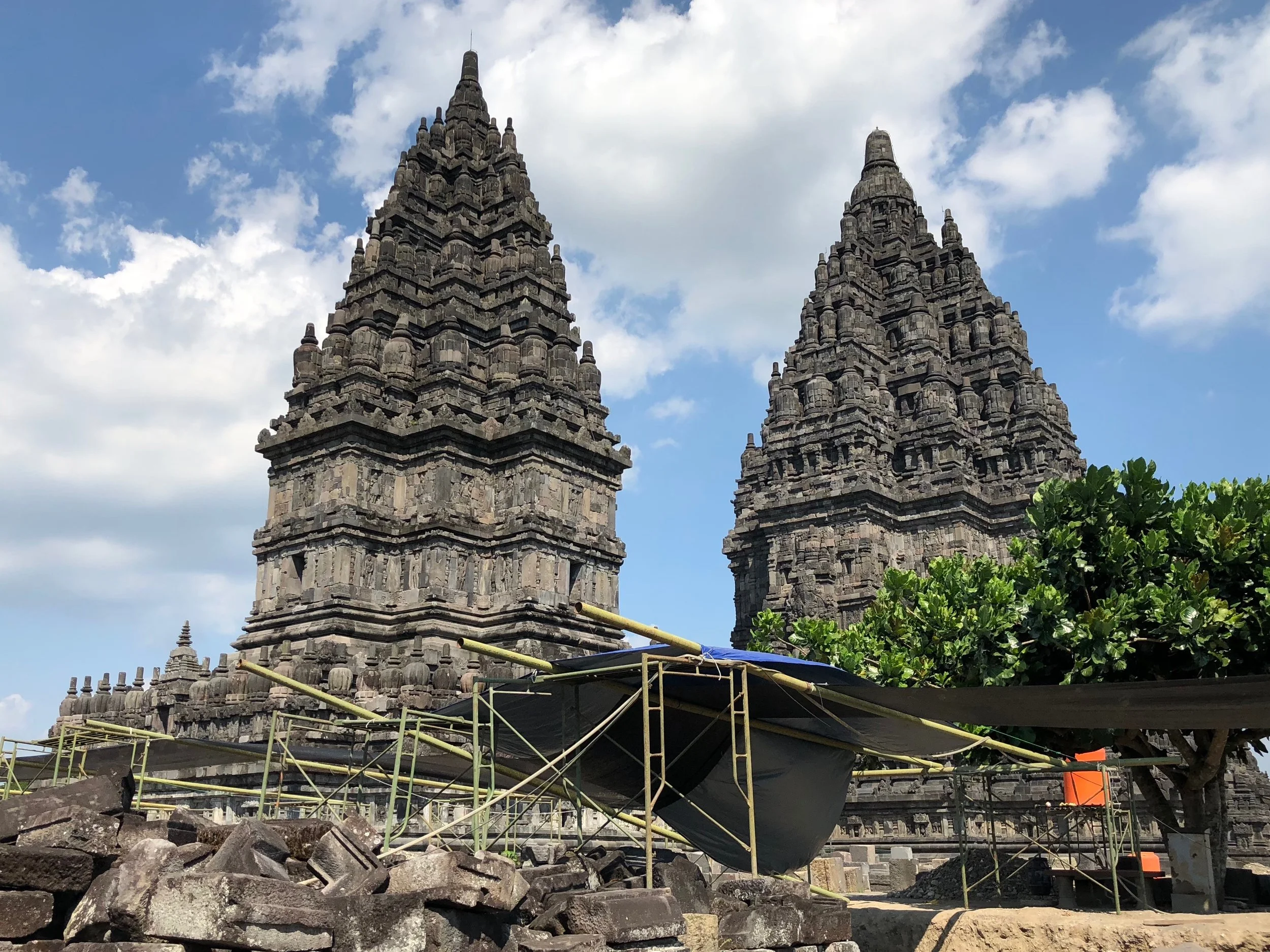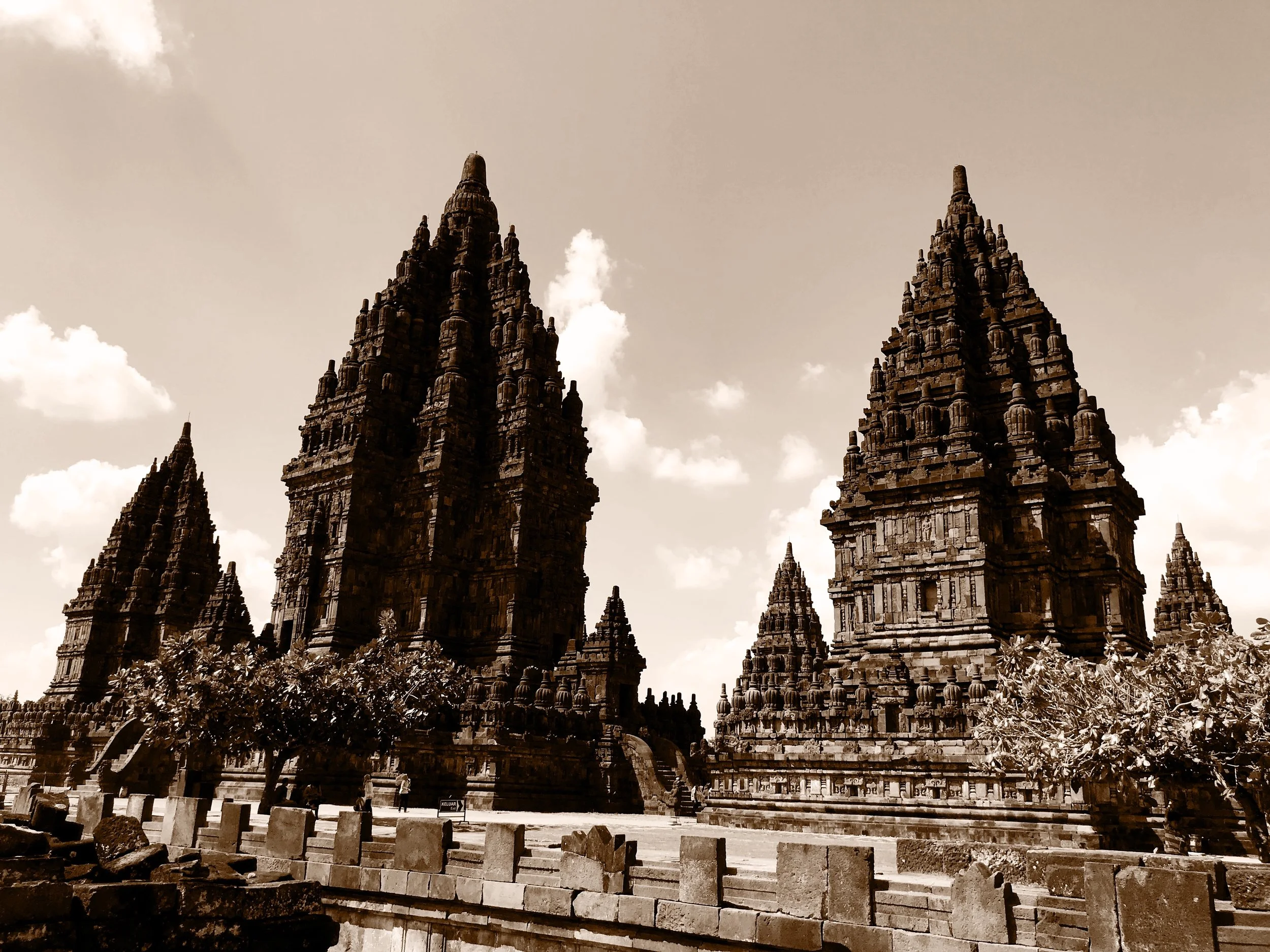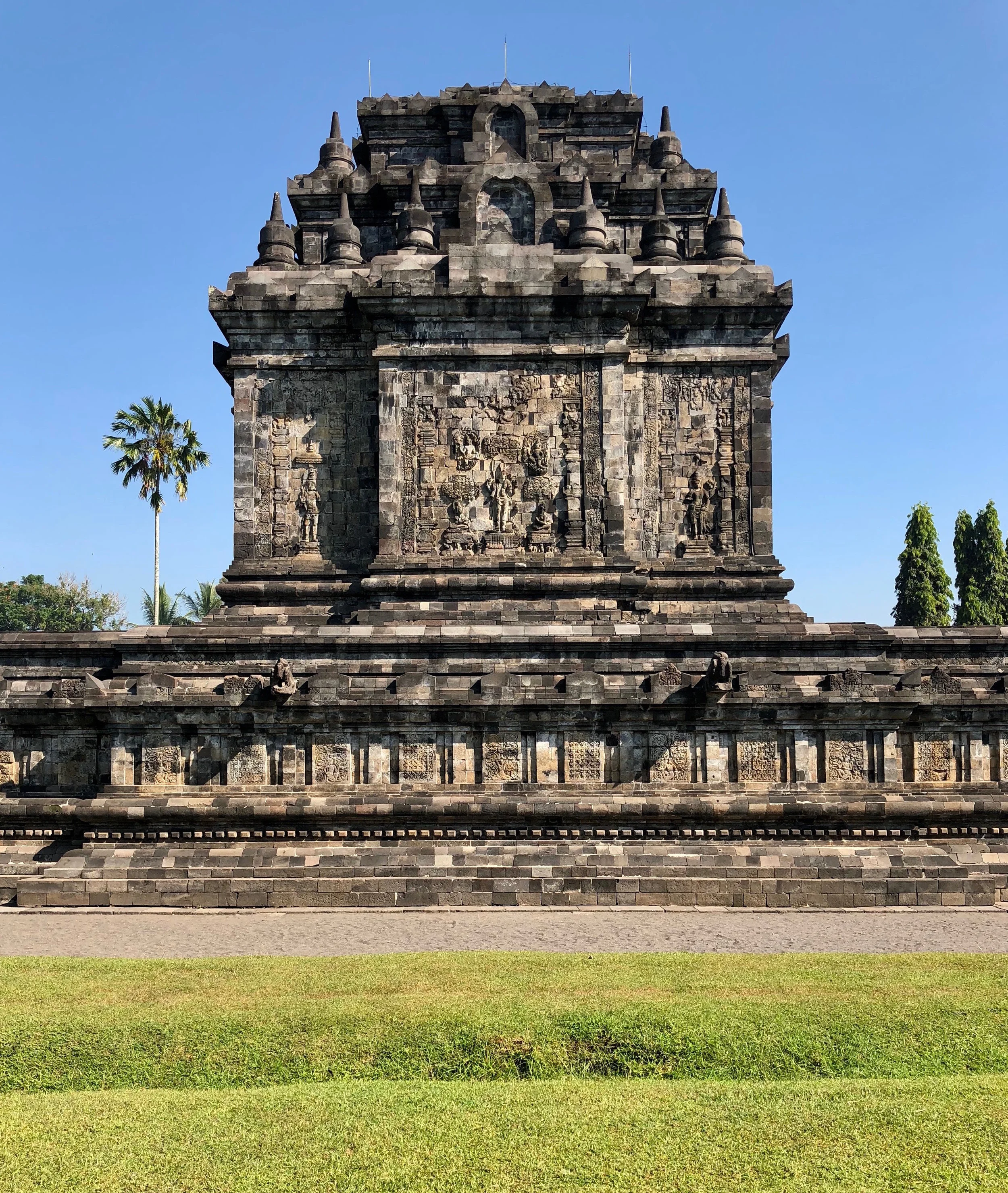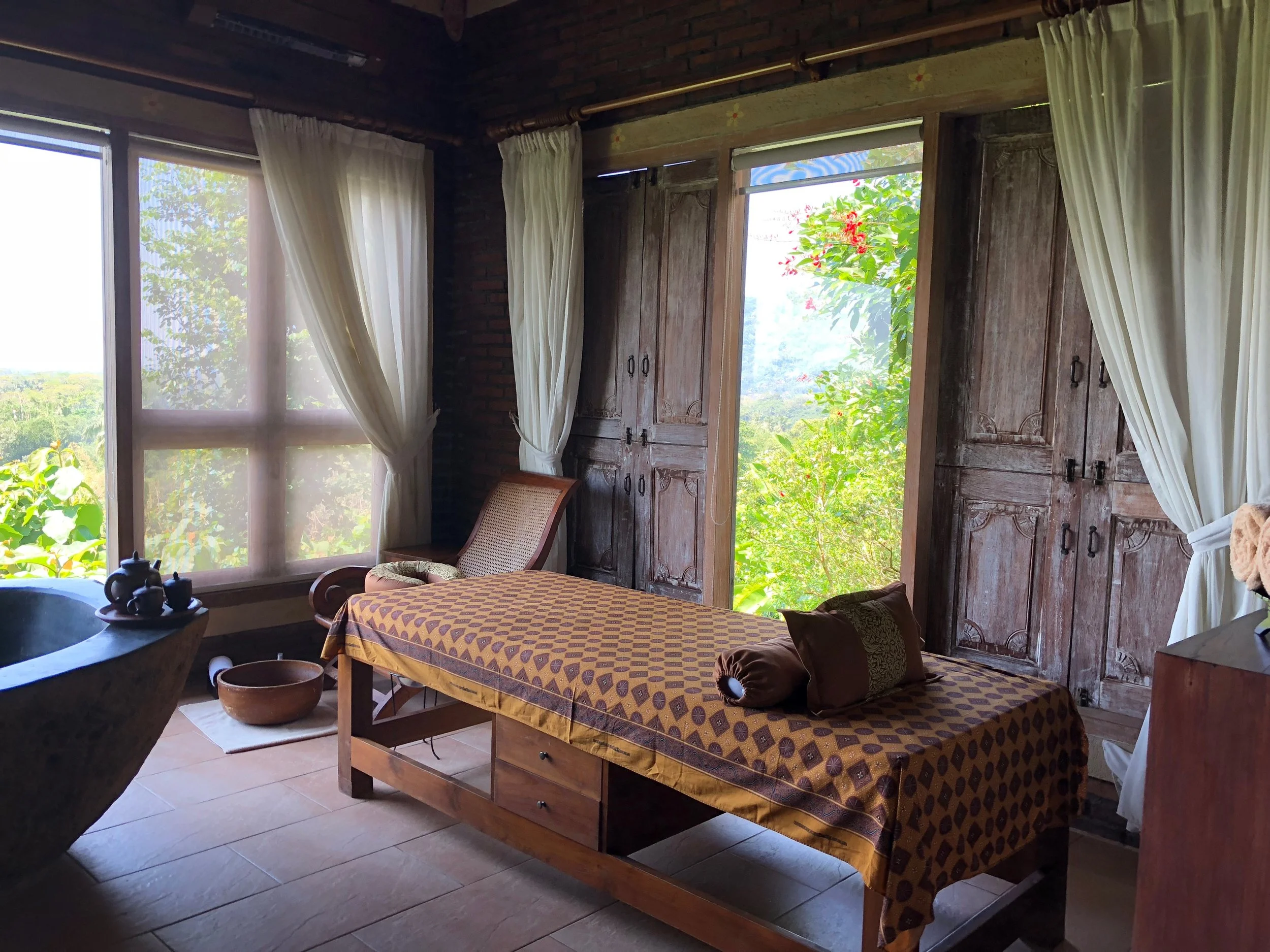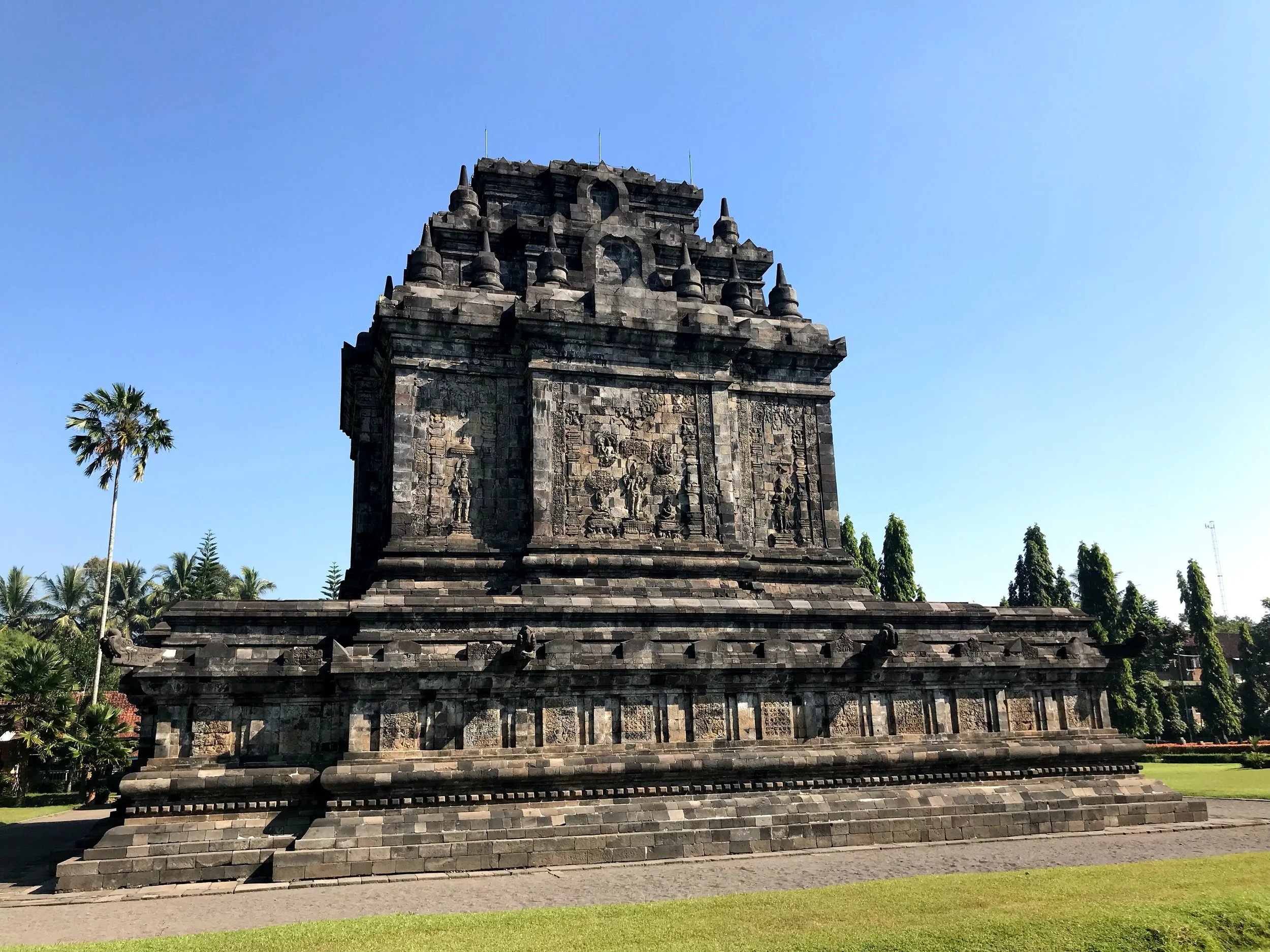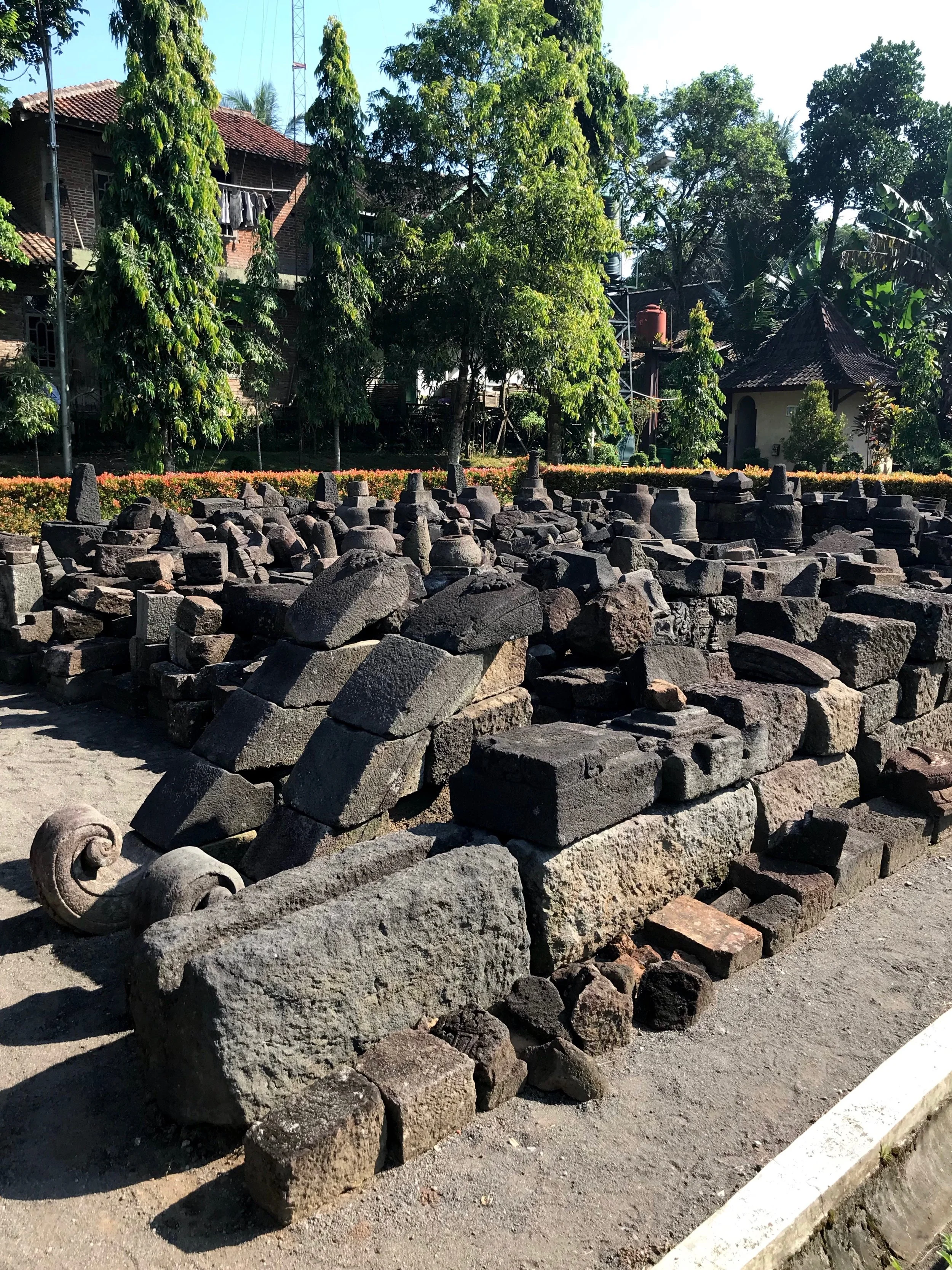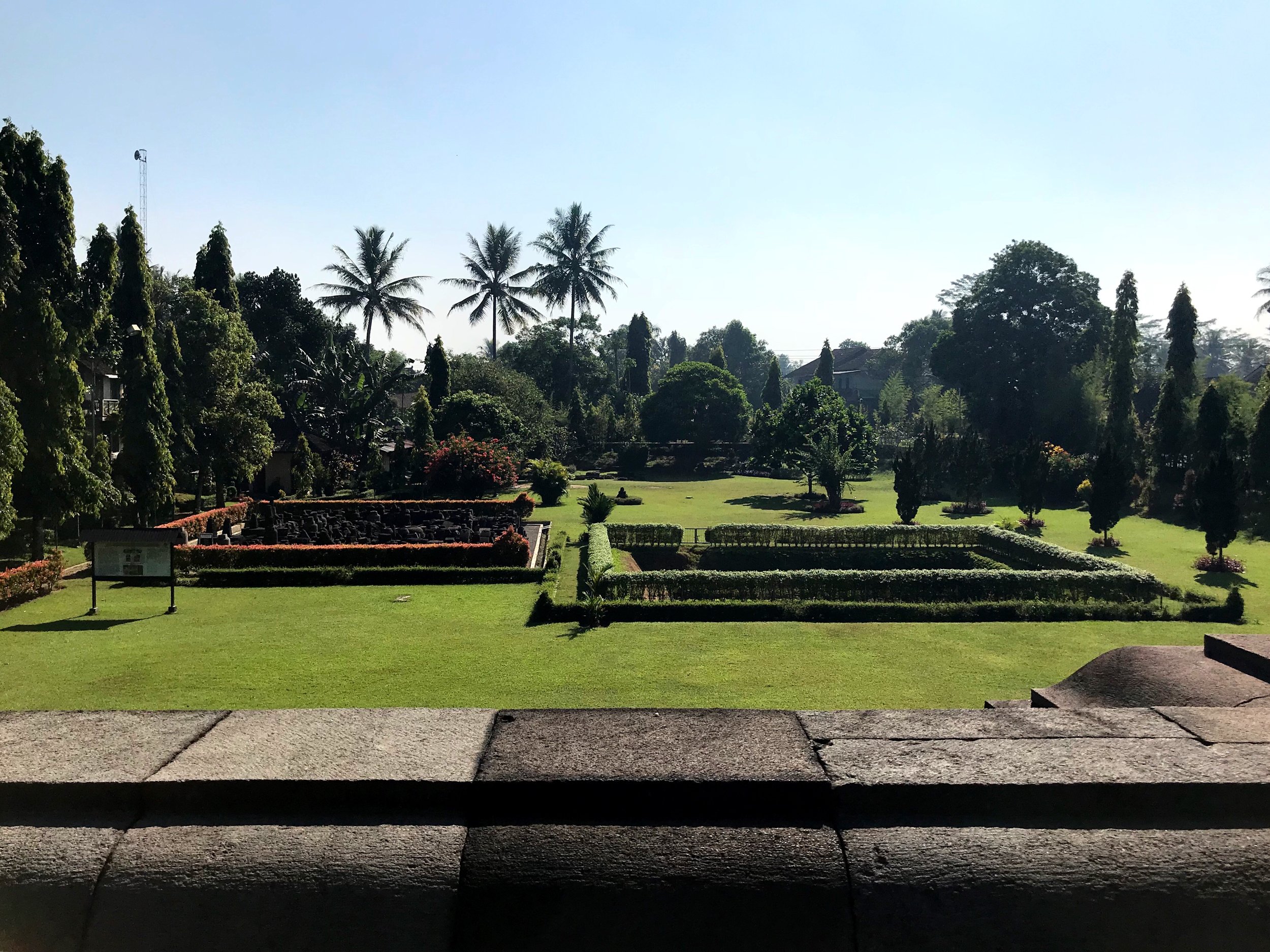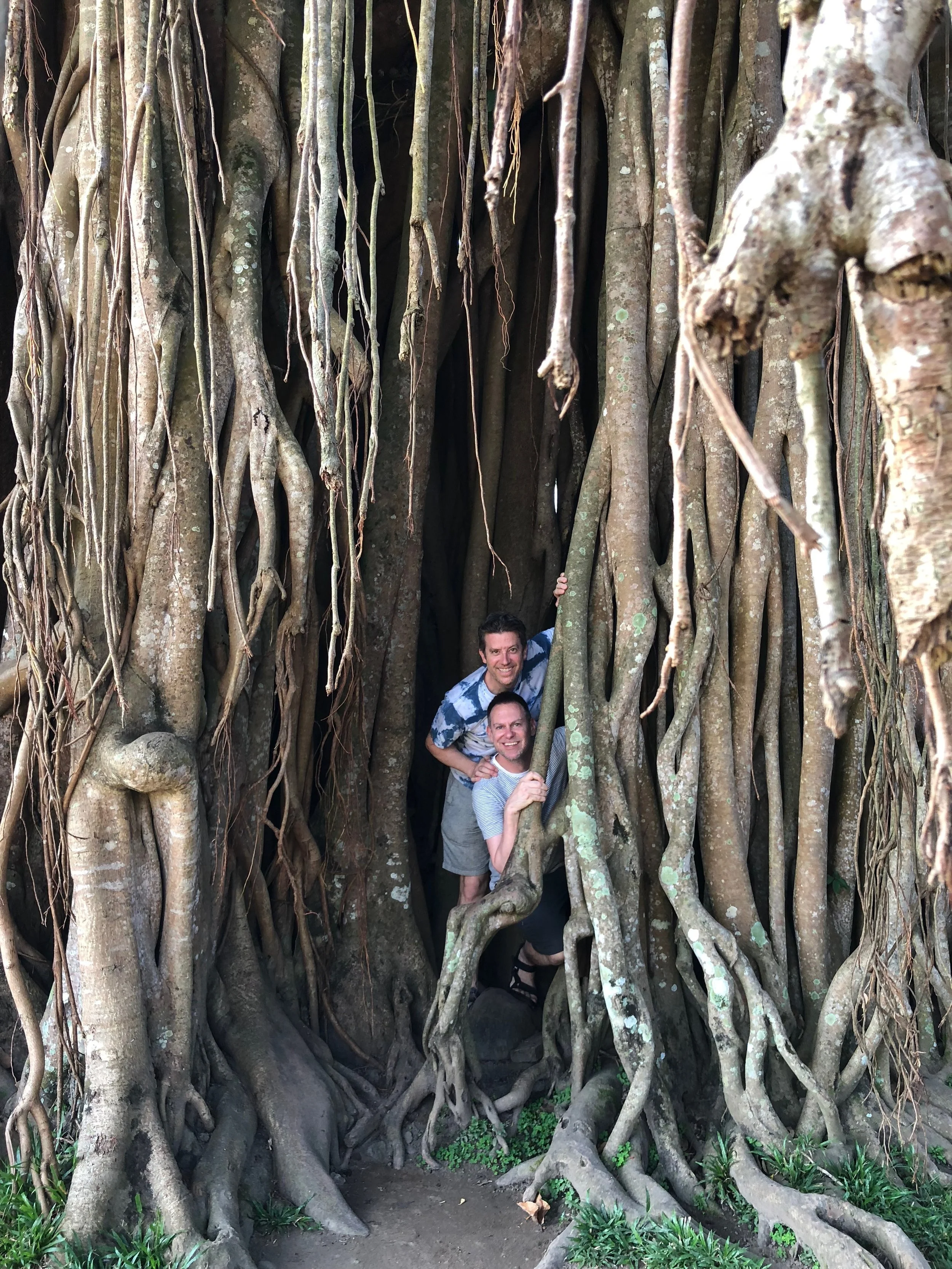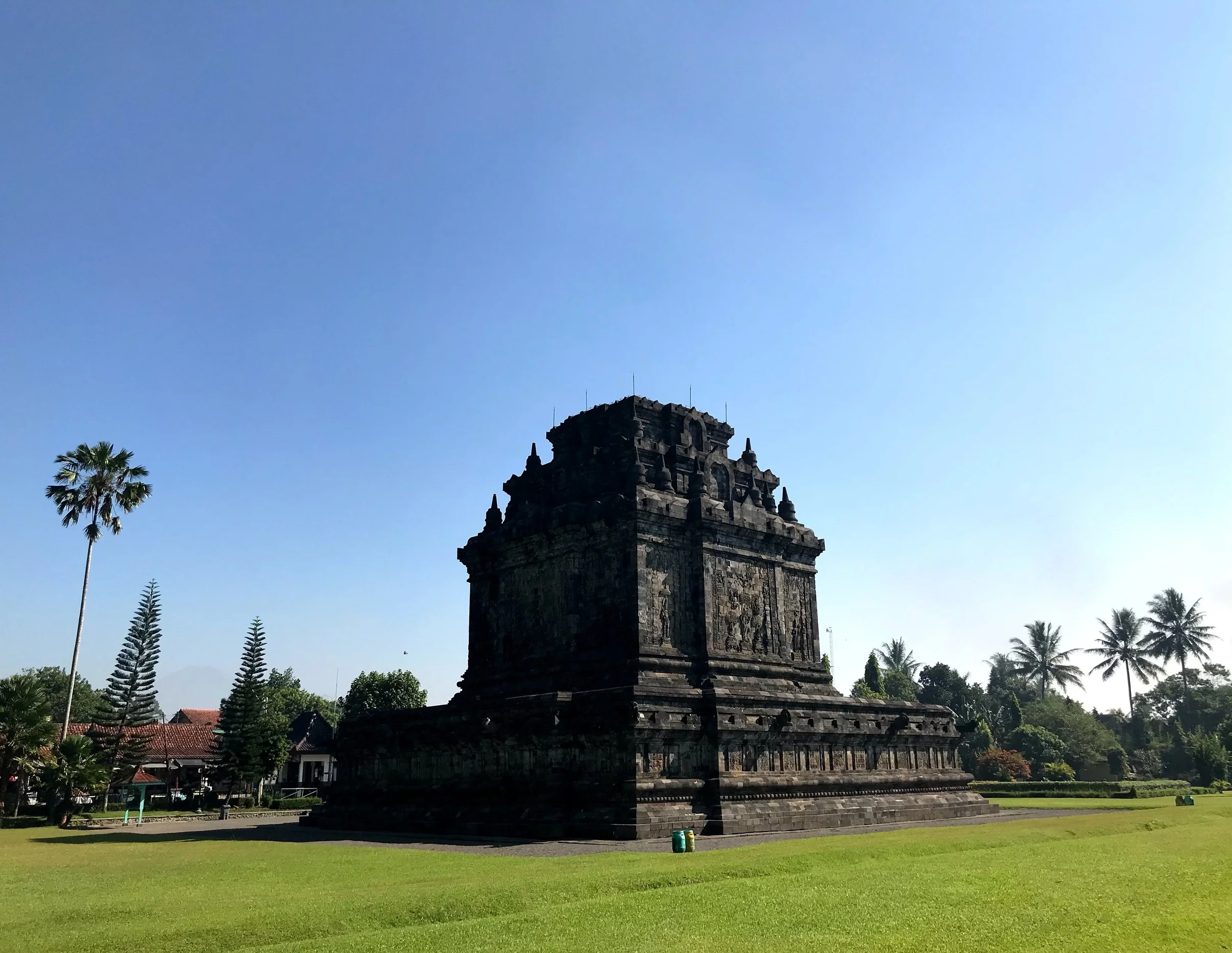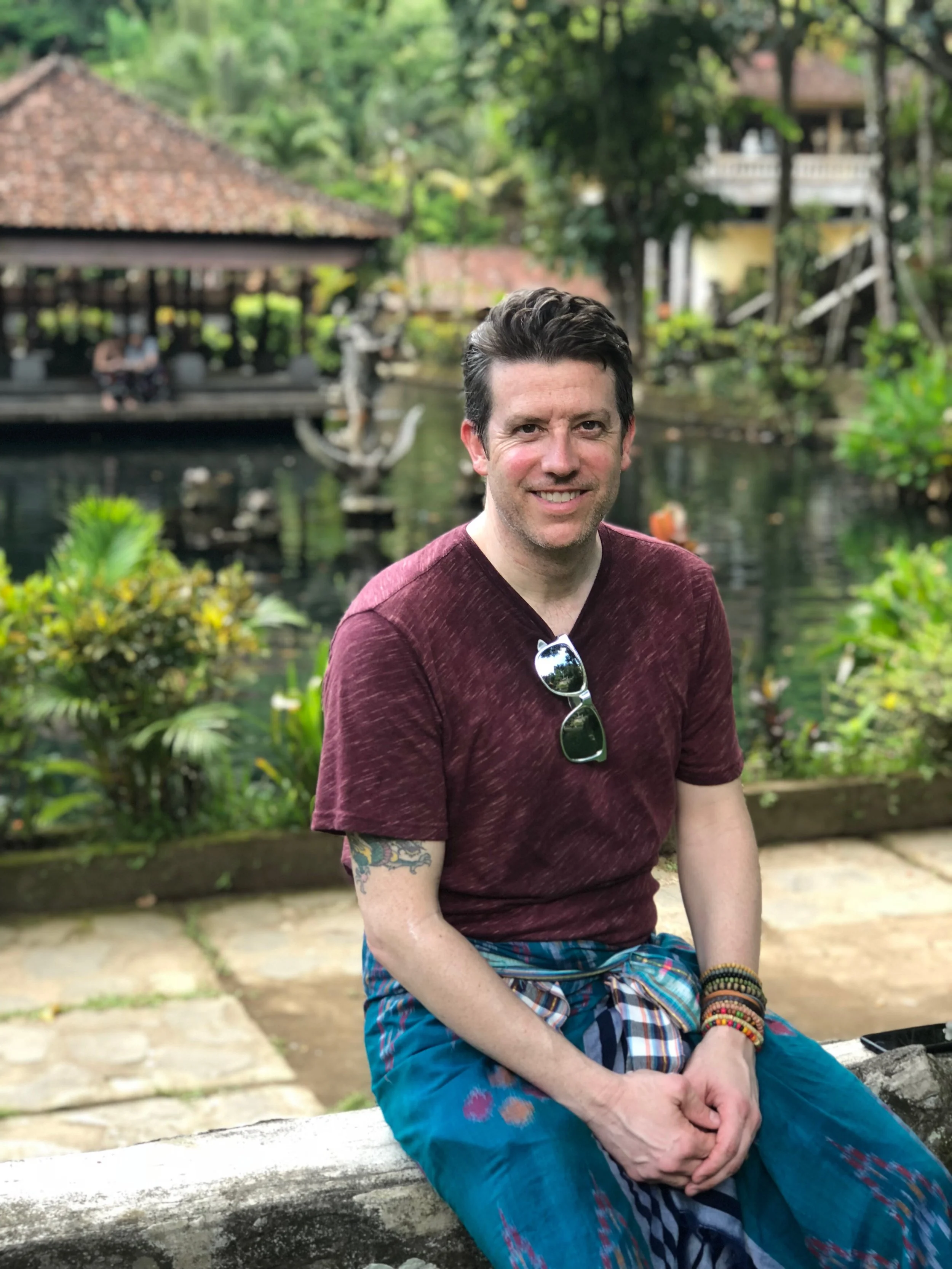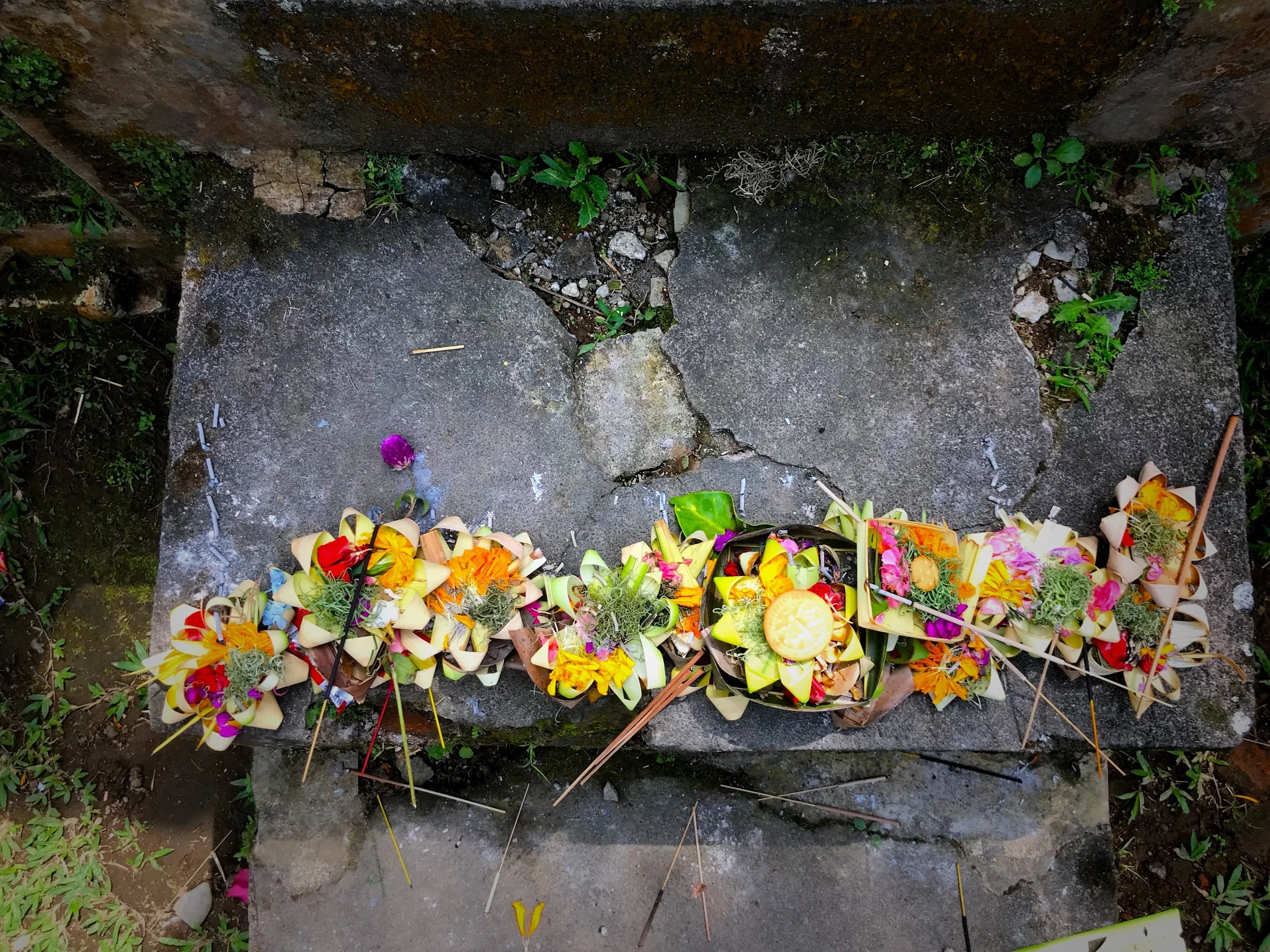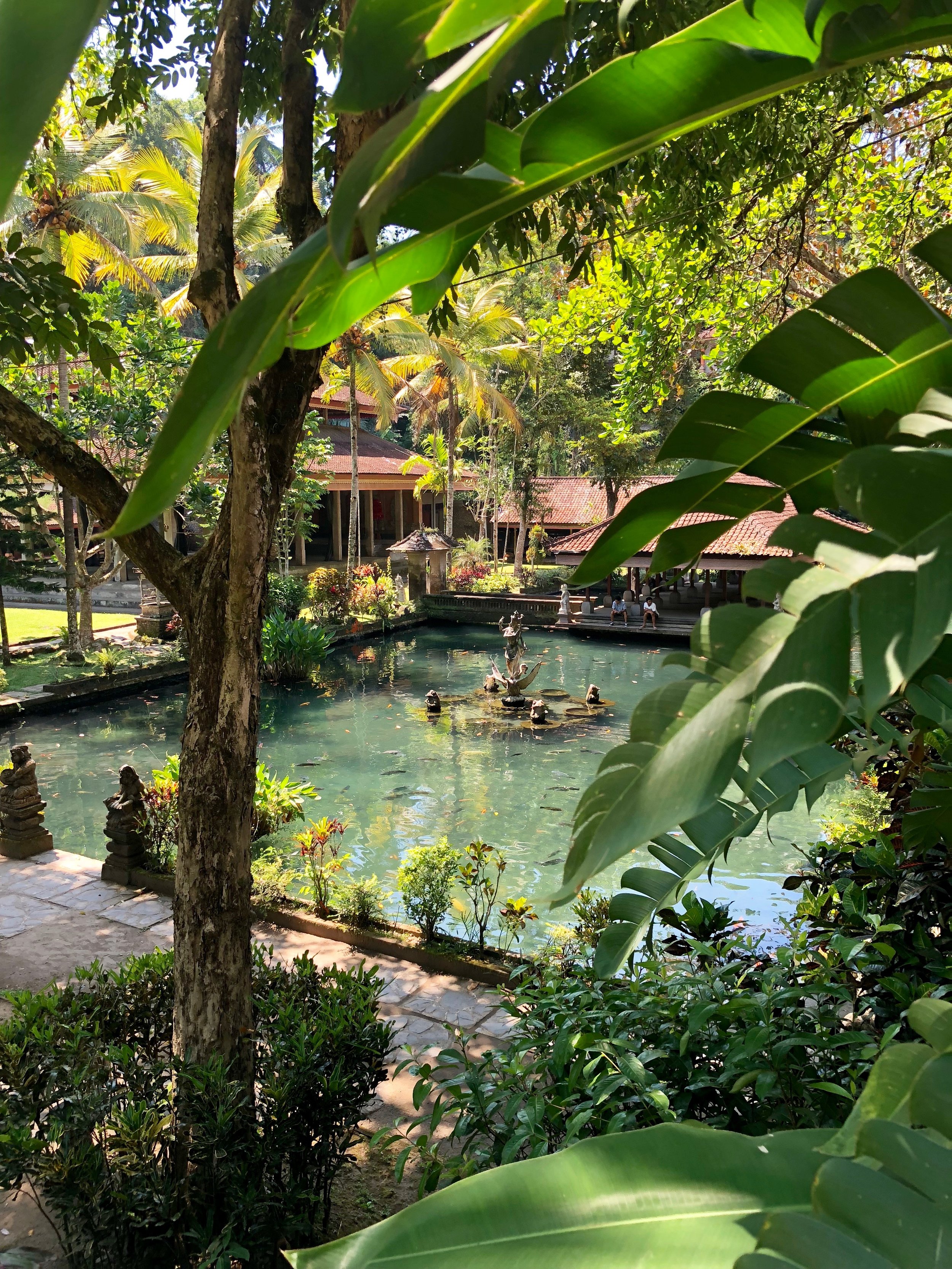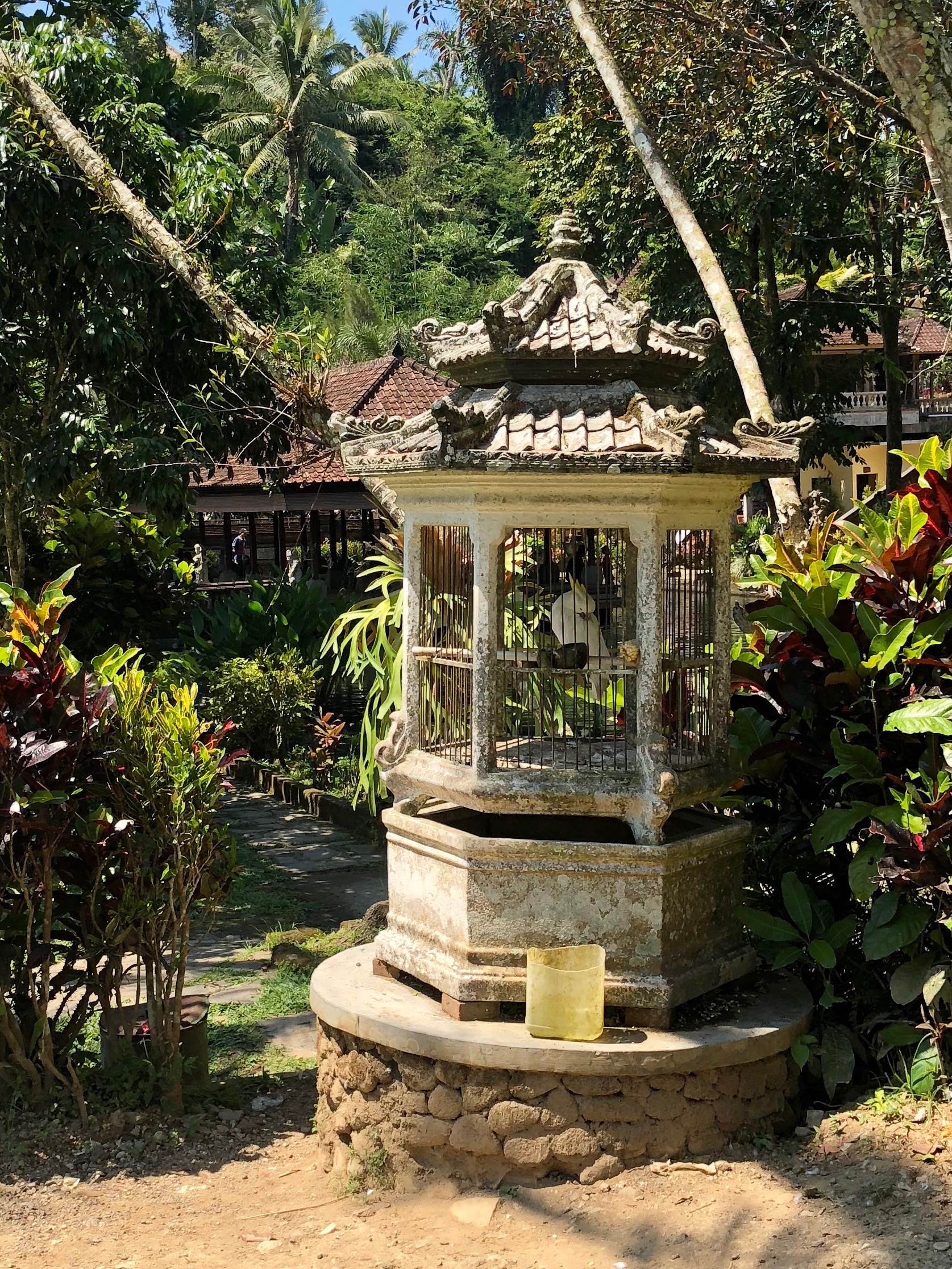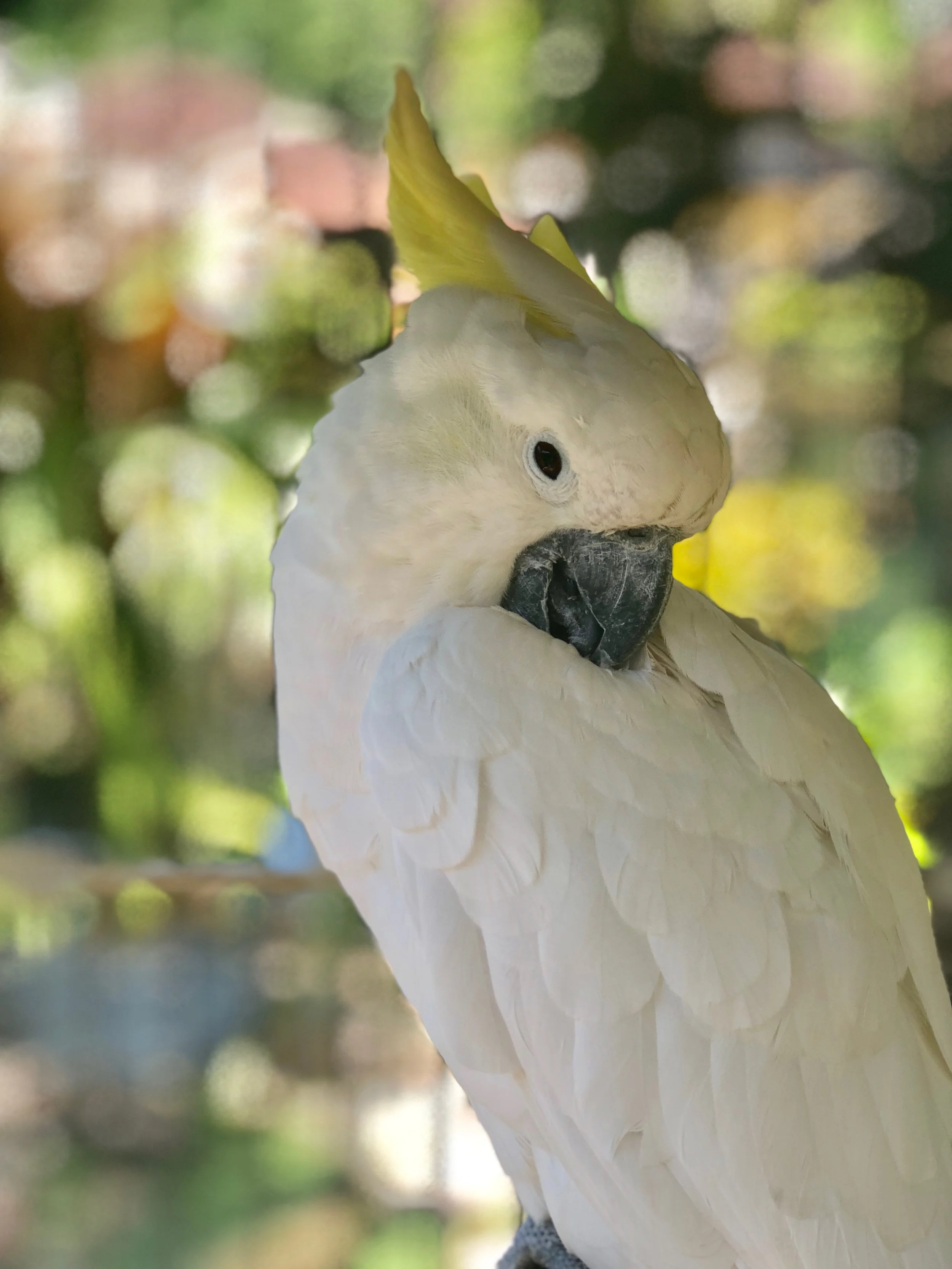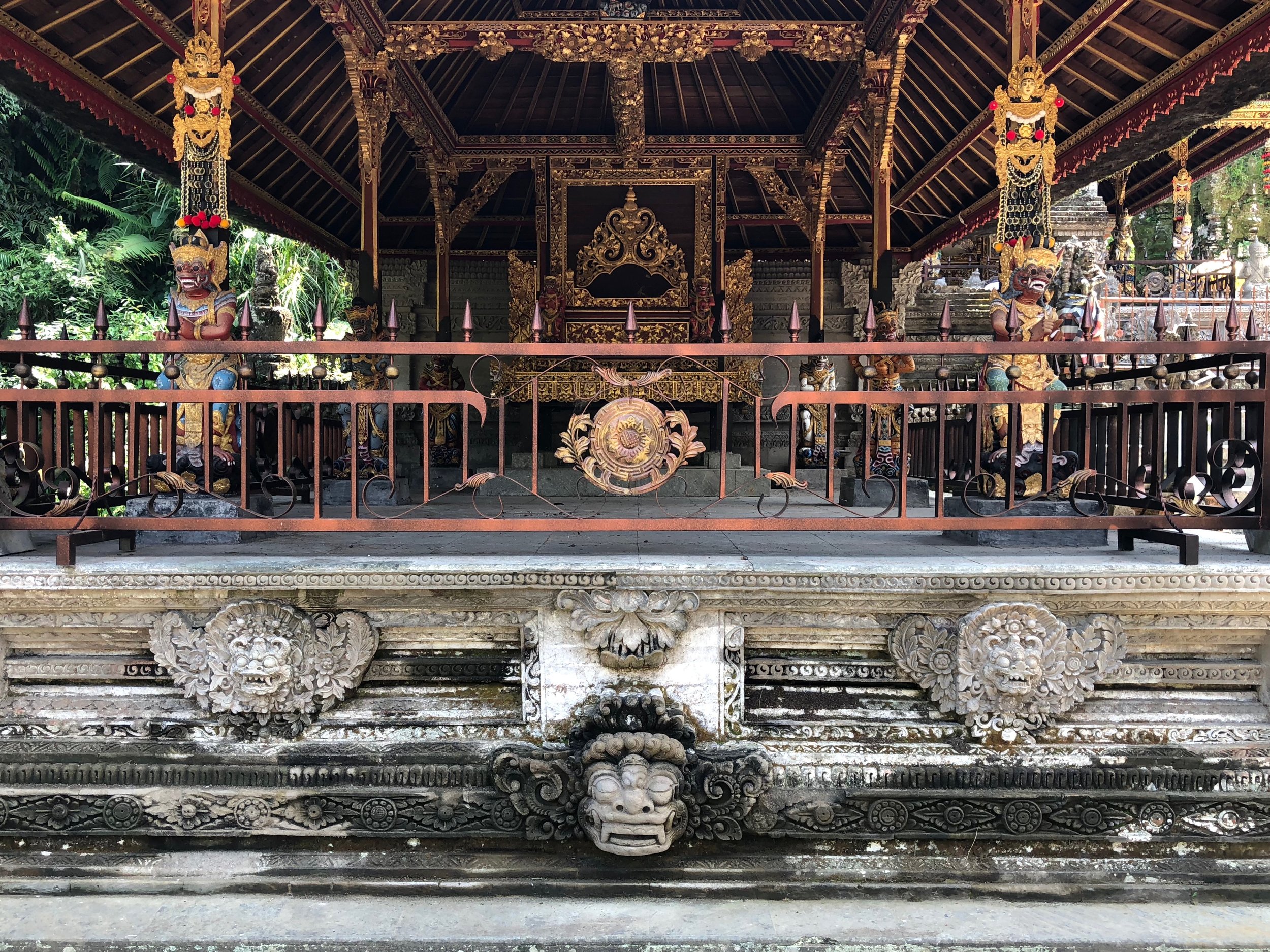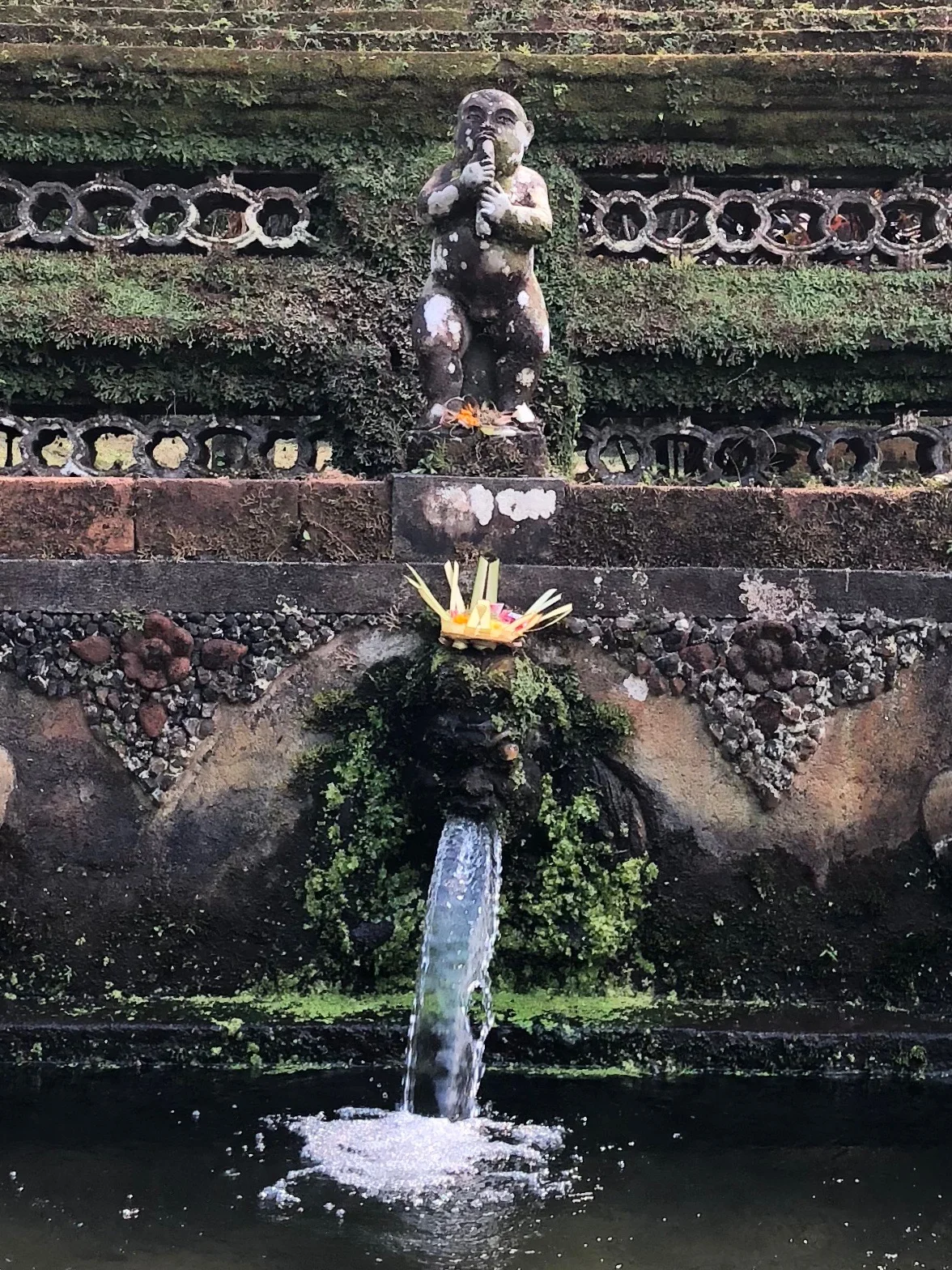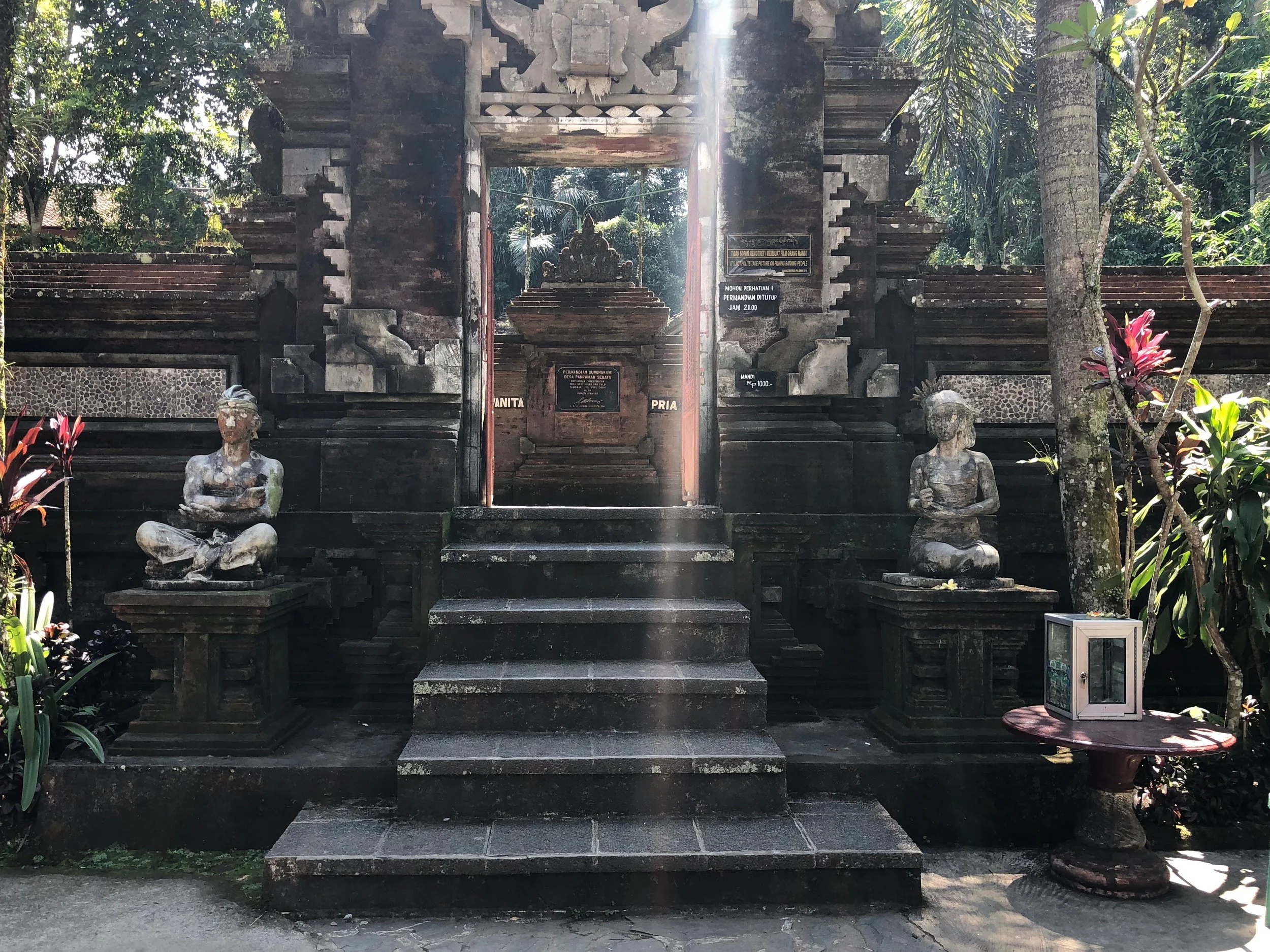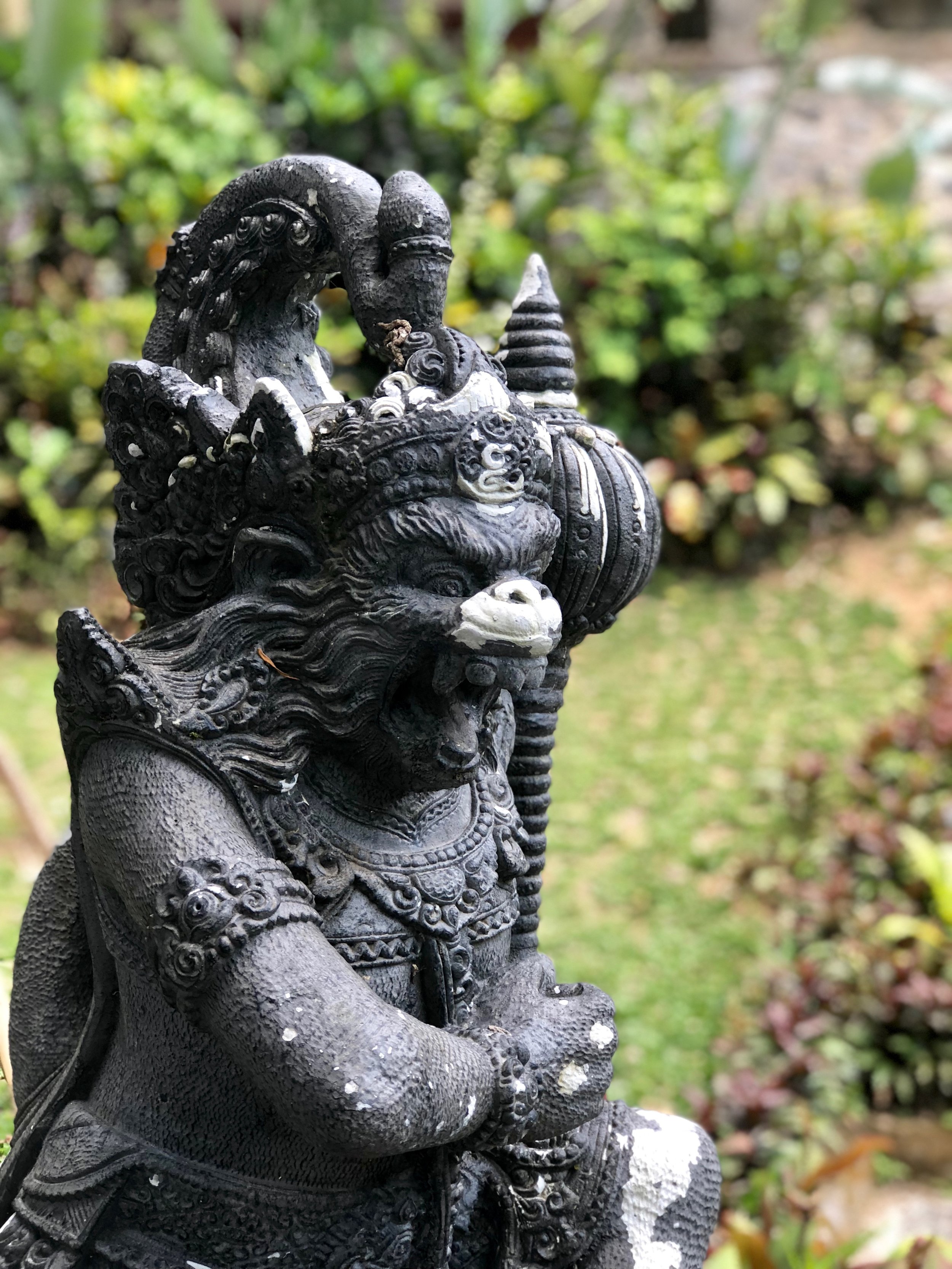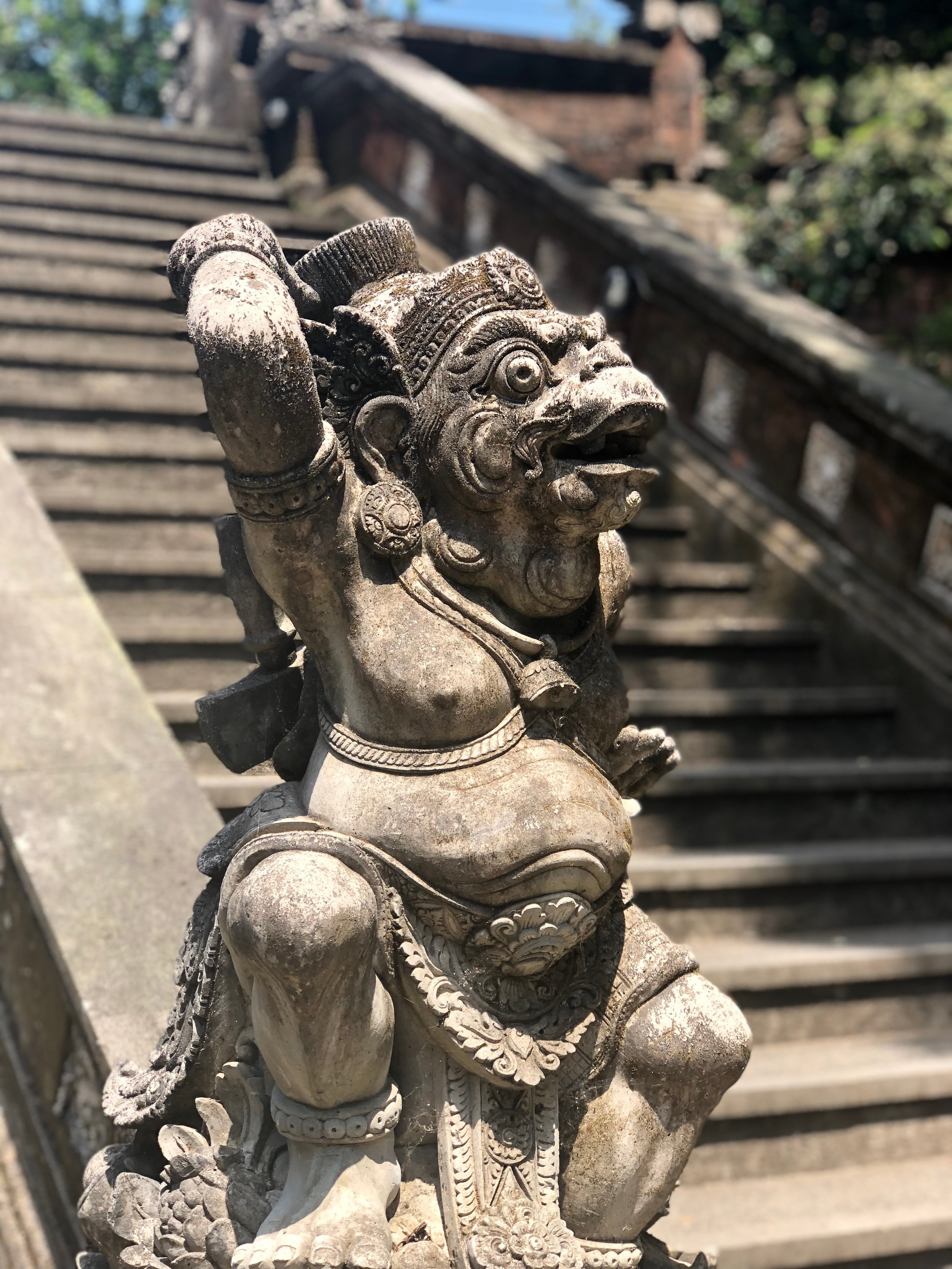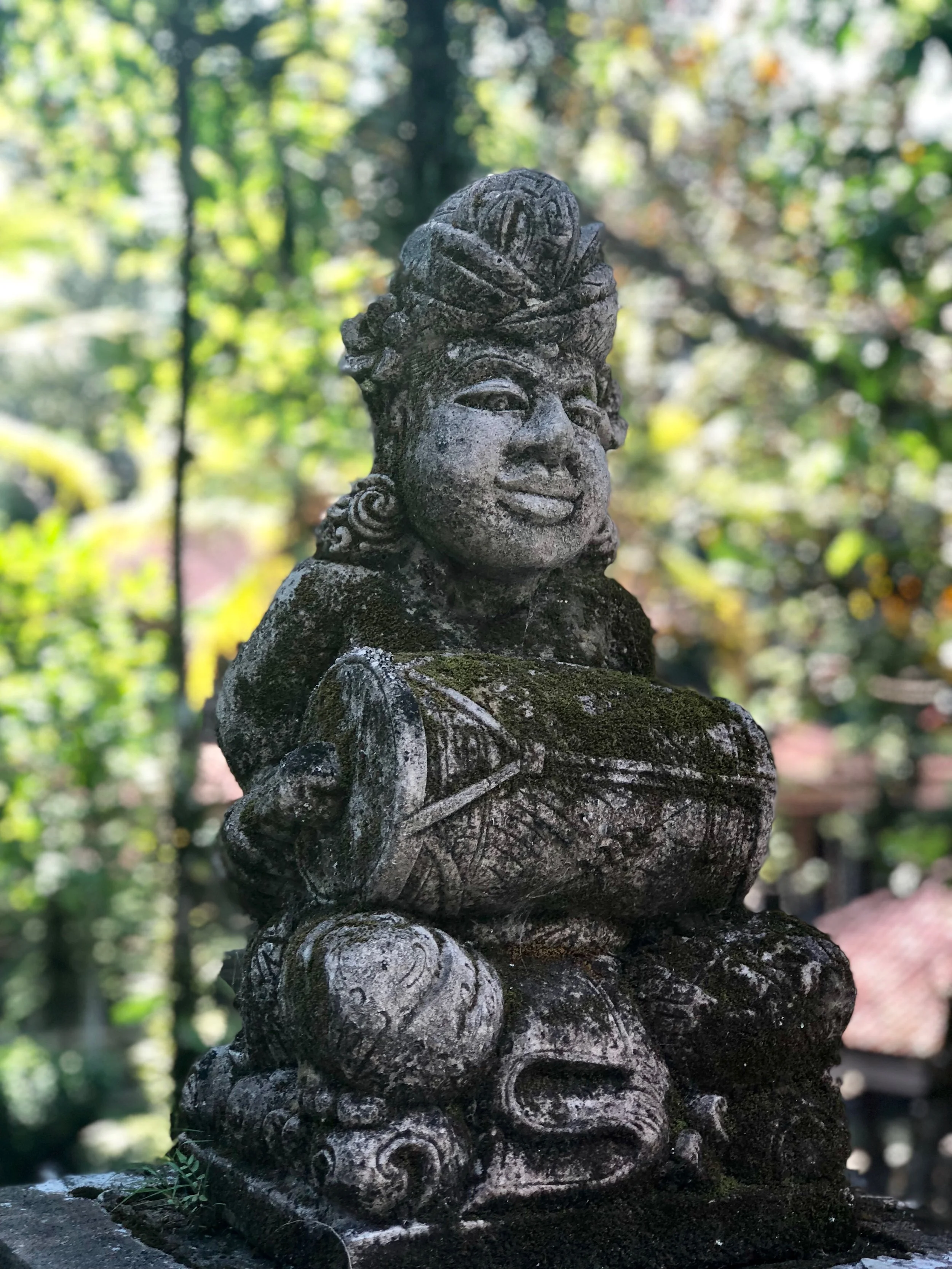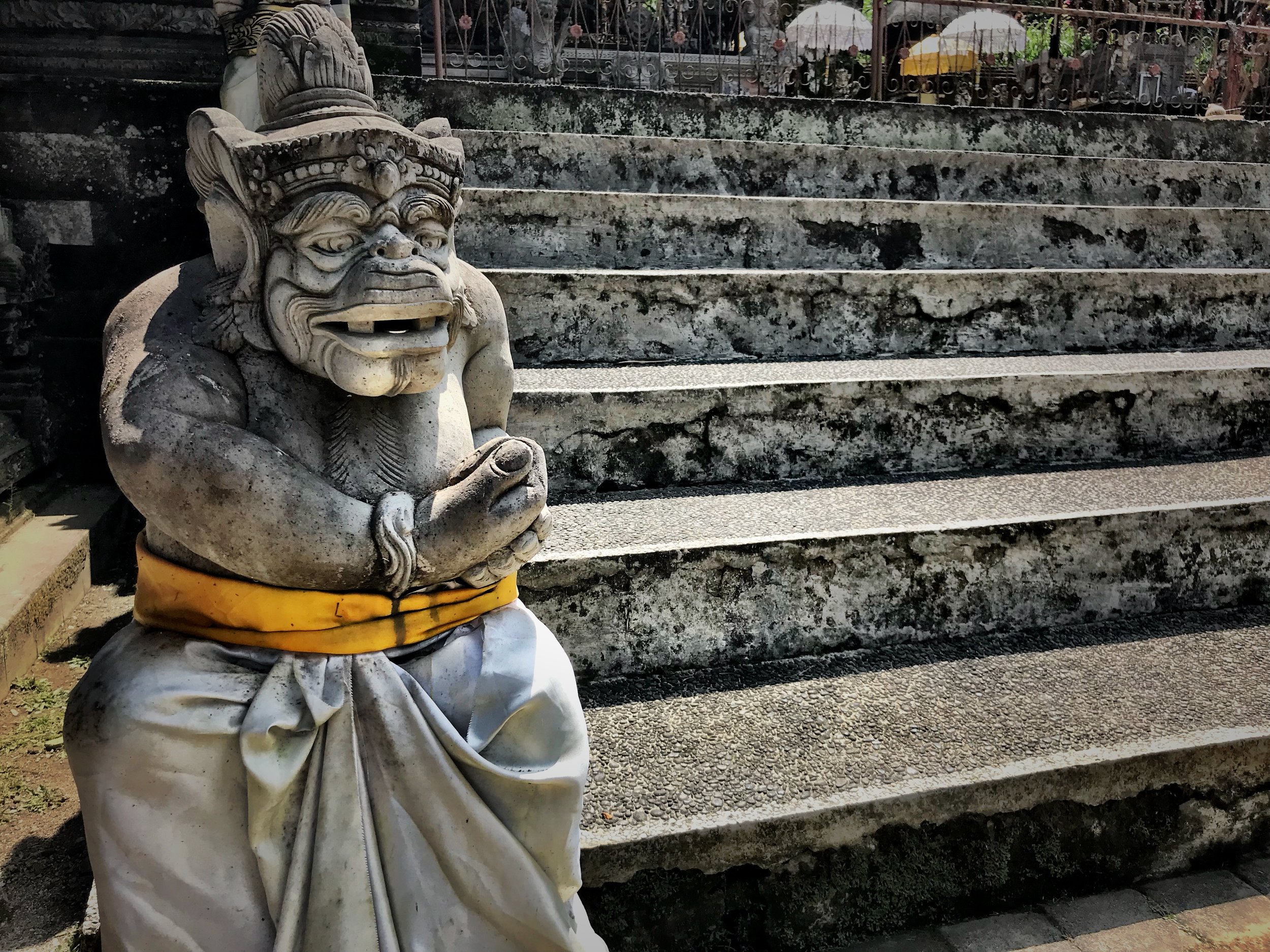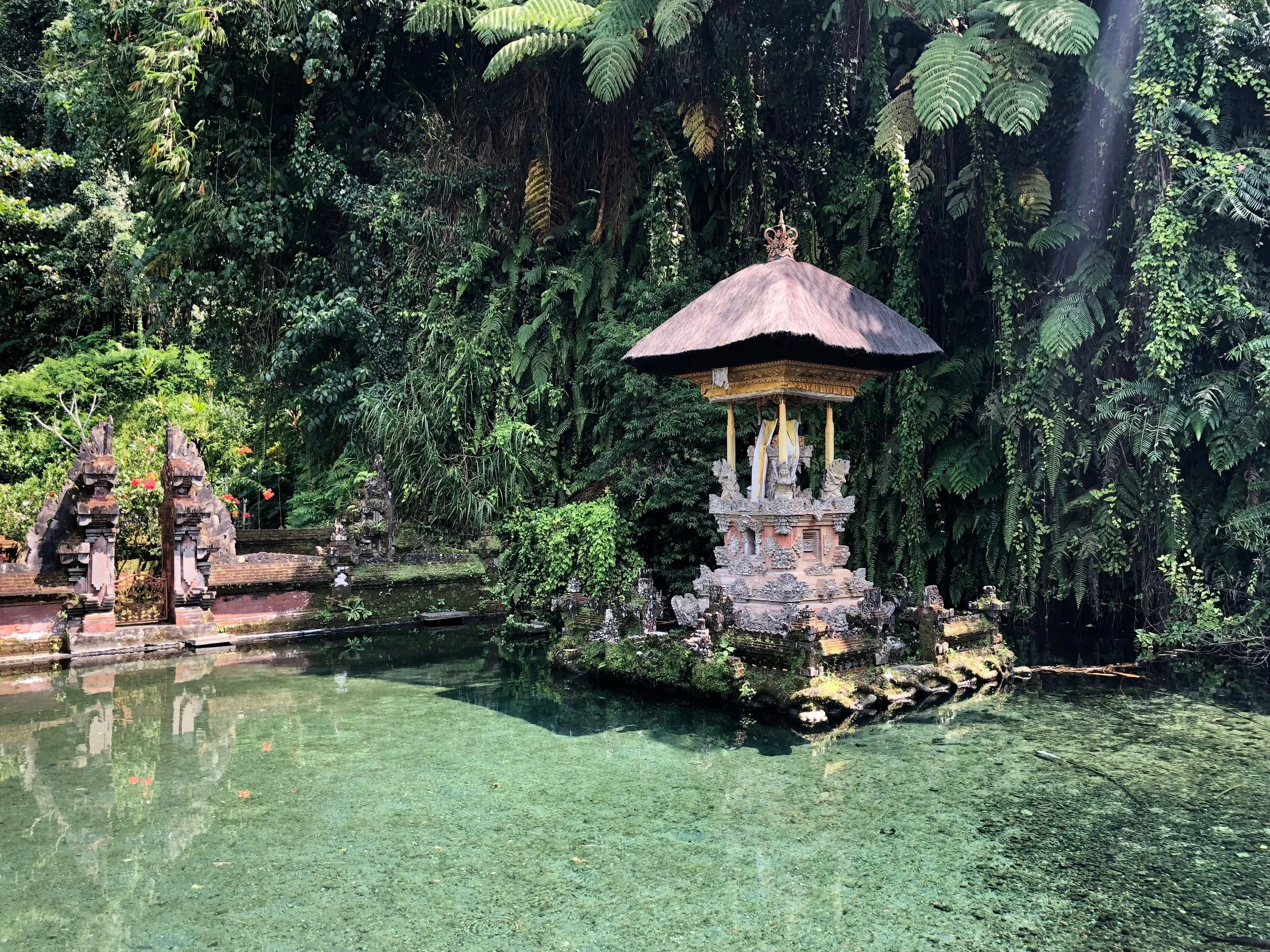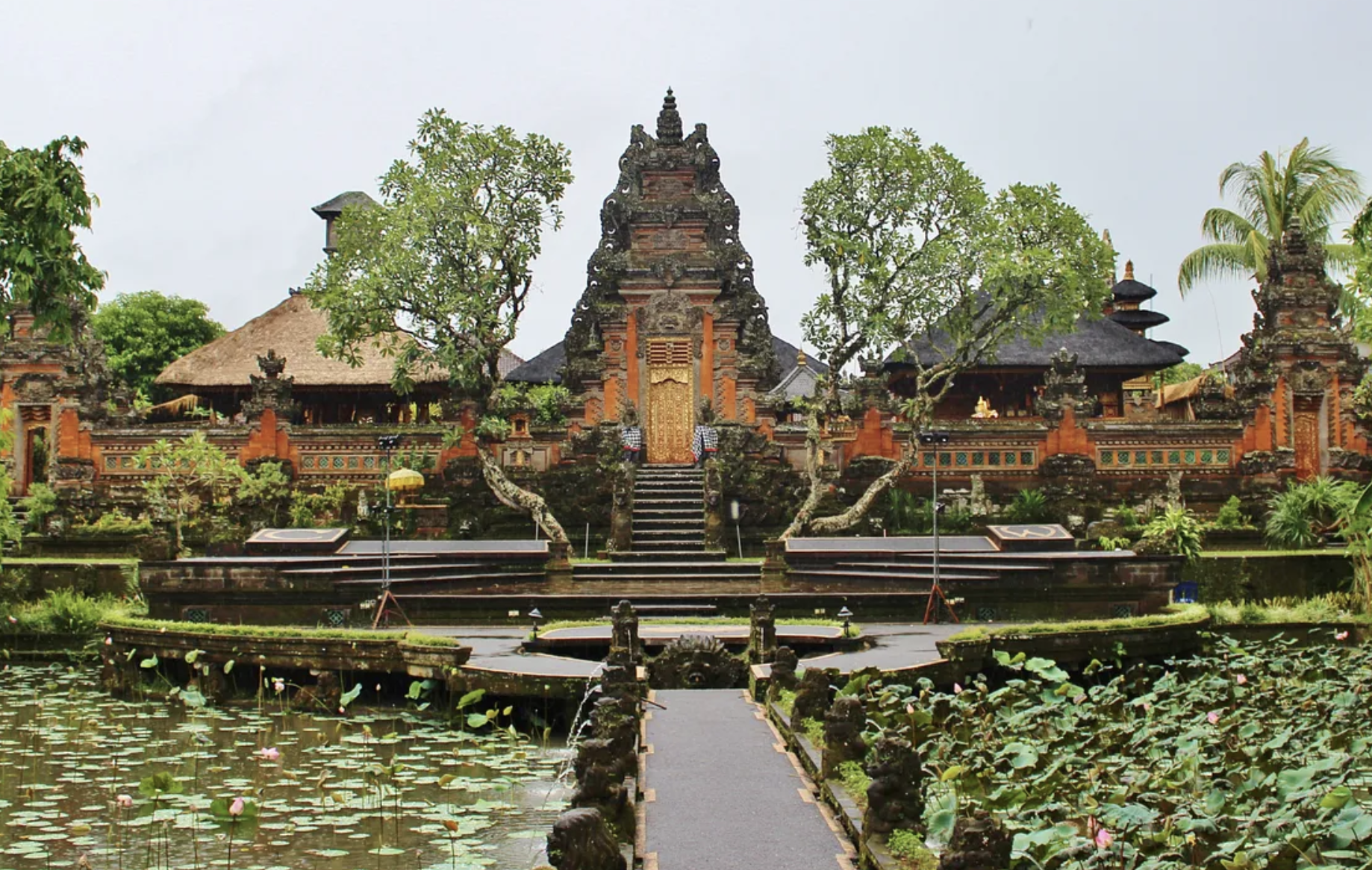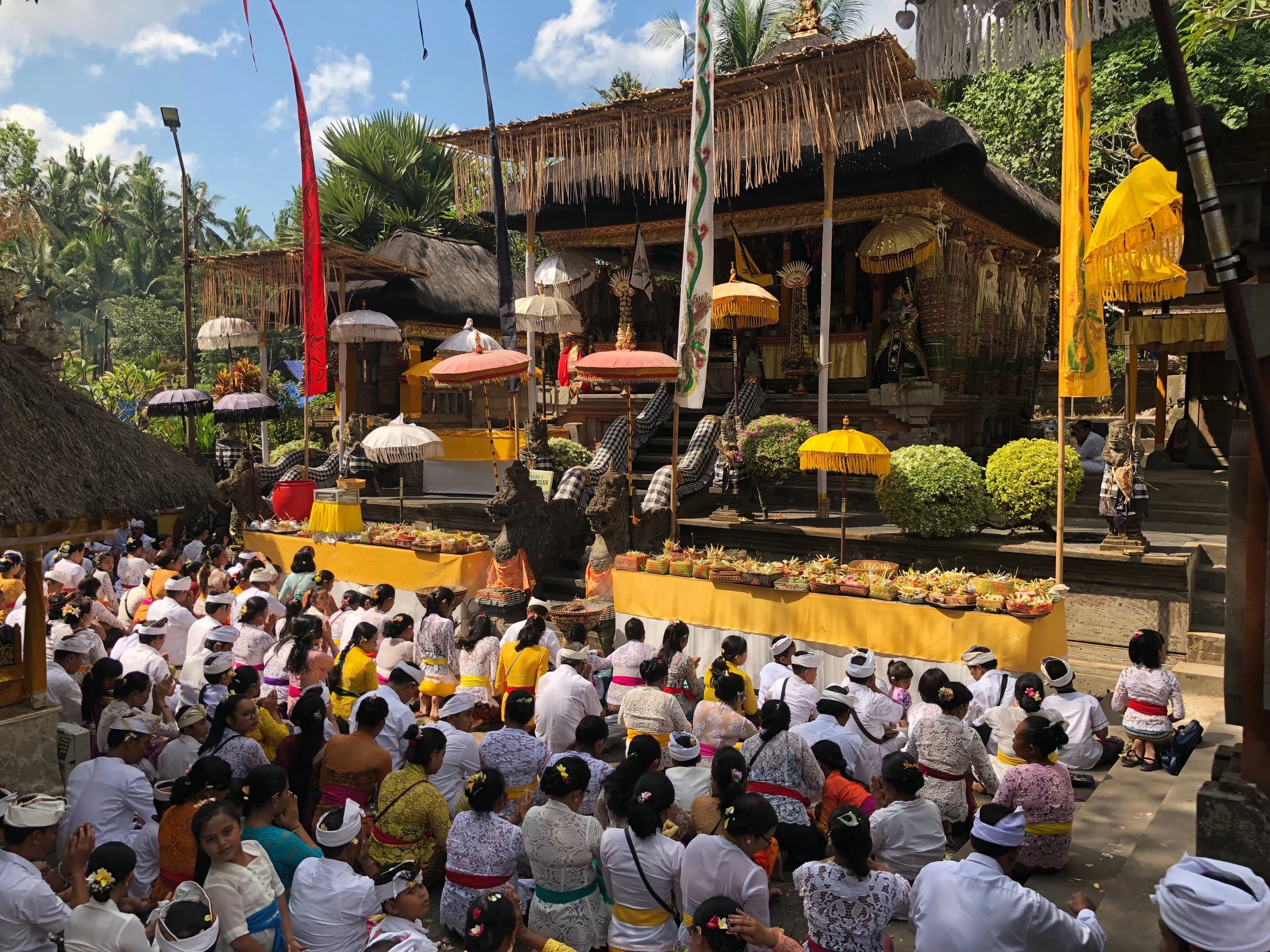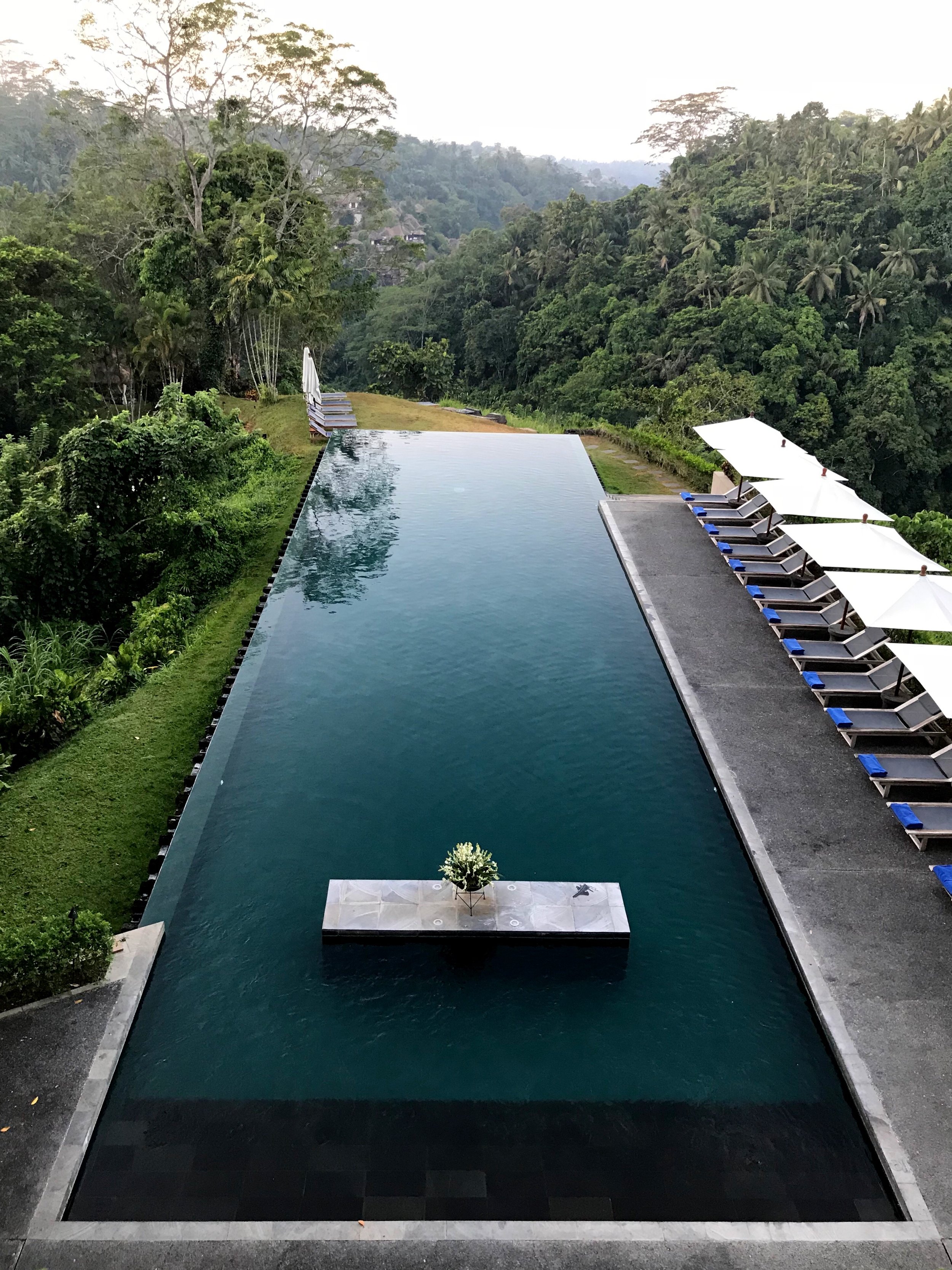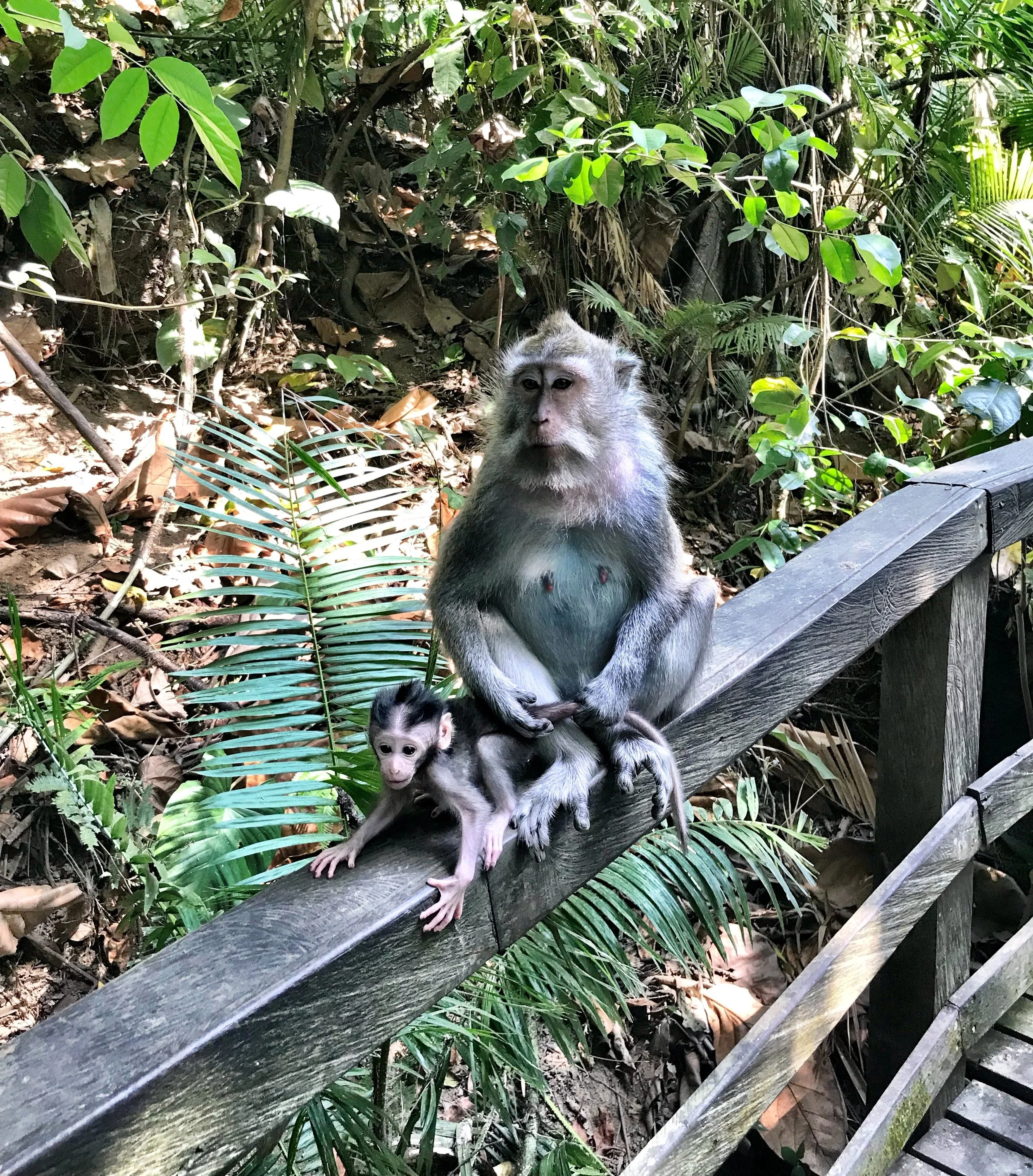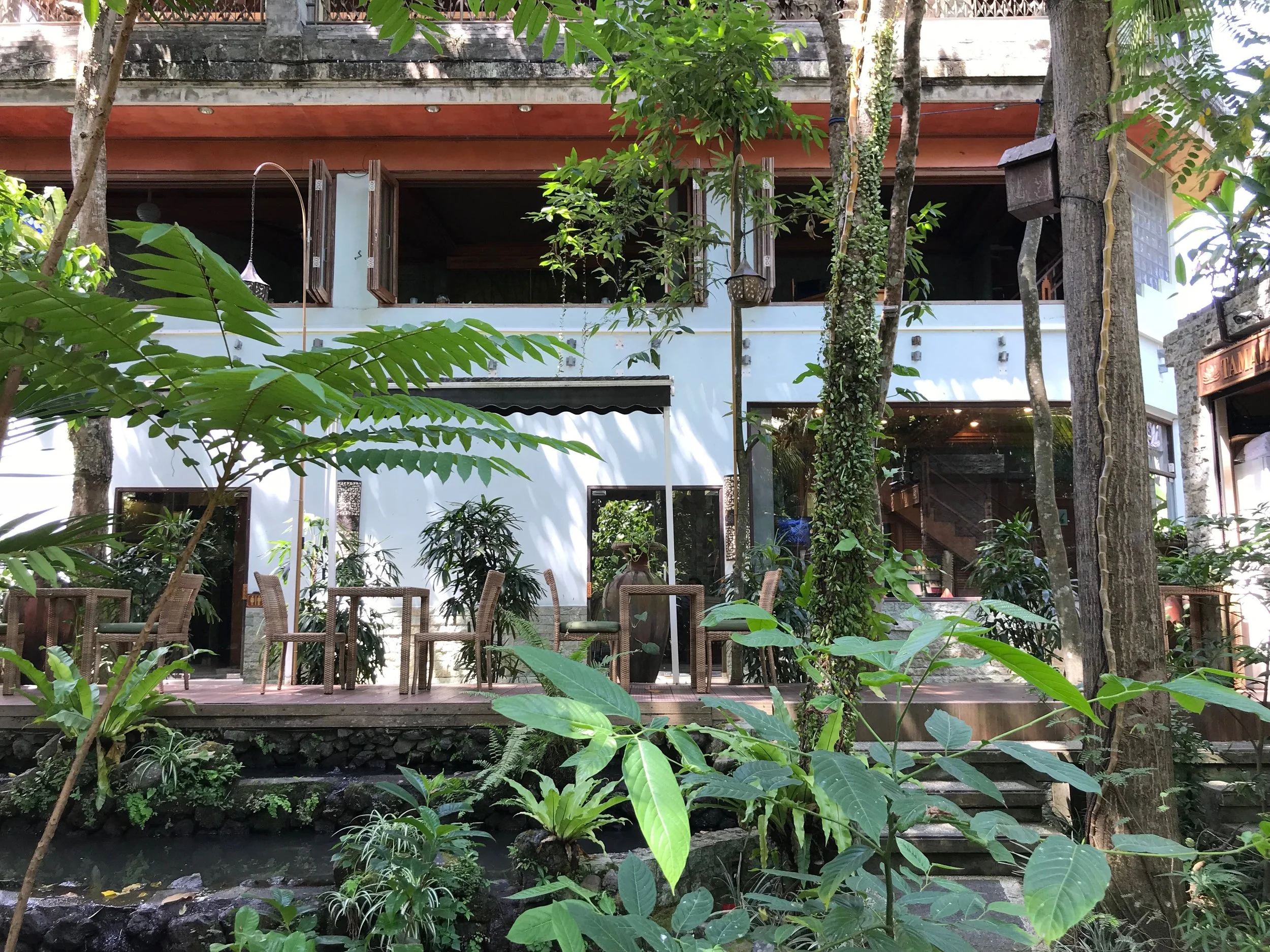Architect Alberto Kalach’s amazing library in Mexico City contains bookshelves that hang from the ceiling, and a whale bone sculpture by artist Gabriel Orozco.
Off-the-beaten-path CDMX: la Biblioteca Vasconcelos
After a visit to the labyrinthine and often-claustrophobic Mercado de Sonora Witch’s Market, Duke and I took a short Uber ride to the Biblioteca Vasconcelos in the Colonia Buenavista neighborhood. Dedicated to José Vasconcelos, a Mexican writer, philosopher and politician, the library’s interior is unlike anything you’ve ever seen.
“Story after story of metal and glass bookcases defy logic, floating above like a science fiction version of Hogwarts. ”
Wally and Duke in ecstasy: Who needs to go to church when you’ve got a library like this?
The interior is like stepping into an M.C. Escher drawing
Don’t Judge a Book by Its Cover
From the building’s exterior — a fortress of concrete and steel grillwork — you’d never imagine the airy futuristic interior within. However, getting into the hallowed repository of knowledge was a bit tricky. Initially, Duke and I saw the gaping maw of the parking garage and wondered if we had to enter there. We skirted around to the right of the building in an attempt to gain access. When we realized there wasn’t an entrance there either, we paused to ask a local who was walking his dog. He gestured to the left side of the library. We thanked him and made our way over to a courtyard with a couple of smaller buildings and the main entrance.
The exterior of the library isn’t too impressive — but just wait till you step inside!
When we first stepped foot inside the 400,000-square-foot Biblioteca Vasconcelos, designed by Mexican architect Alberto Kalach, we could barely contain our giddiness. We looked around in wonder, our necks craning in every direction.
The floating stacks are a novel way, pun intended, to display books
Story after story of metal and glass bookcases defy logic, while simultaneously offering a sense of complete order, floating above like a science fiction version of Hogwarts. Thin steel beams seem barely able to support the monumental stacks filled with books. Hazy silhouettes of patrons can be glimpsed through translucent sea-green catwalks.
Greenish-blue semitranslucent walkways connect the stacks
Seating areas seen from across the expanse
We felt as though we had entered a sacred space, one that evoked the same reverence of the organic space-age architecture of La Sagrada Família church in Barcelona, Spain.
The exhibit Vientos de Japón (Winds of Japan) by master calligrapher Ryuho Hamano was on display when we visited
Duke daring to lean against the thin wire railing
Wally chose a more secure spot for his portrait
Sunlight plays a major role at the Biblioteca Vasconcelos, filling the interior with natural light. Ingenious louvered glass panels soften the sun's rays and keep the library from getting too hot.
The far ends of the library offer expansive views of the city
As we passed by the first floor patios, we saw teens practicing dance routines, mimicking the choreography seen in some pop star’s latest music video. Beyond them, we could see the sprawling botanic garden that surrounds the structure. During our stay in Mexico City, we saw chilangos of all ages, from teens to seniors, dancing in public spaces.
A botanic park surrounds the structure
Whenever I got too close to the cable rails on the upper floors of the library, my head would spin with vertigo. It became clear that this was a library for the brave. God forbid I needed a book located at the end of one of these stacks.
Looking down at Gabriel Orozco’s hanging sculpture, Mobile Matrix
A Whale of a Time: Orozco’s Mobile Matrix
Hovering above the central atrium hall is the striking Mátrix Móvil (Mobile Matrix in English), an intricately inscribed gray whale skeleton fitted onto a metal armature. Conceptual artist Gabriel Orozco and his team used over 6,000 mechanical pencils to etch concentric circles onto the bones, which stretch over 38 feet long. I learned that the whale had died after beaching itself on the Baja Peninsula during a migratory trip along the Mexican Pacific coast. The art piece adds a museum-like quality to the space.
A peek at the whale bone sculpture
There’s a lot to see in Mexico City, but the Biblioteca Vasconcelos is worth adding to your itinerary. It’s quite close to CDMX’s historic Centro. And when you’re done exploring this modern marvel (and have taken copious amounts of photos), head past the Buenavista rail and bus station and cross the overpass that spans the bustling Avenida Insurgentes. A 10-minute walk straight down Calle Salvador Díaz Mirón will bring you to the colorful Kiosco Morisco in the nearby Santa María la Ribera neighborhood. –Wally
A forest of paper cylinders with Japanese kana characters on display at the entrance
Duke poses in front of the art exhibit
There are elevators for those who don’t want to walk up all those stairs
One of the rooms along the sides of the library was filled with women knitting a cool cactus
Peek-a-boo! Duke looks through one of the stacks near the edge of the railing
Biblioteca Vasconcelos
Mosqueta
Eje 1 Norte S/N
Buenavista
06350 Ciudad de México
CDMX, México

